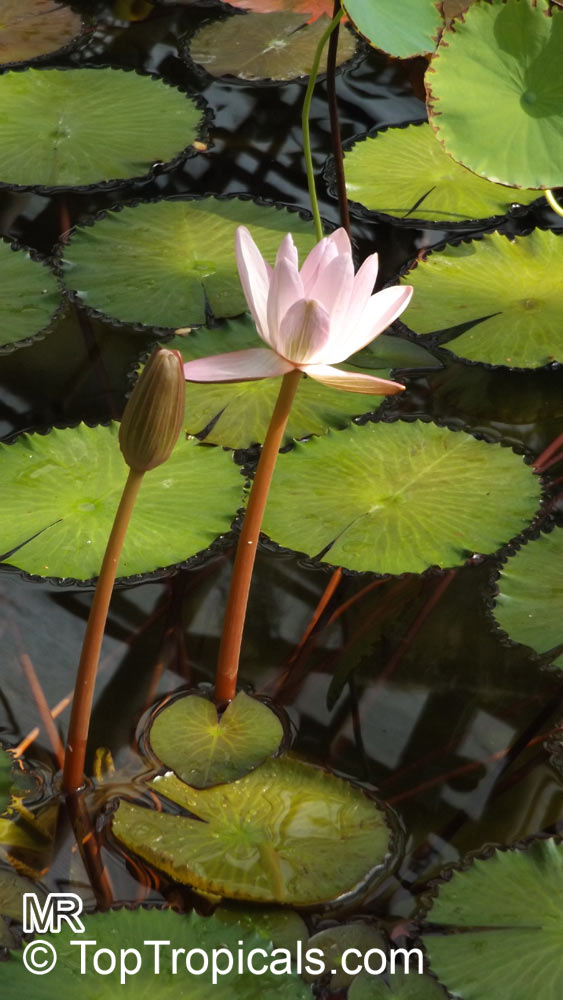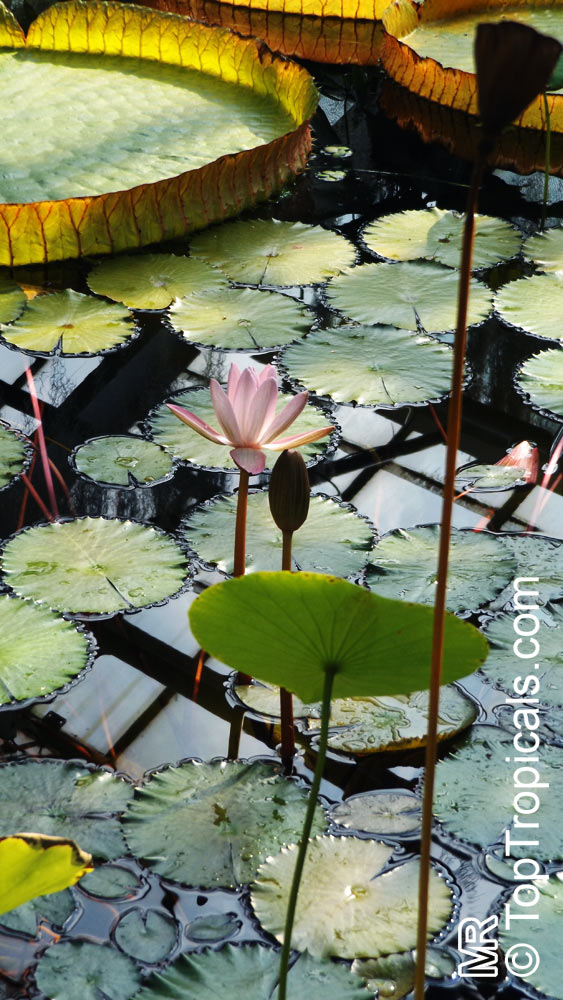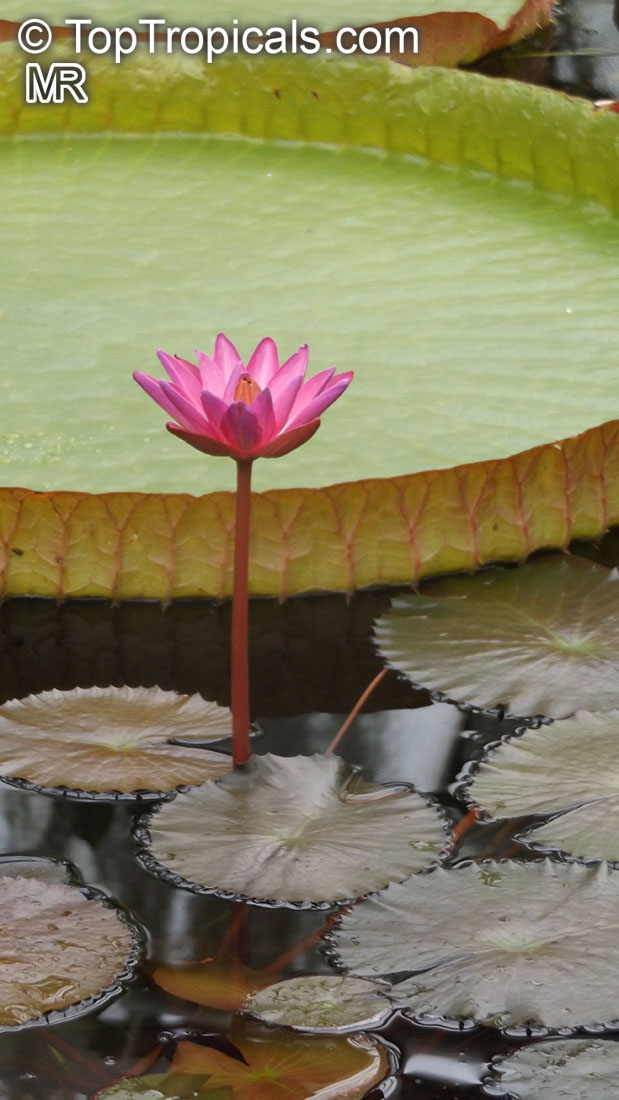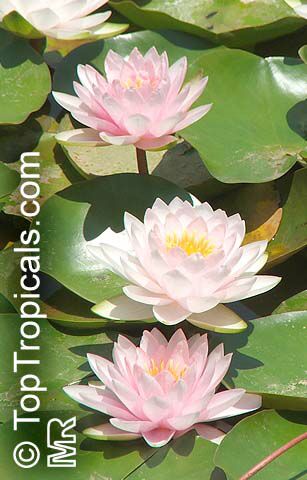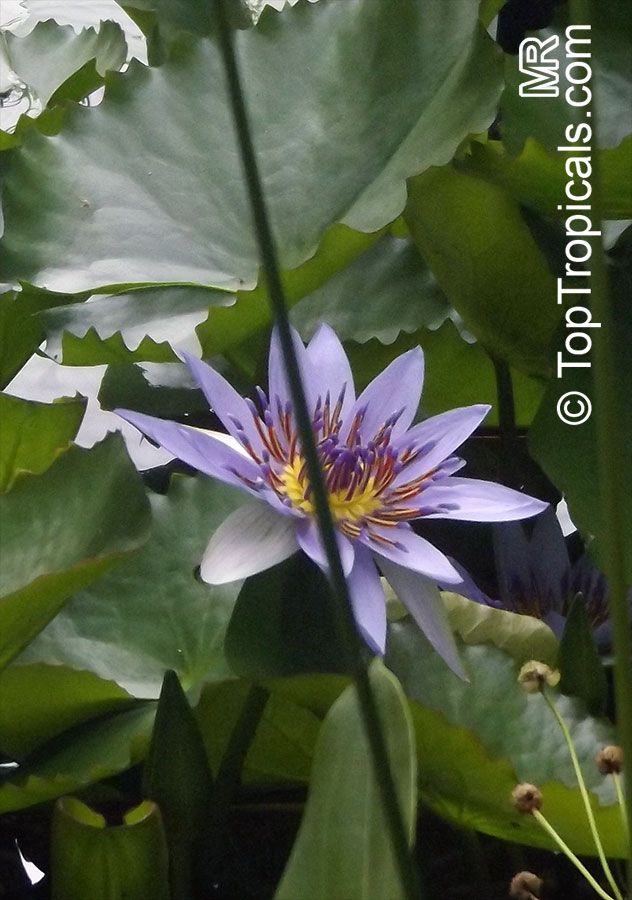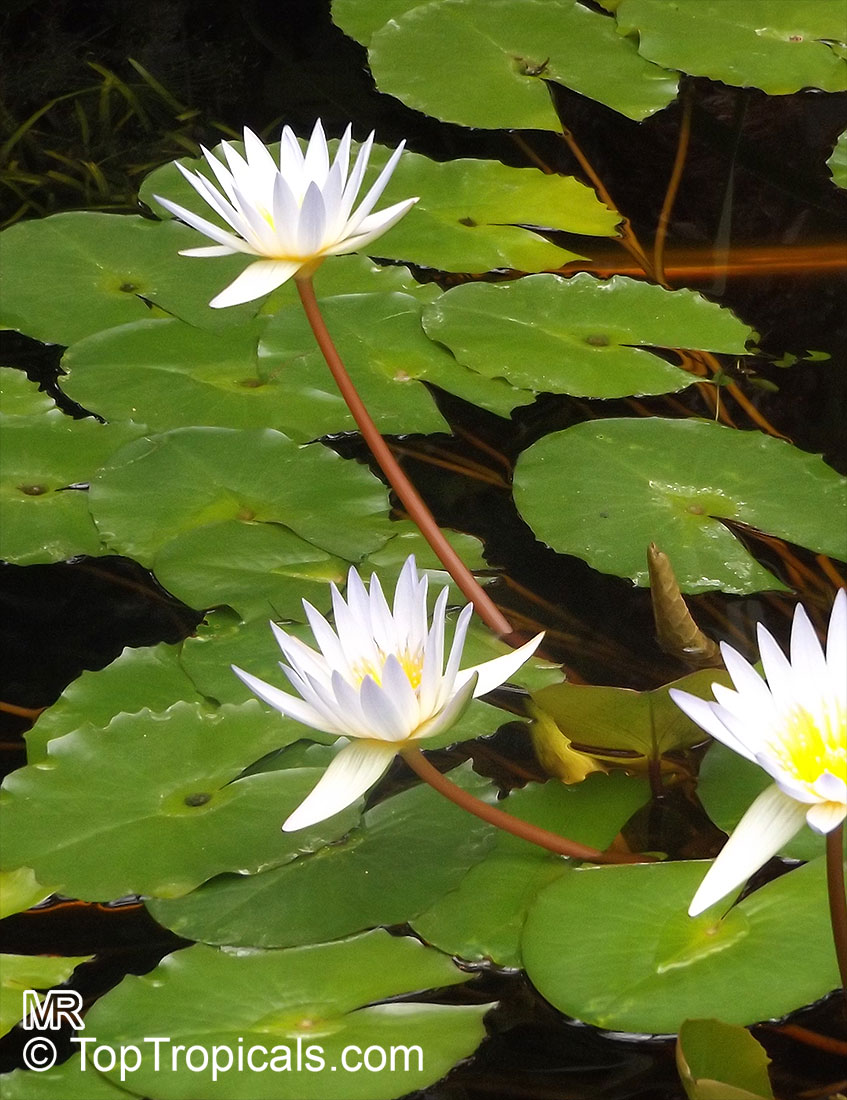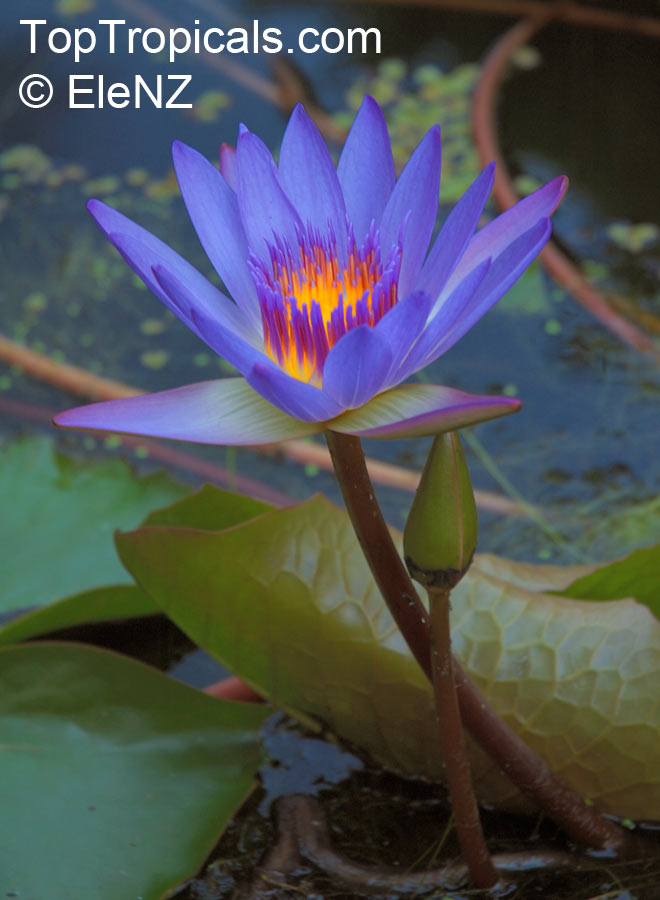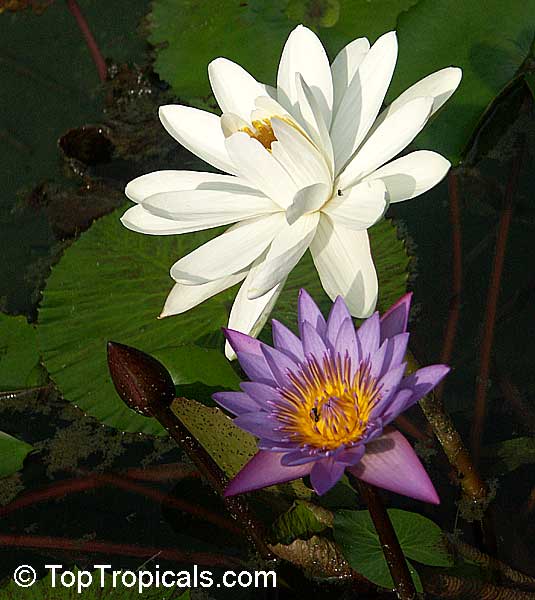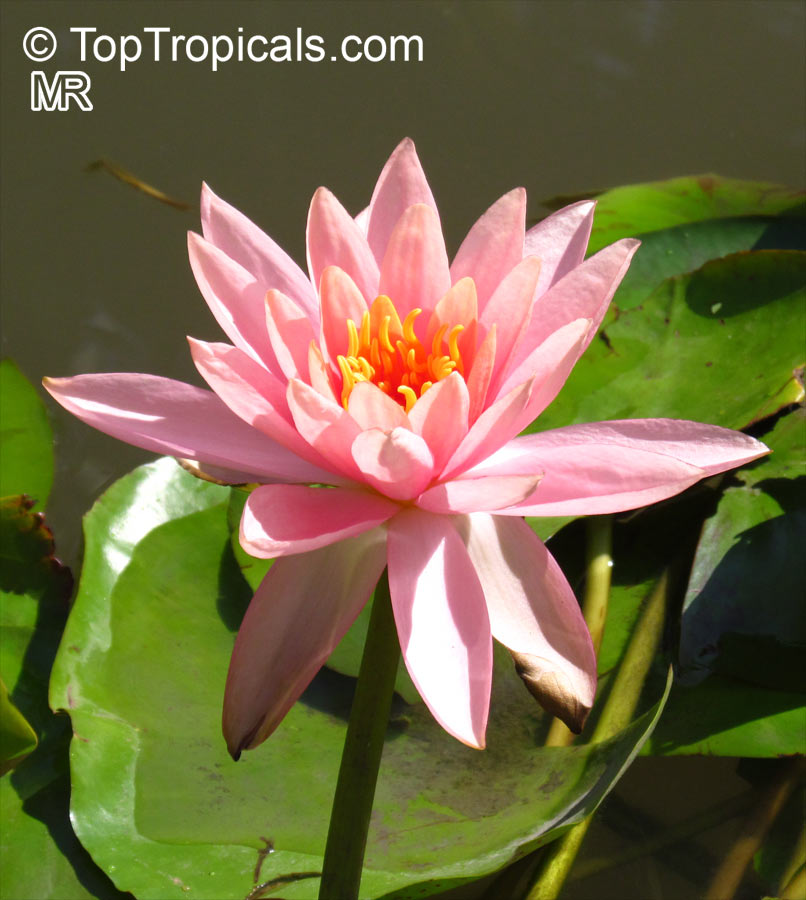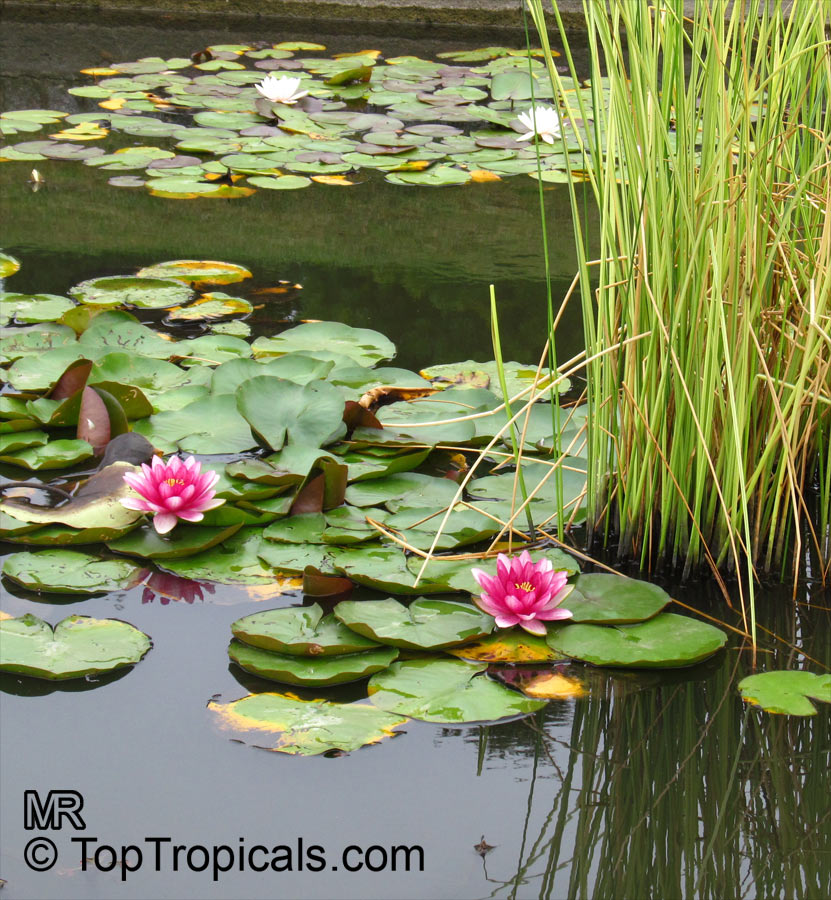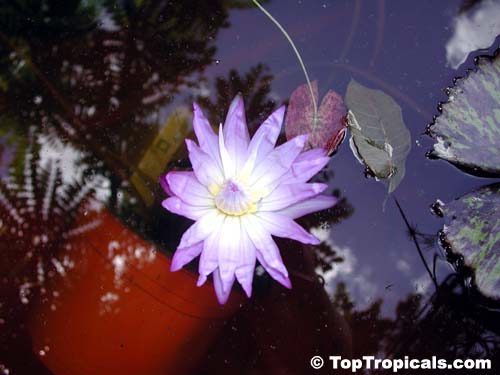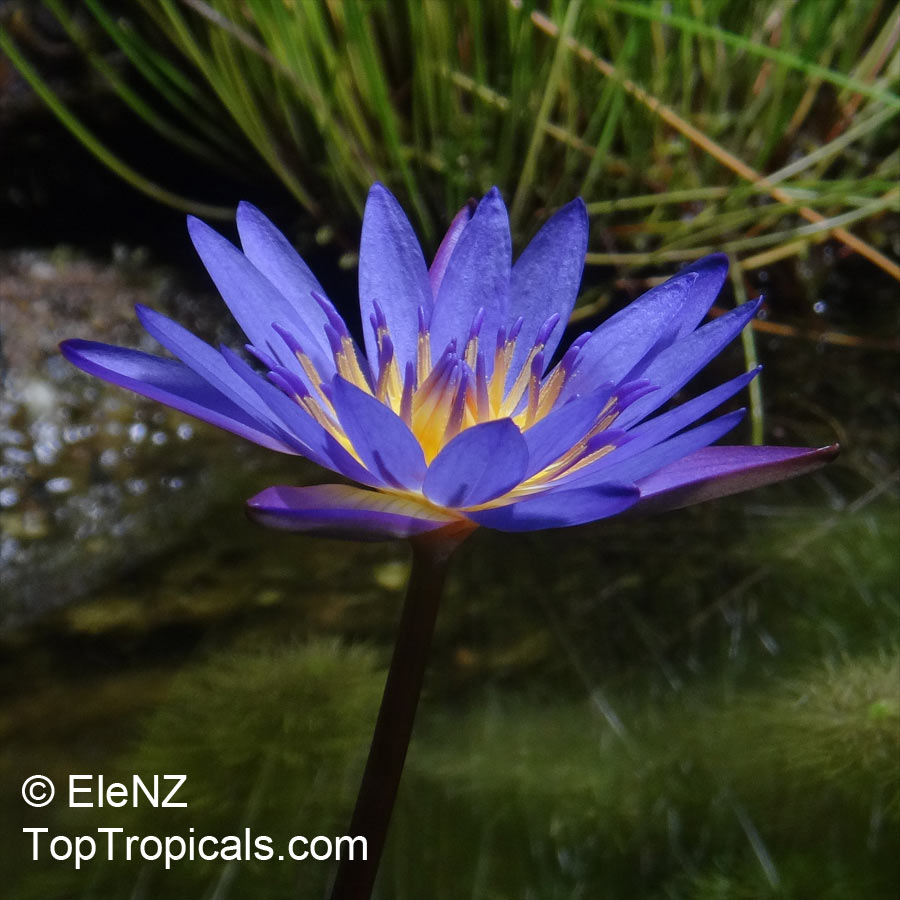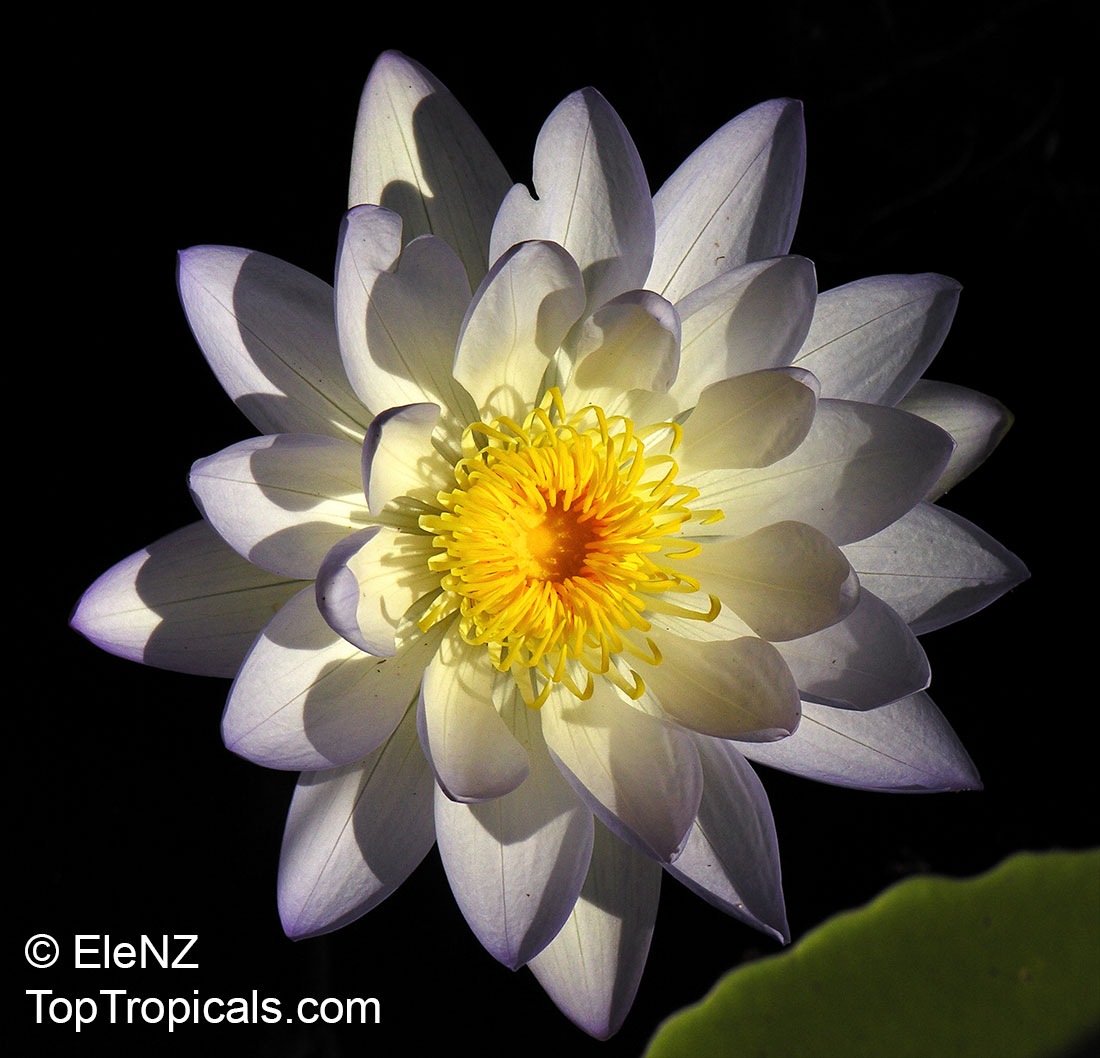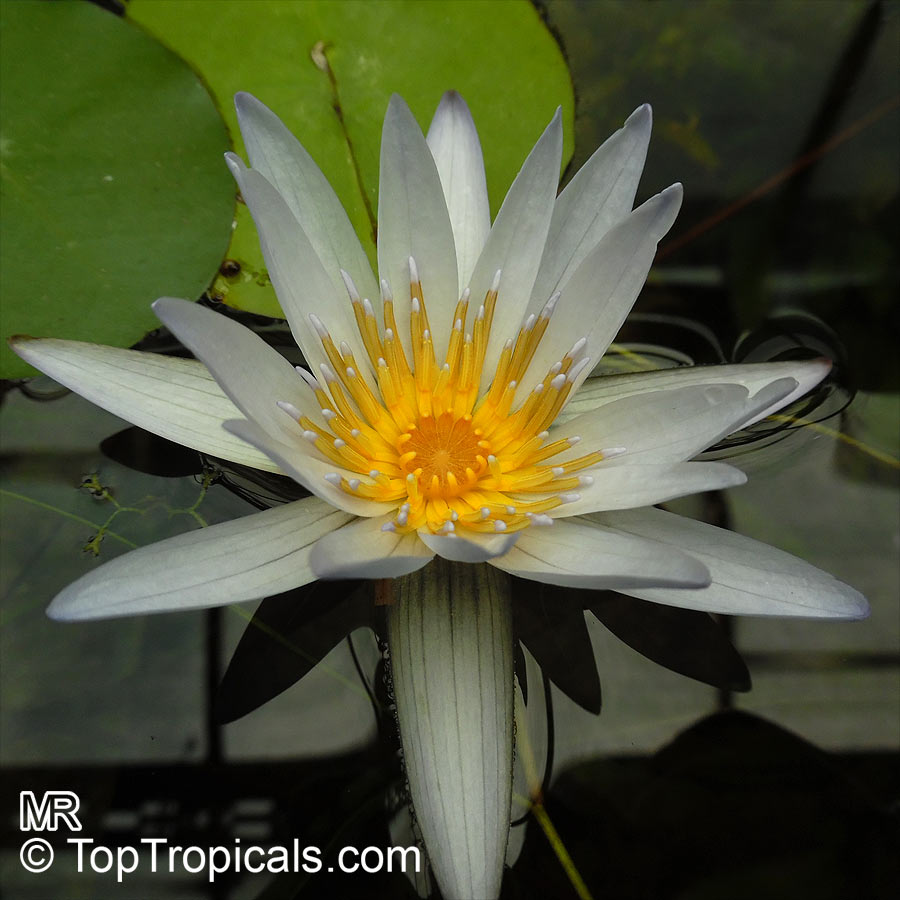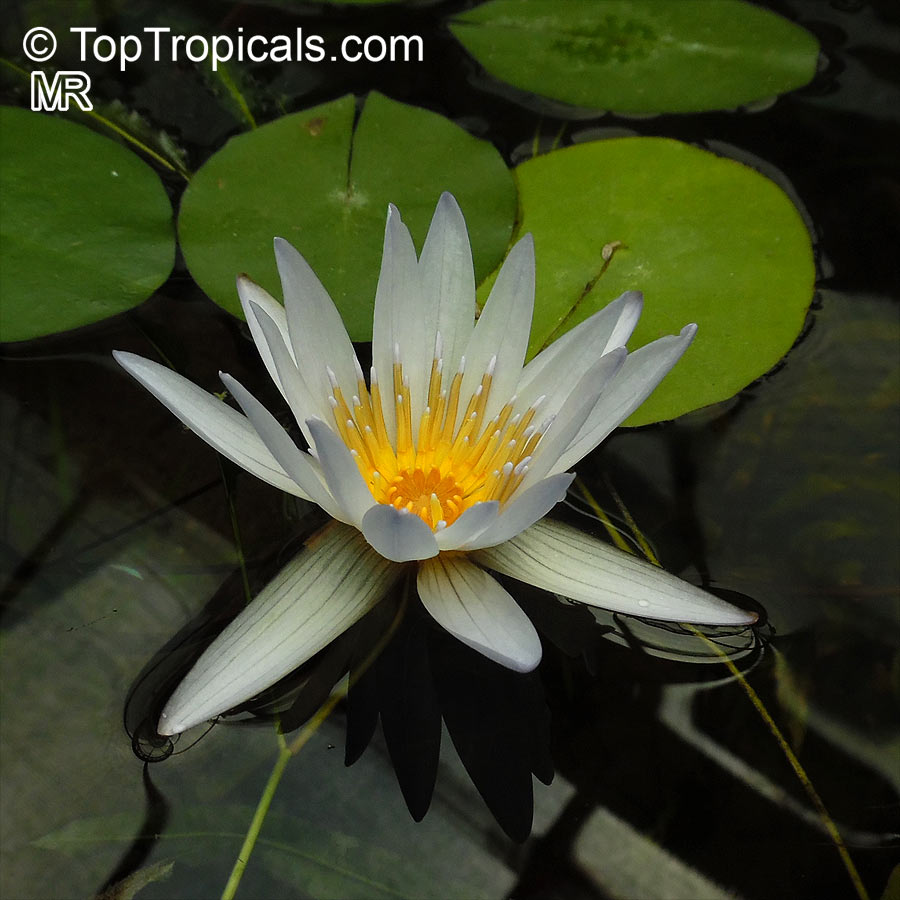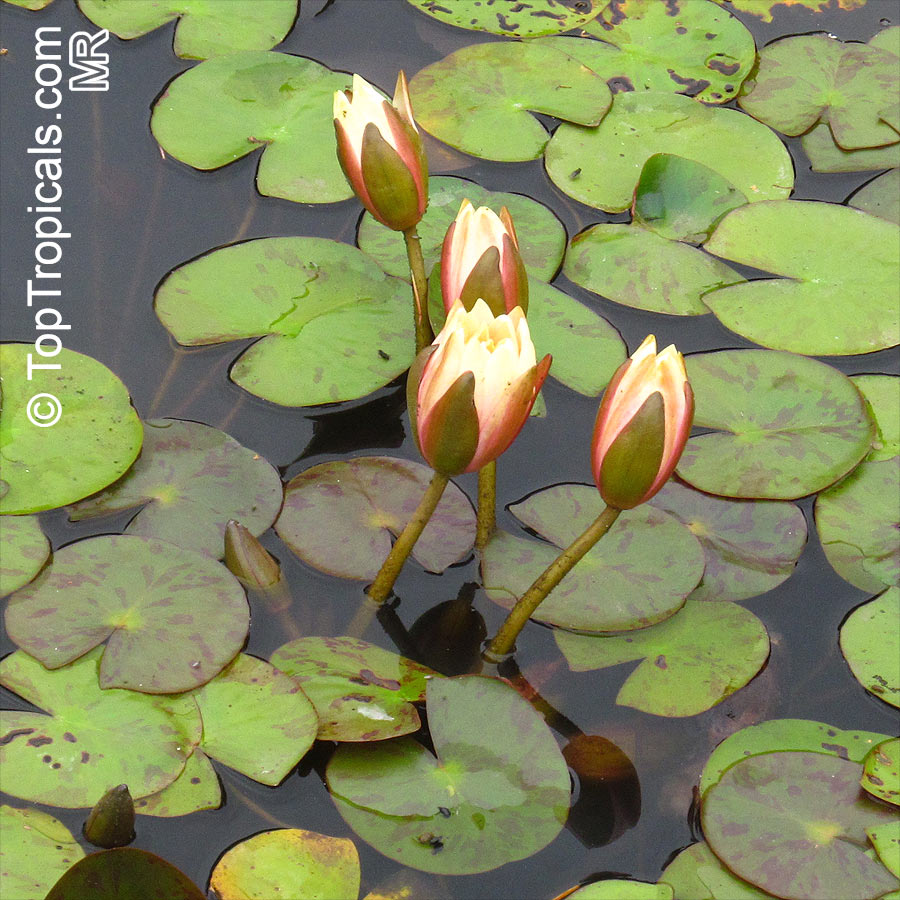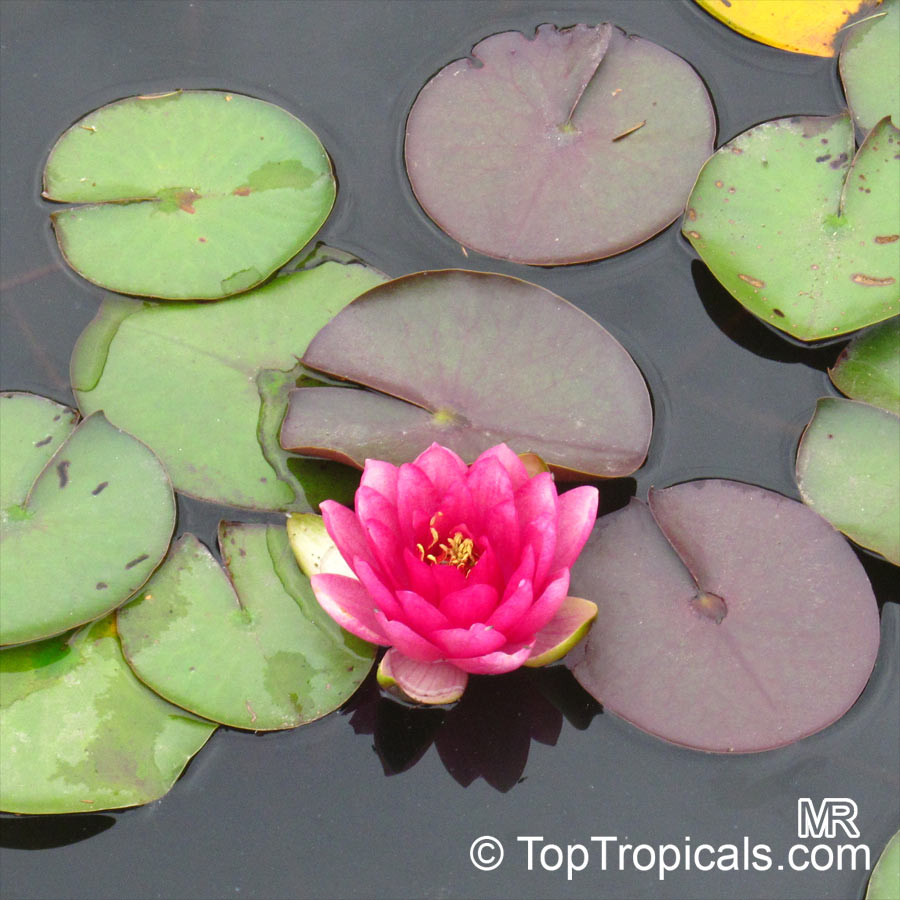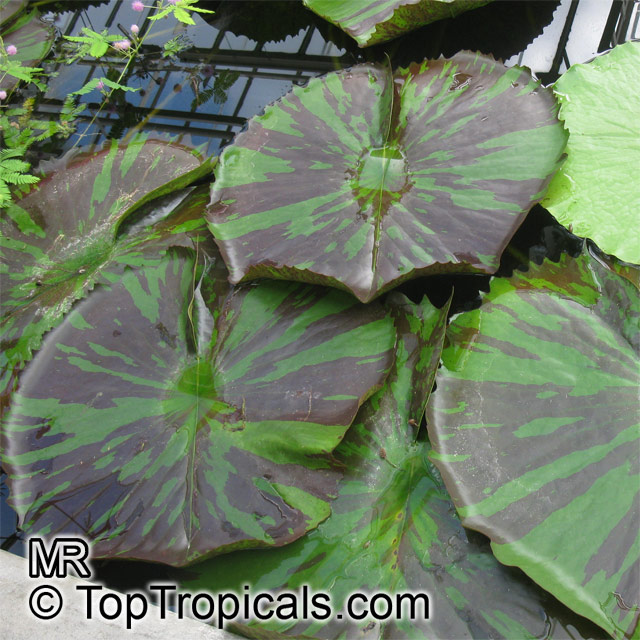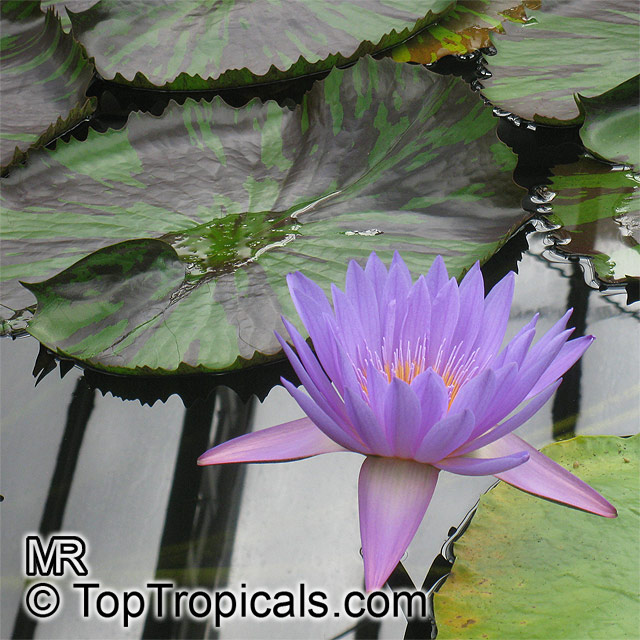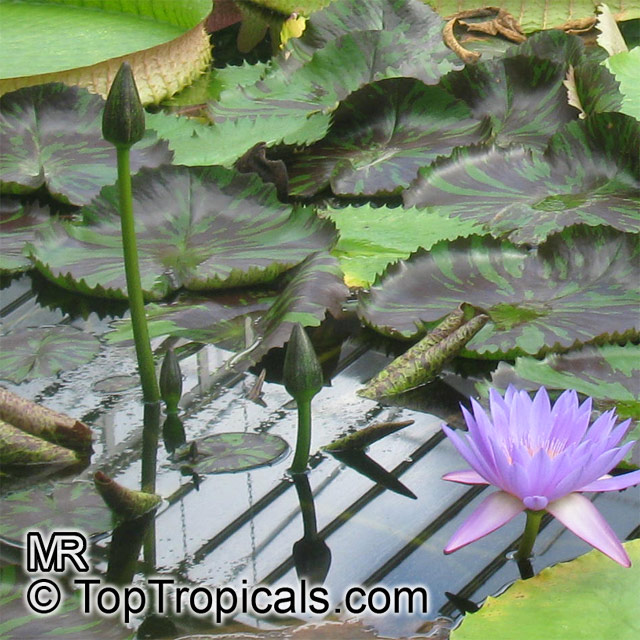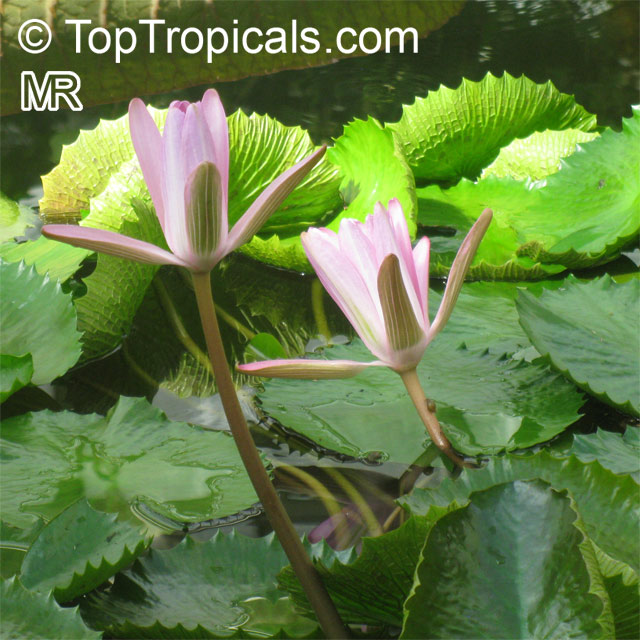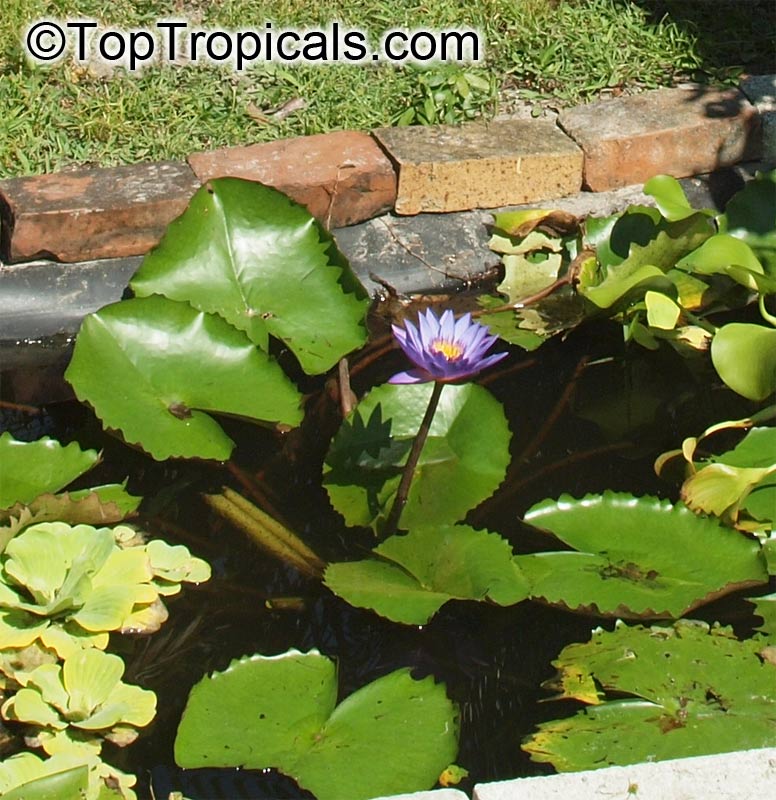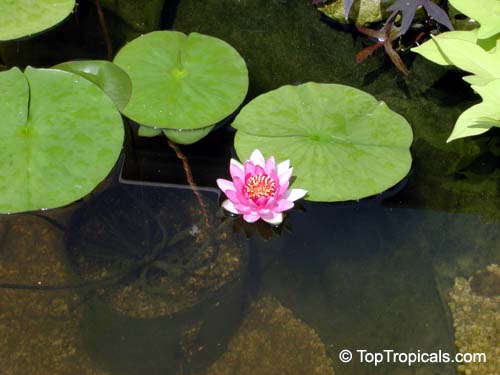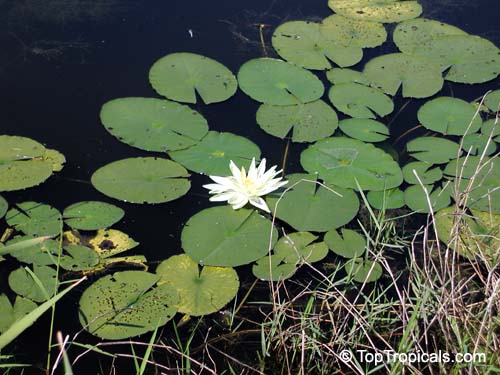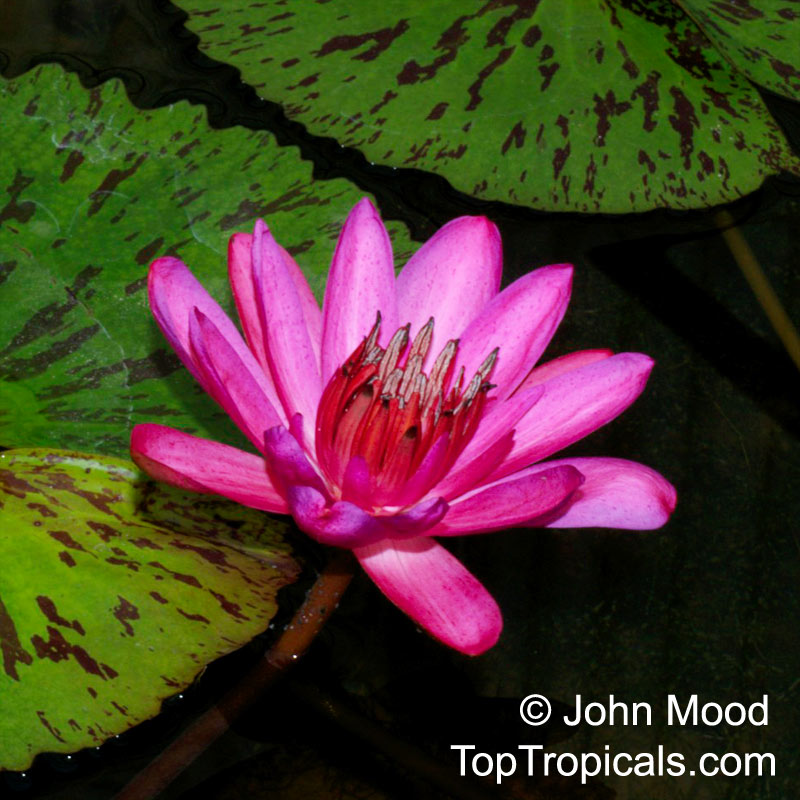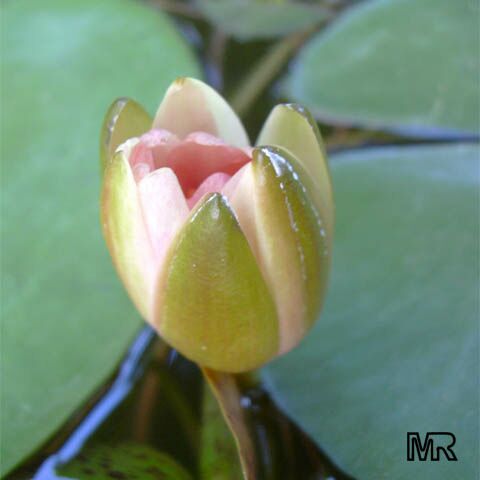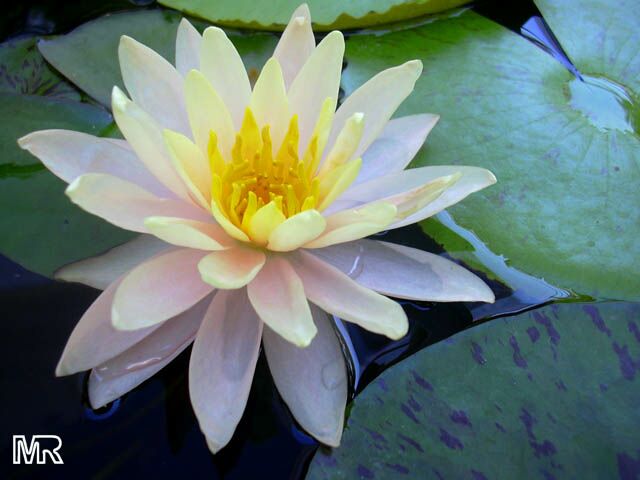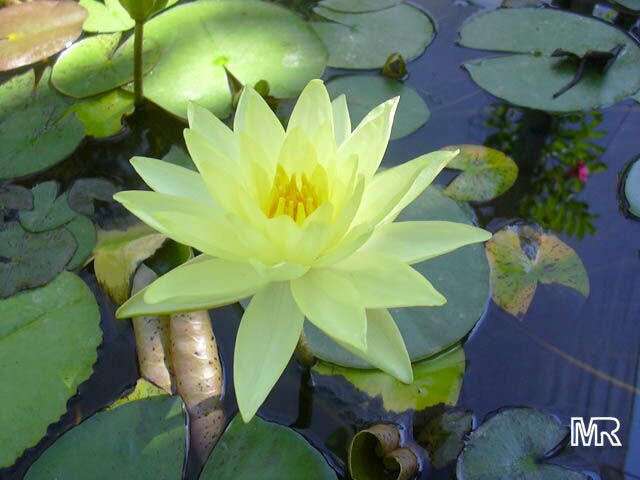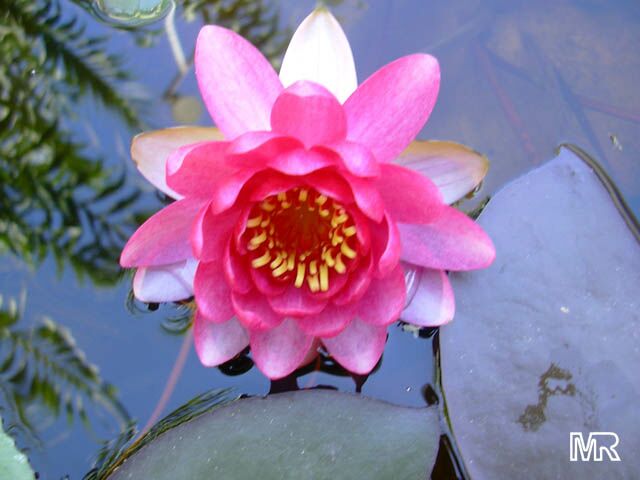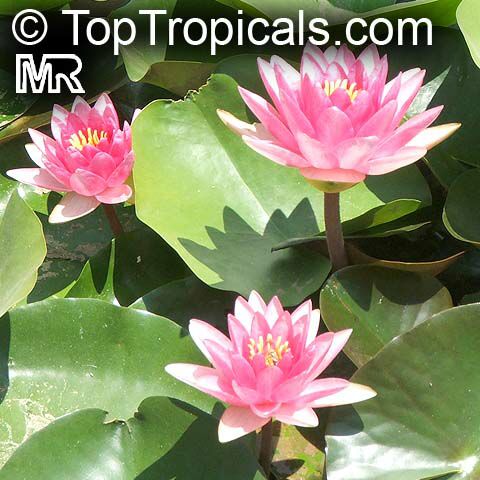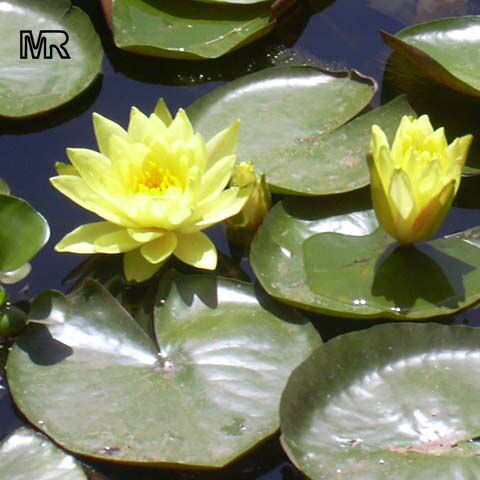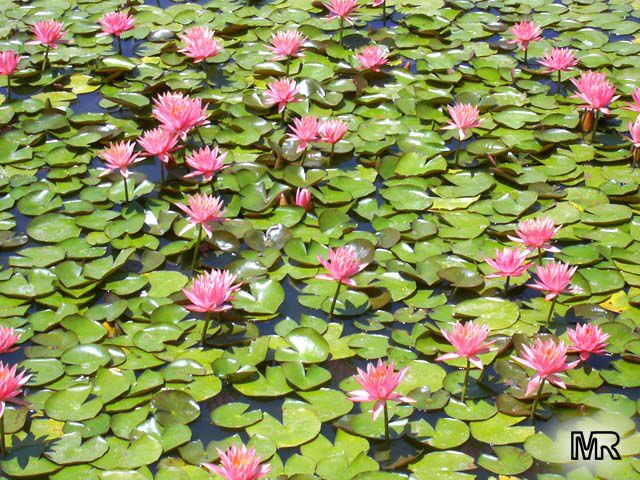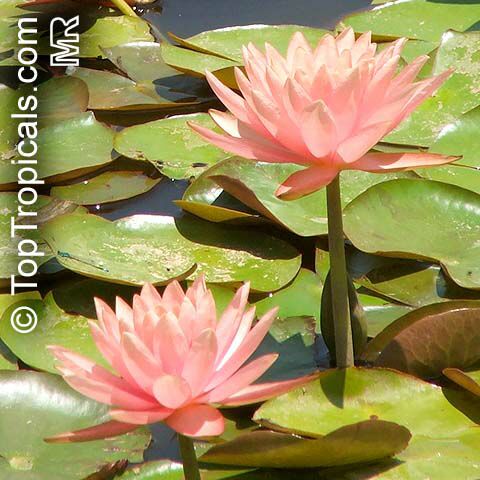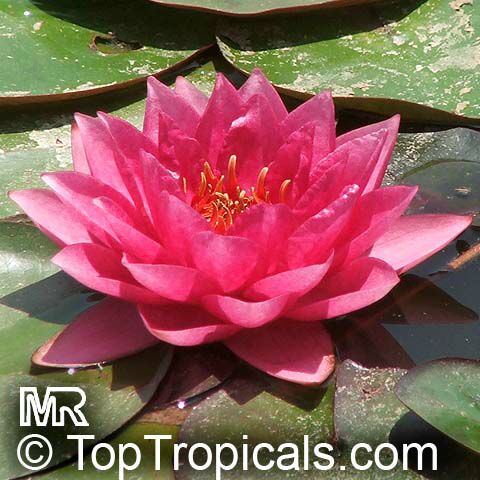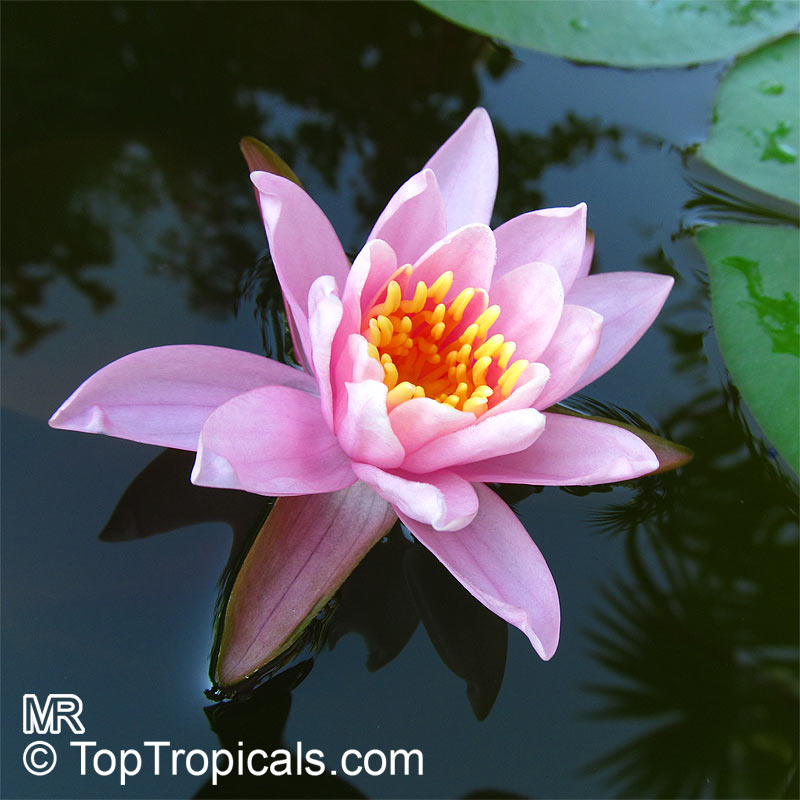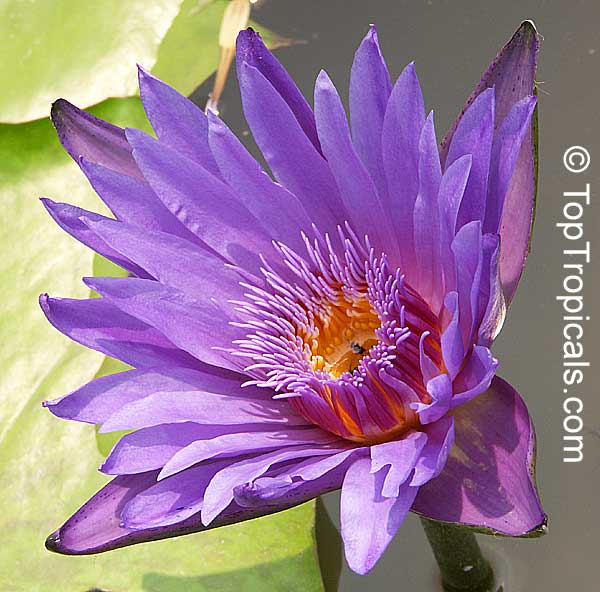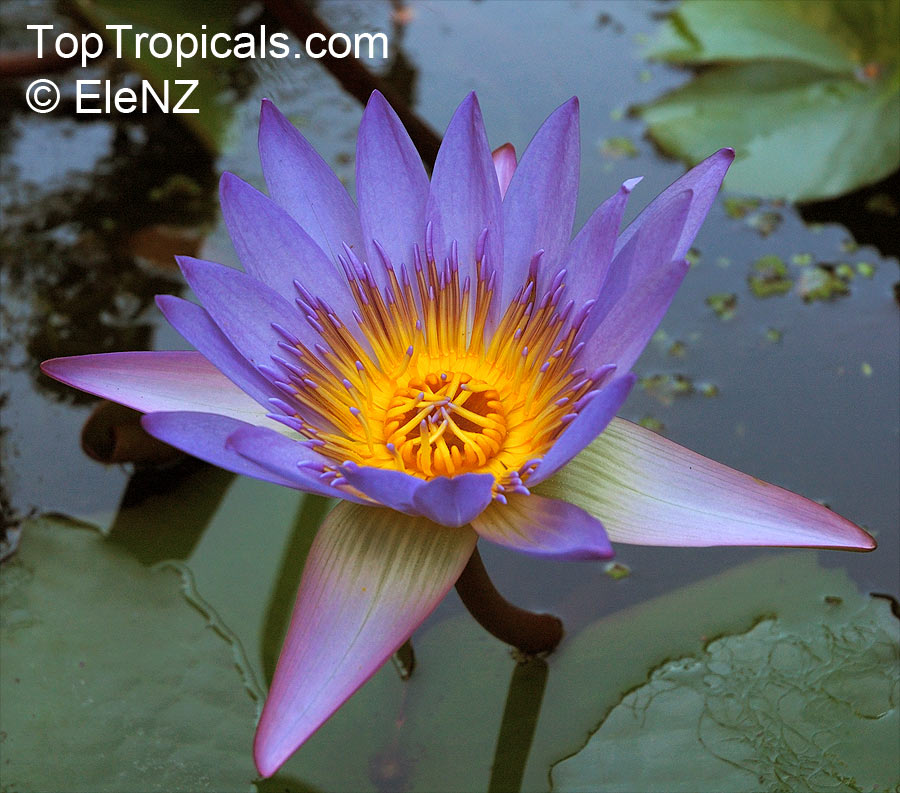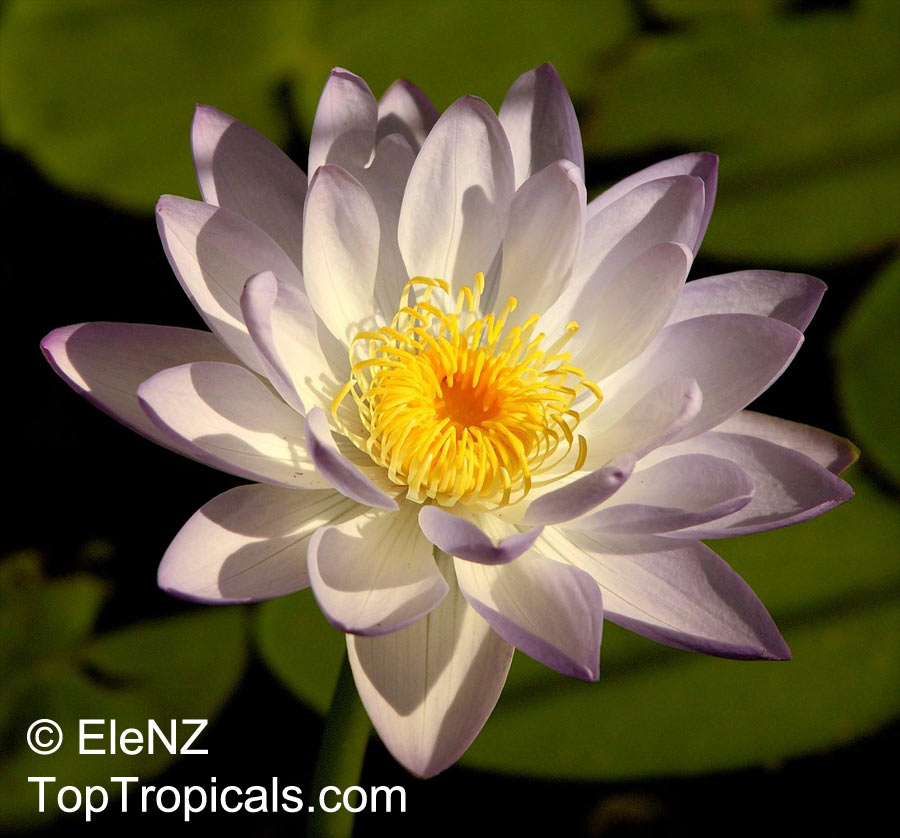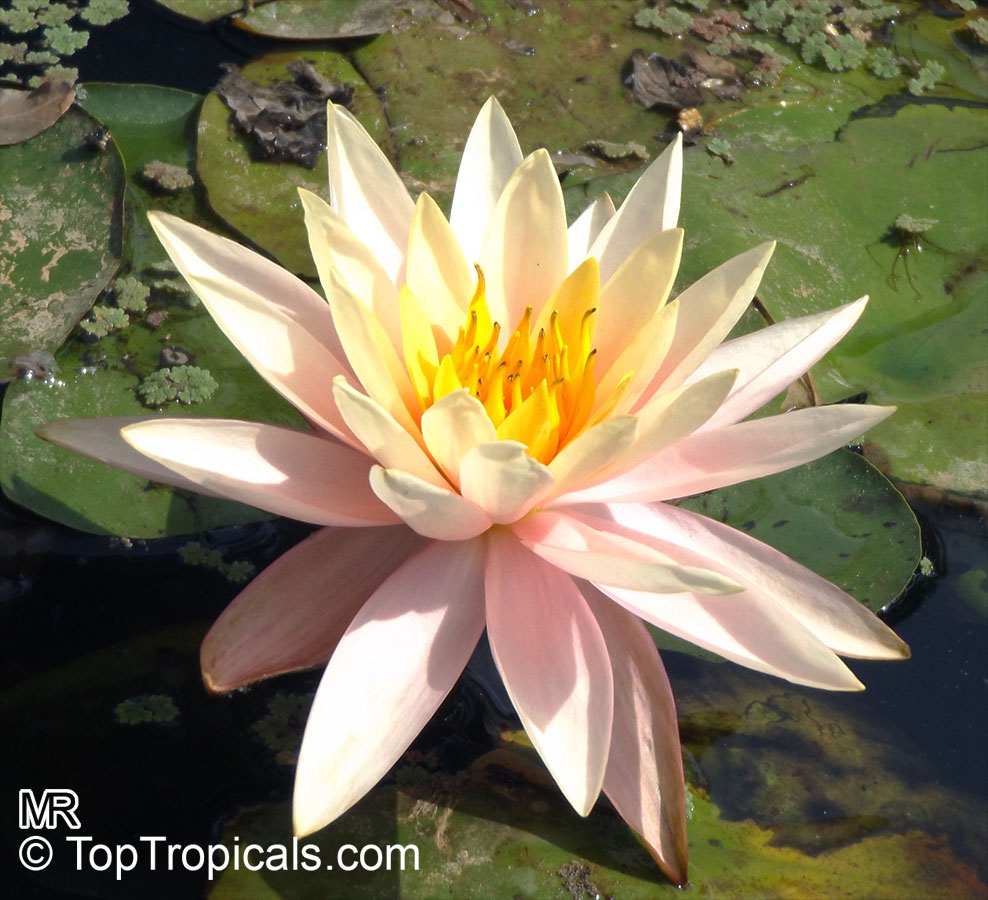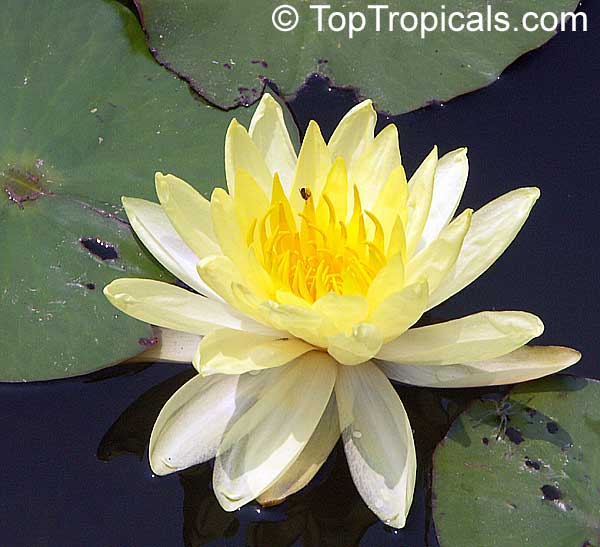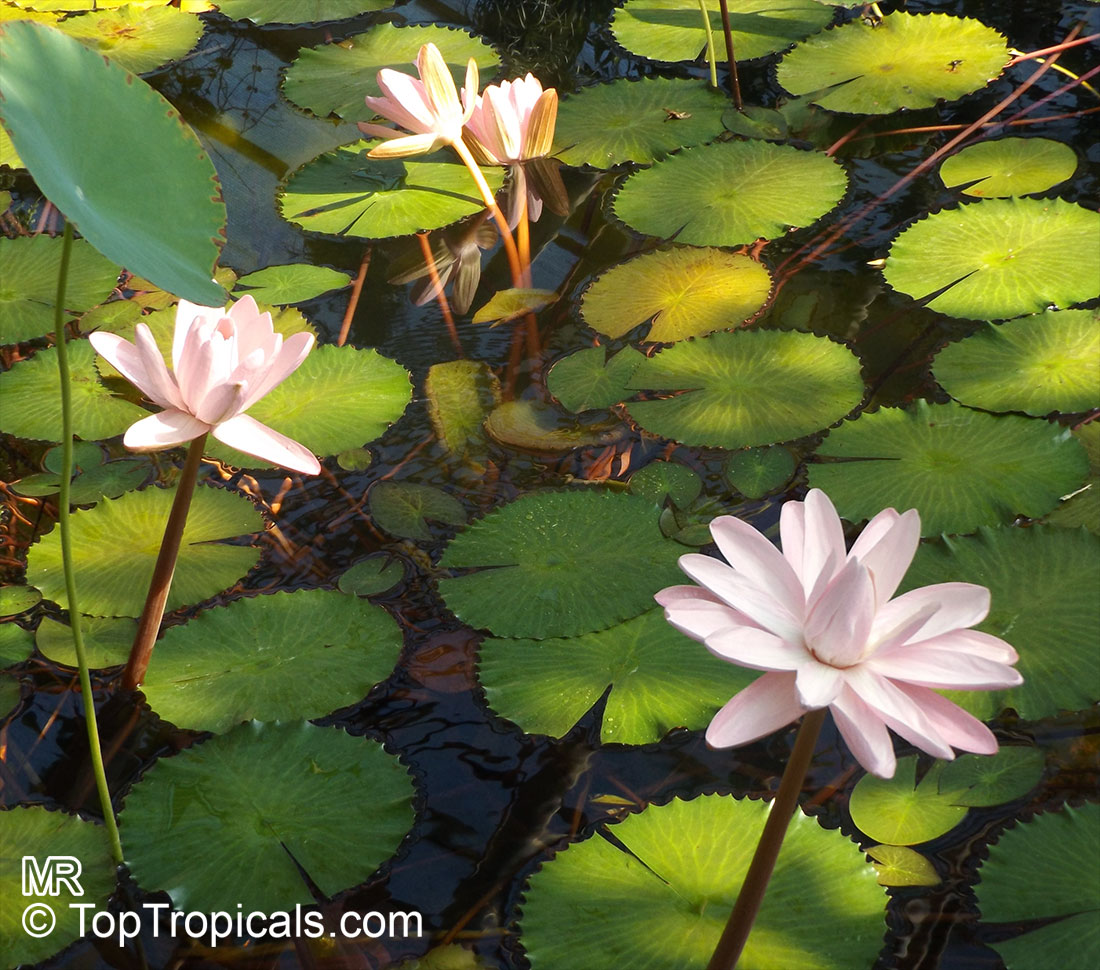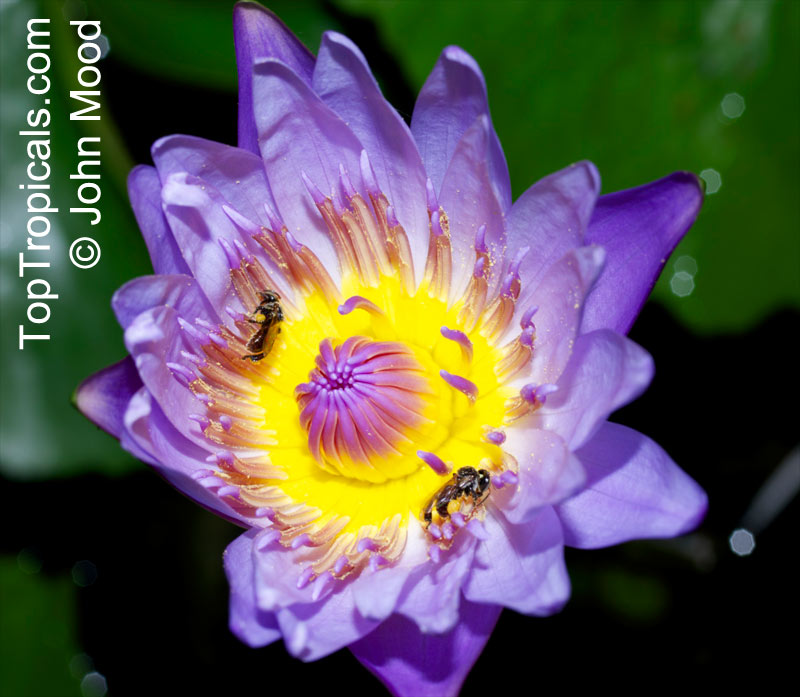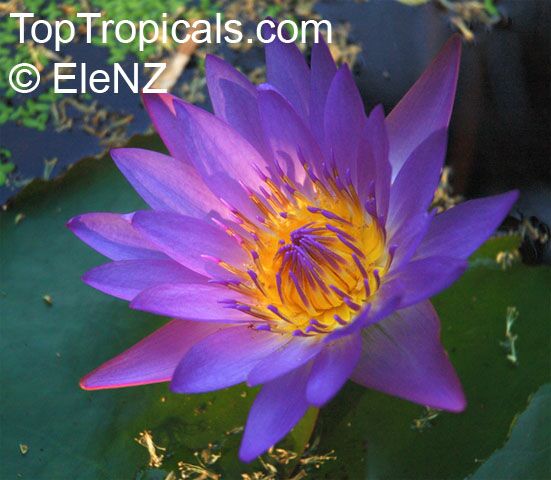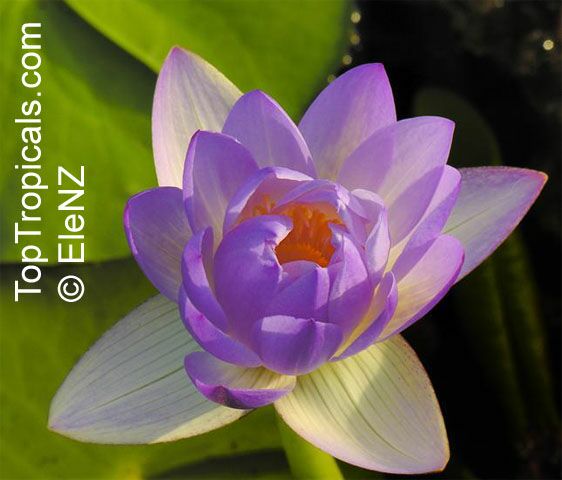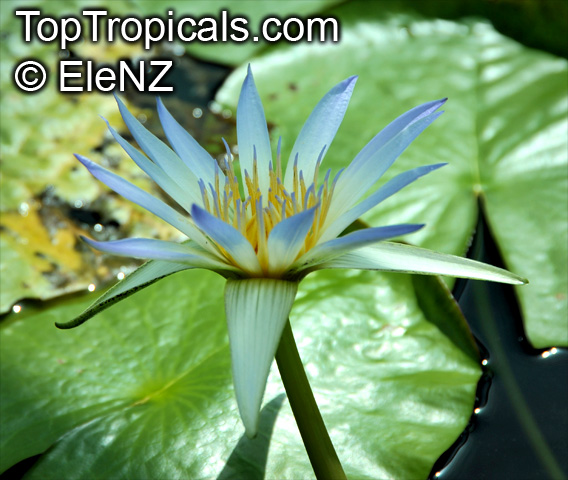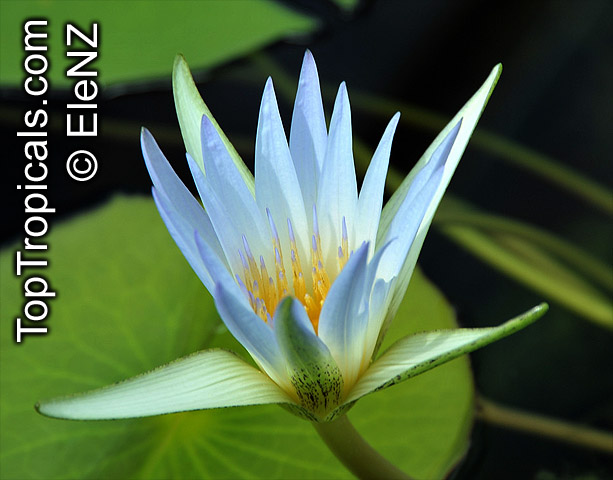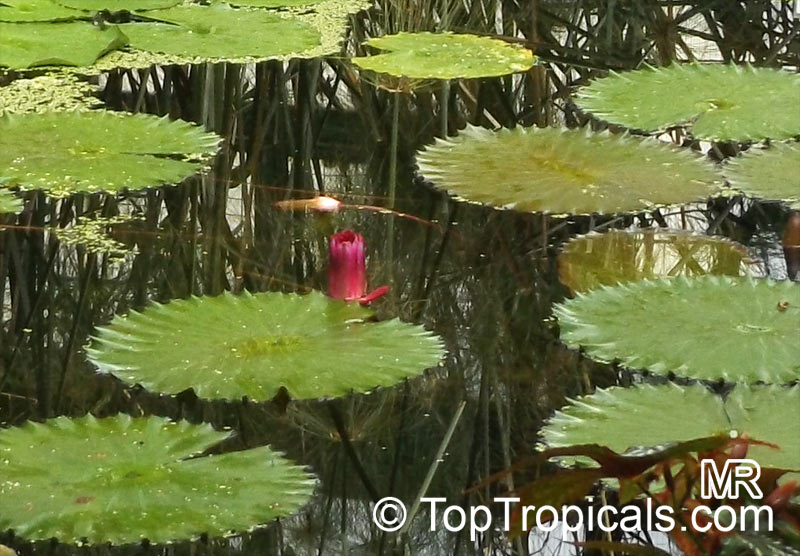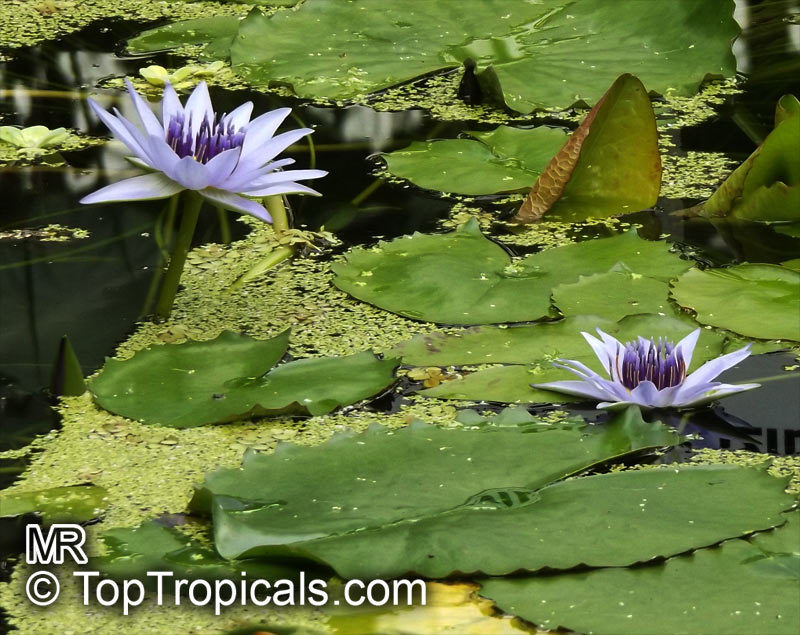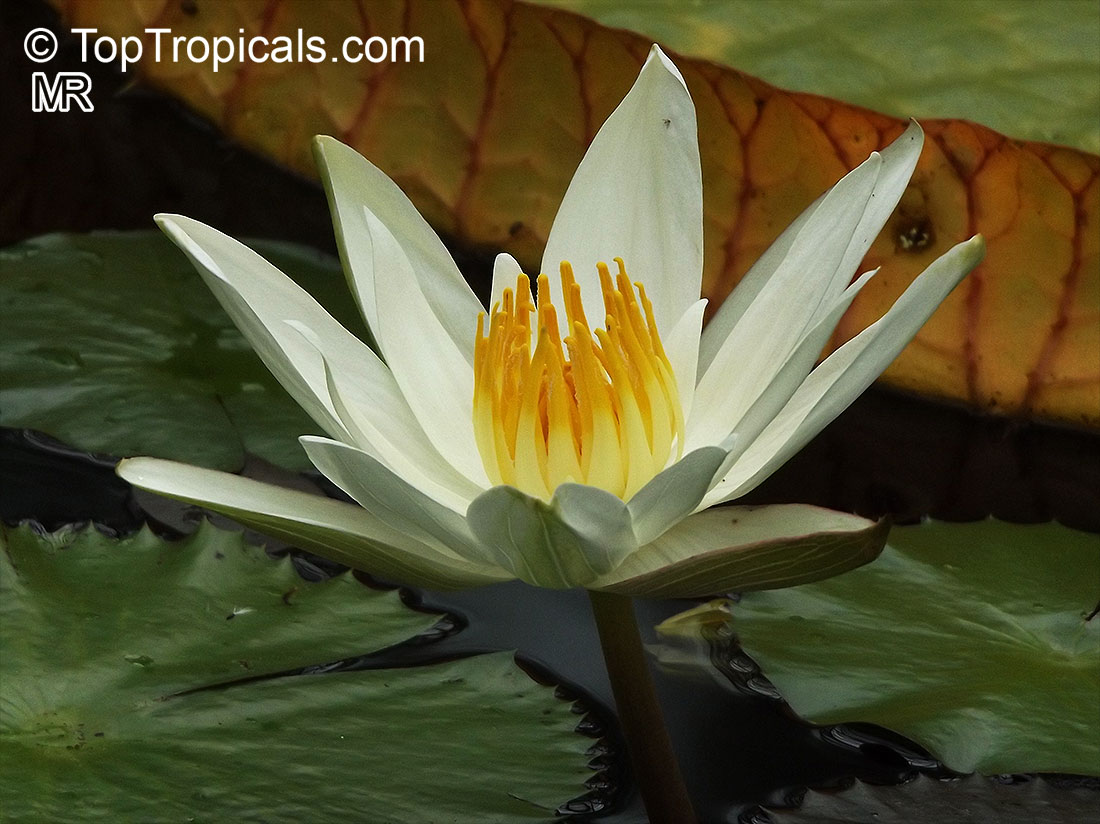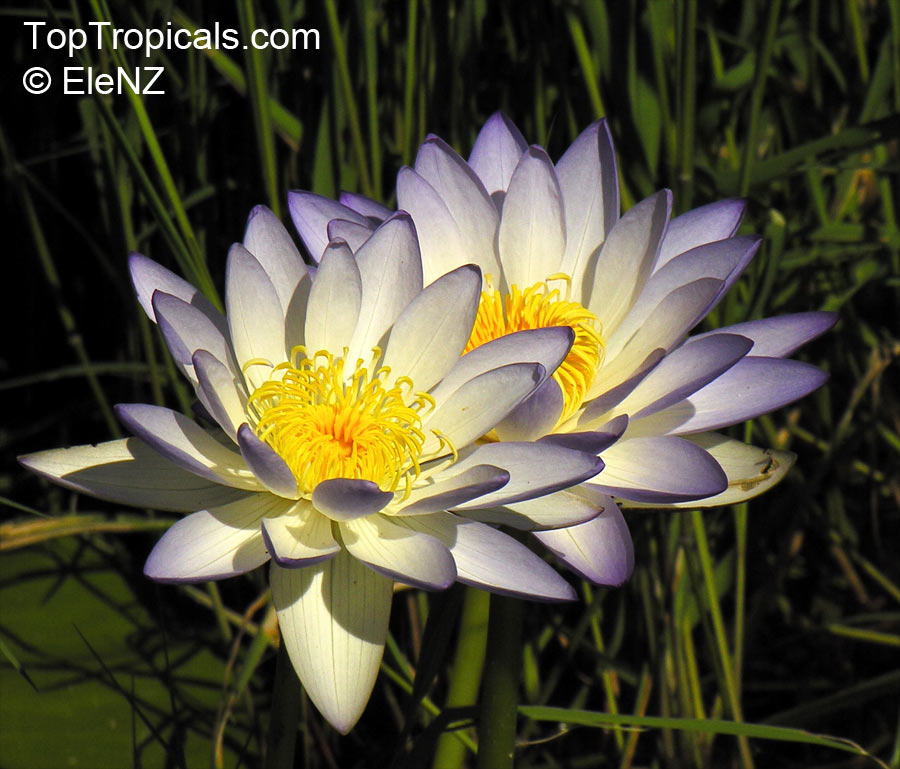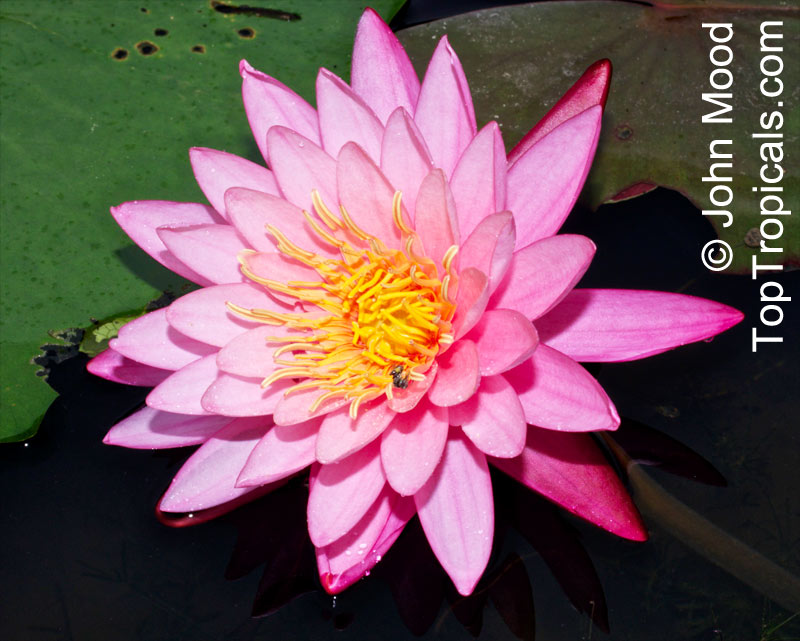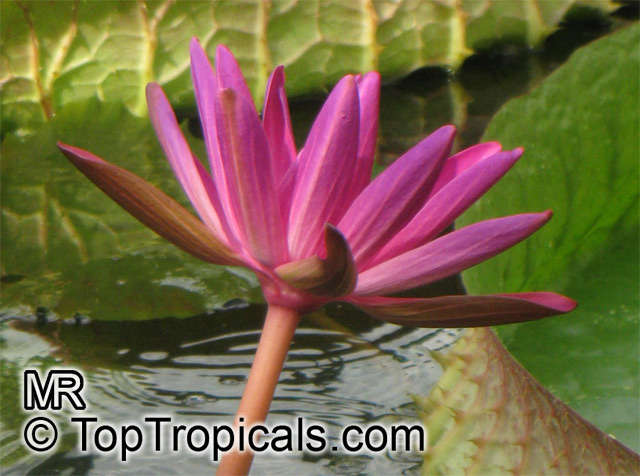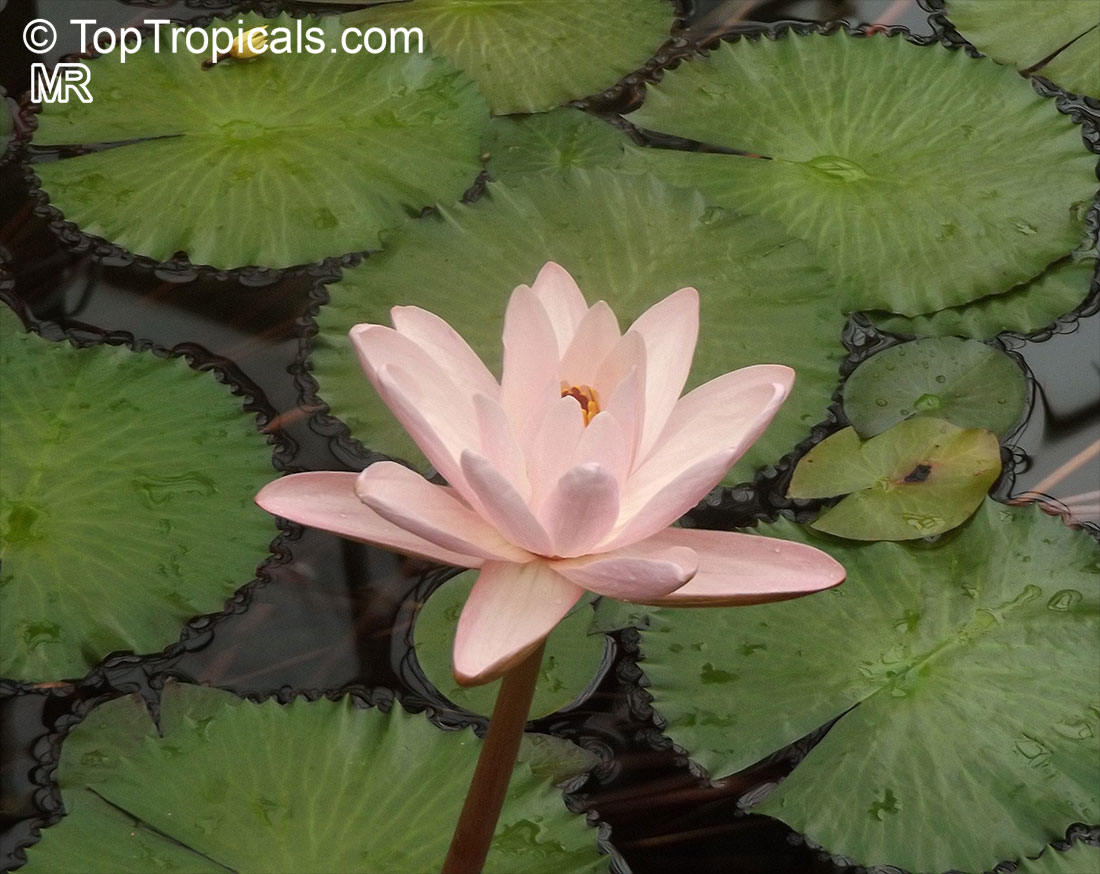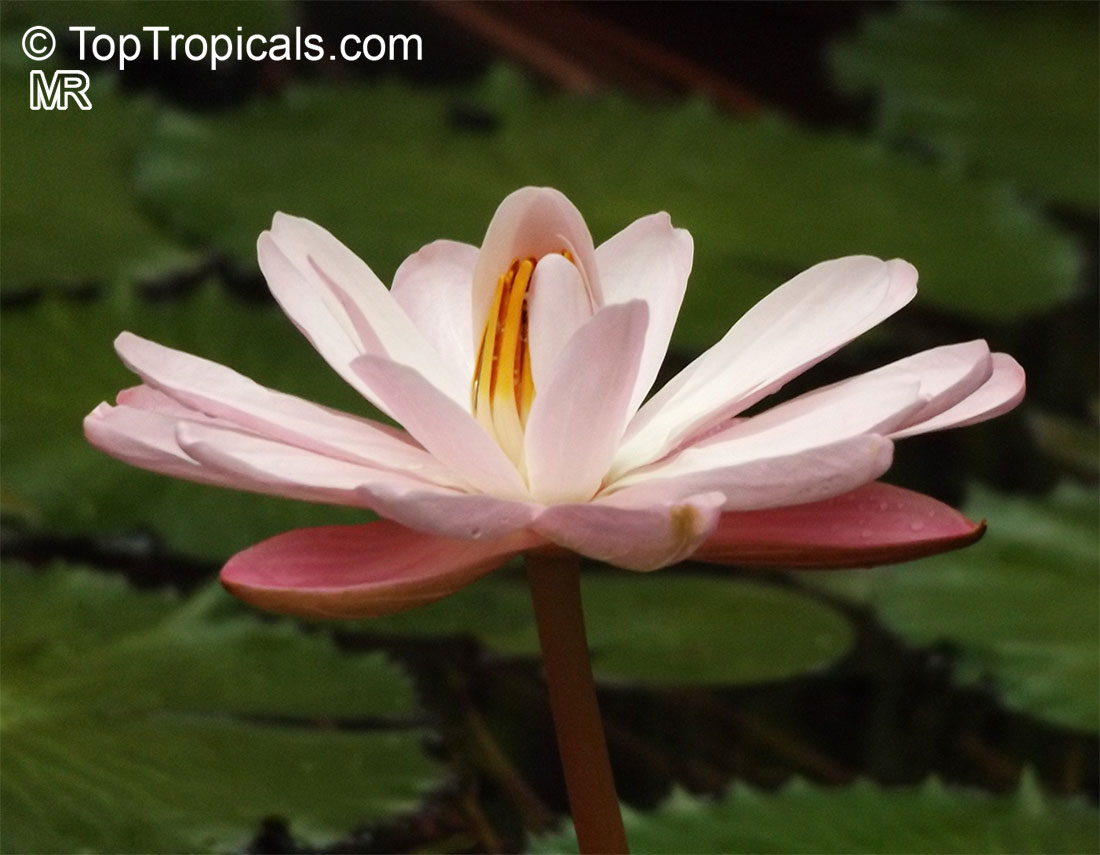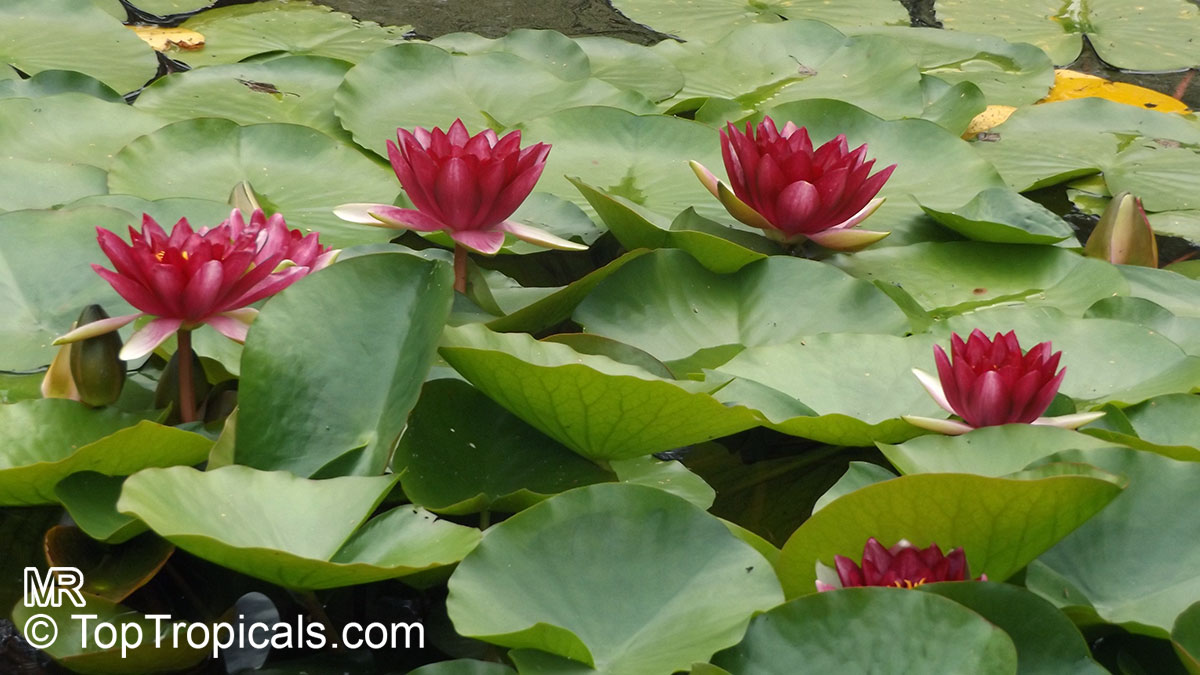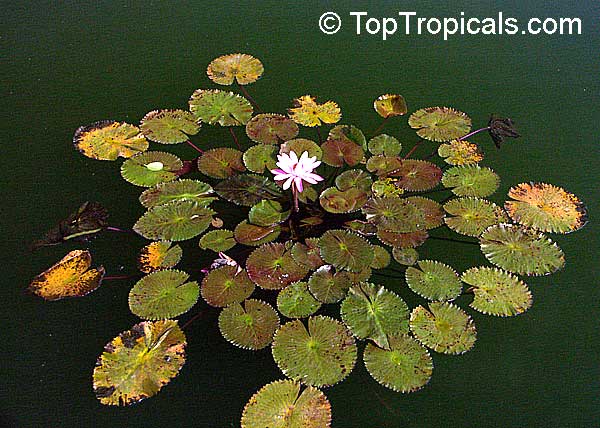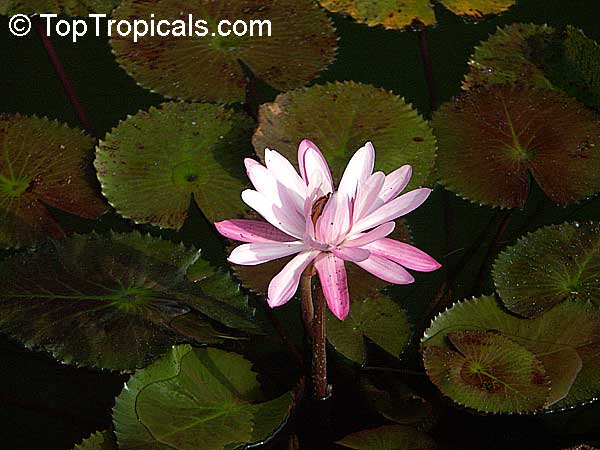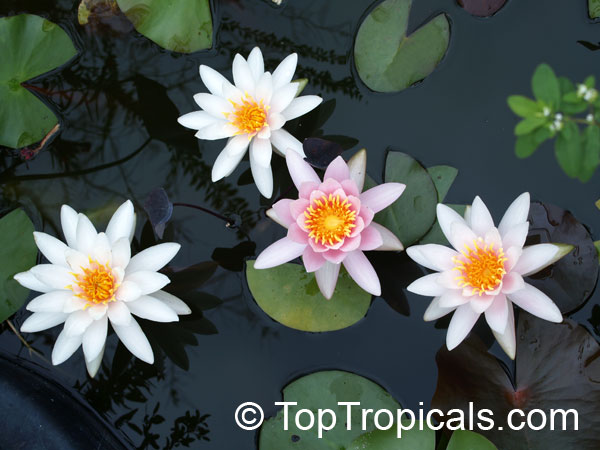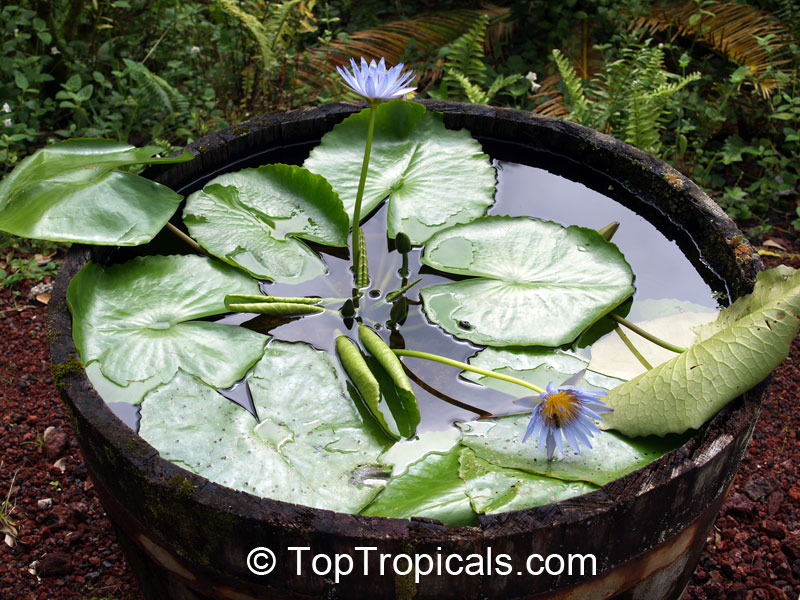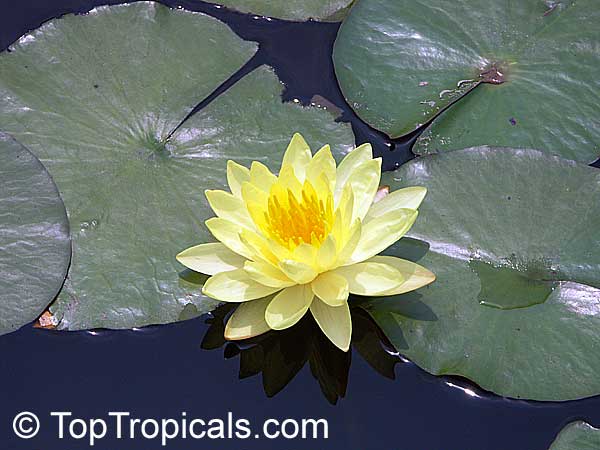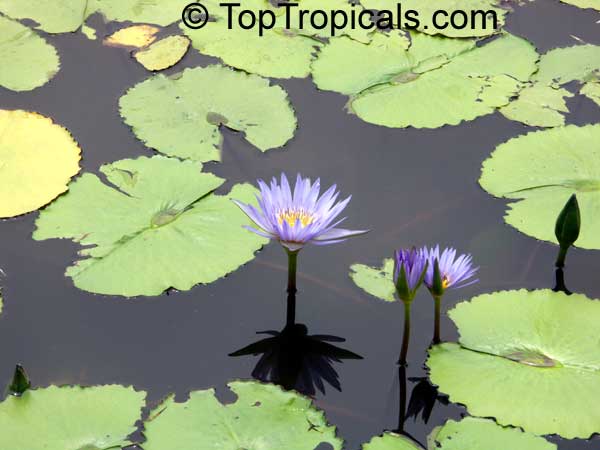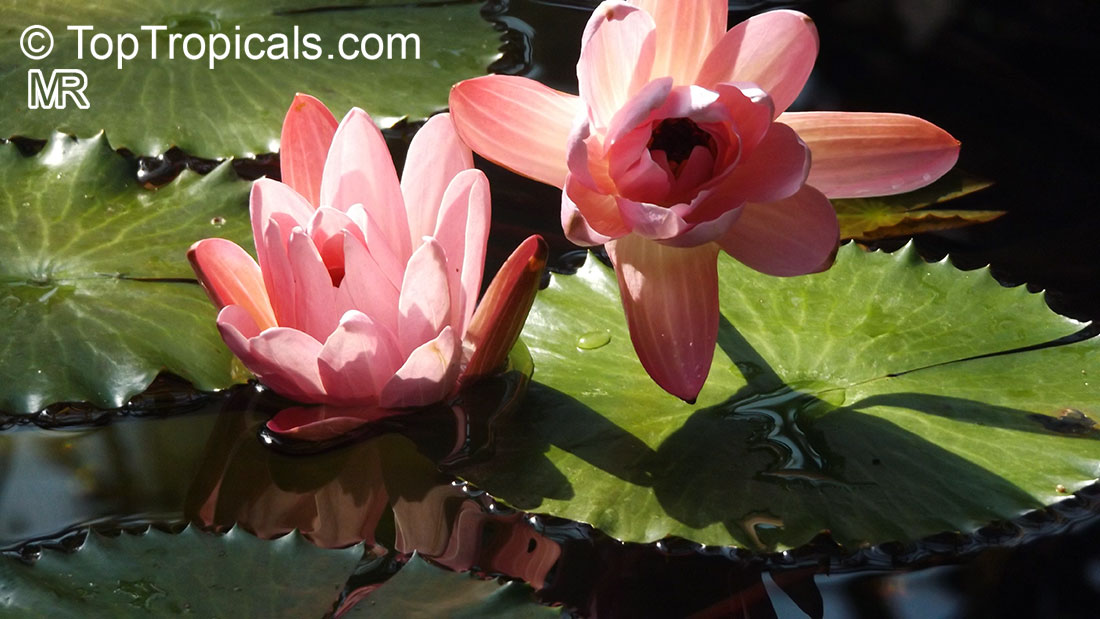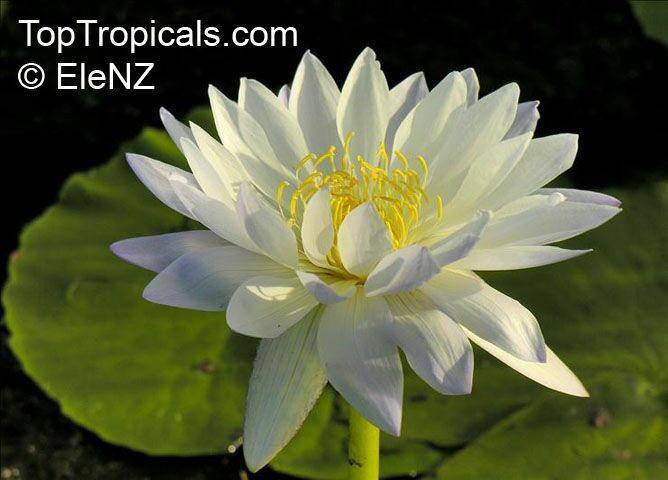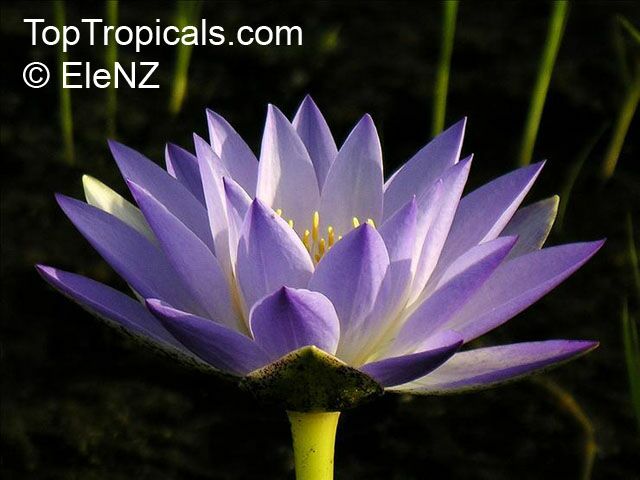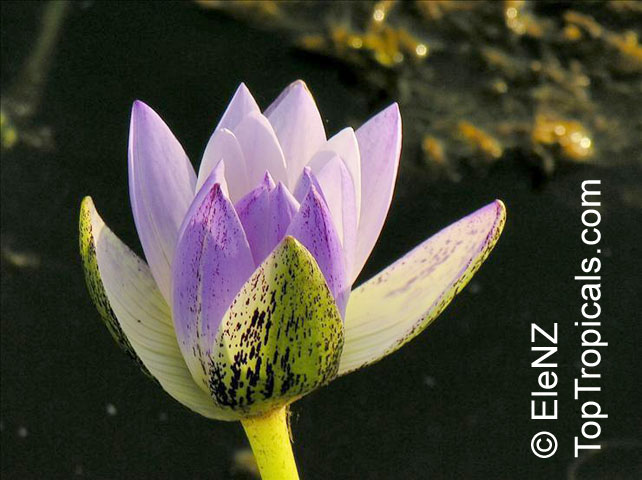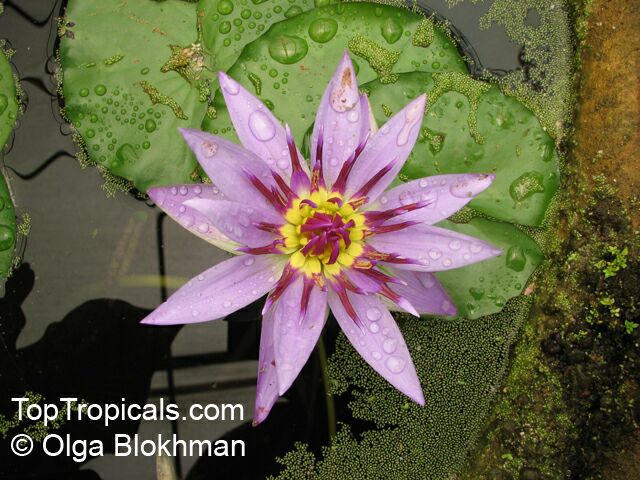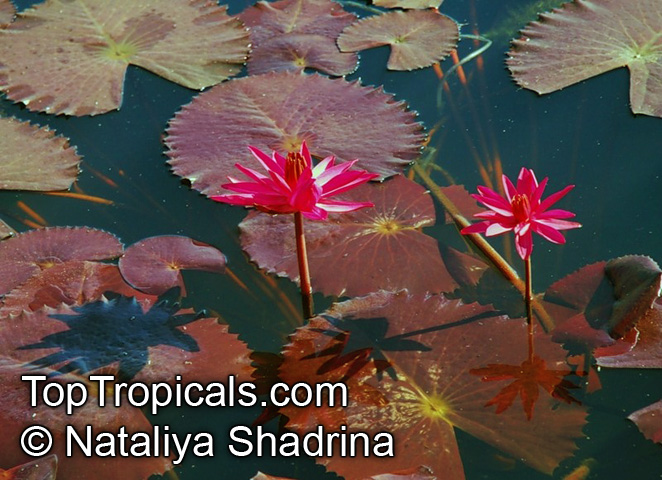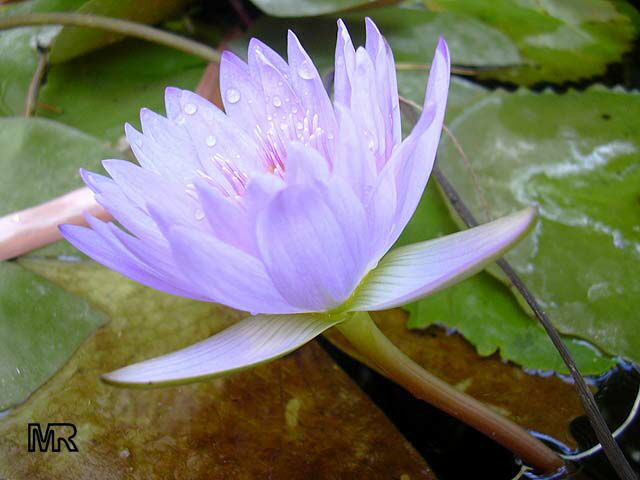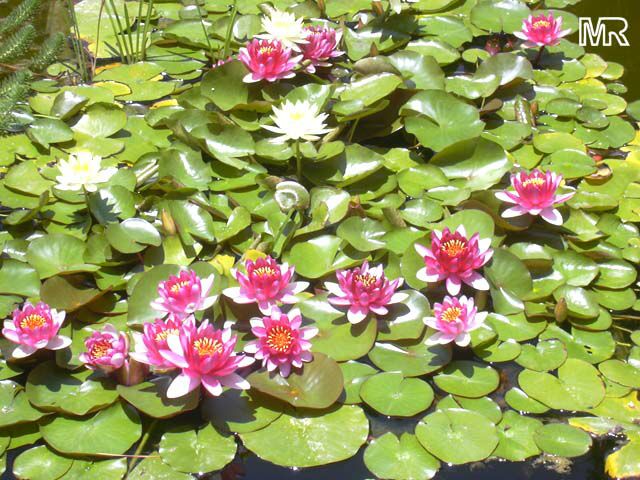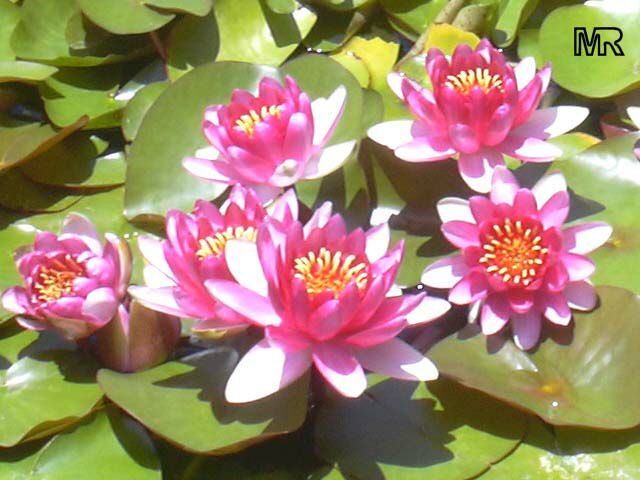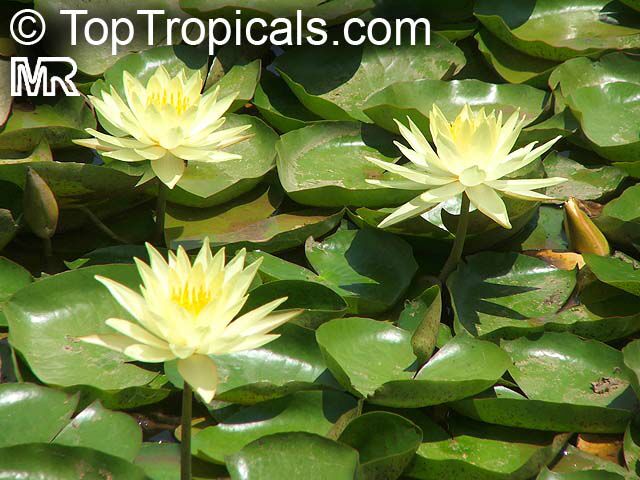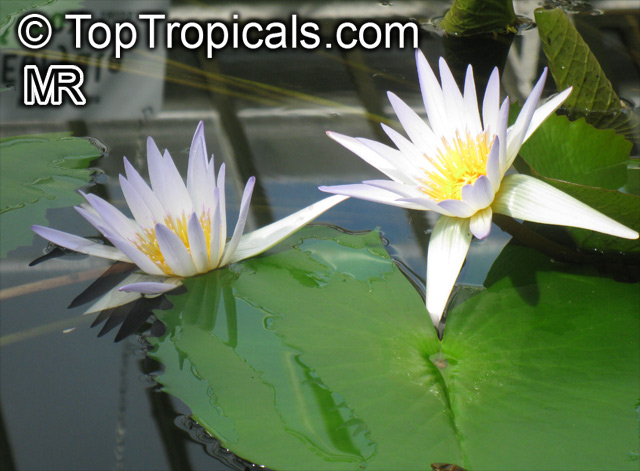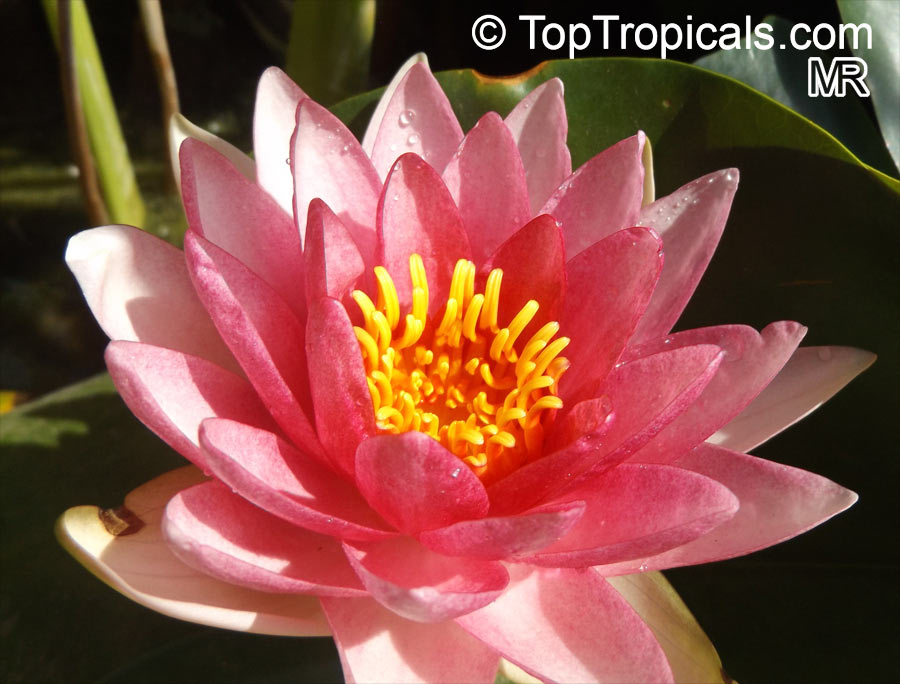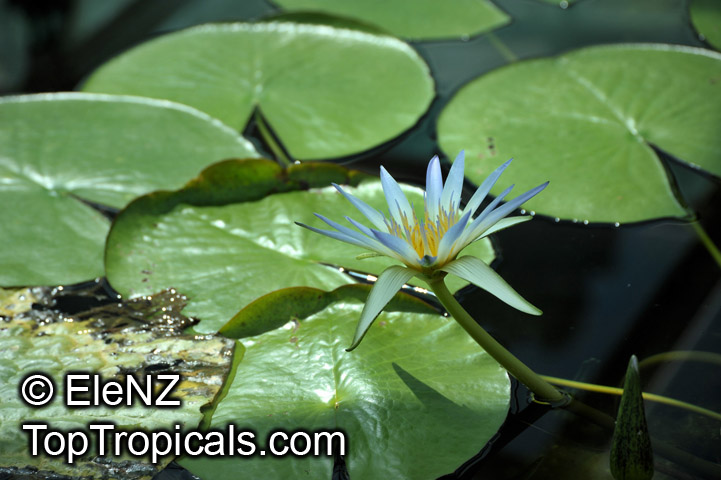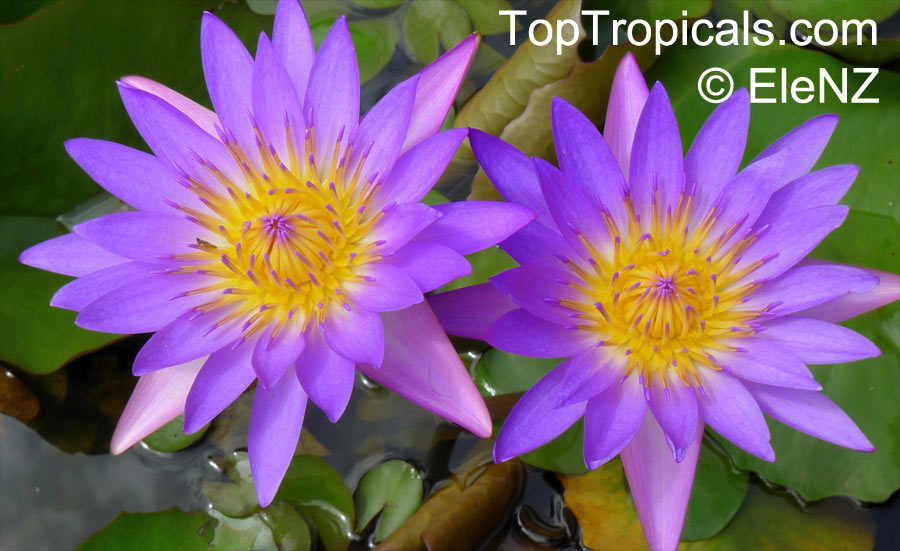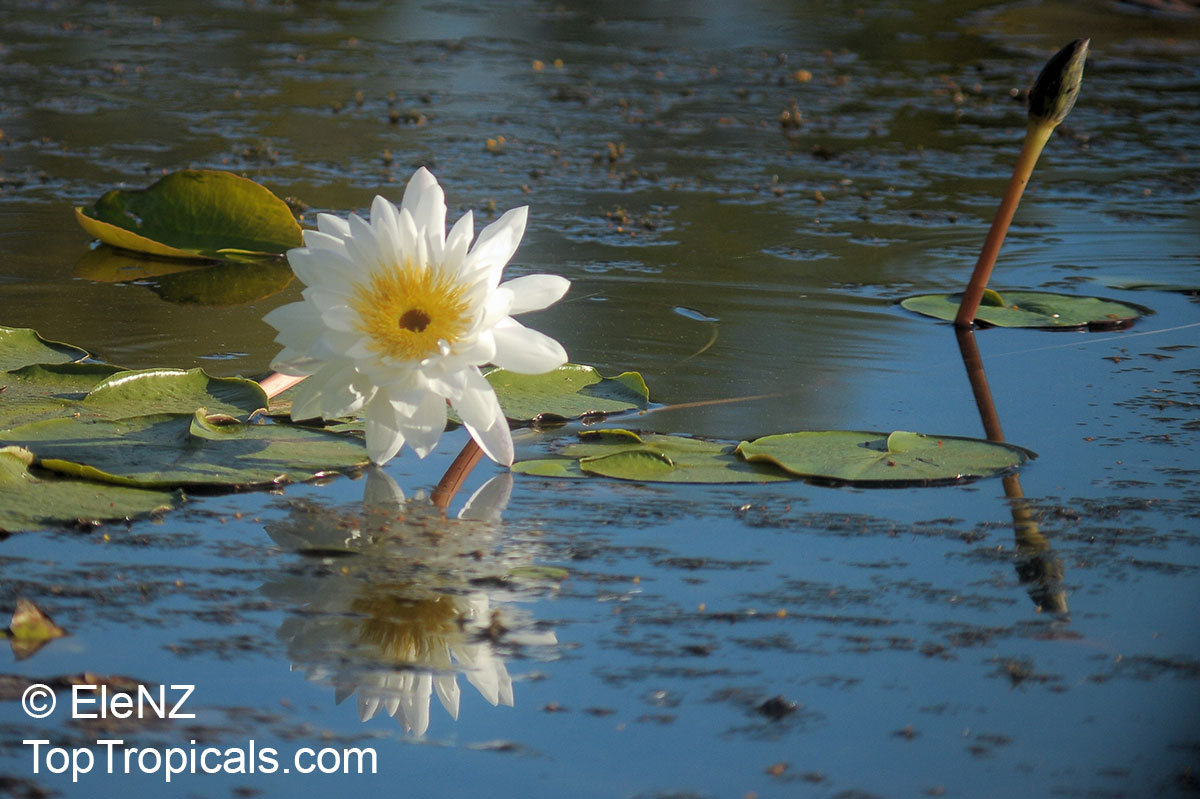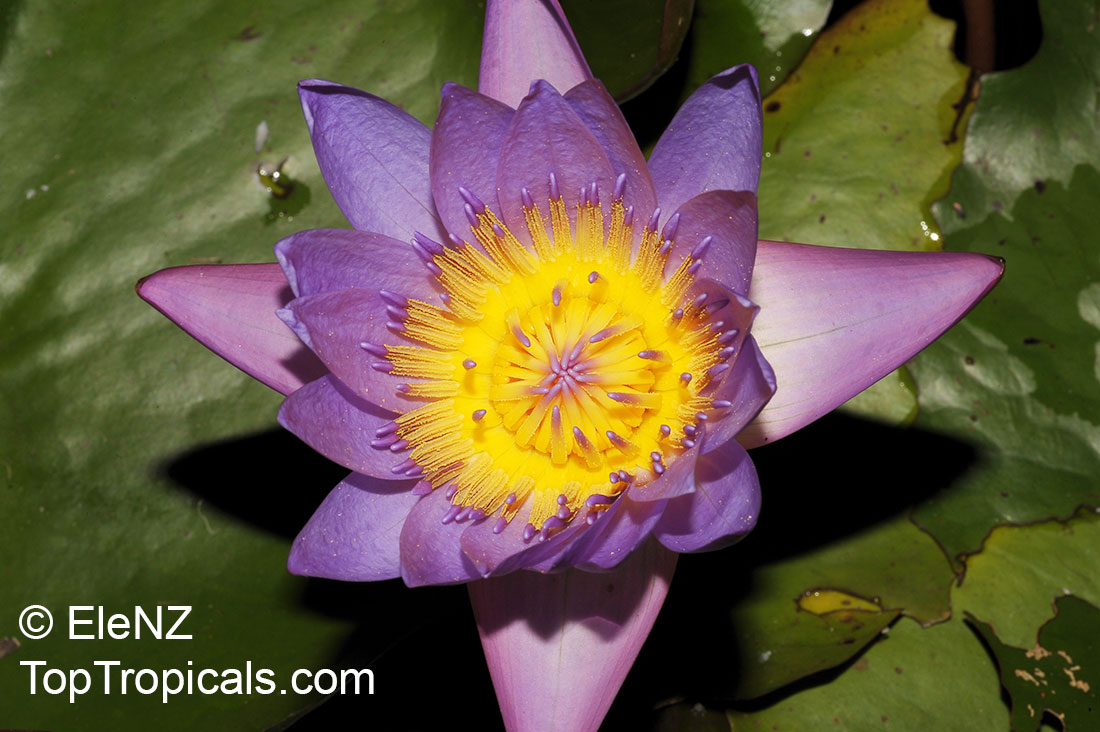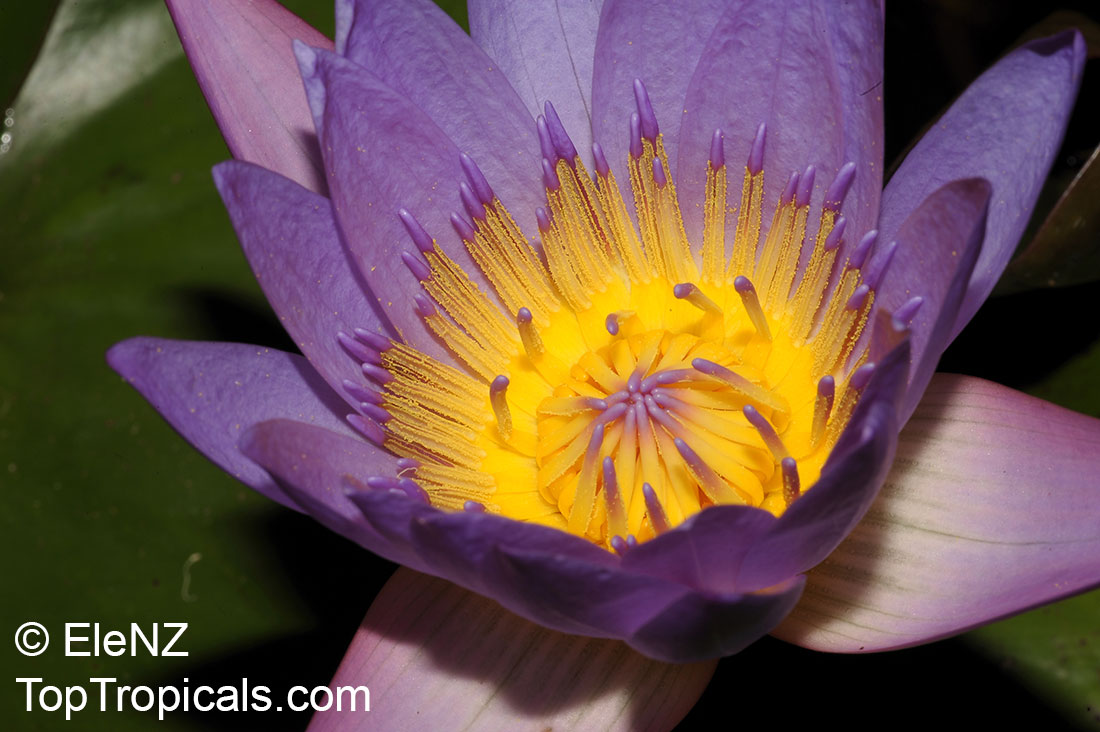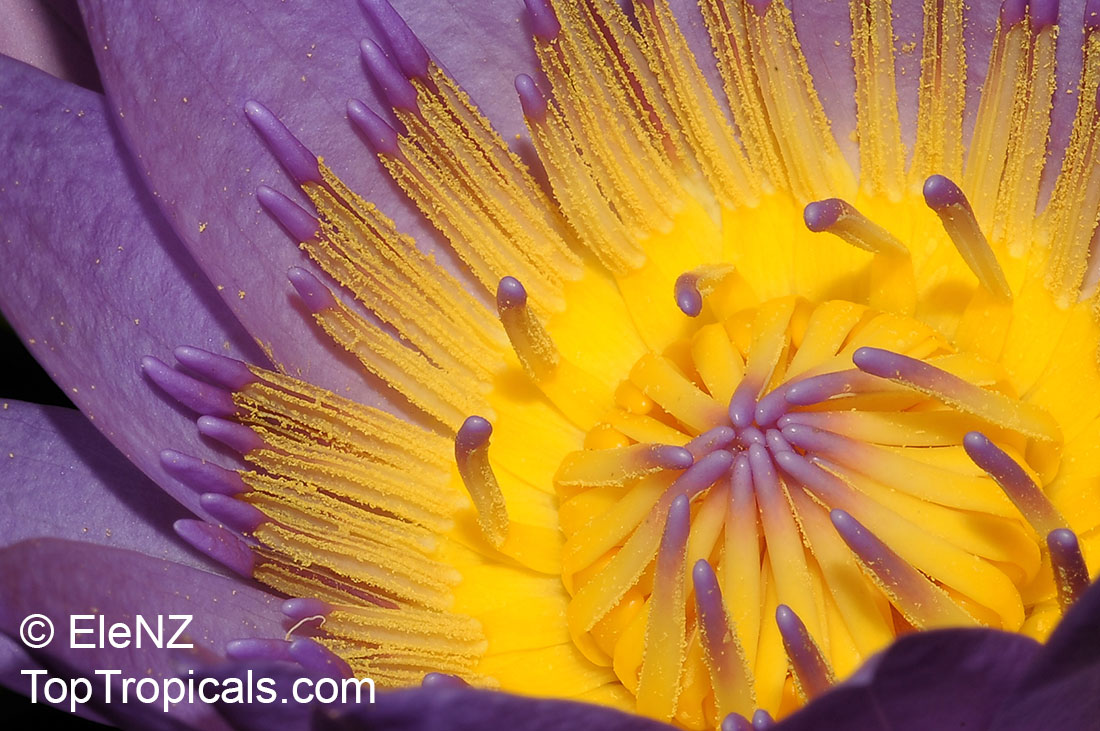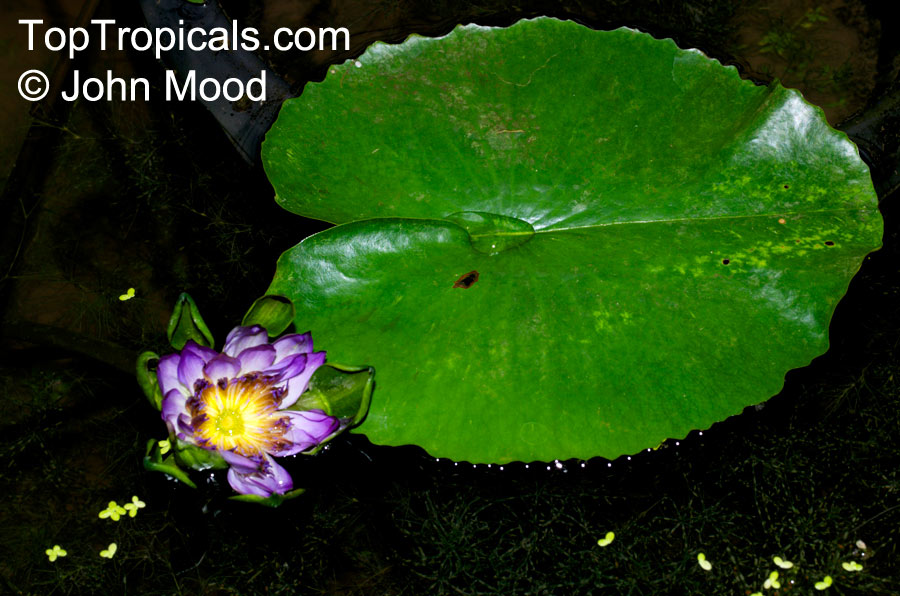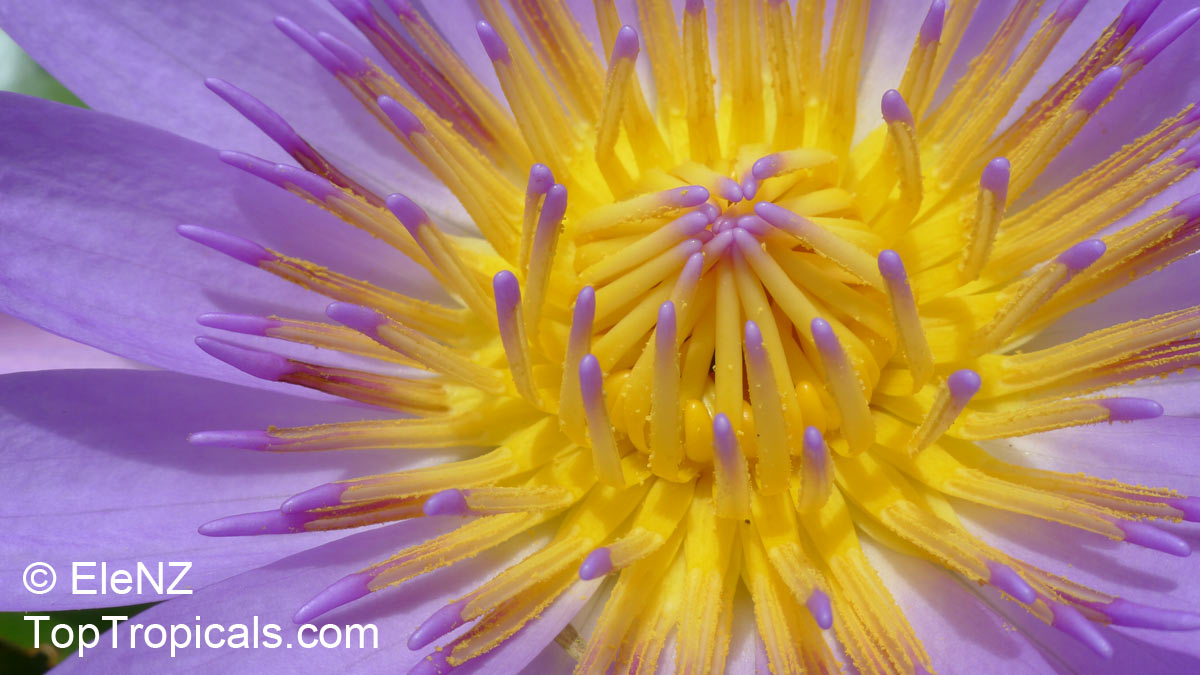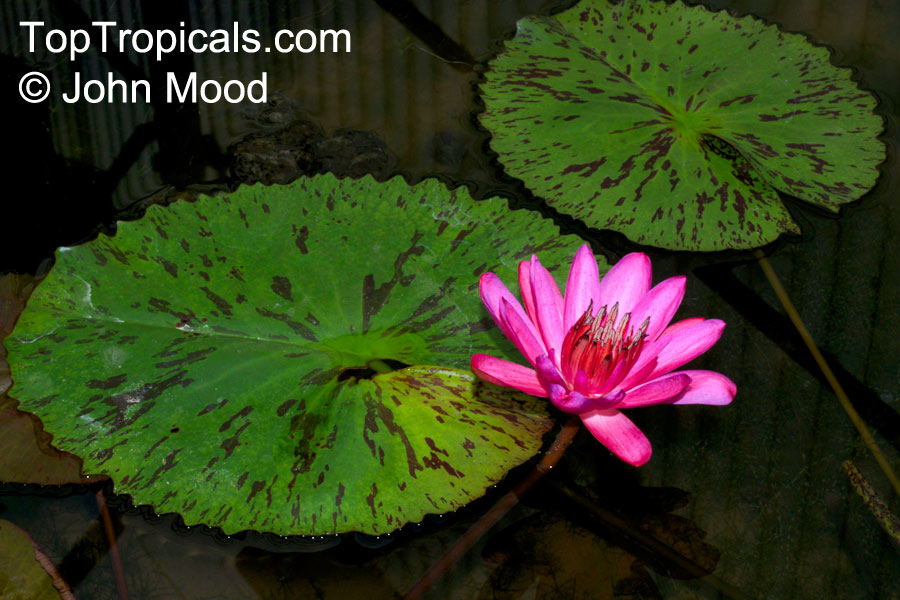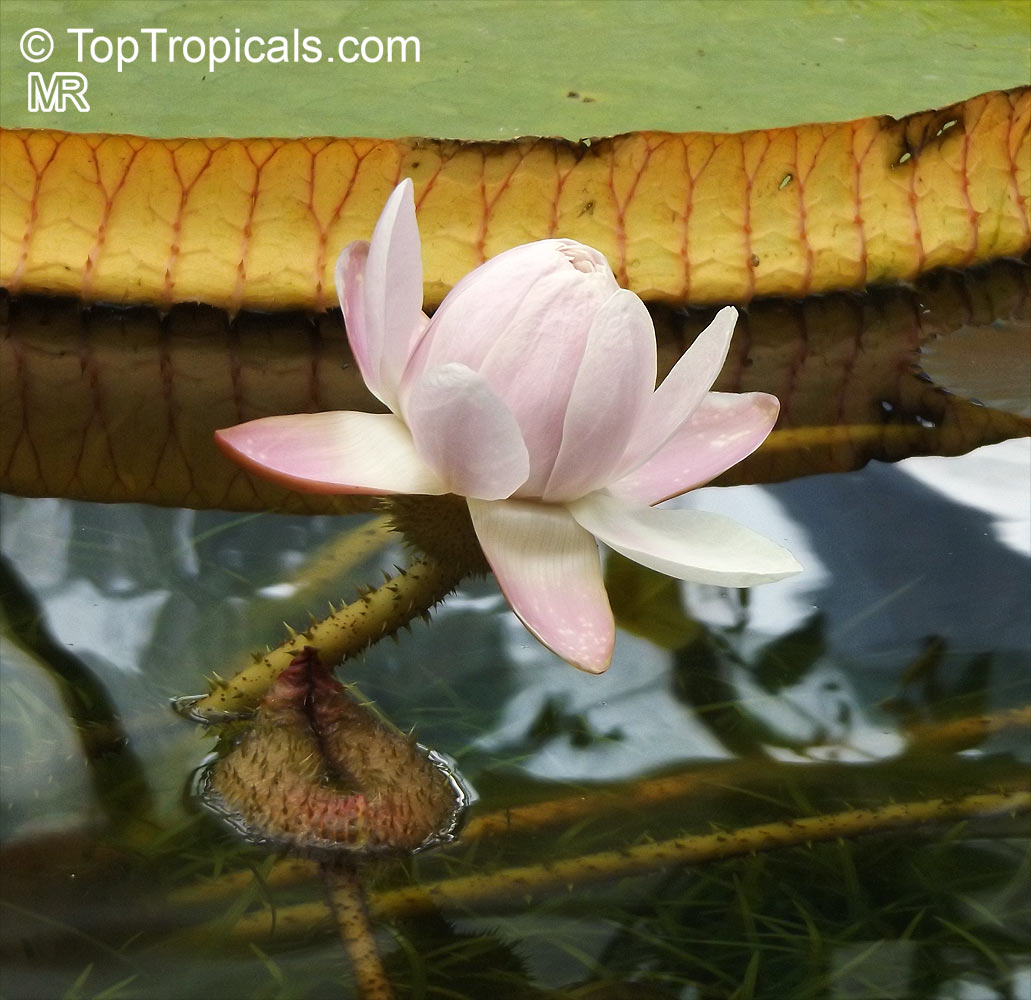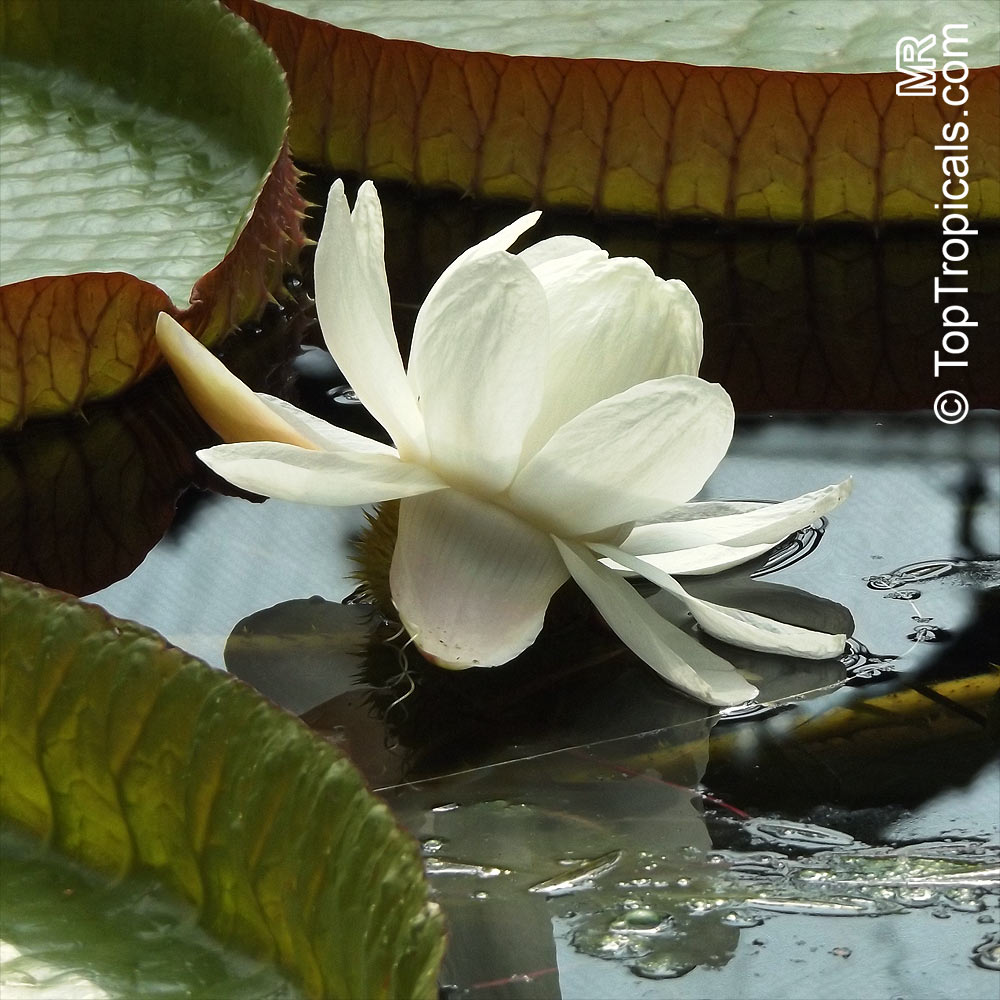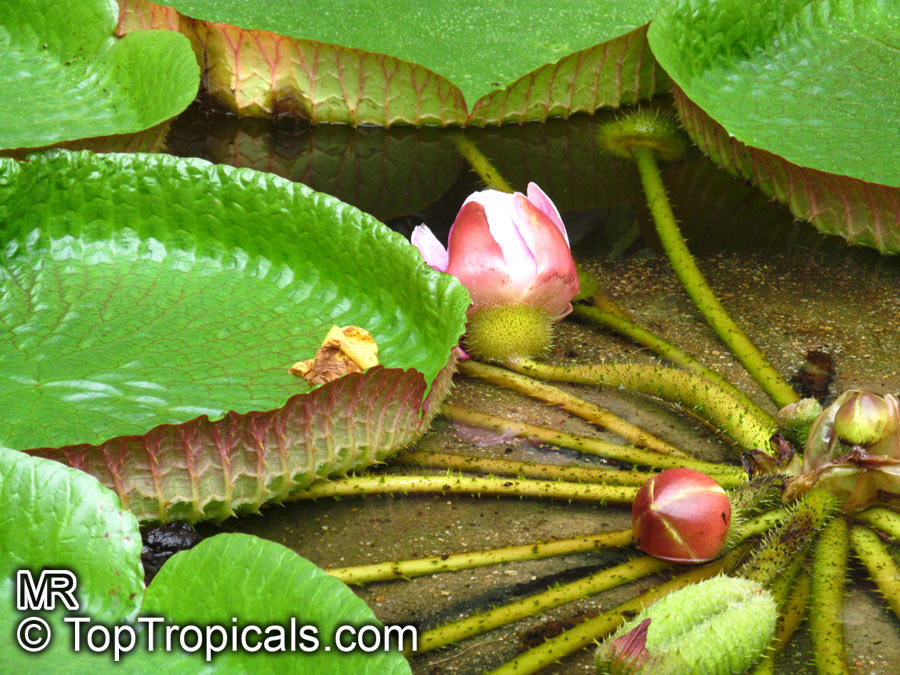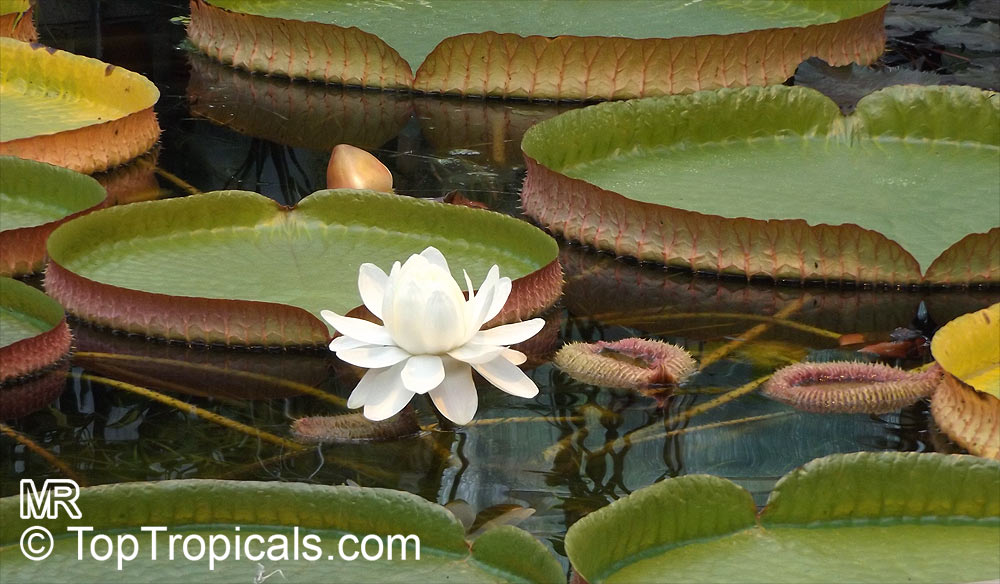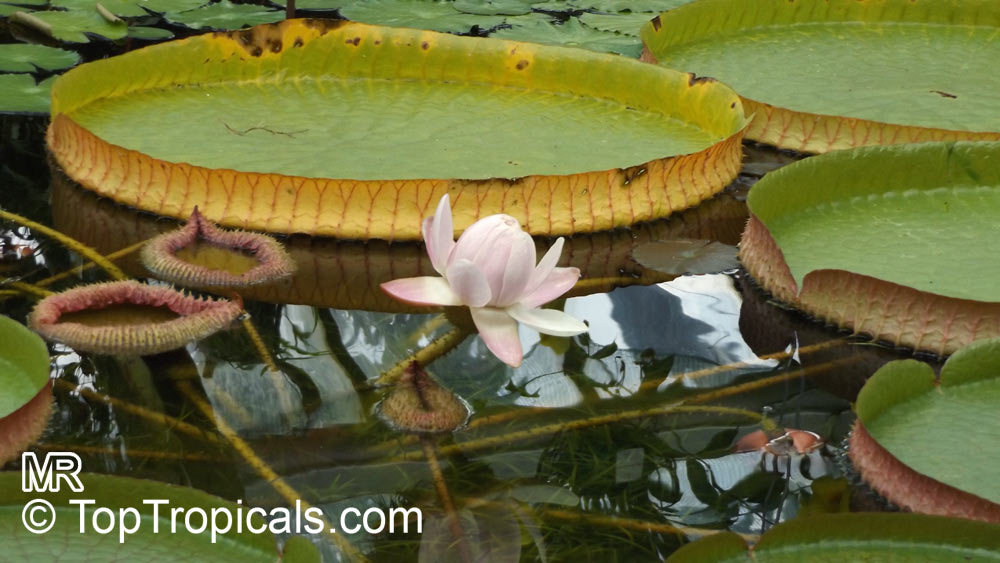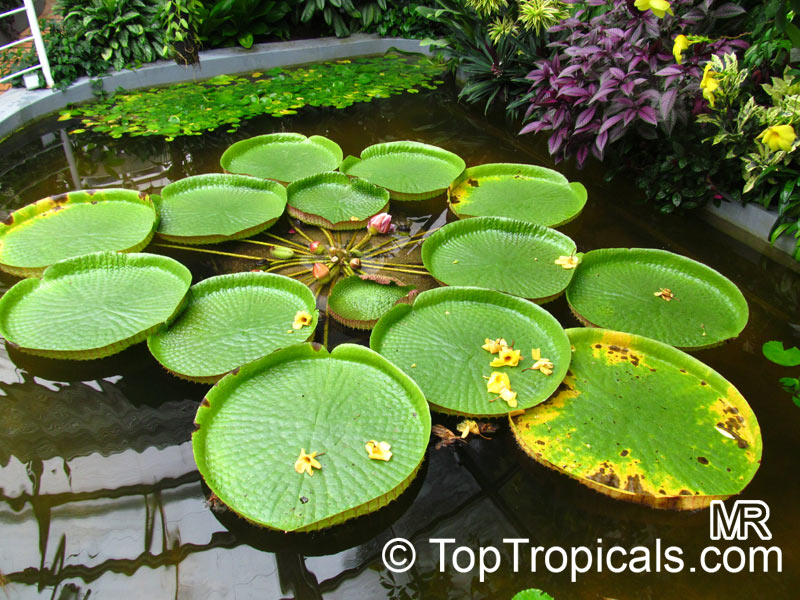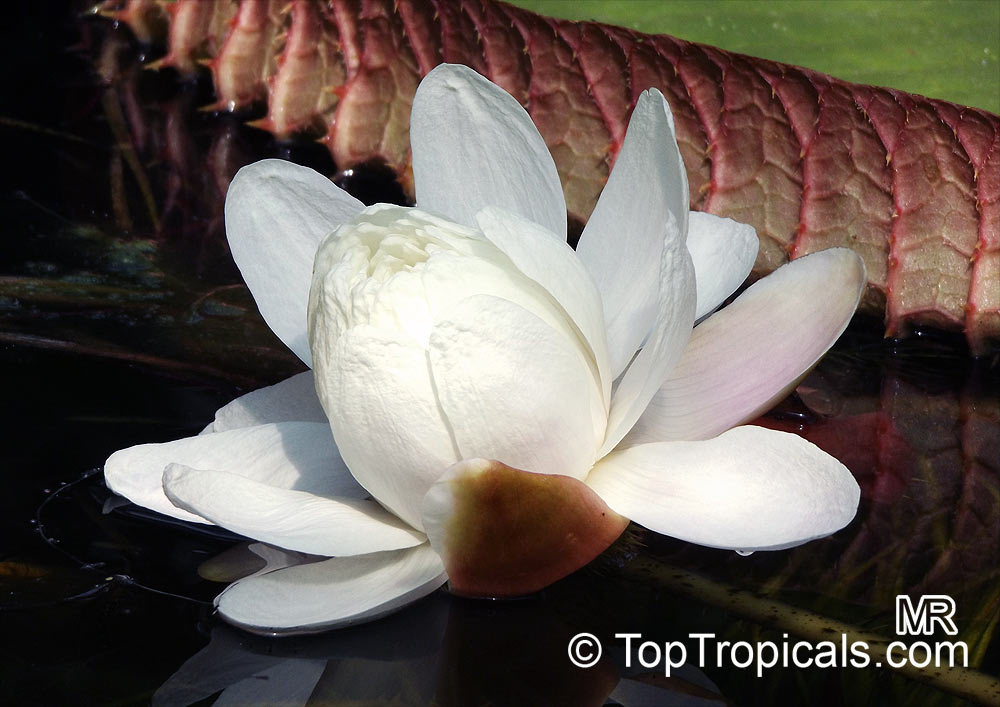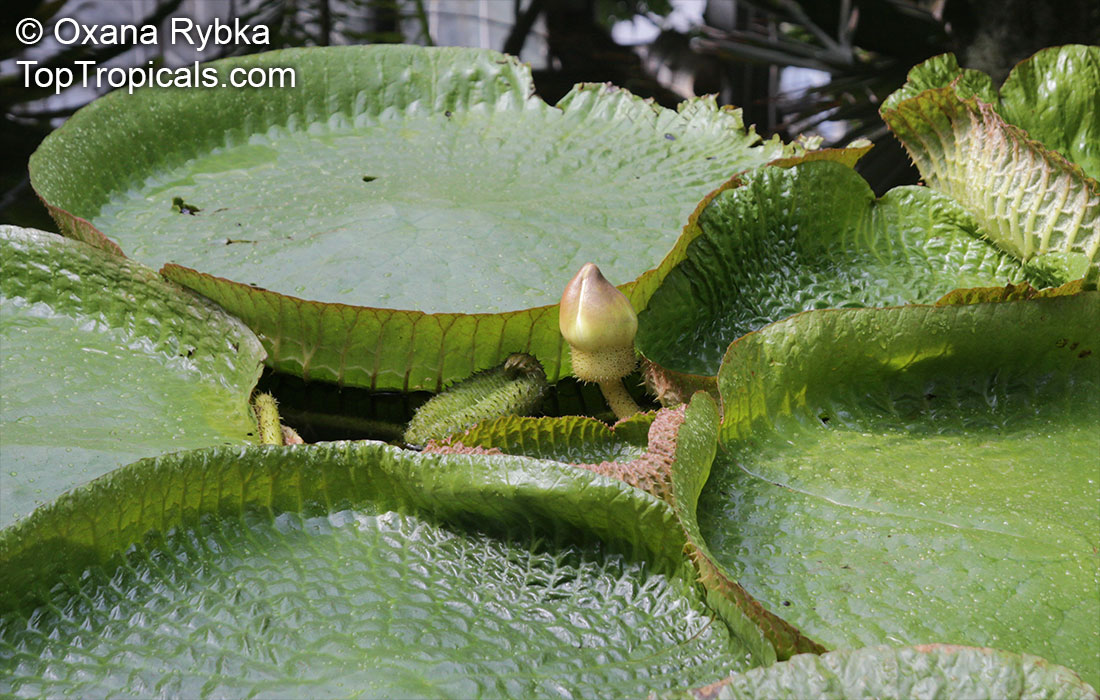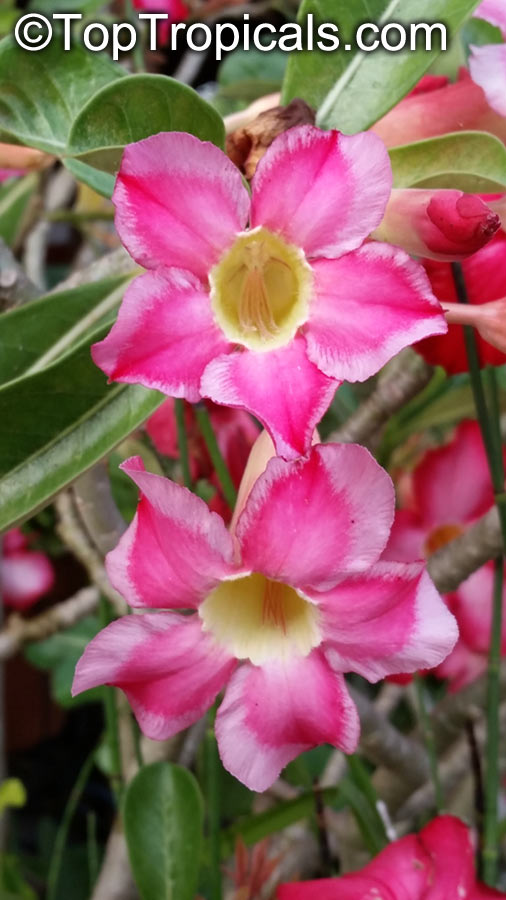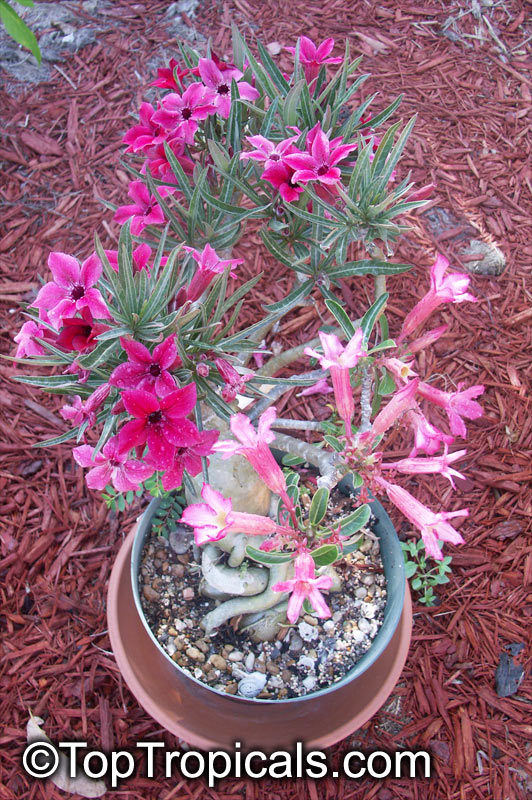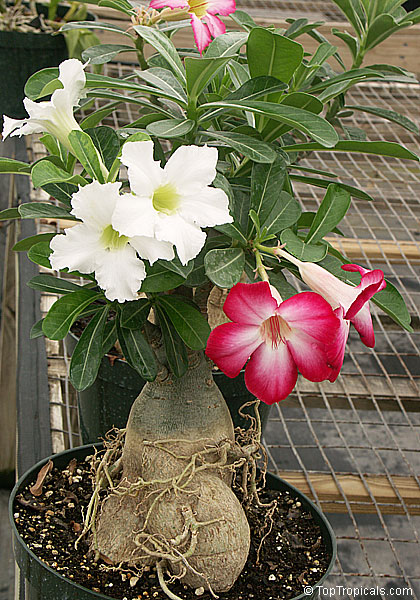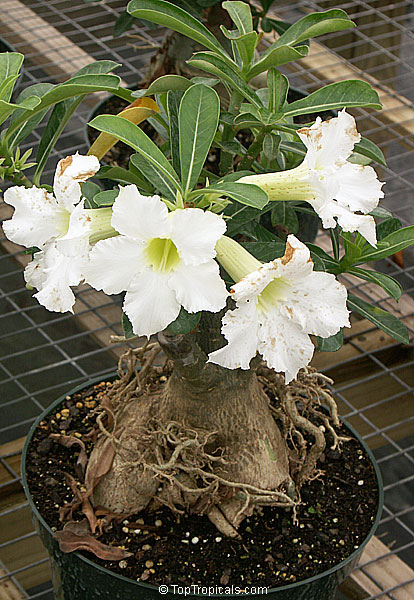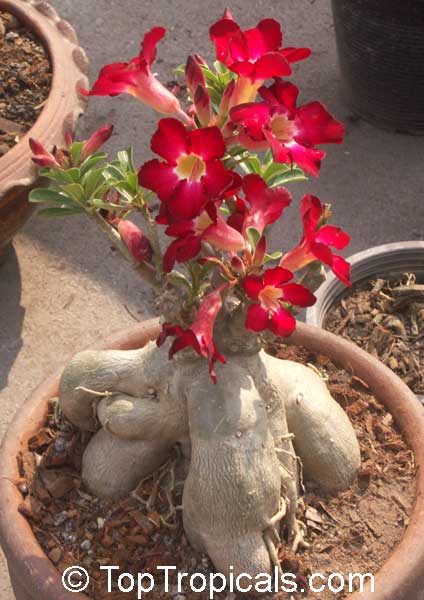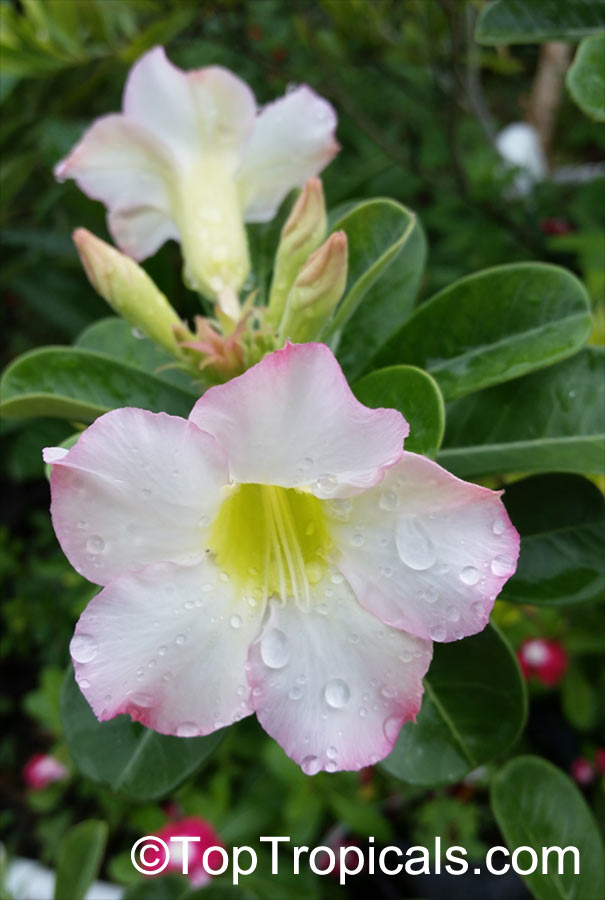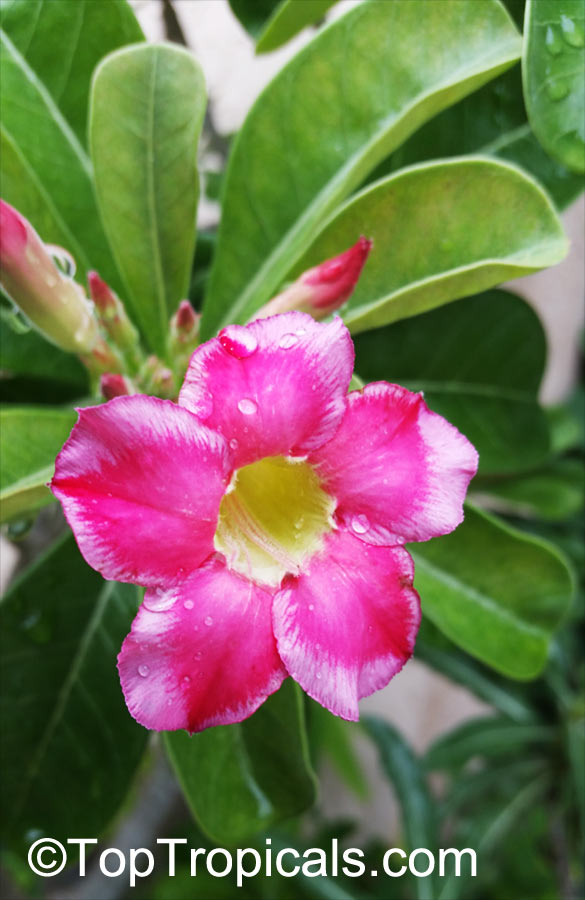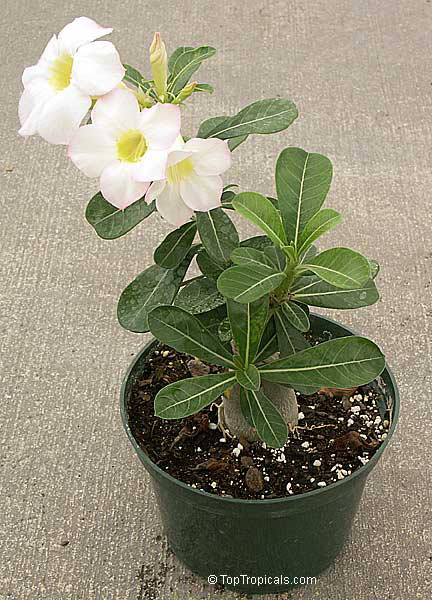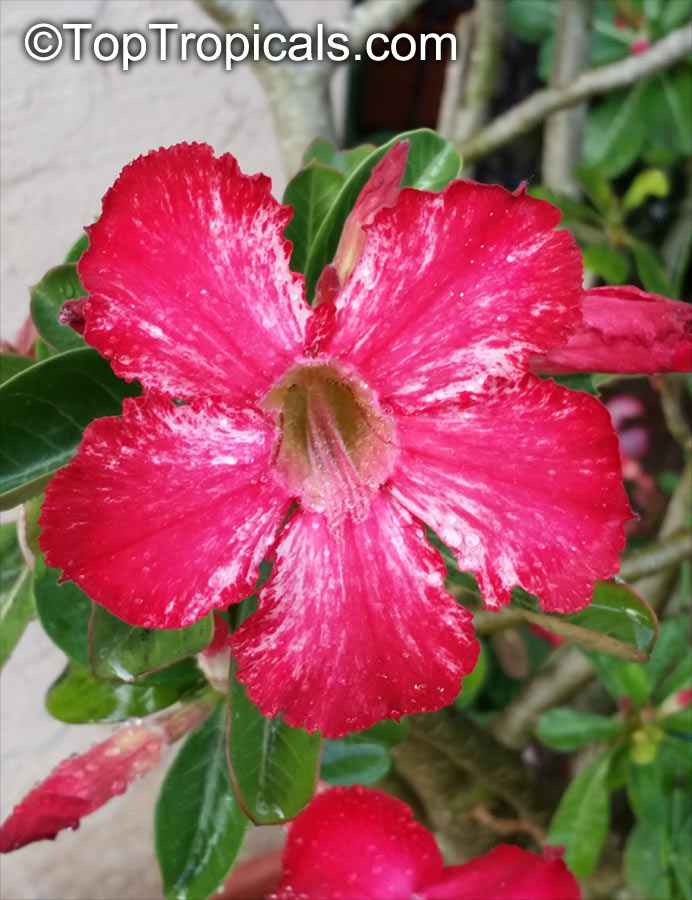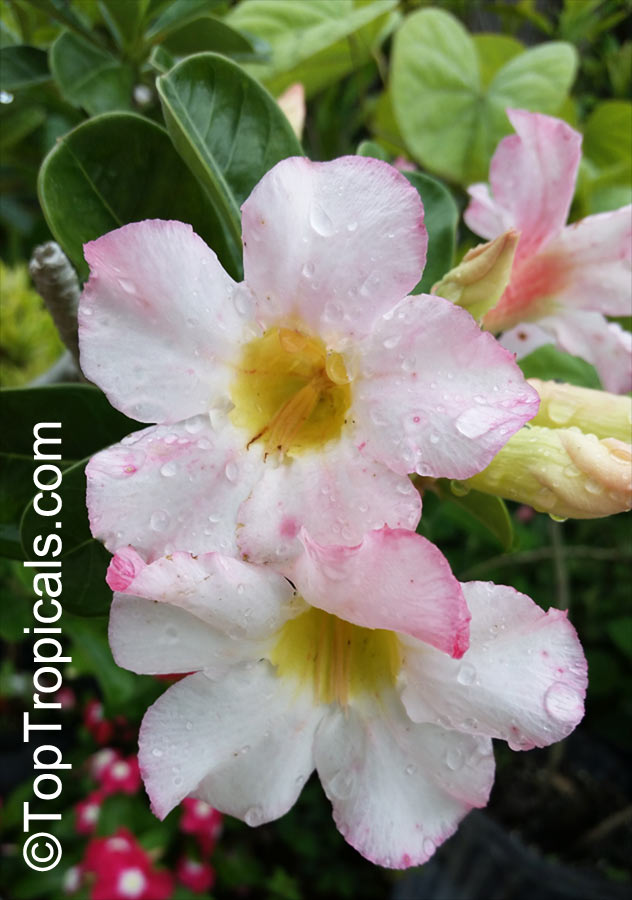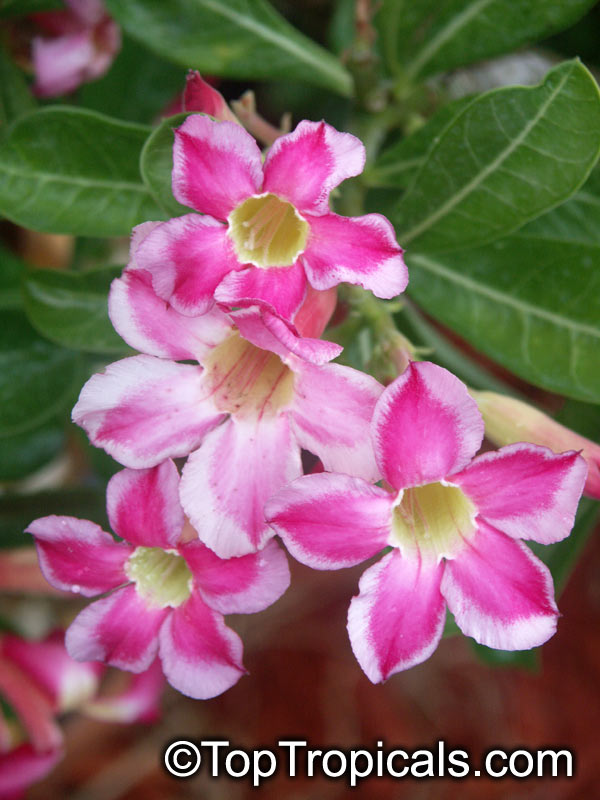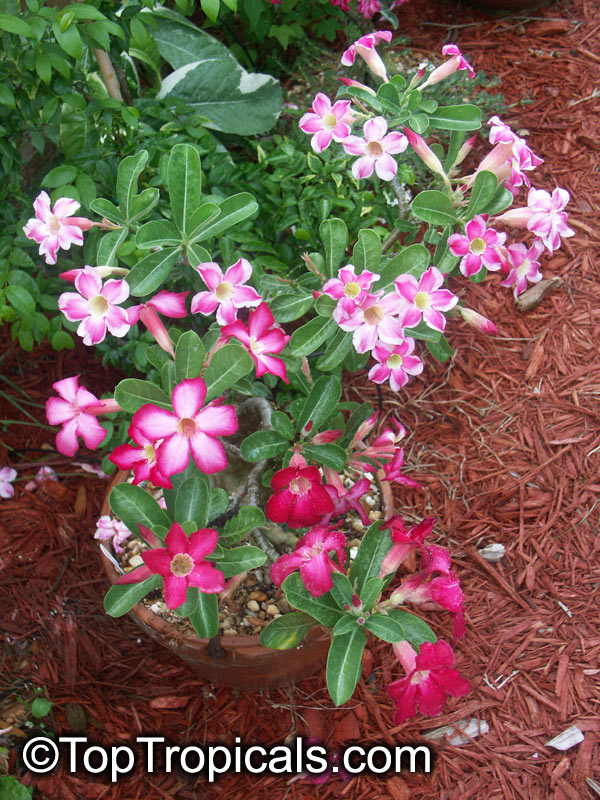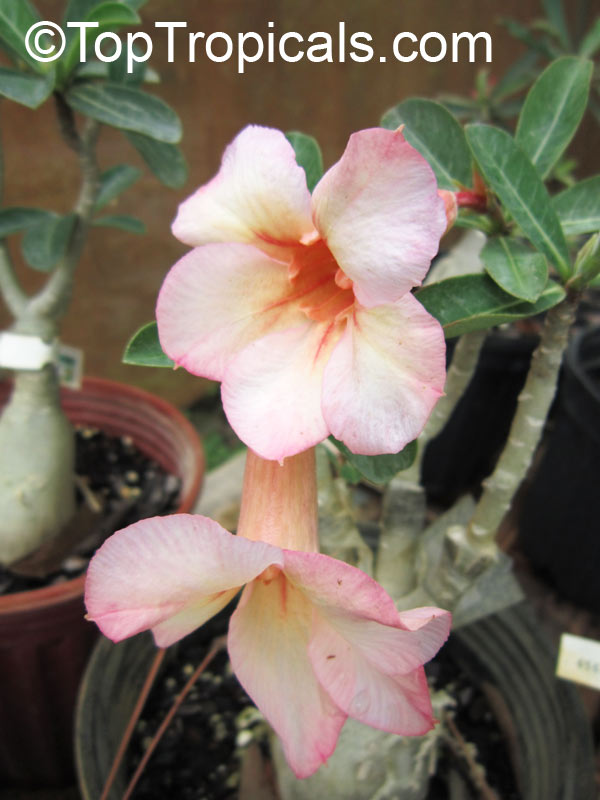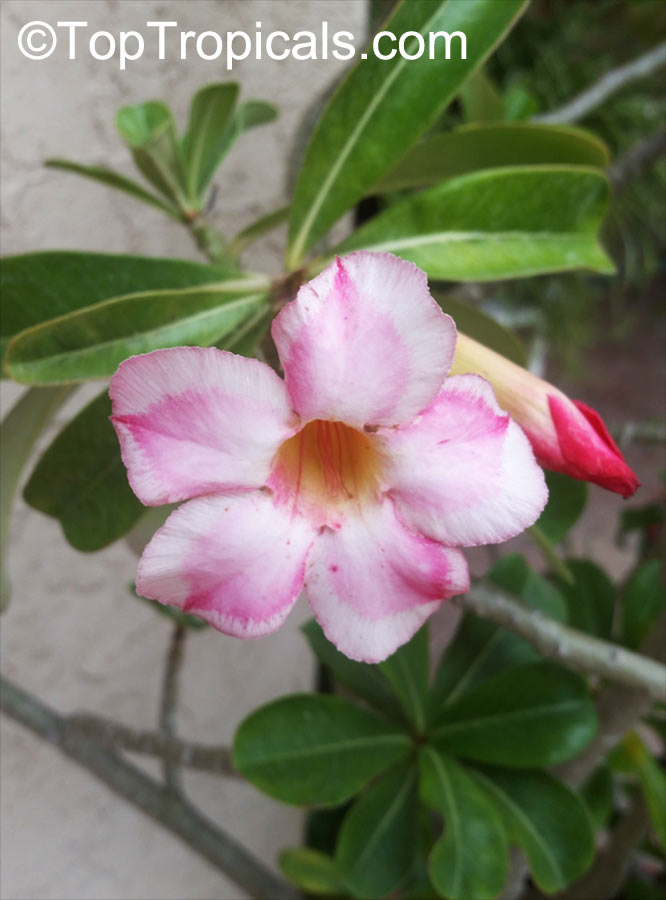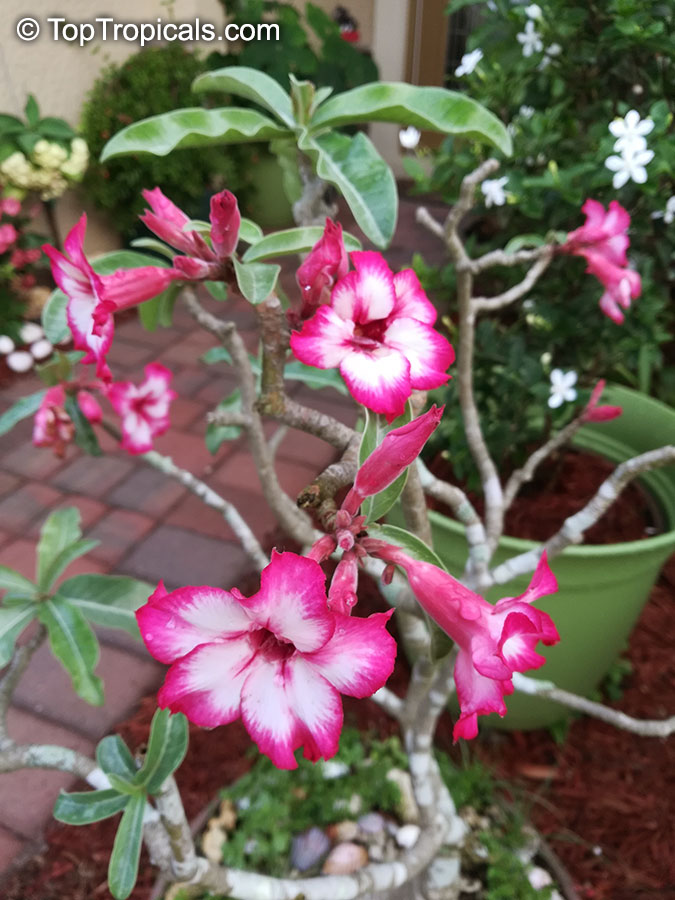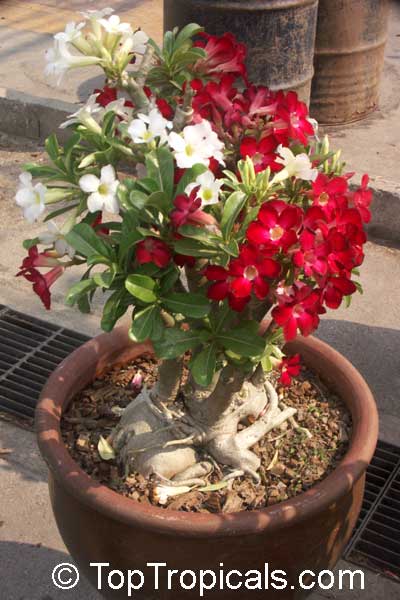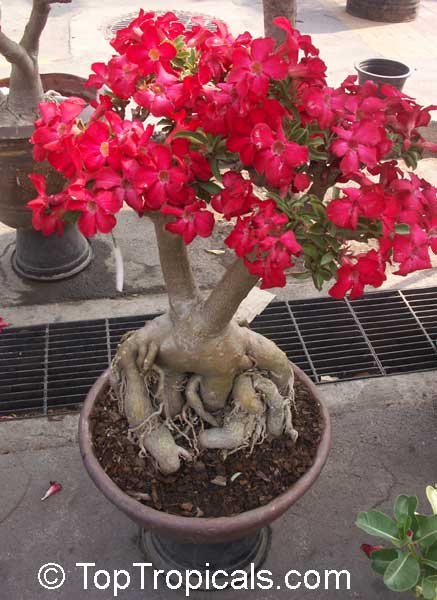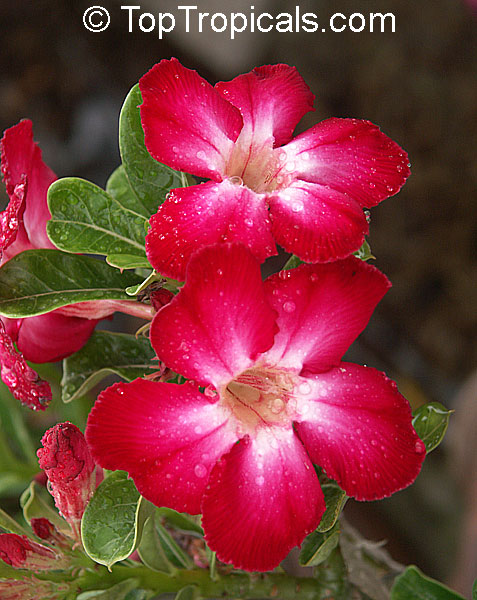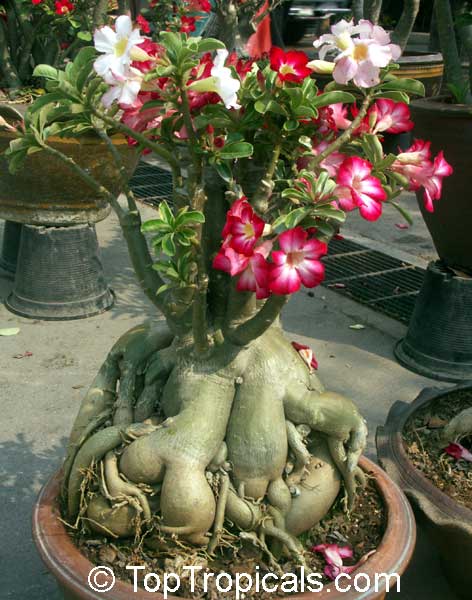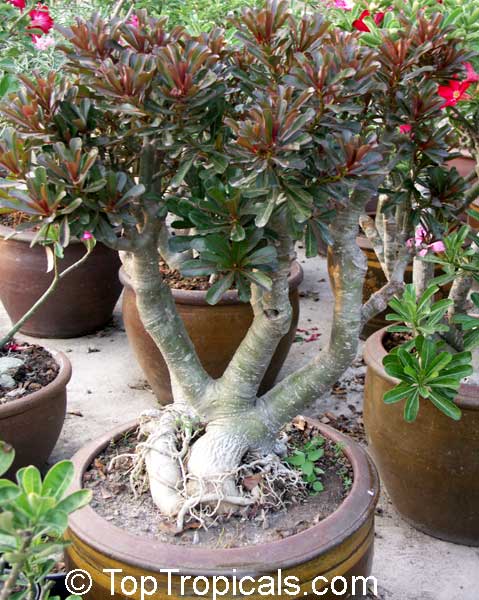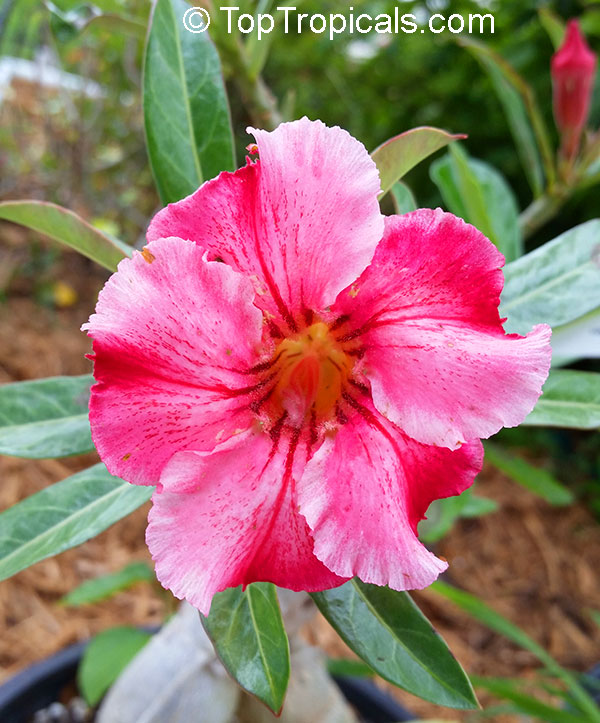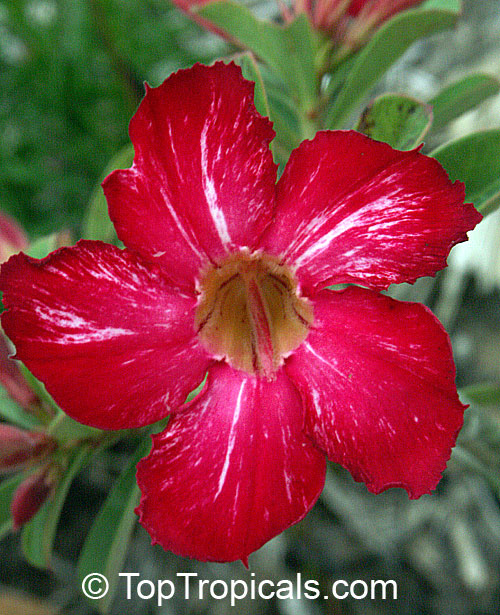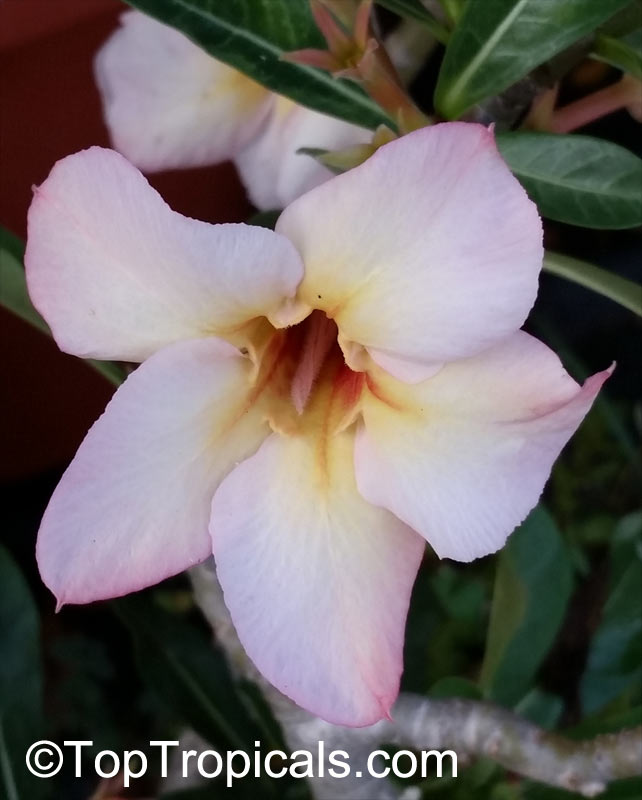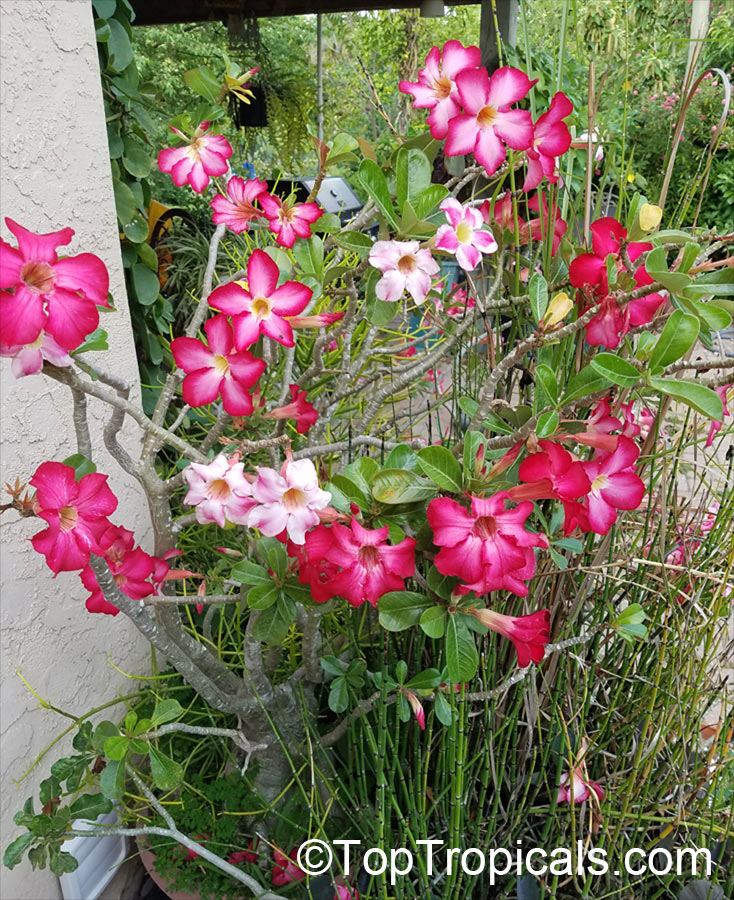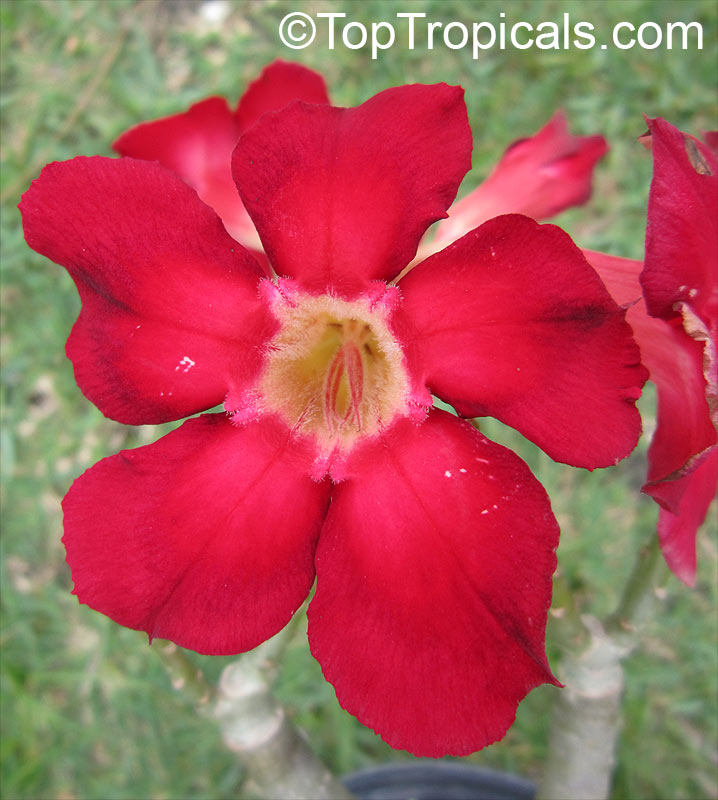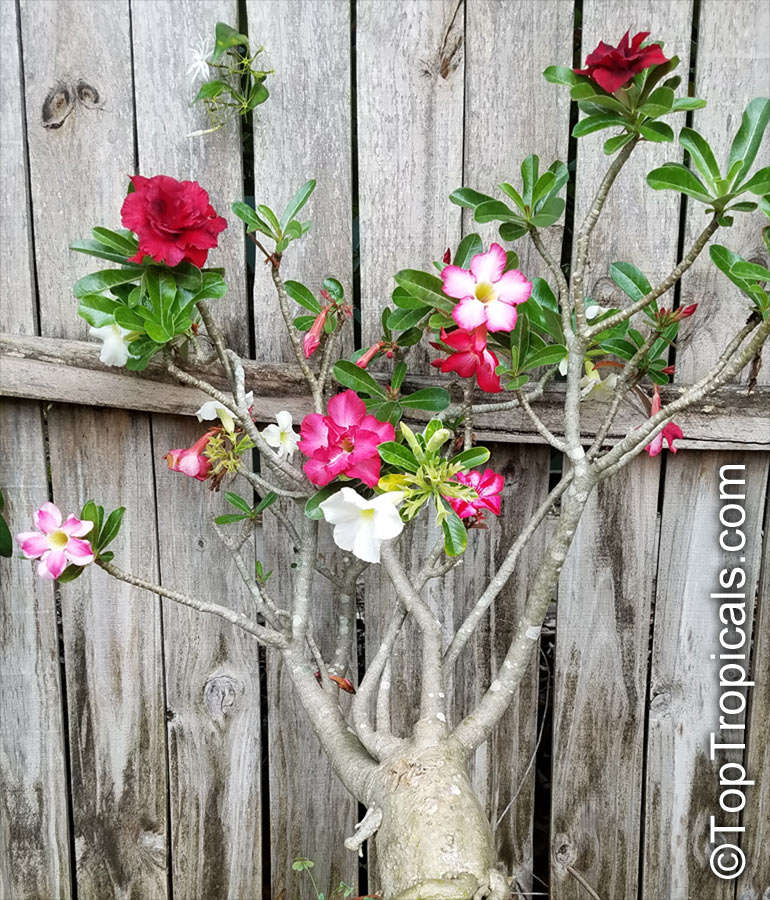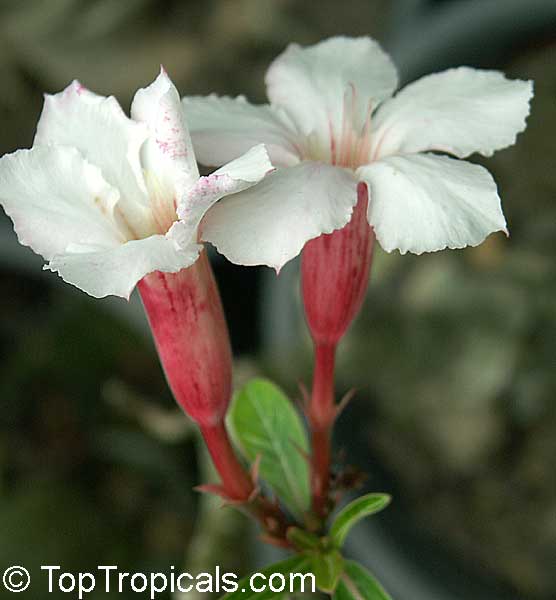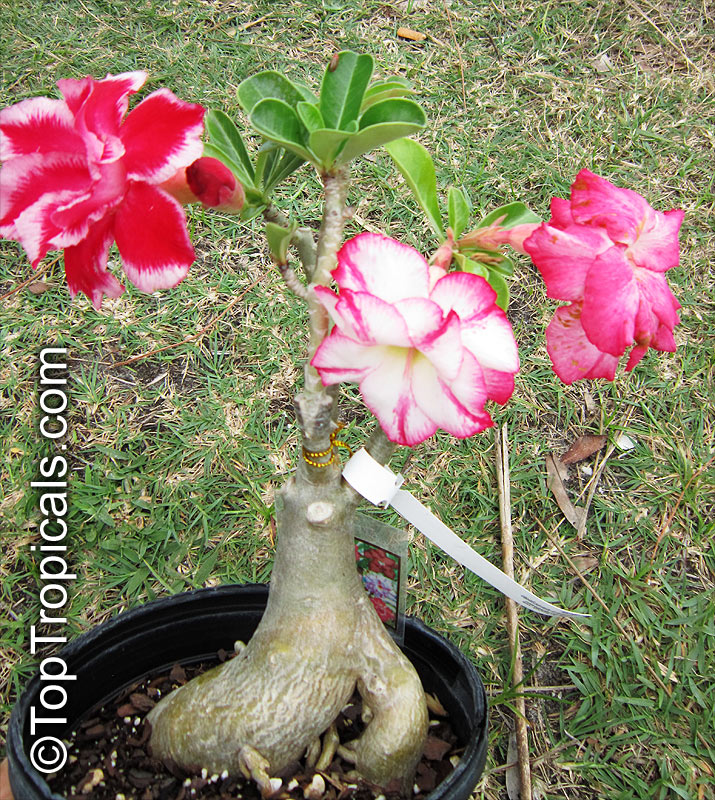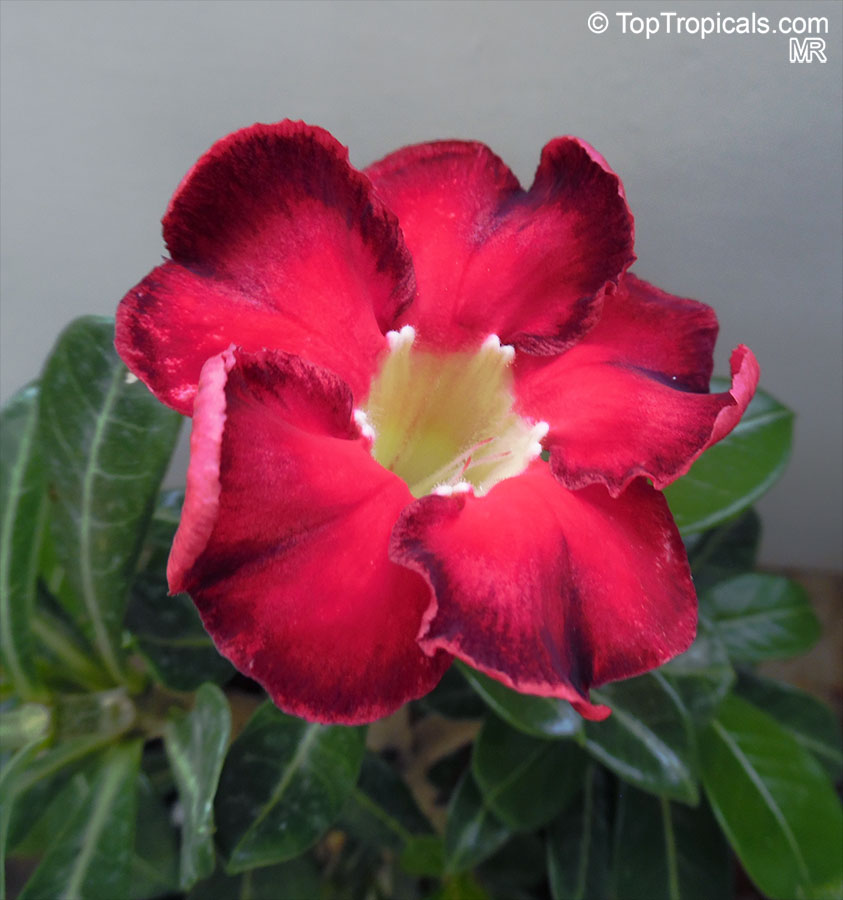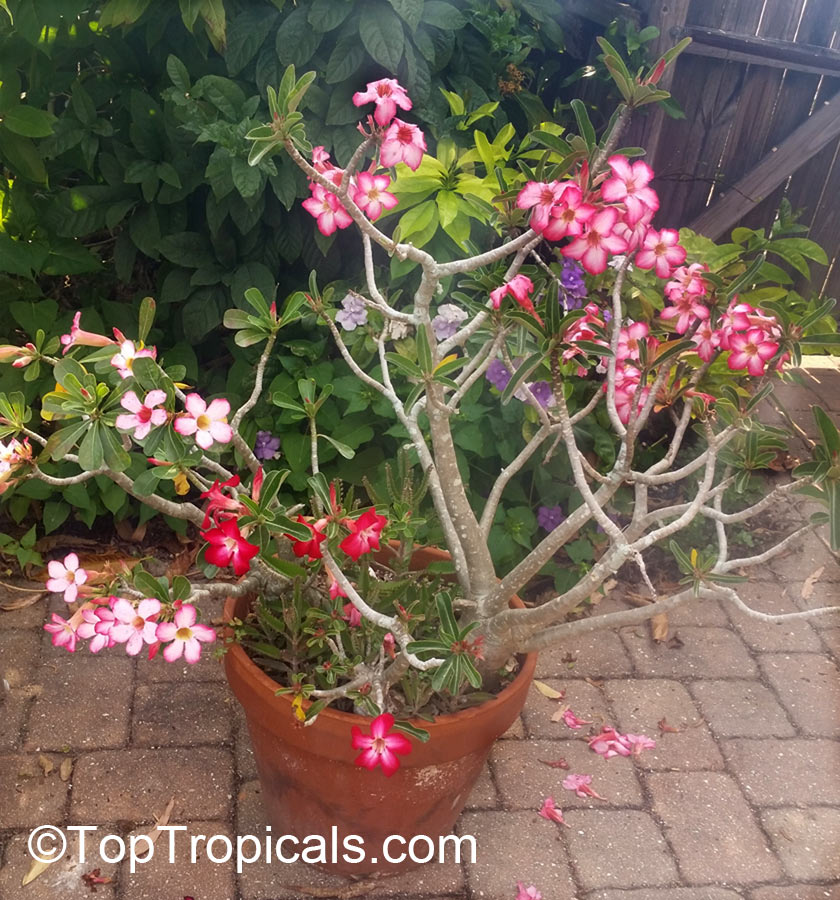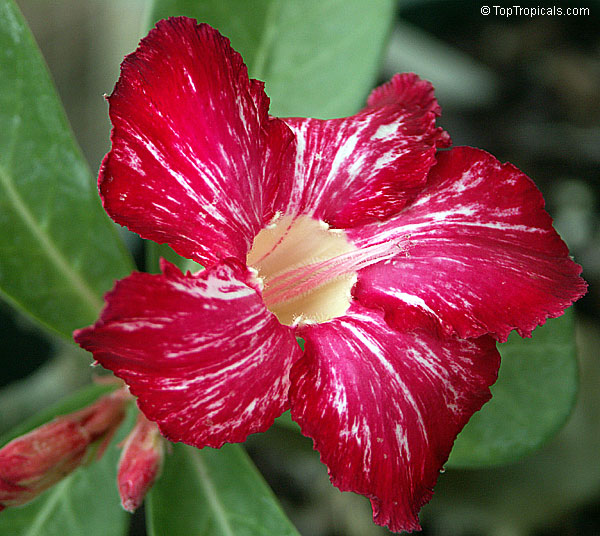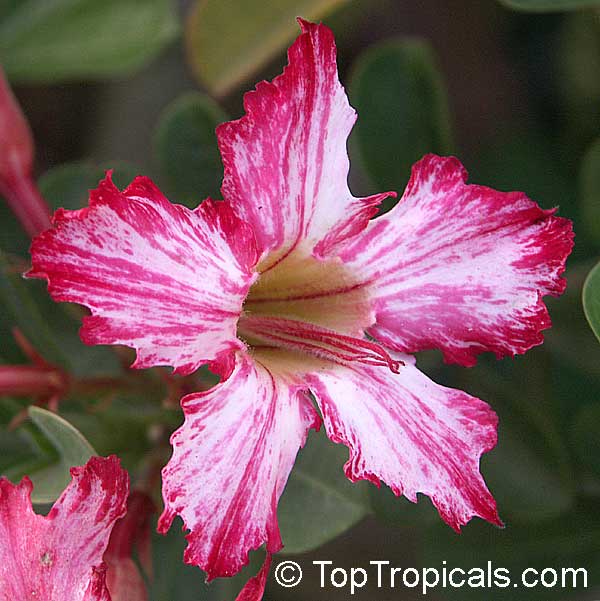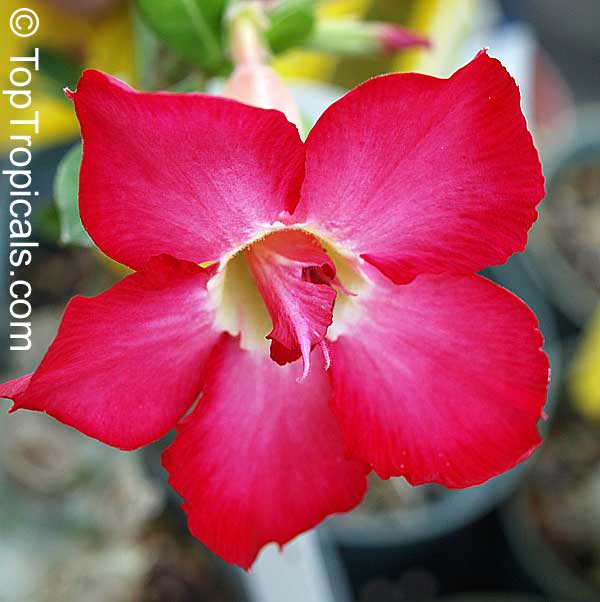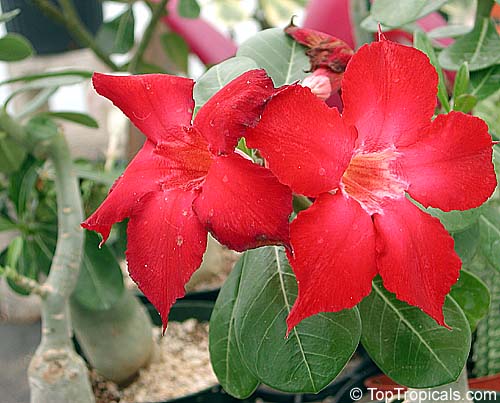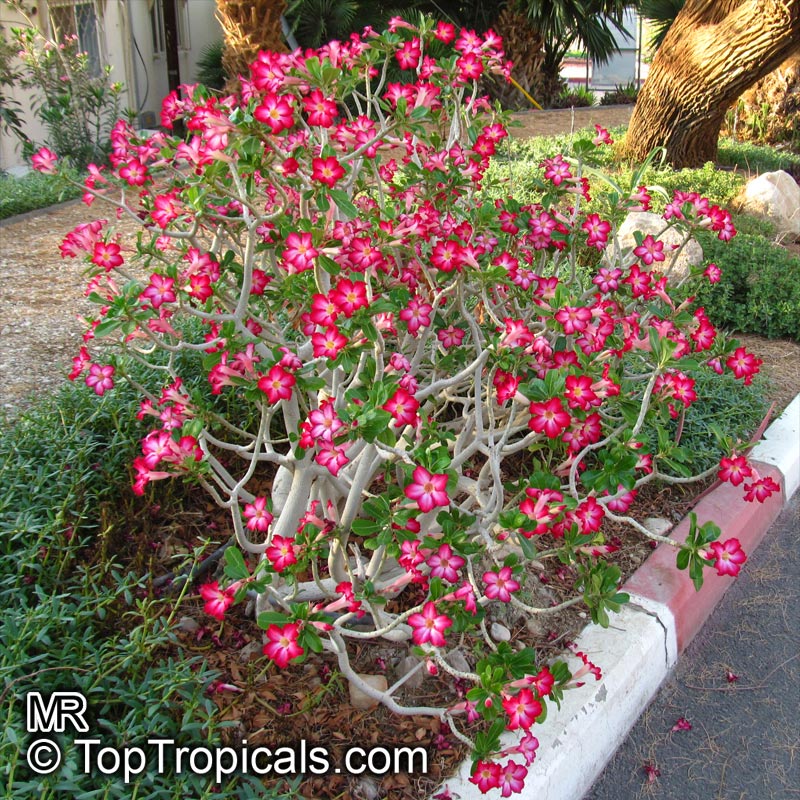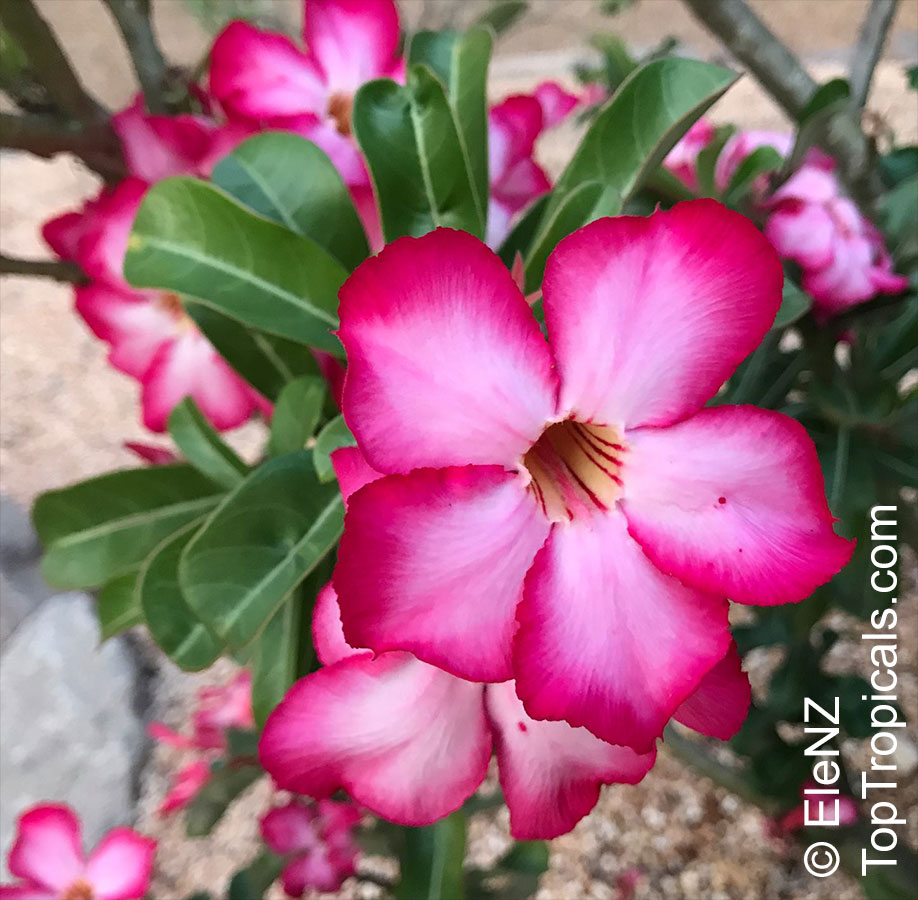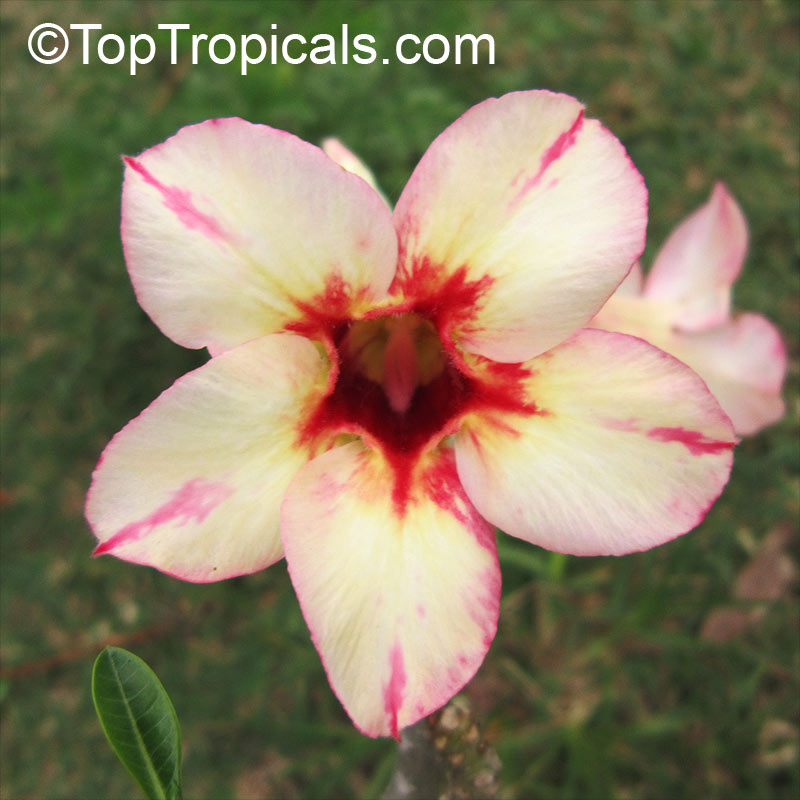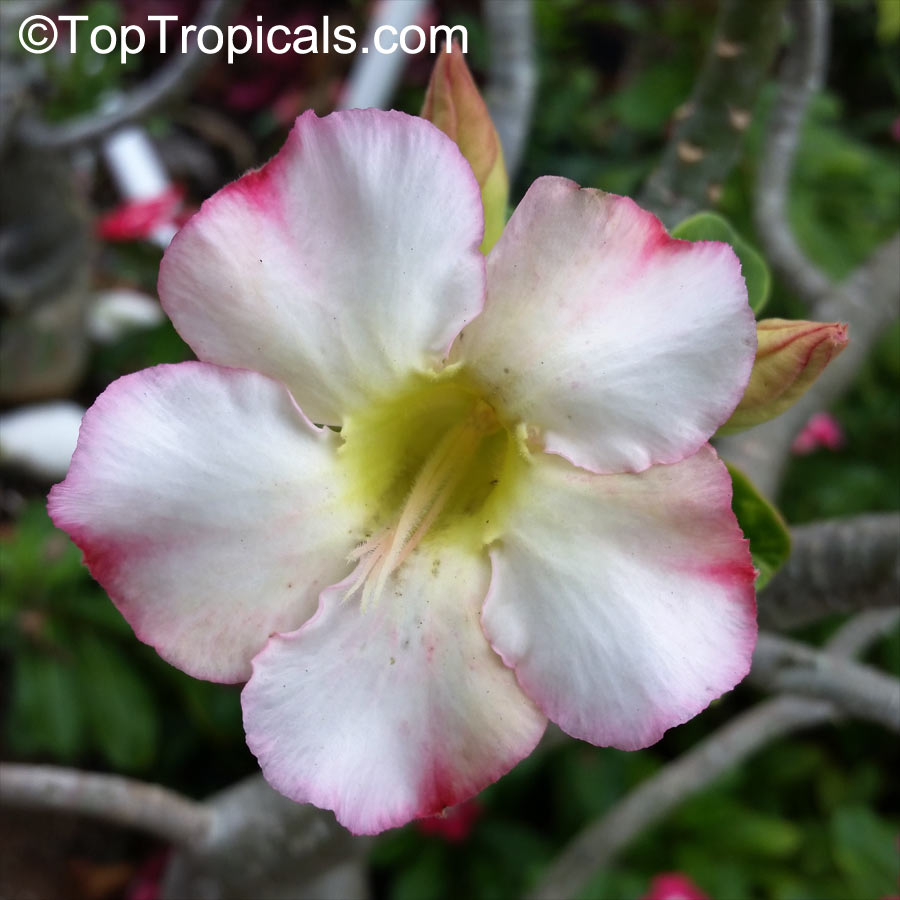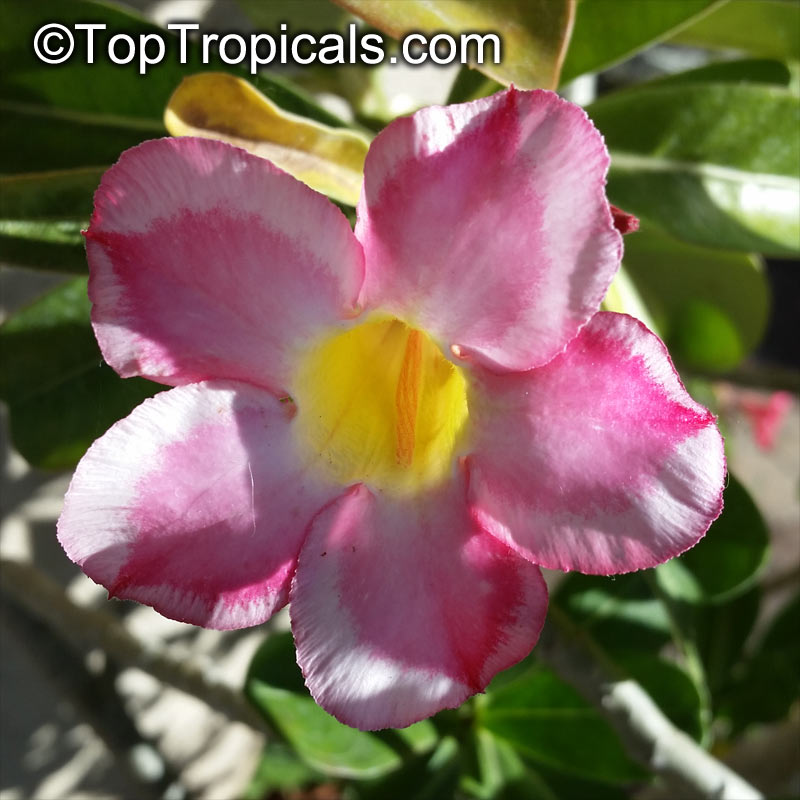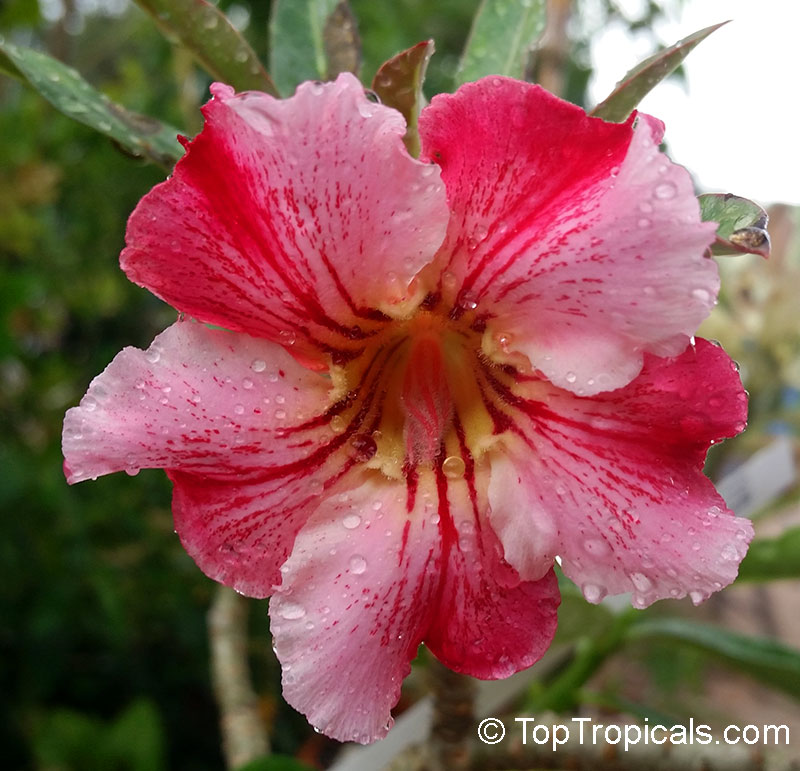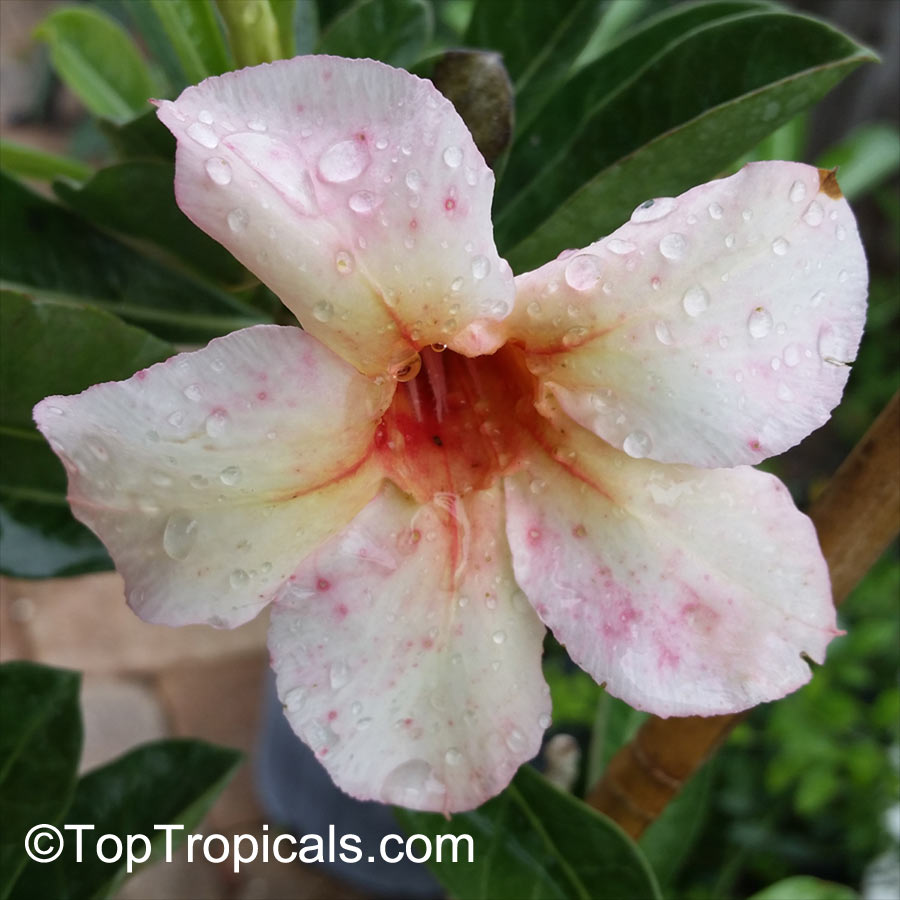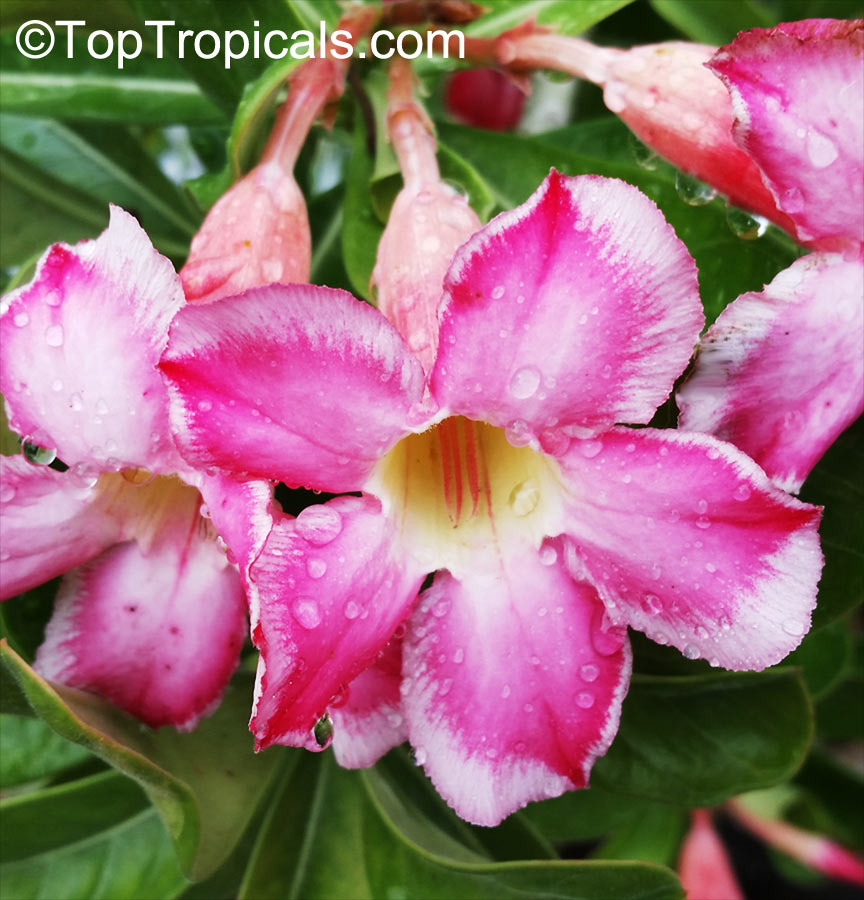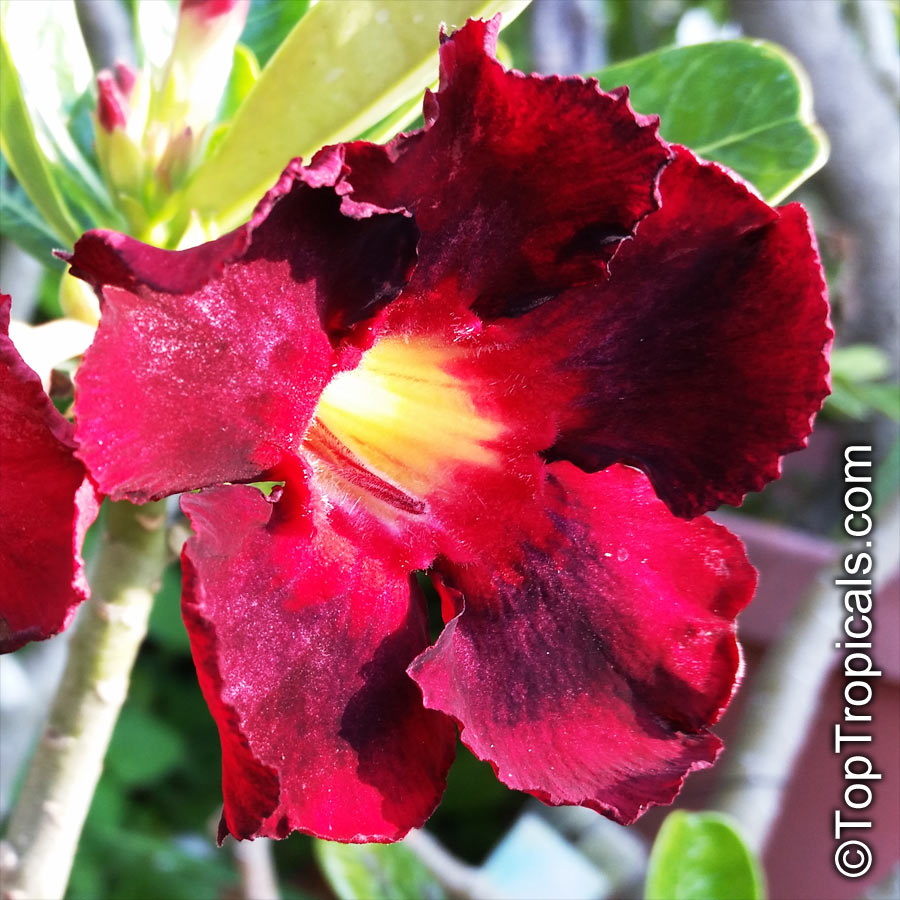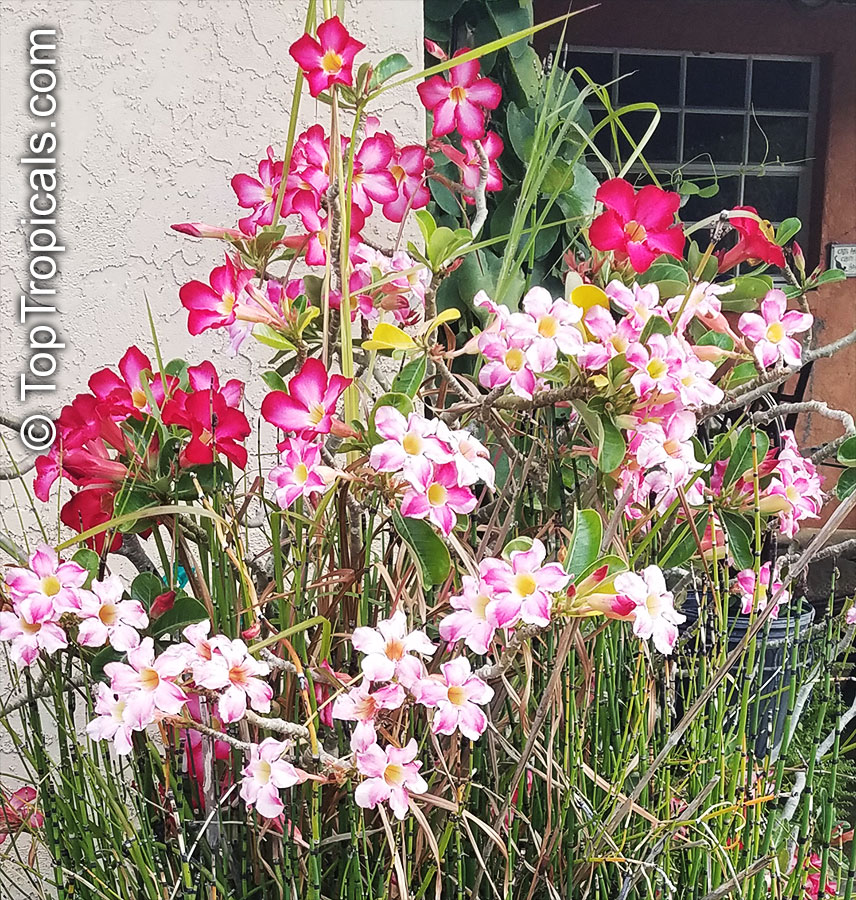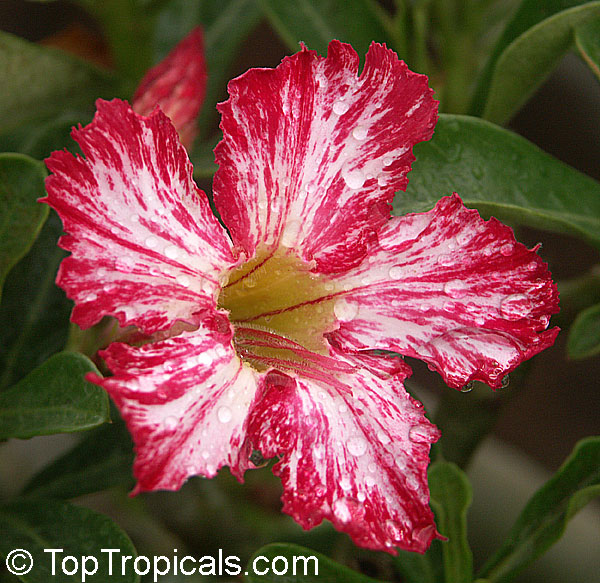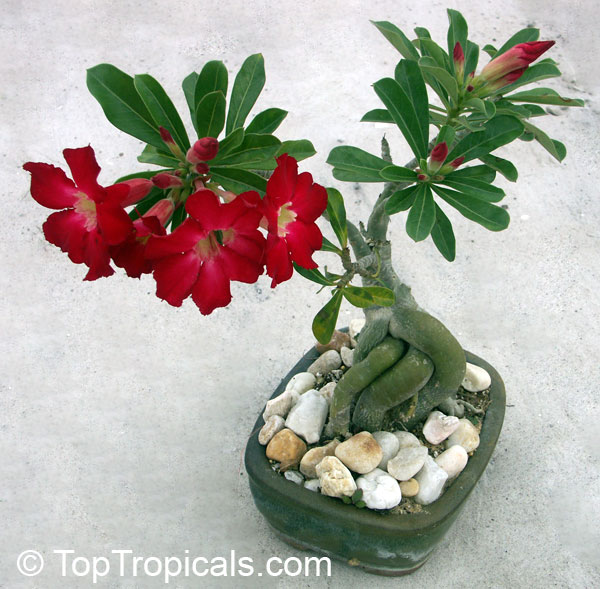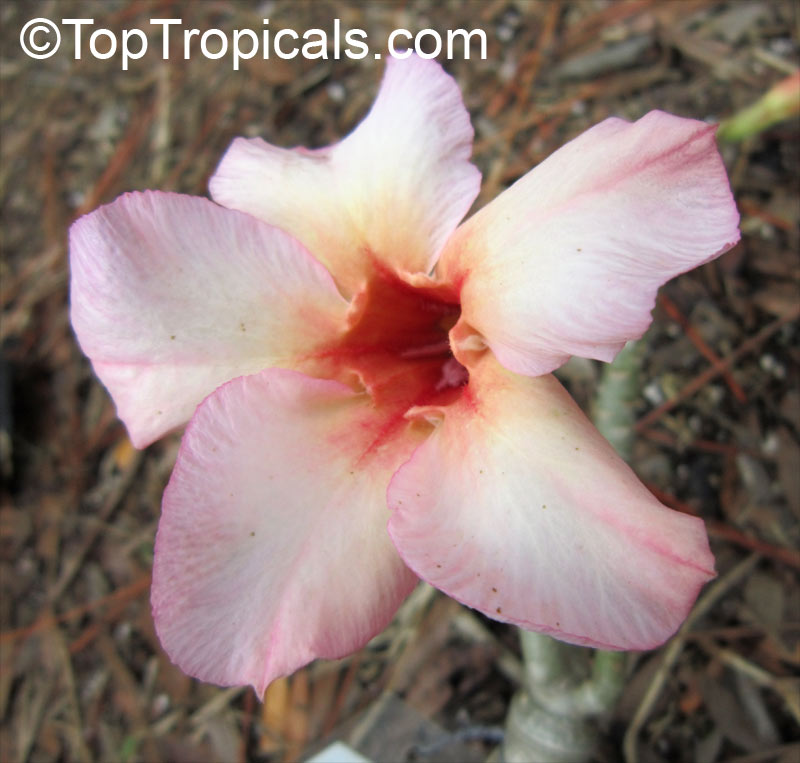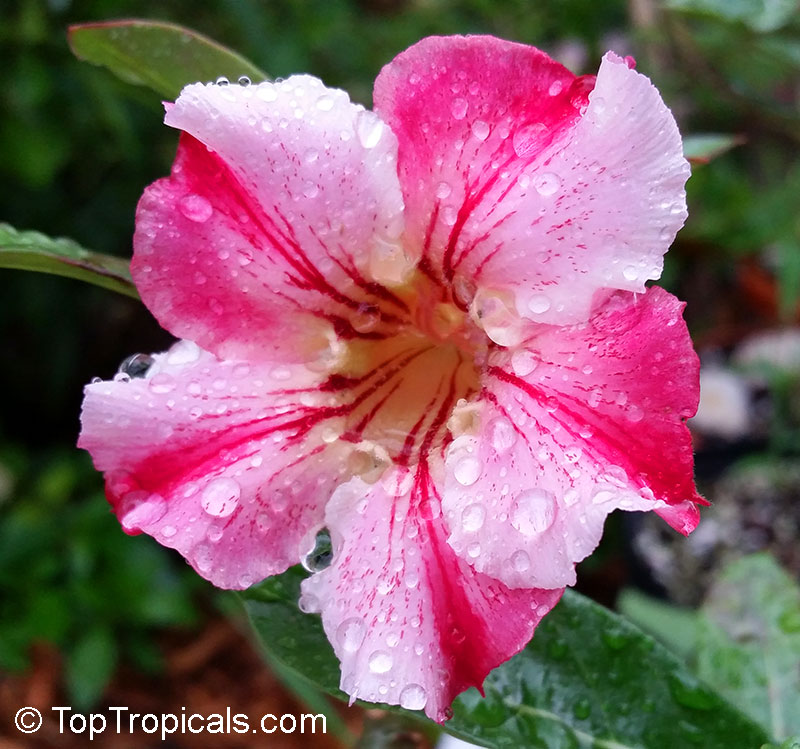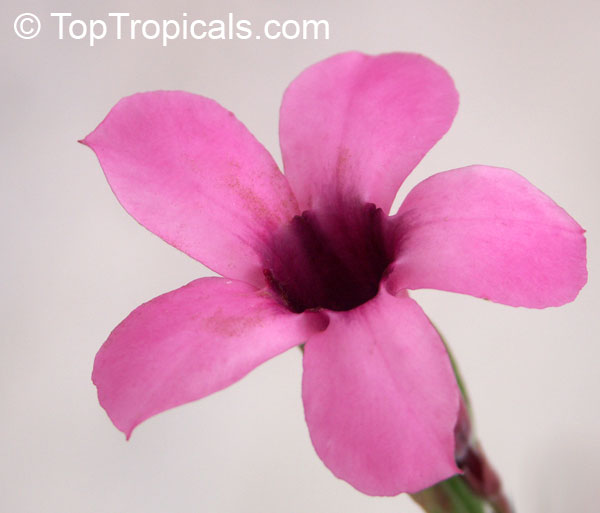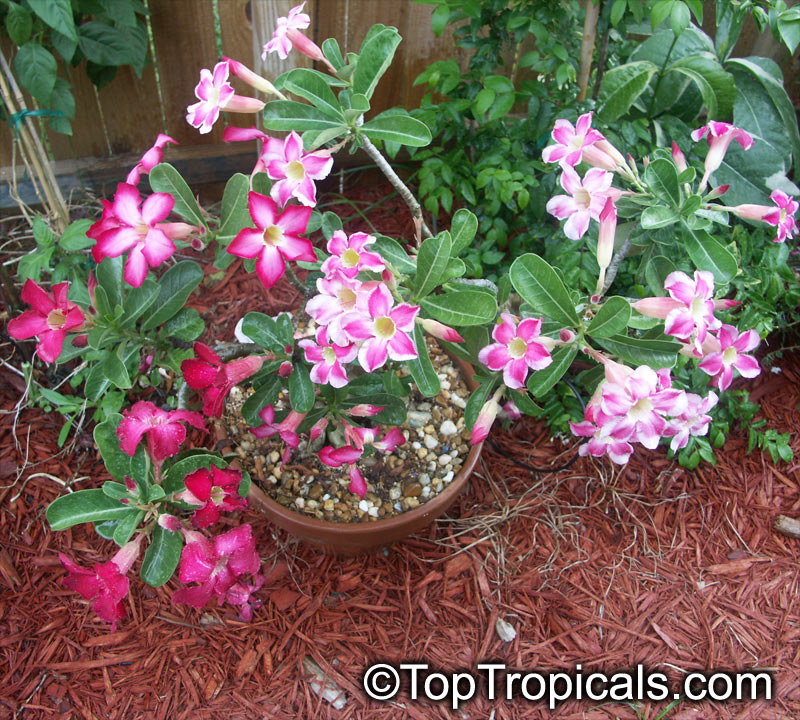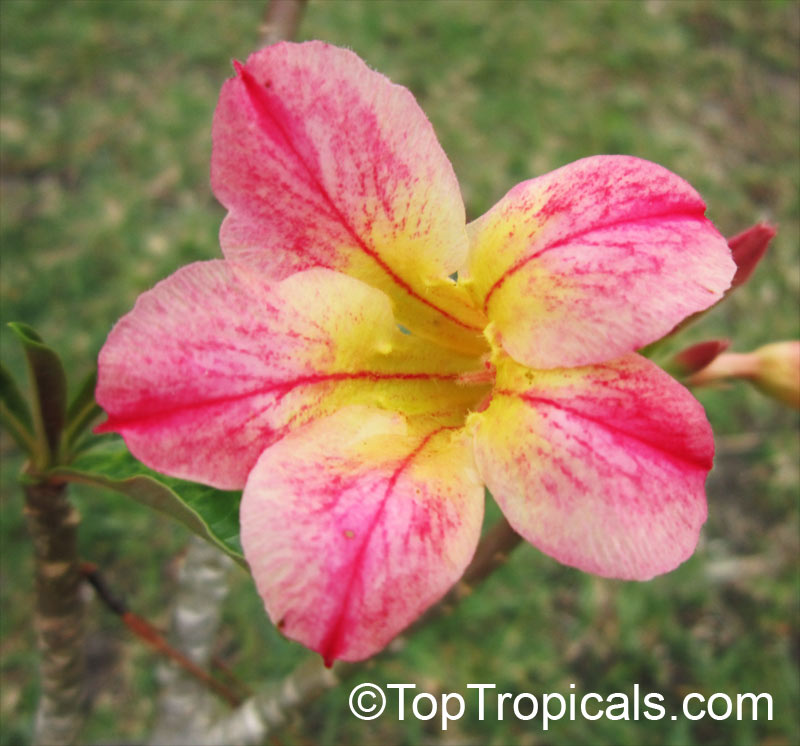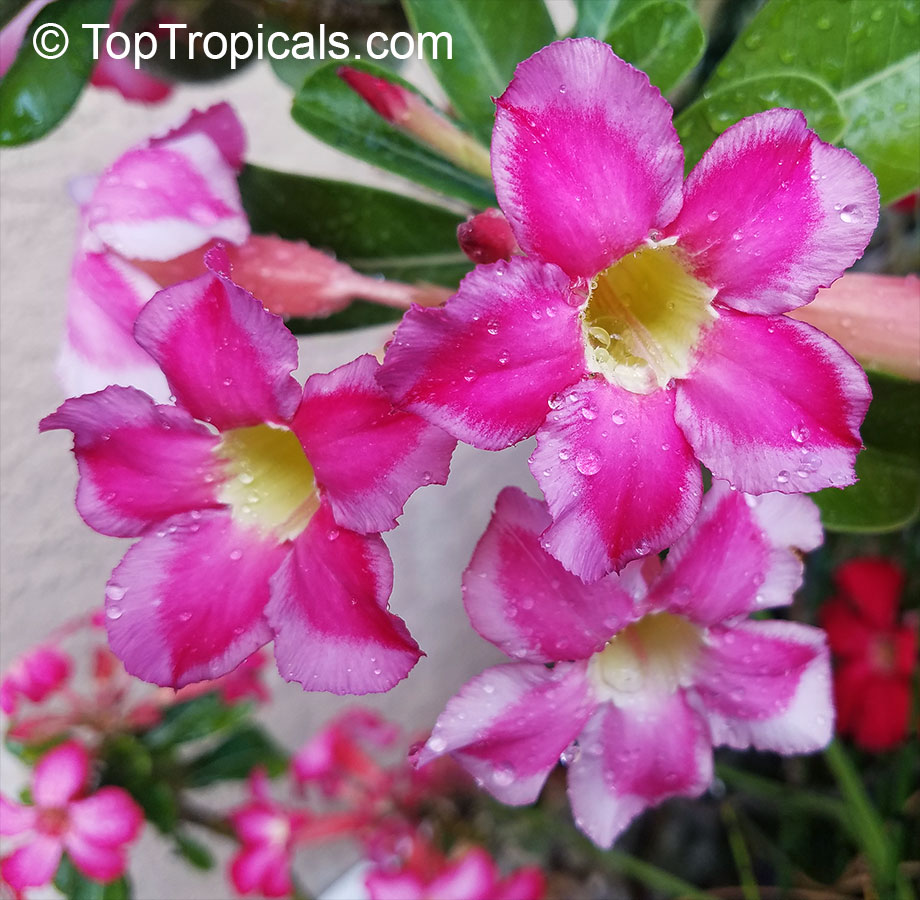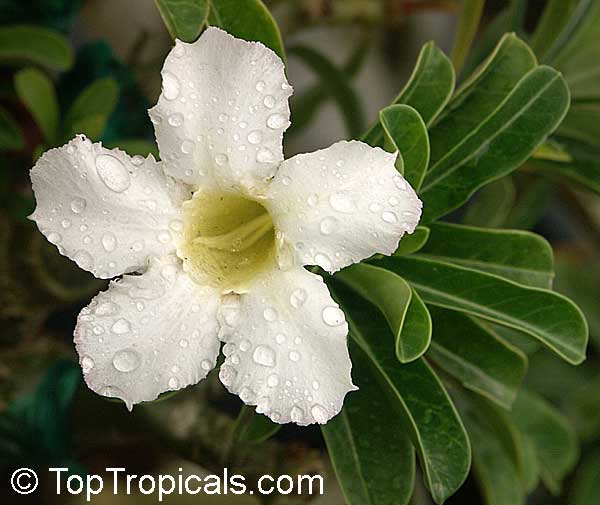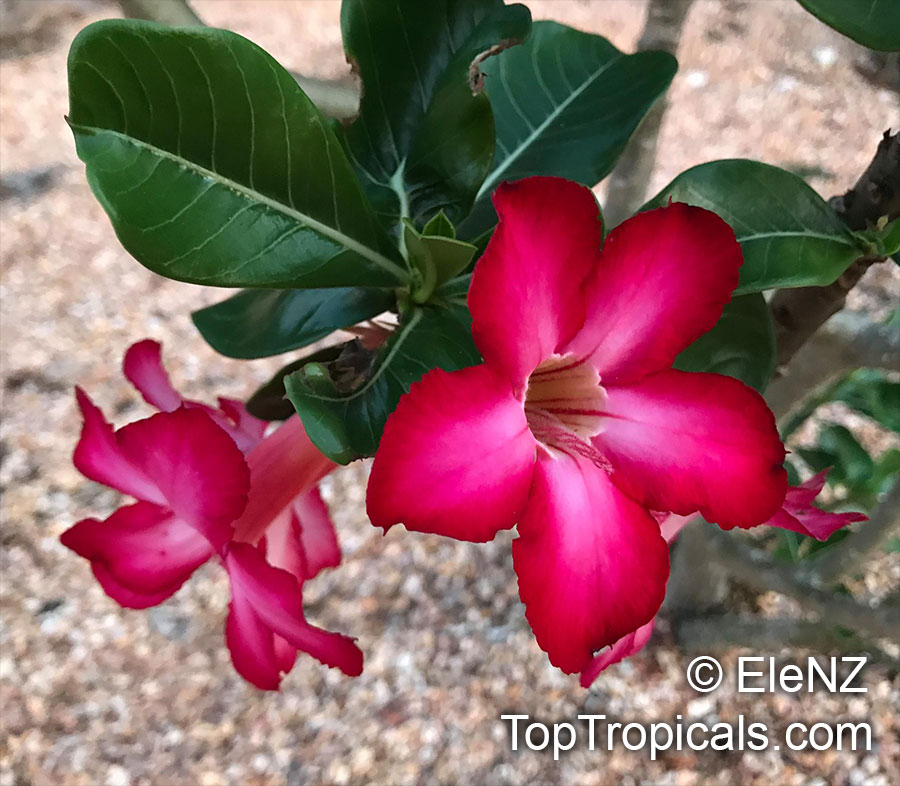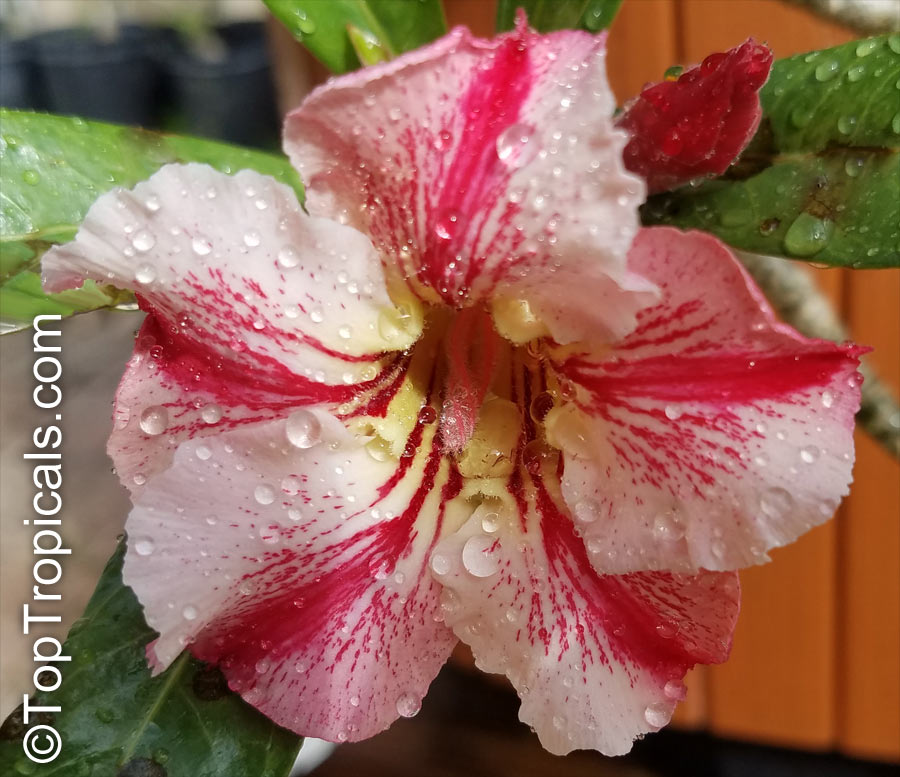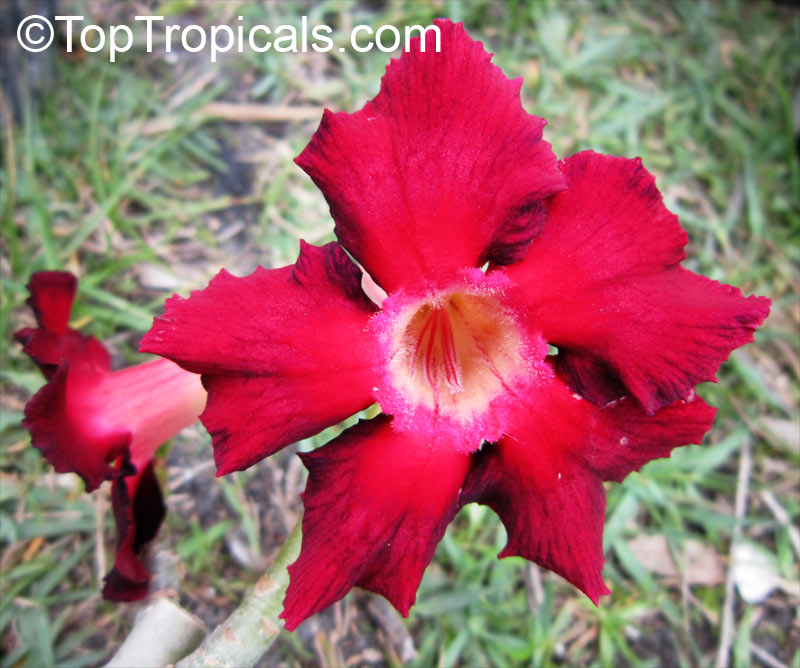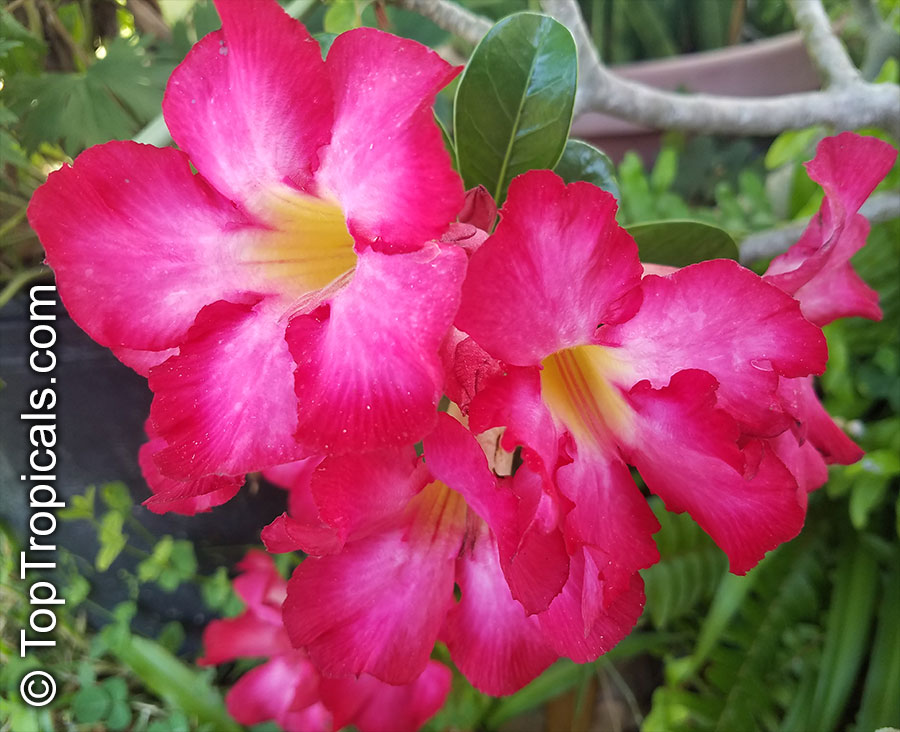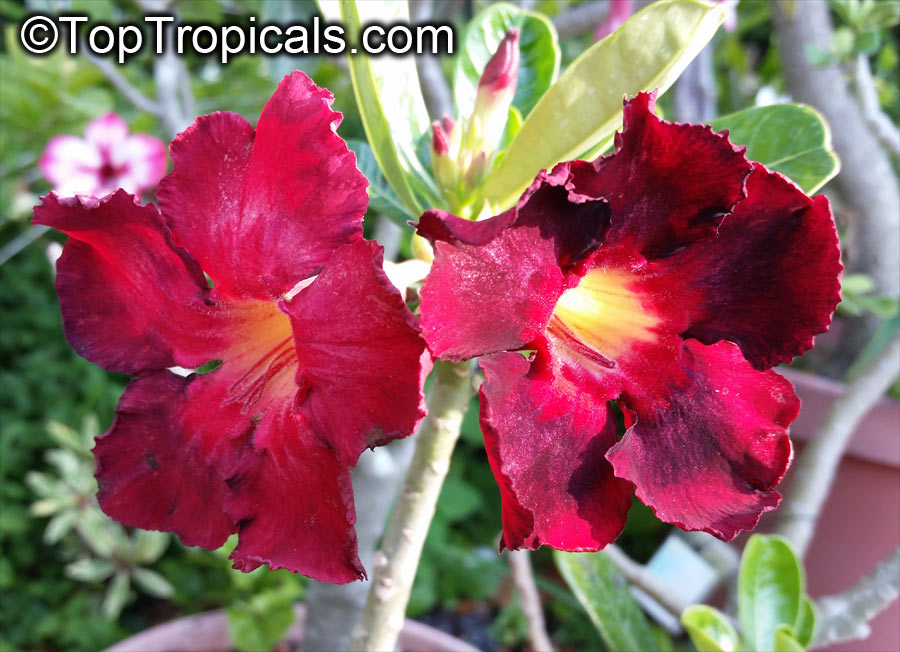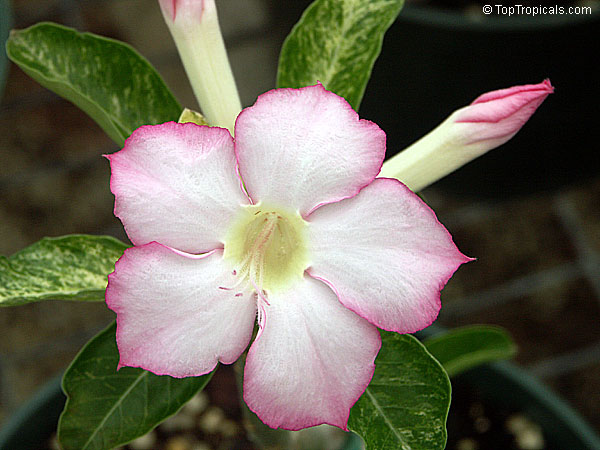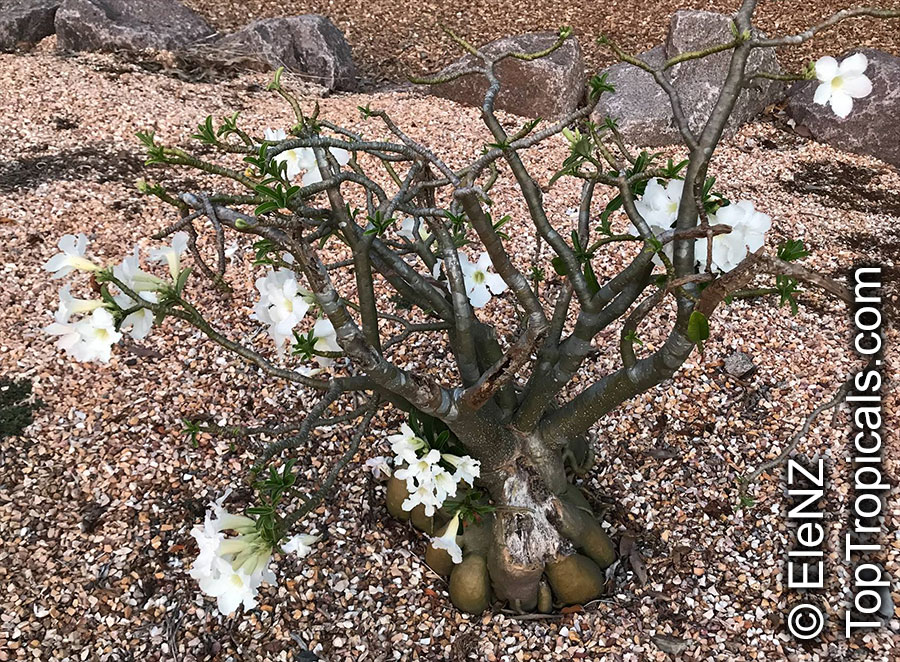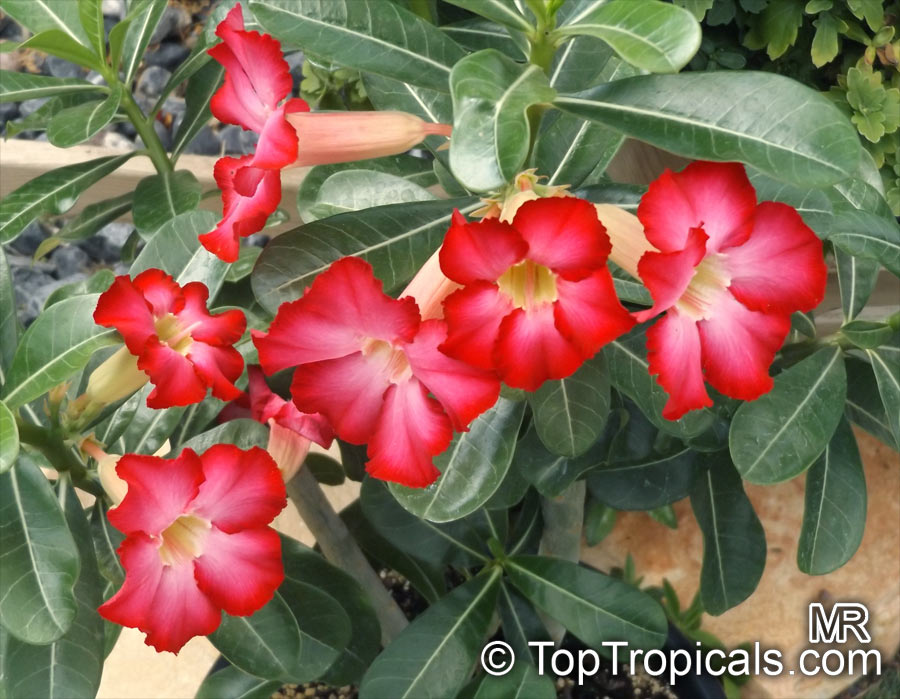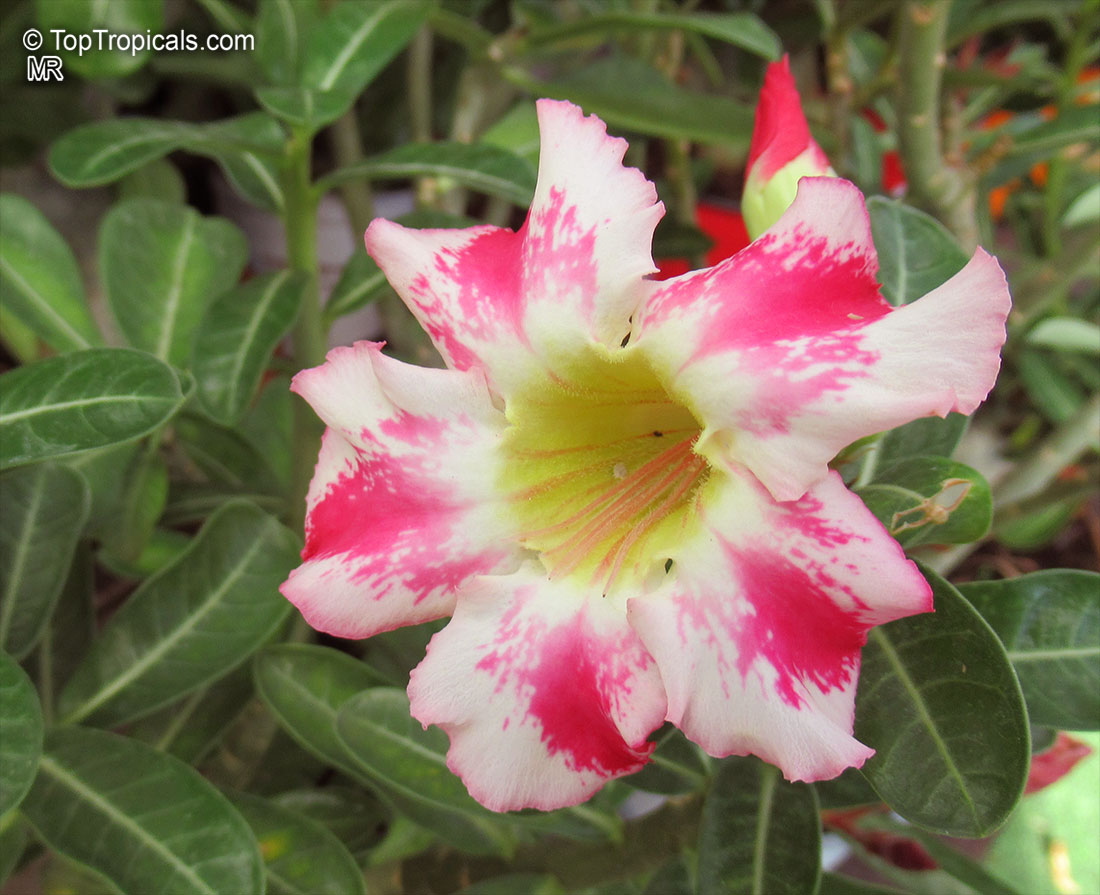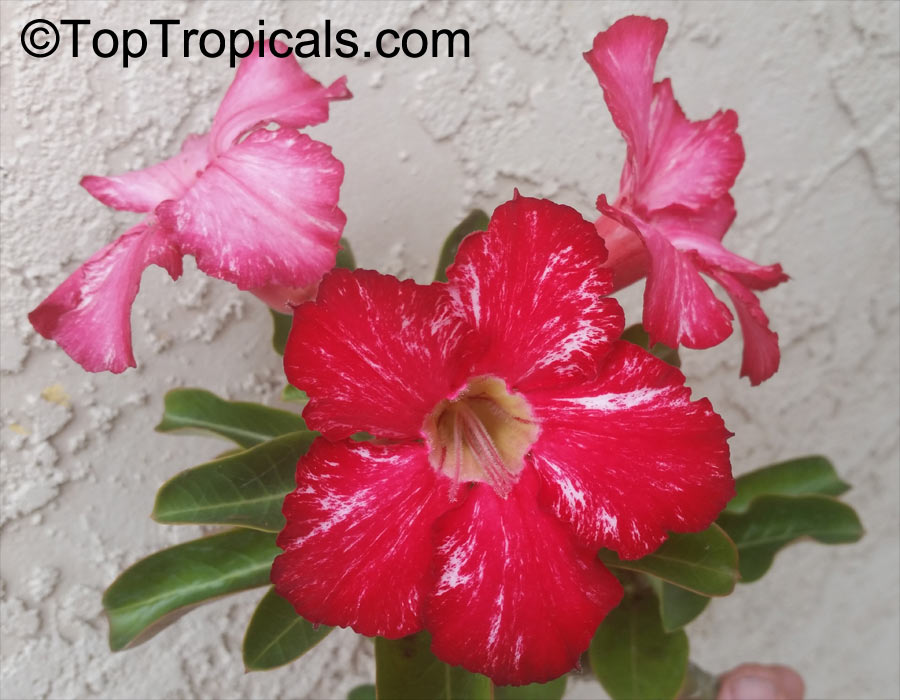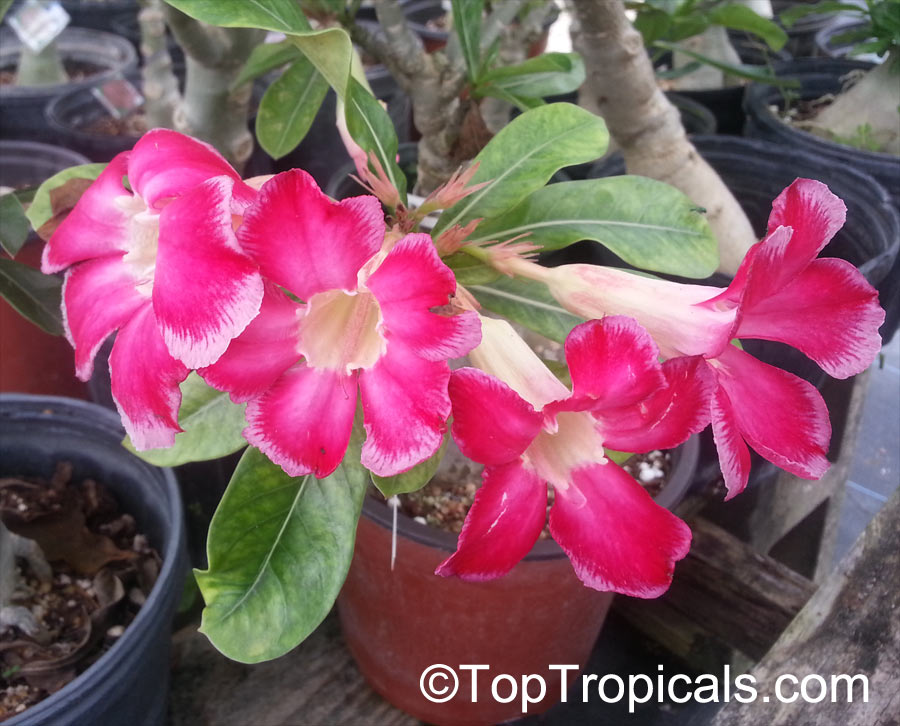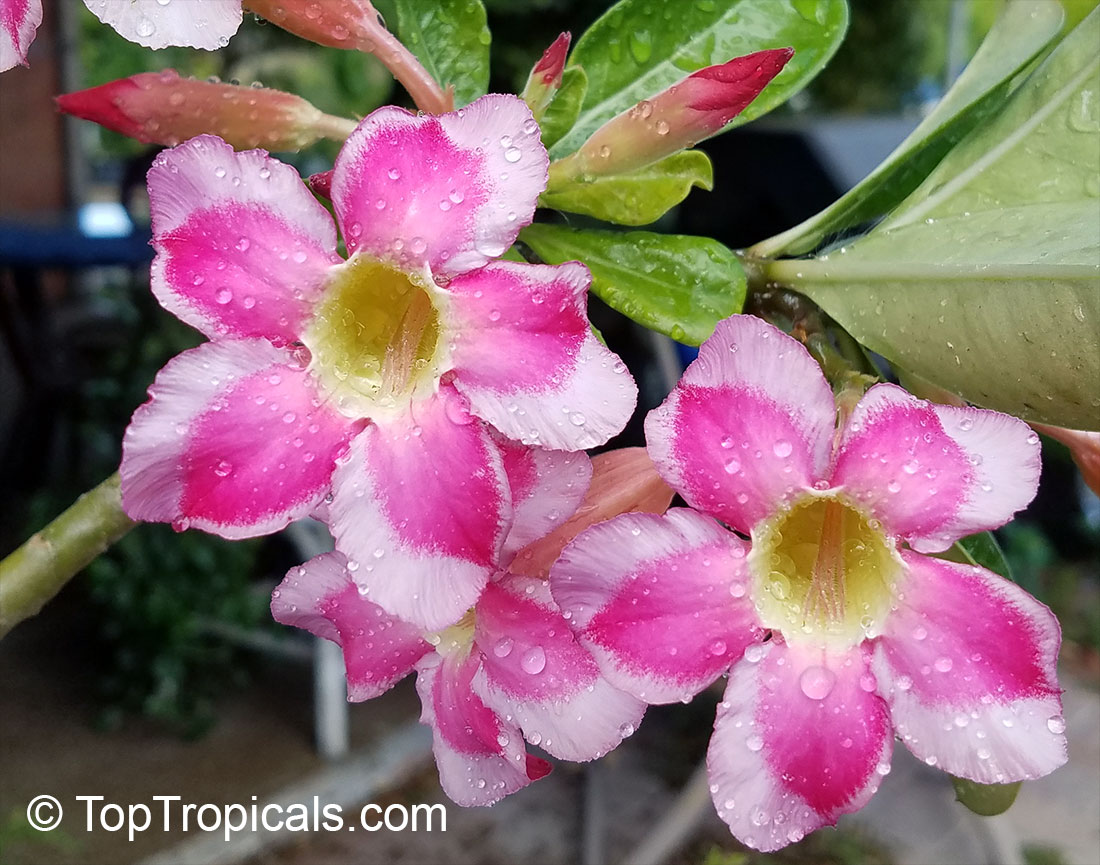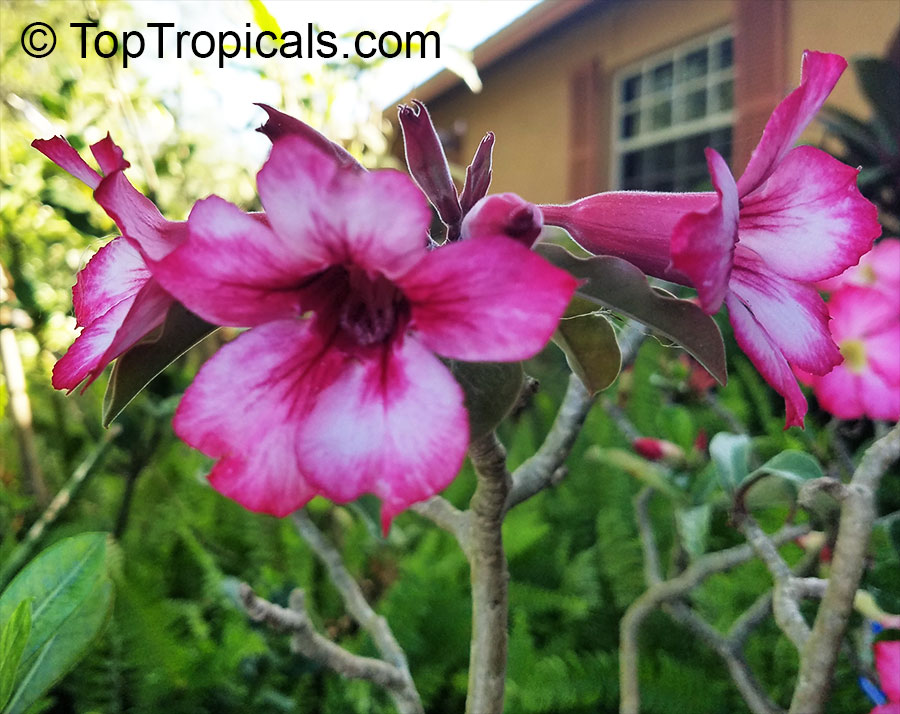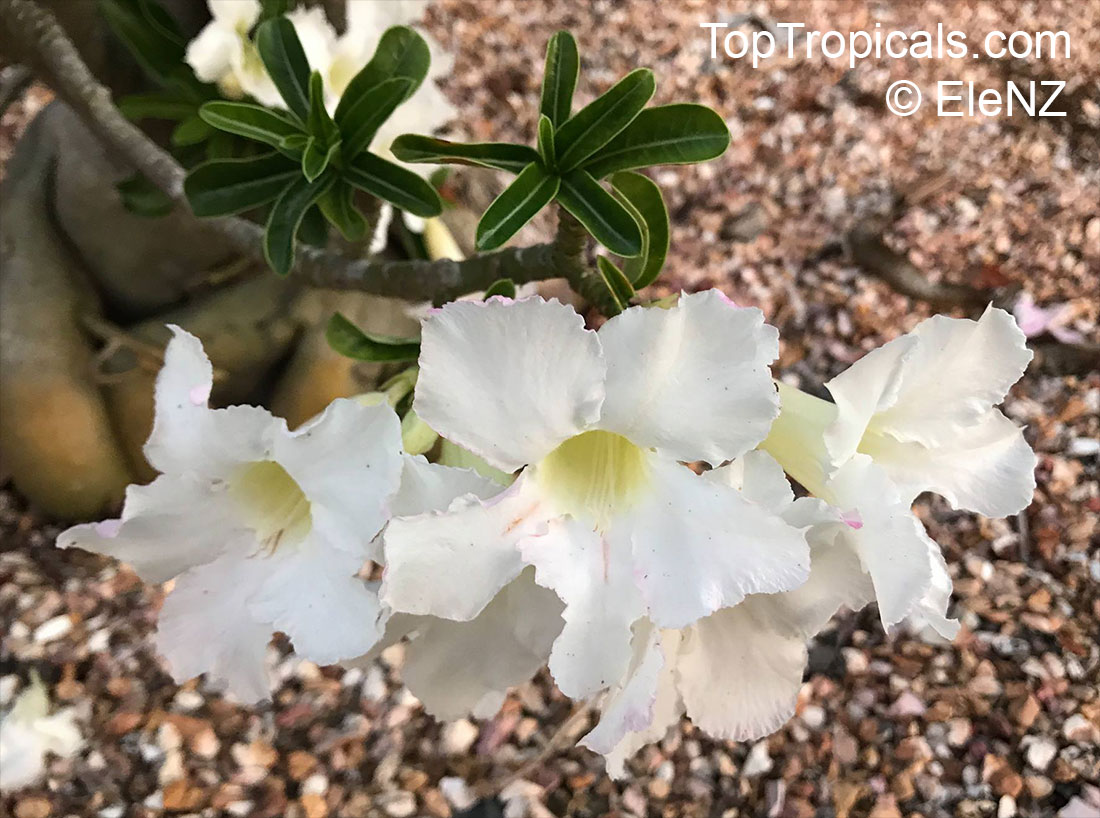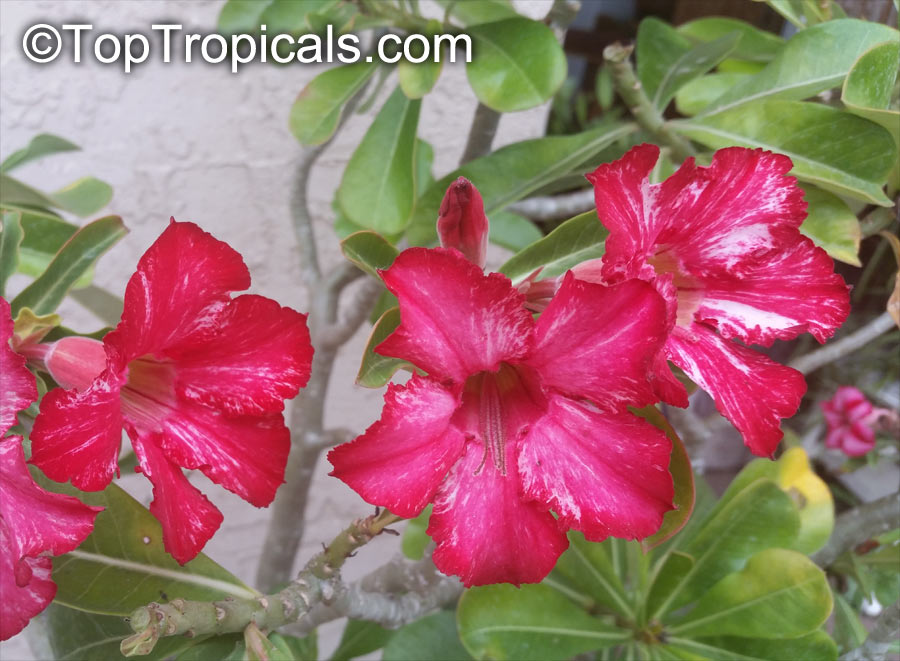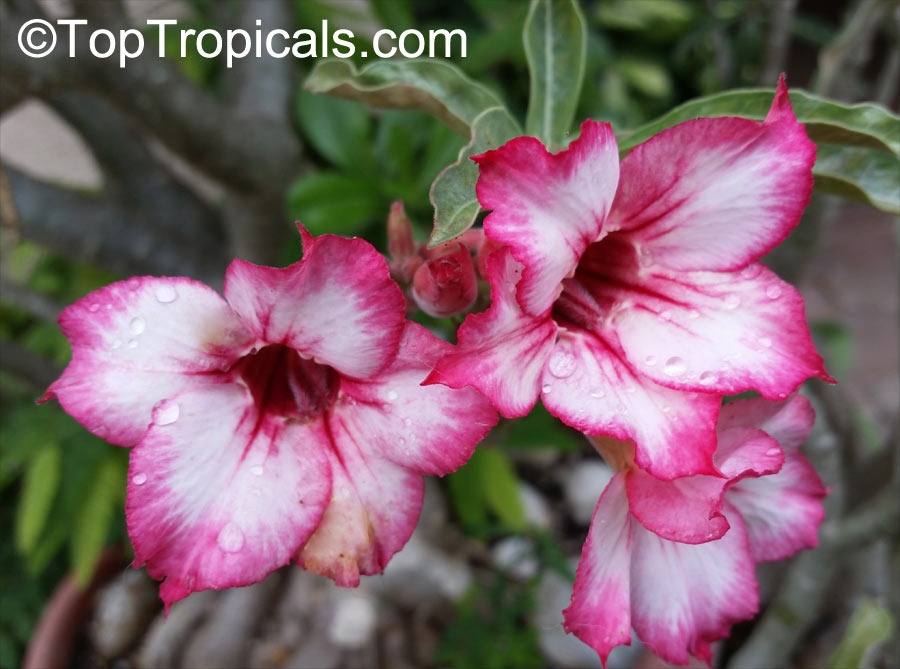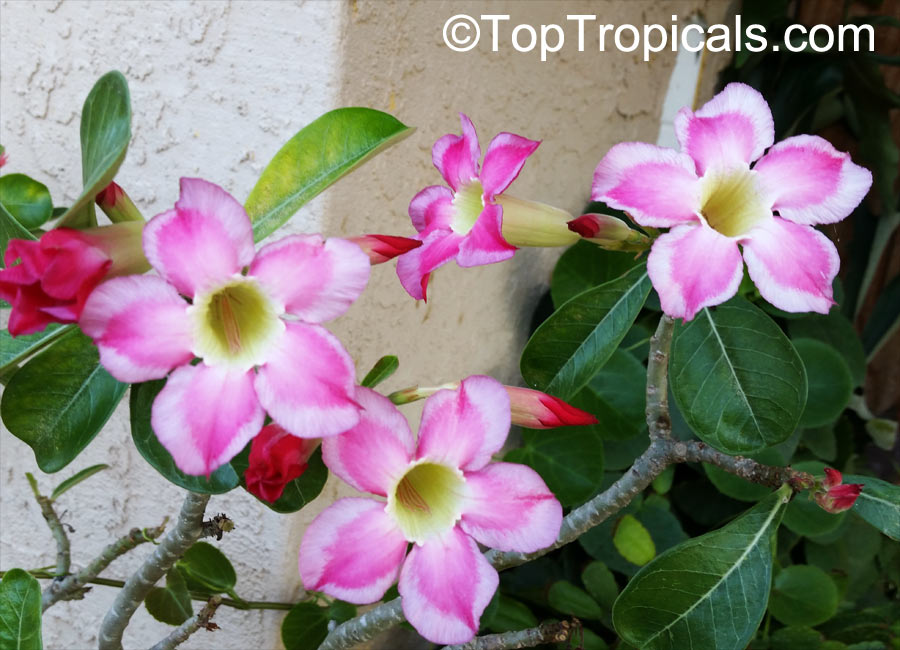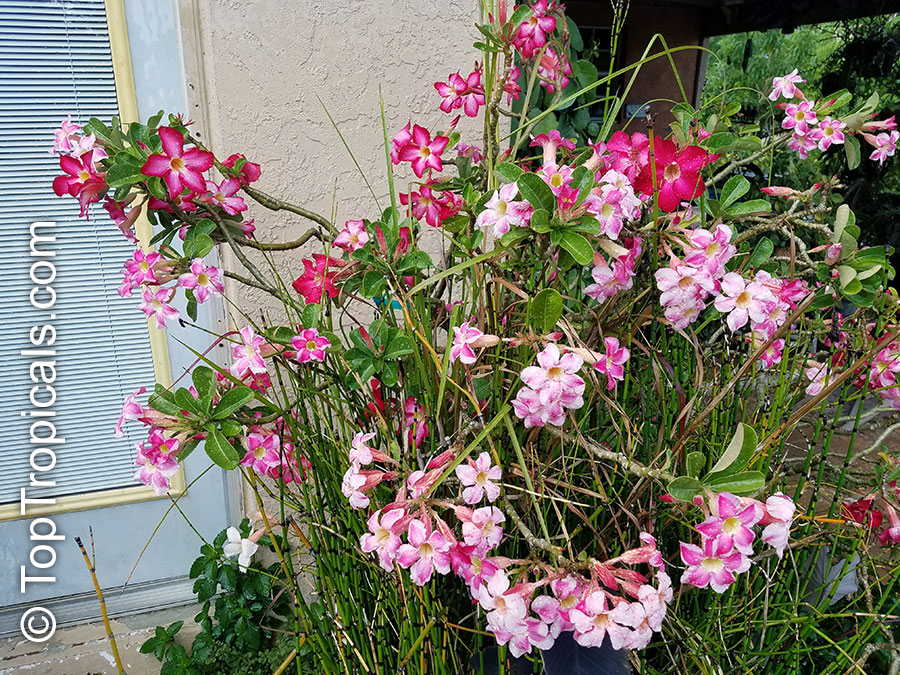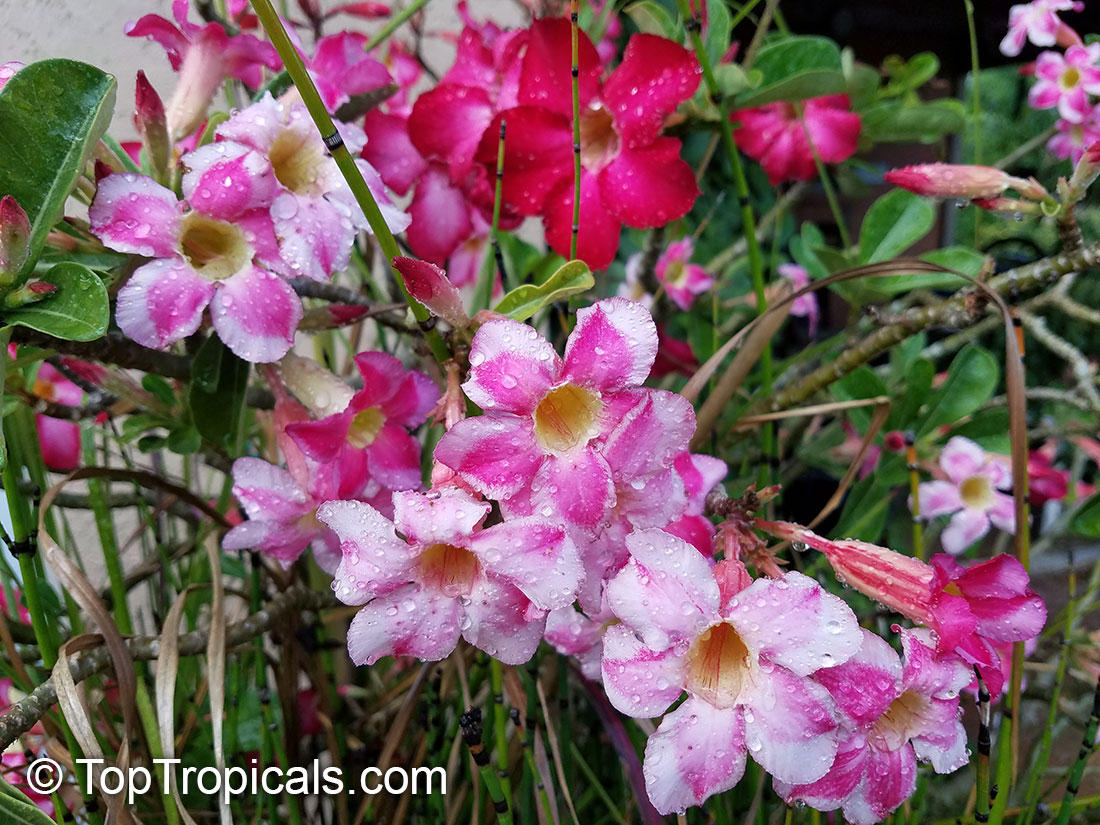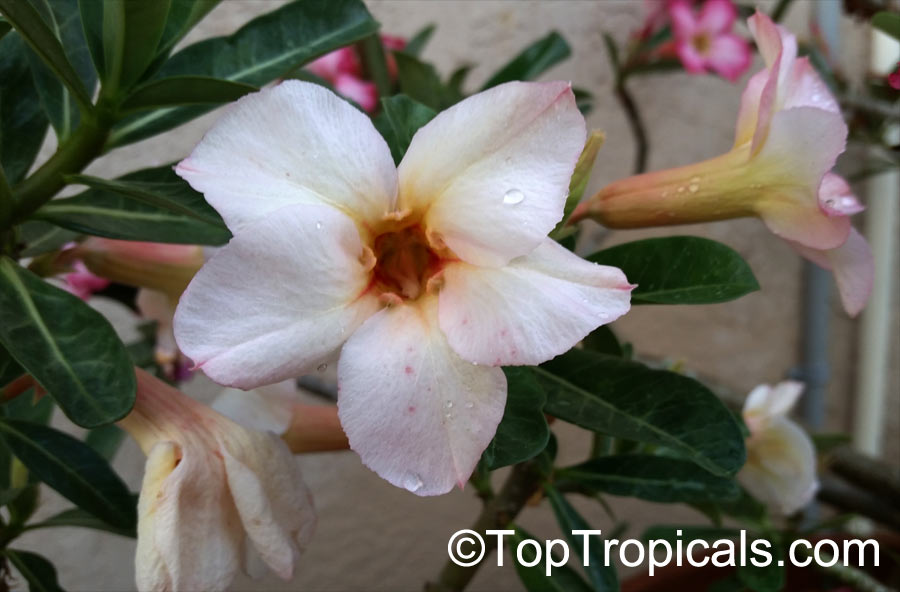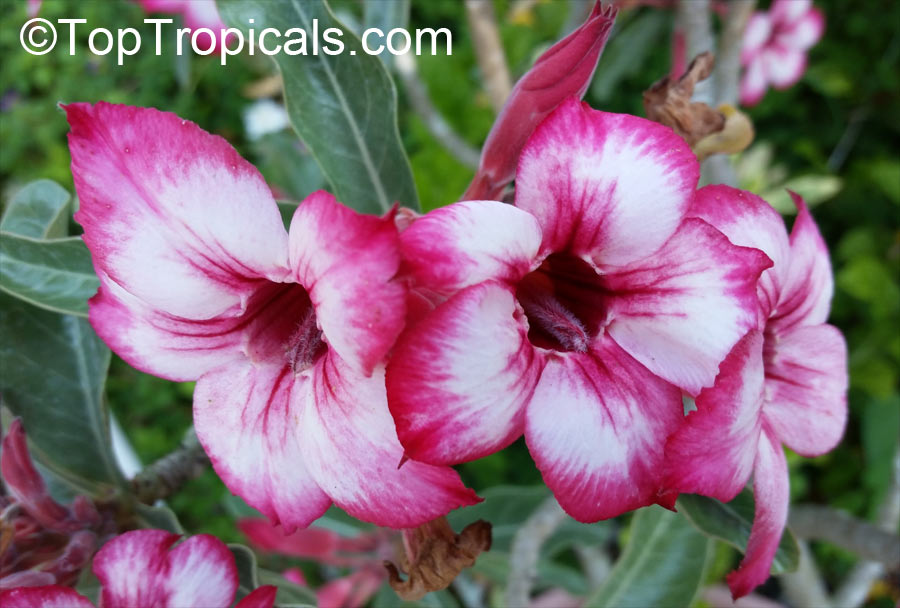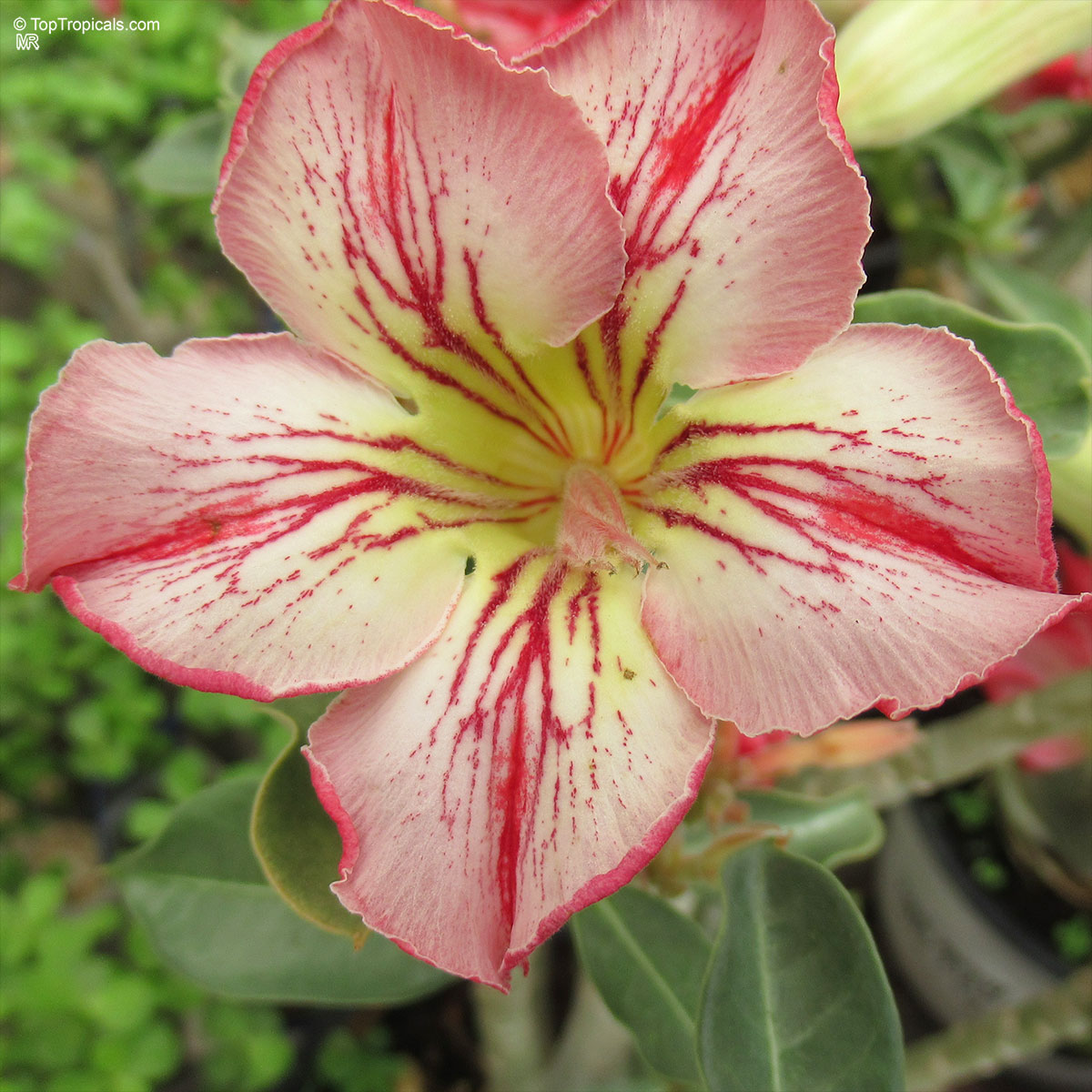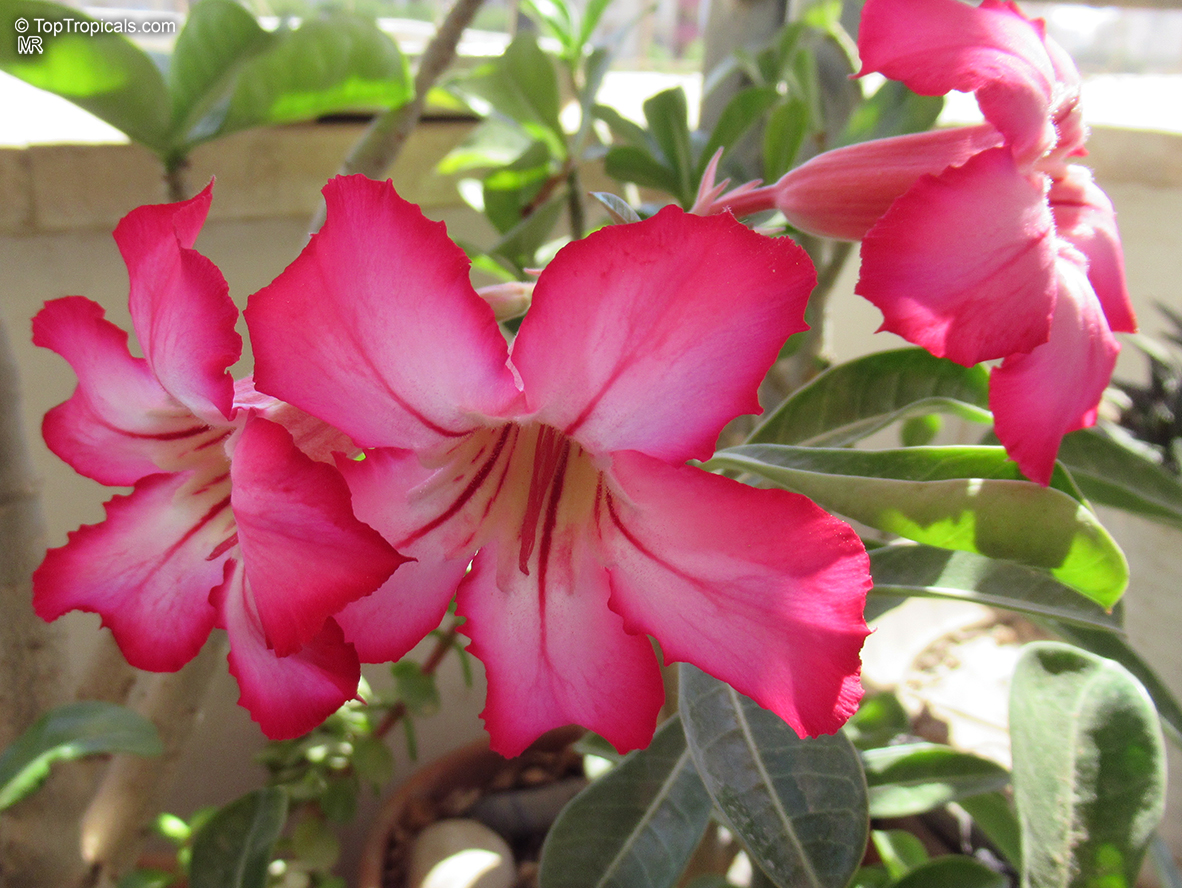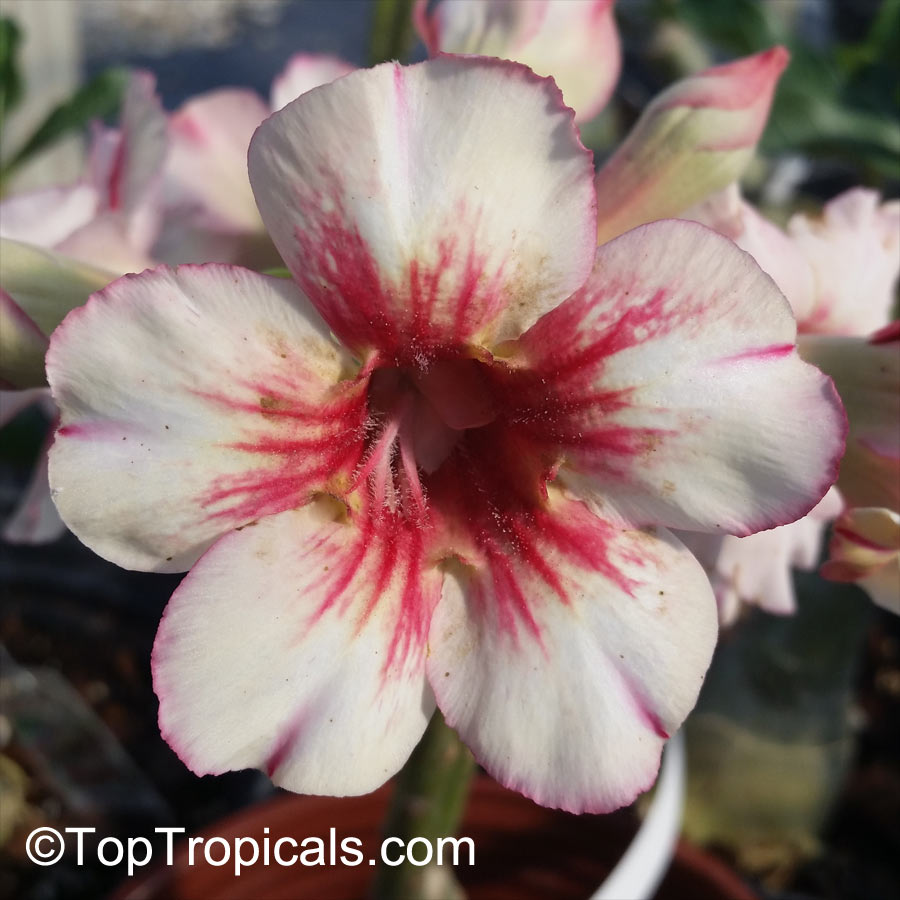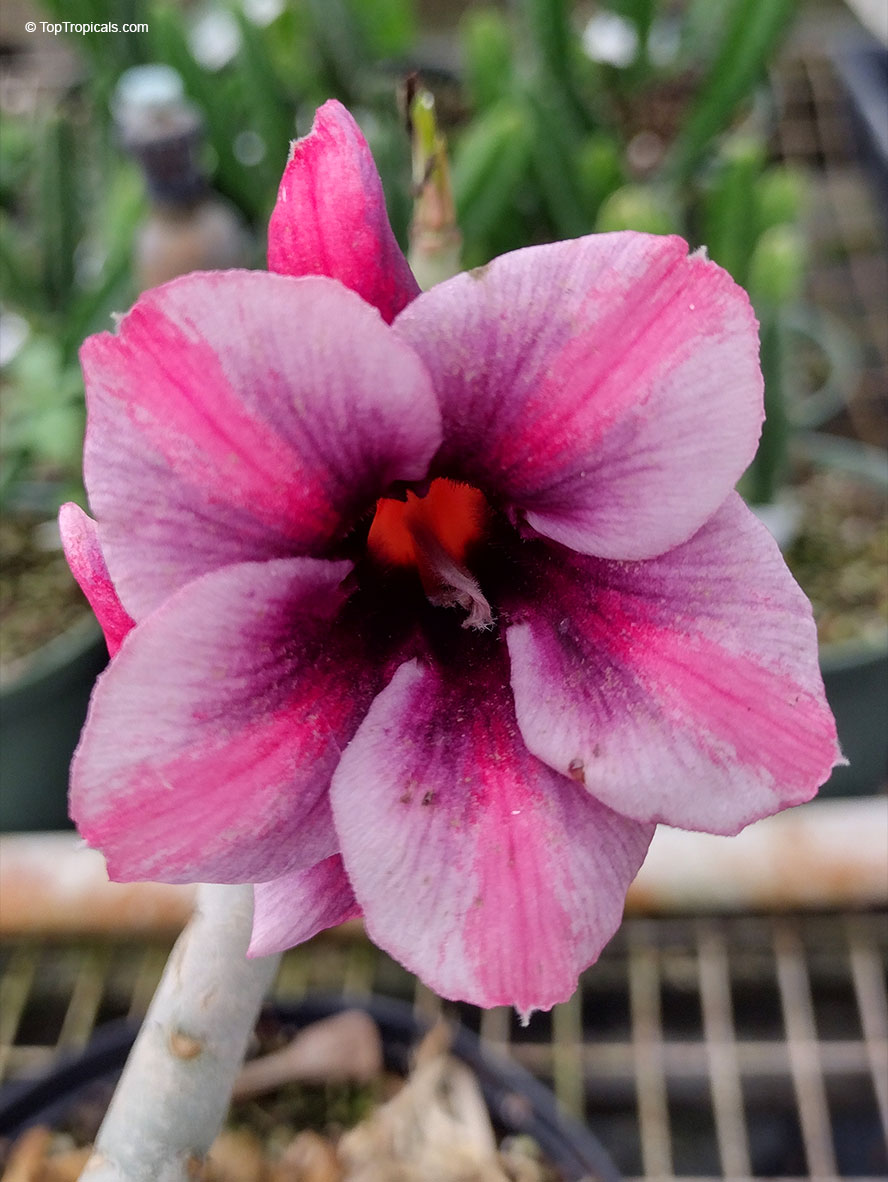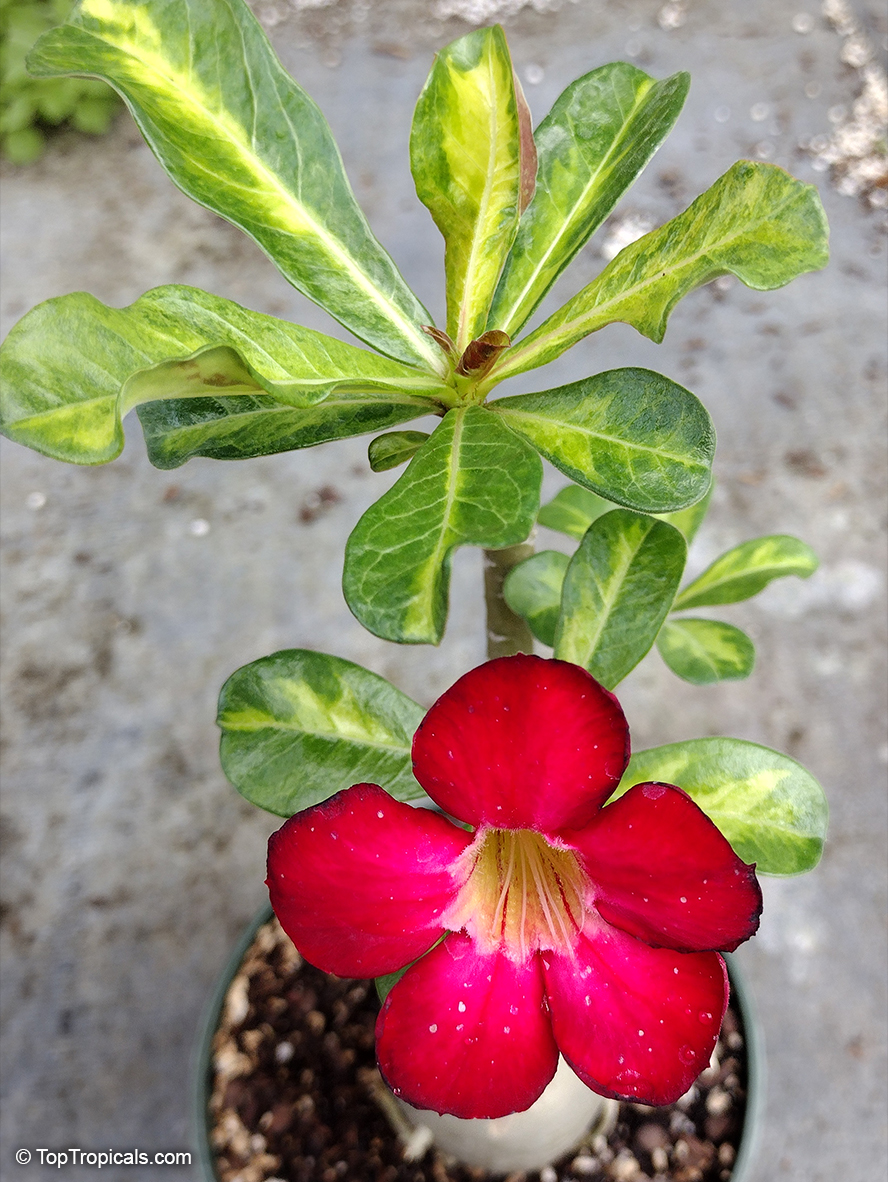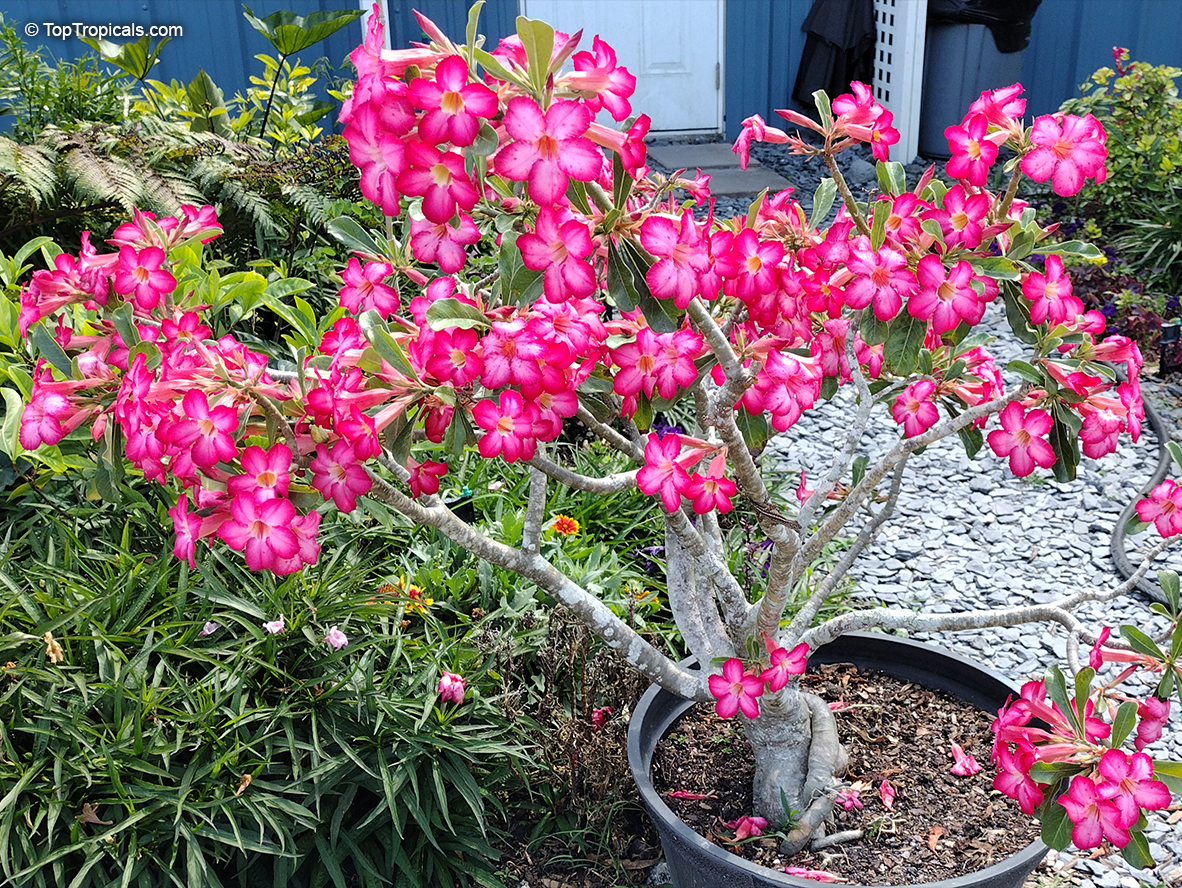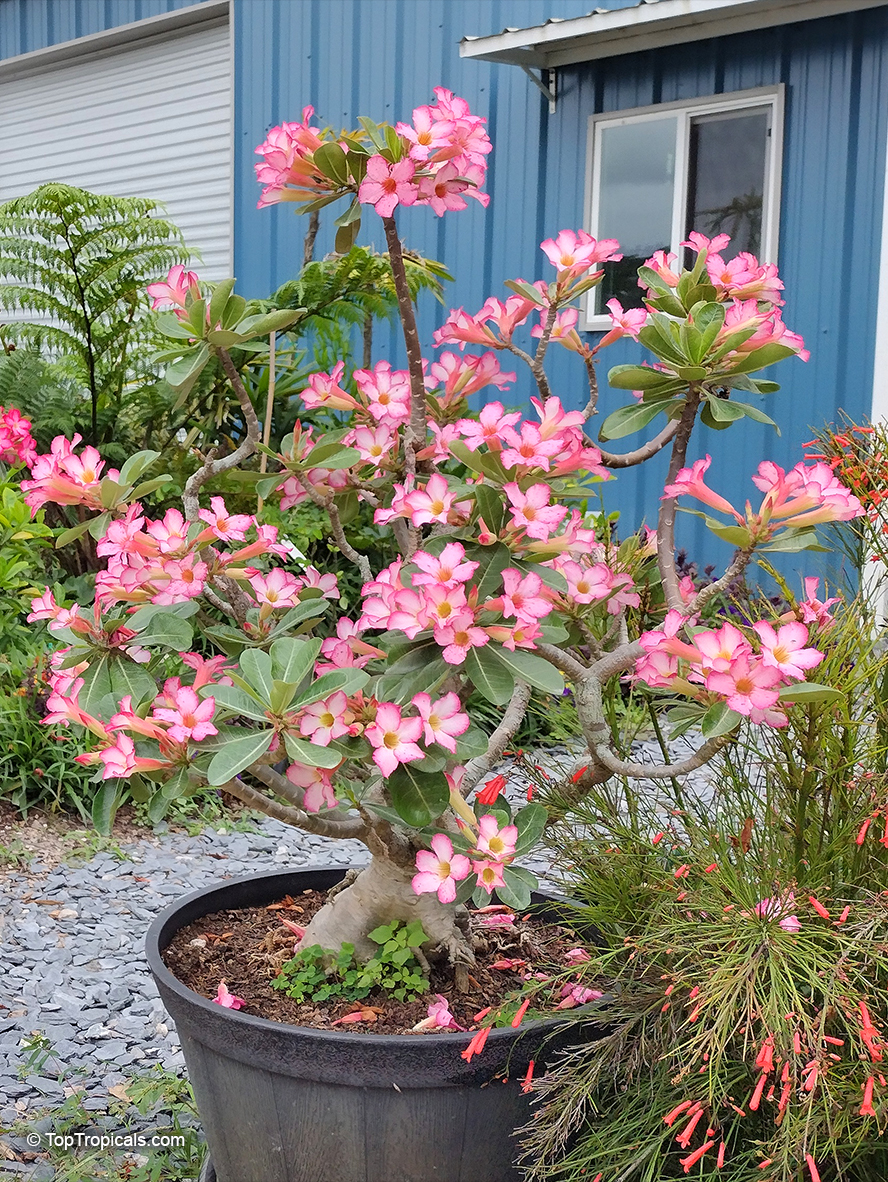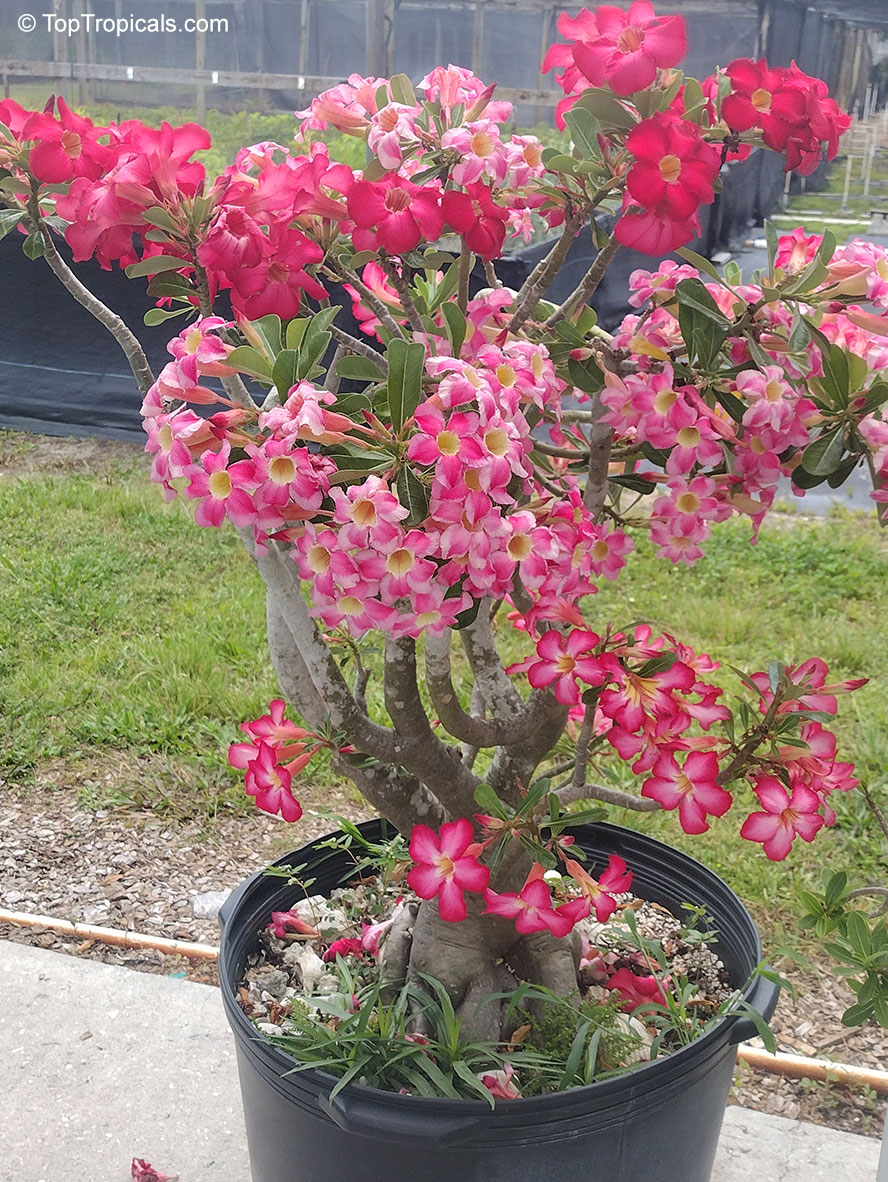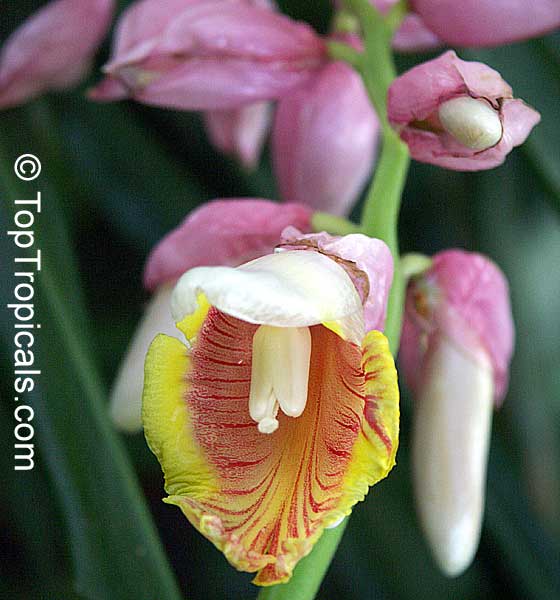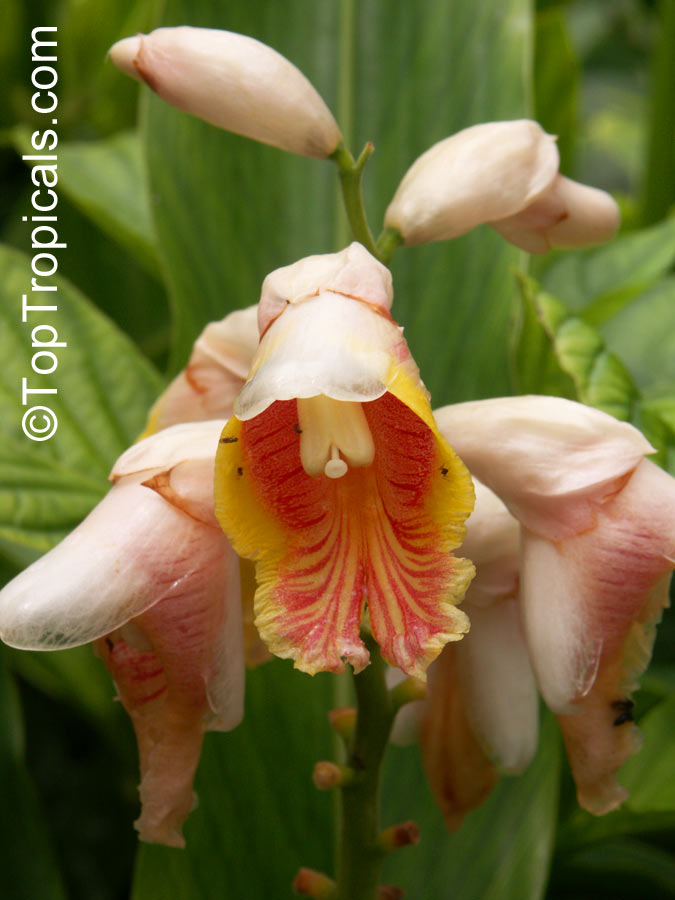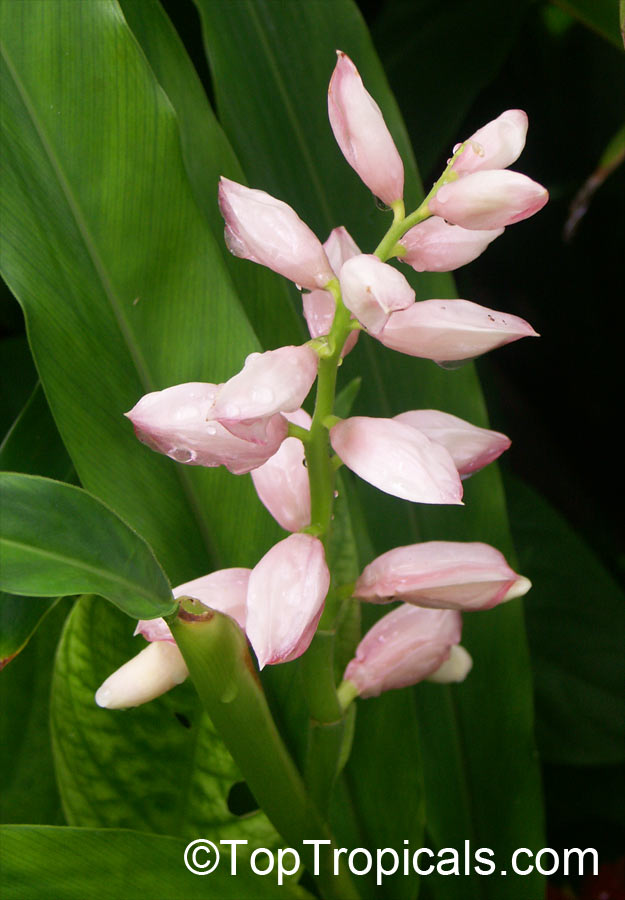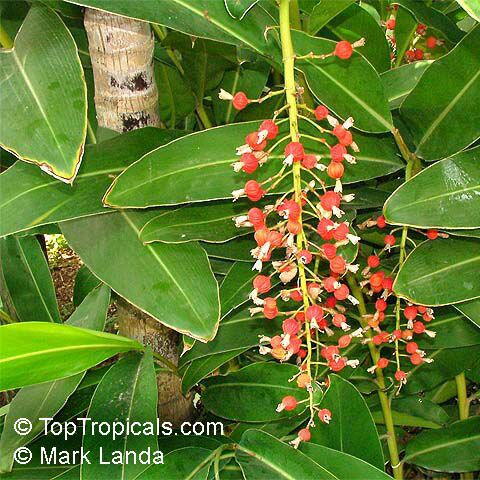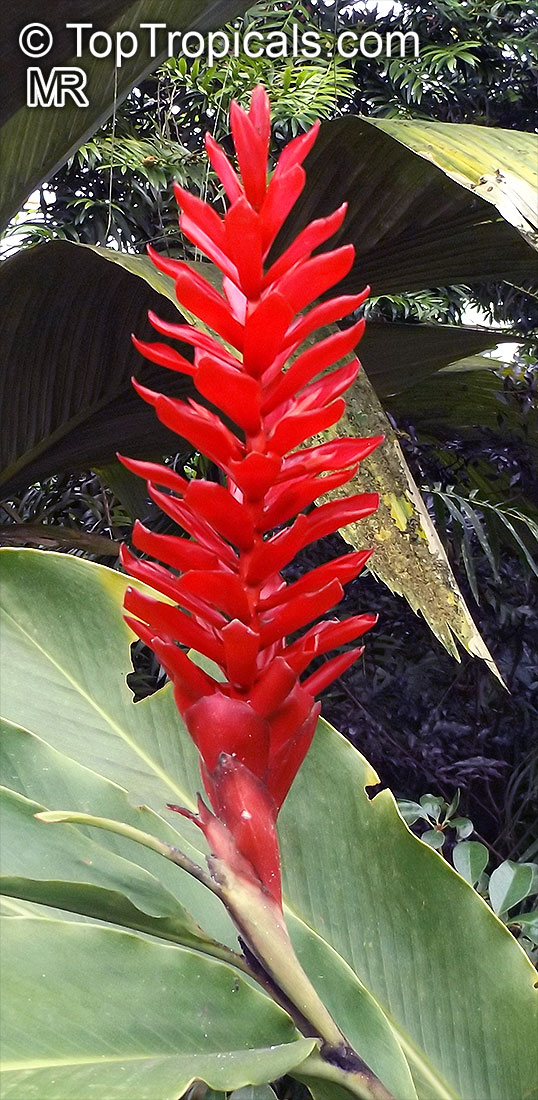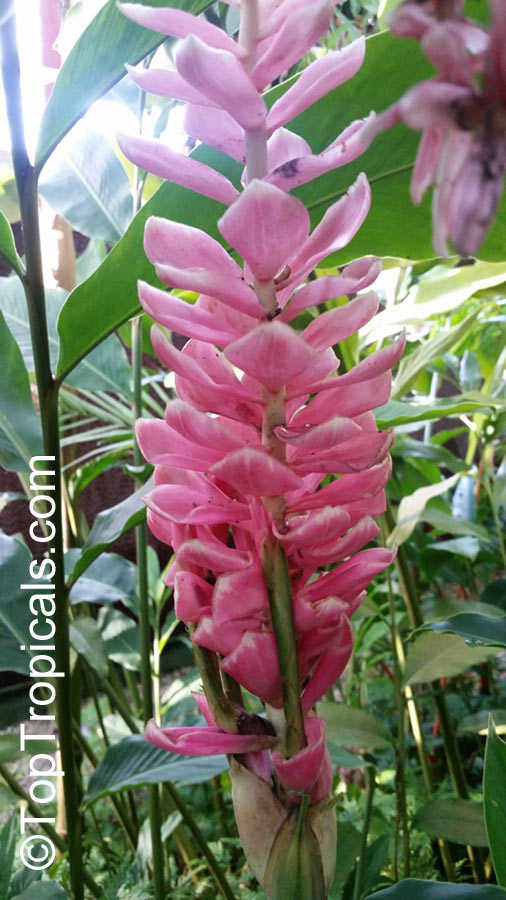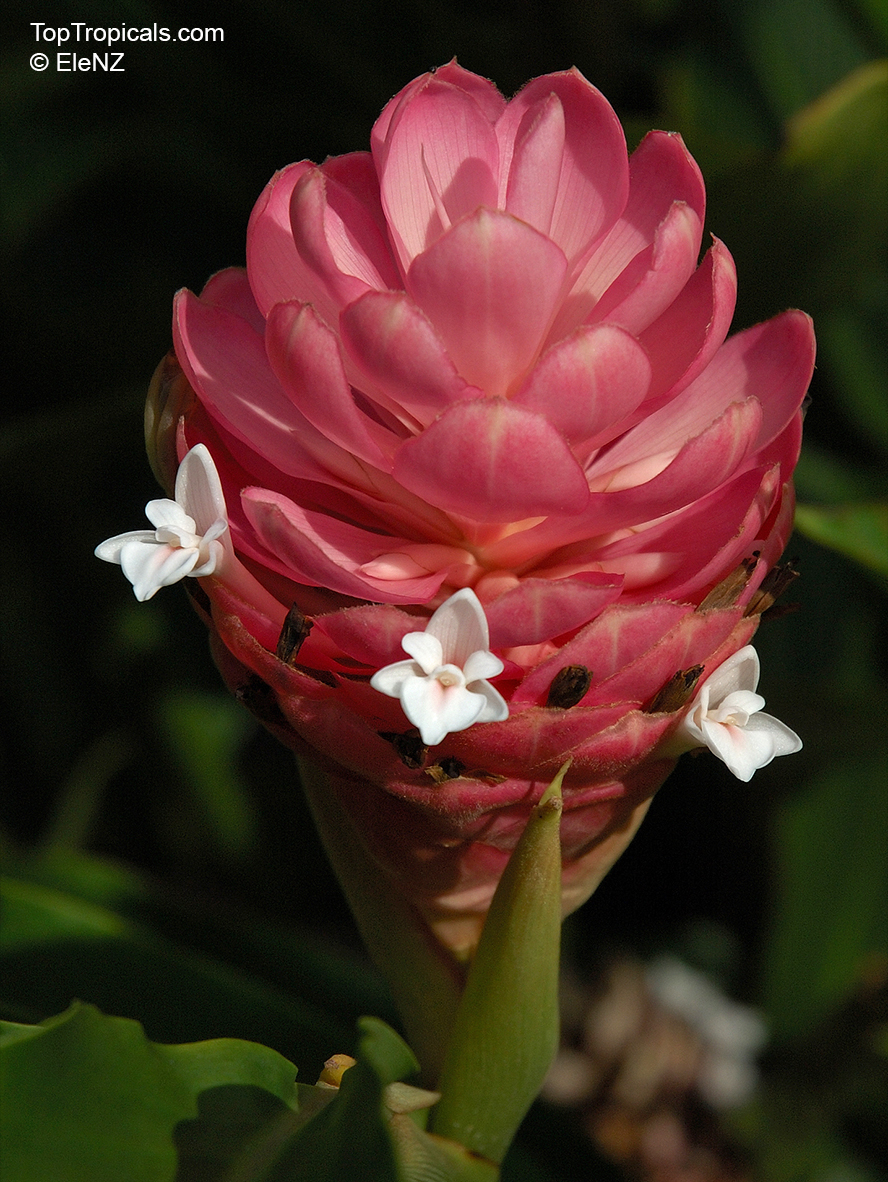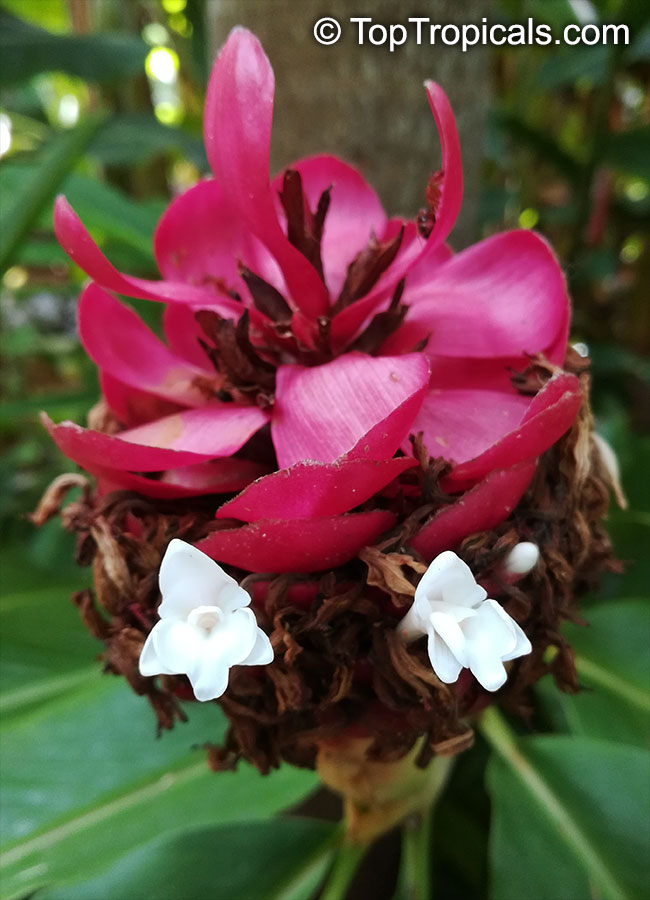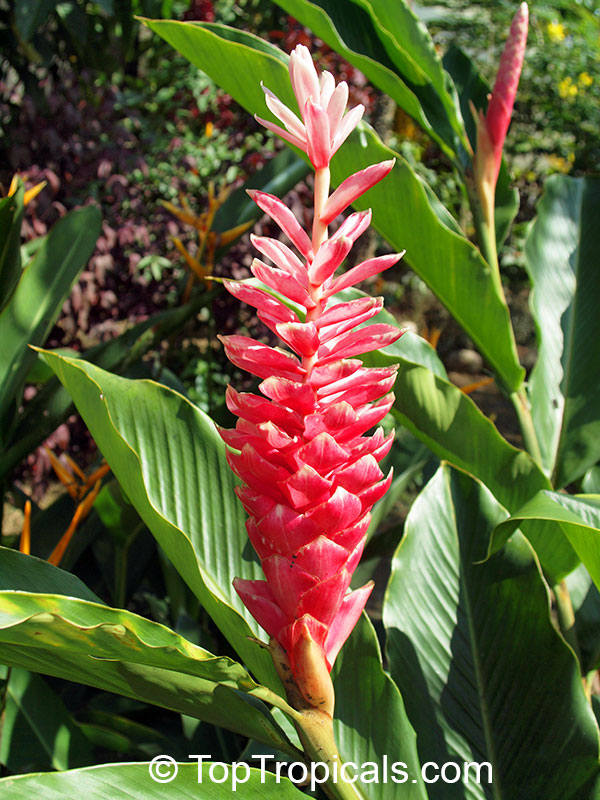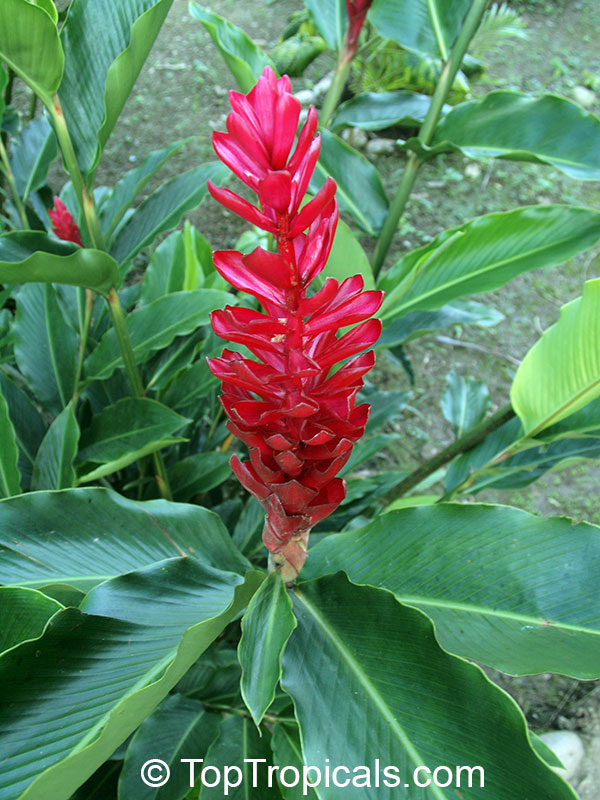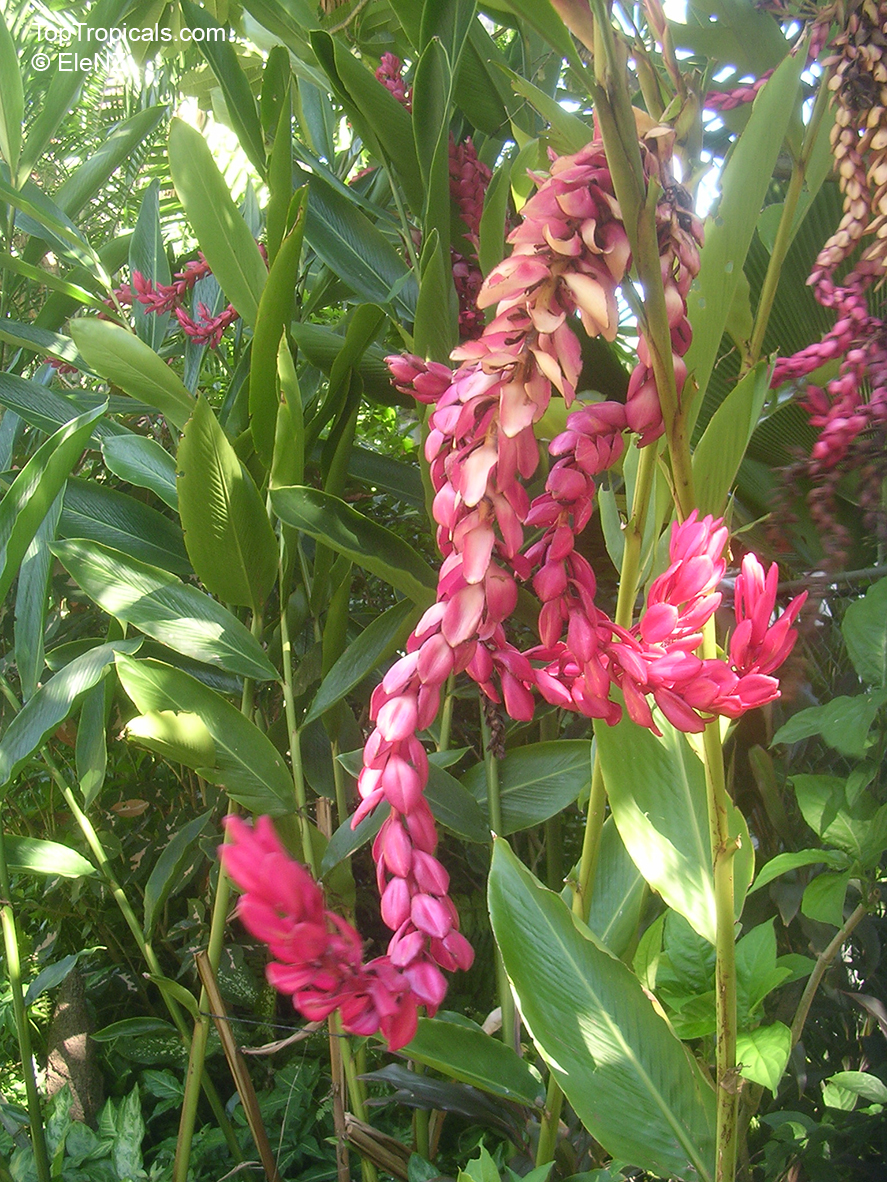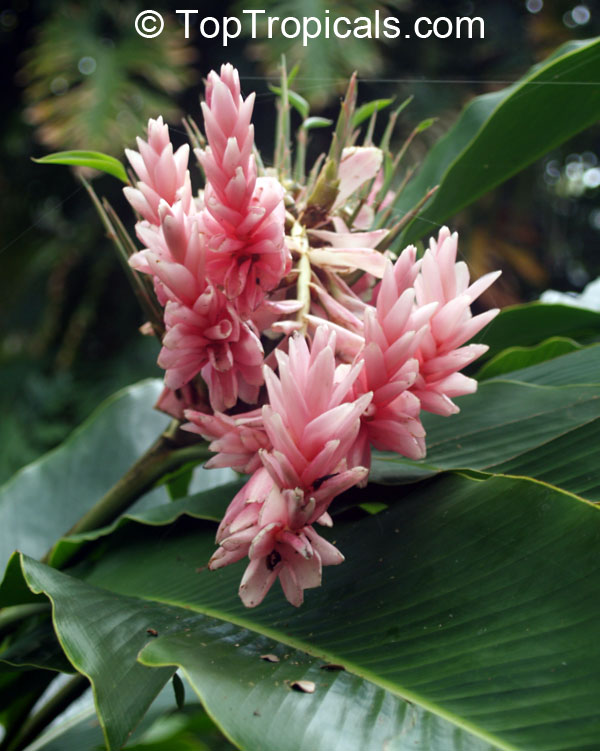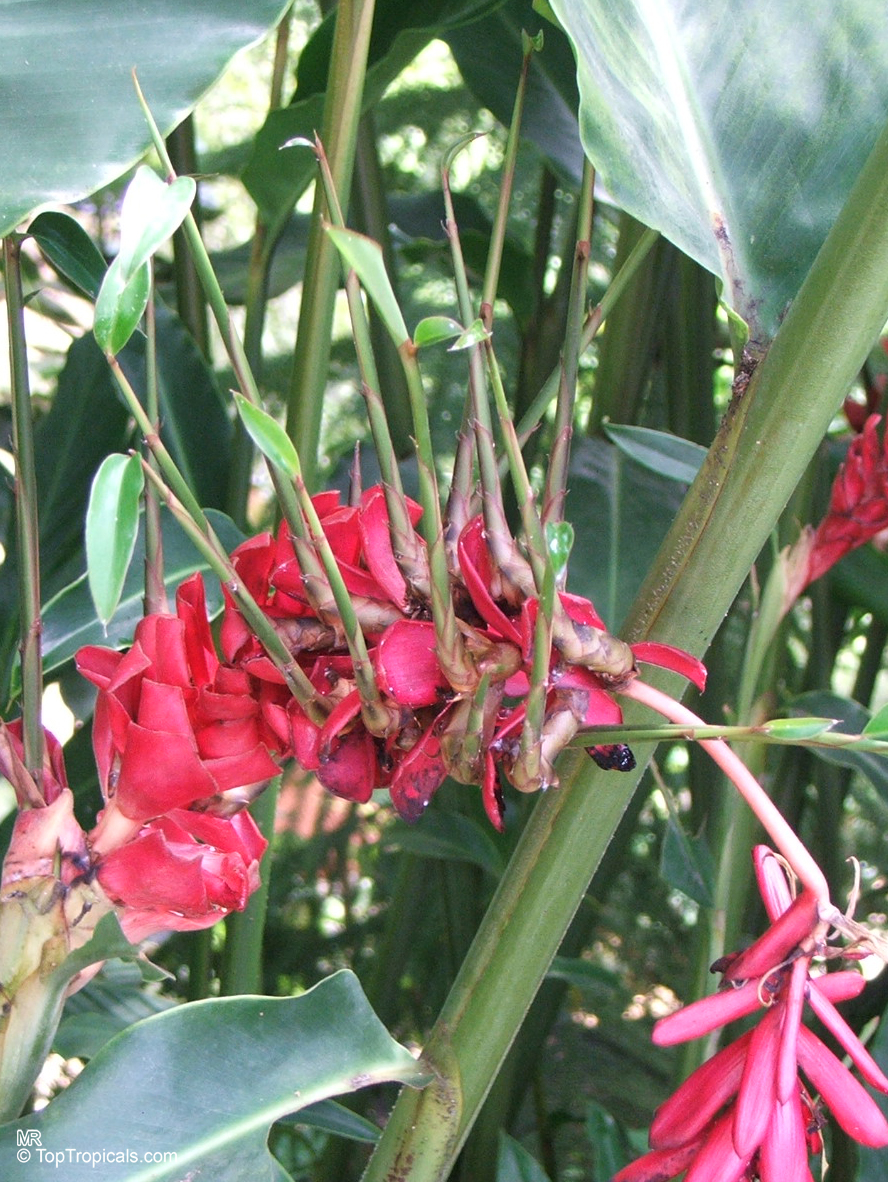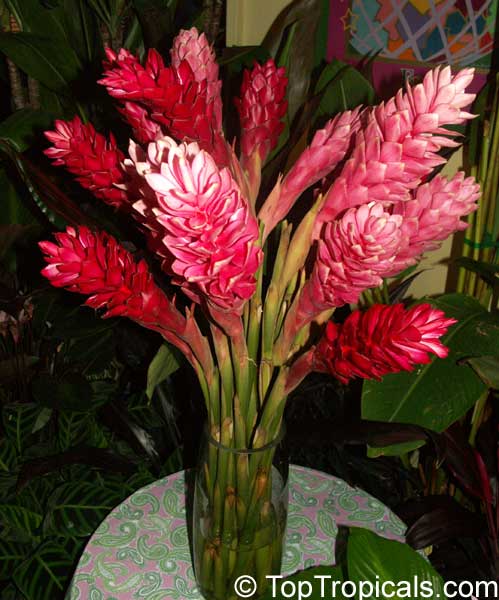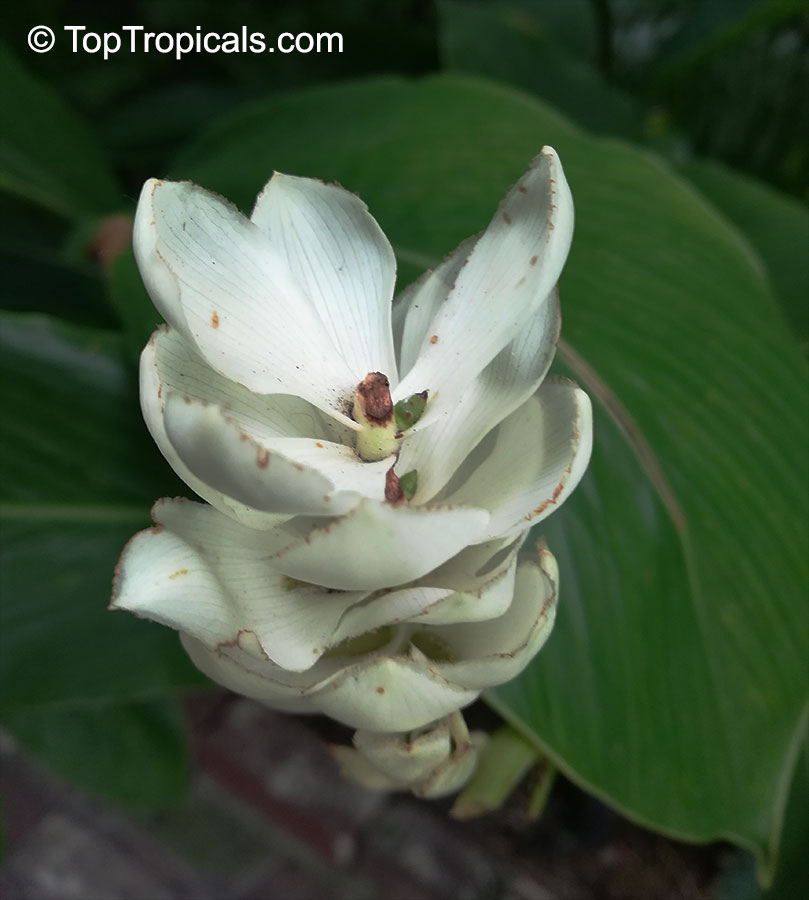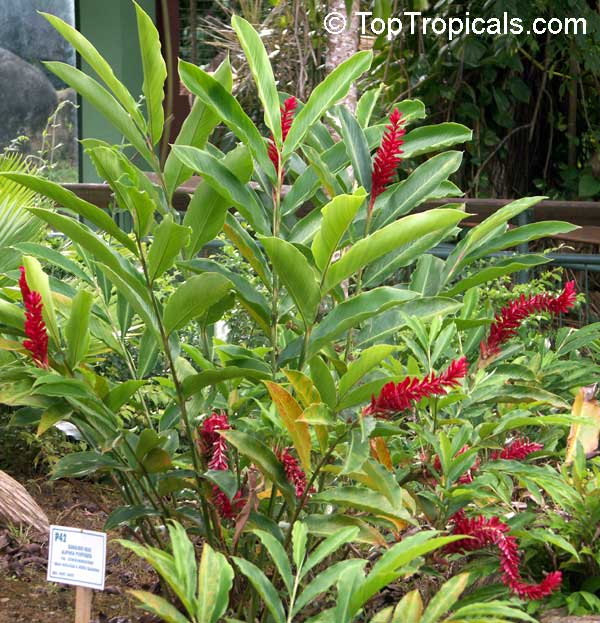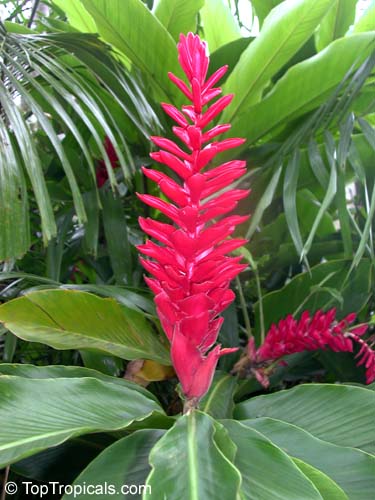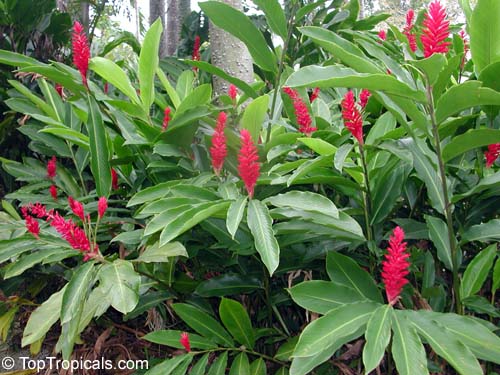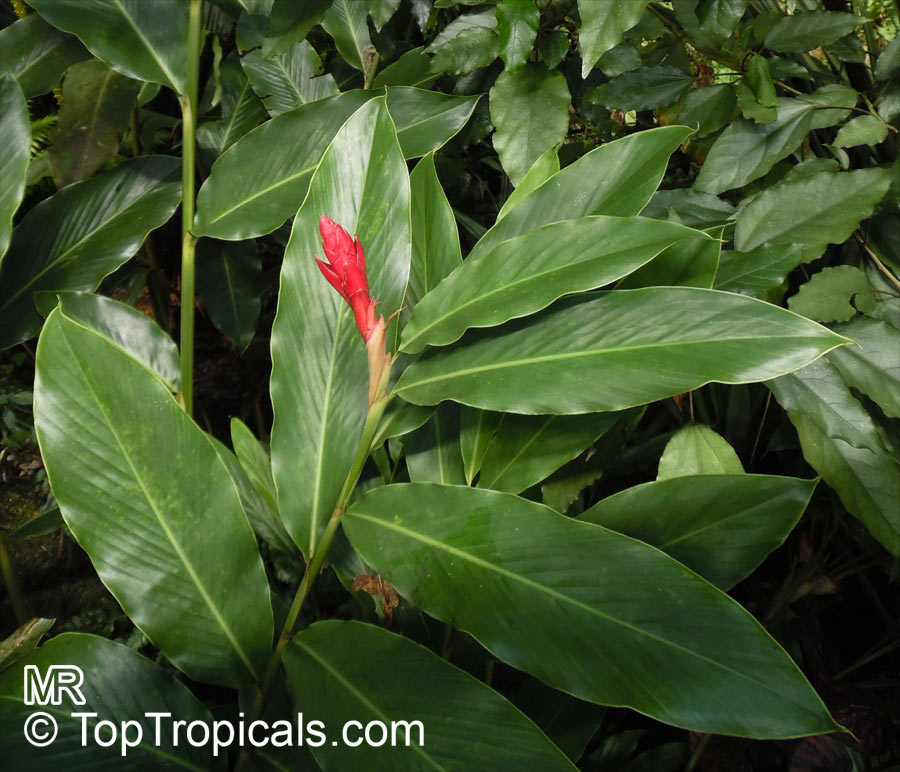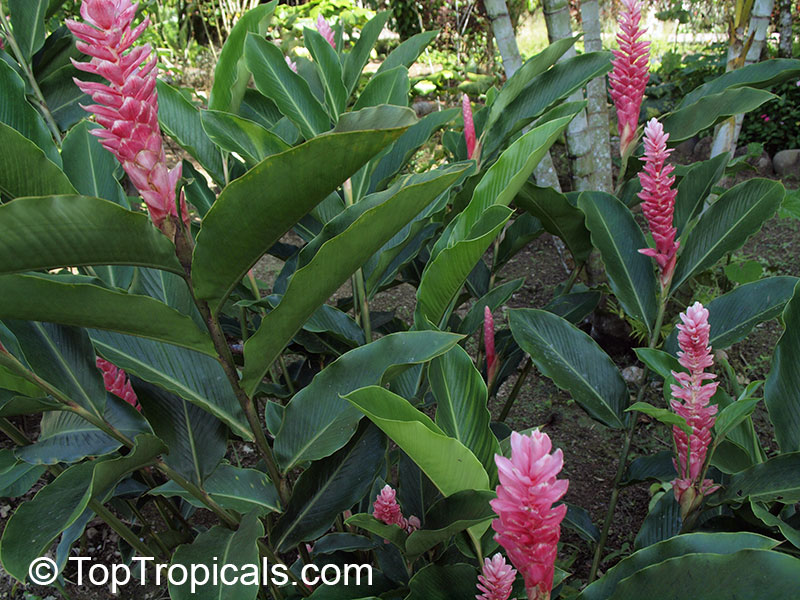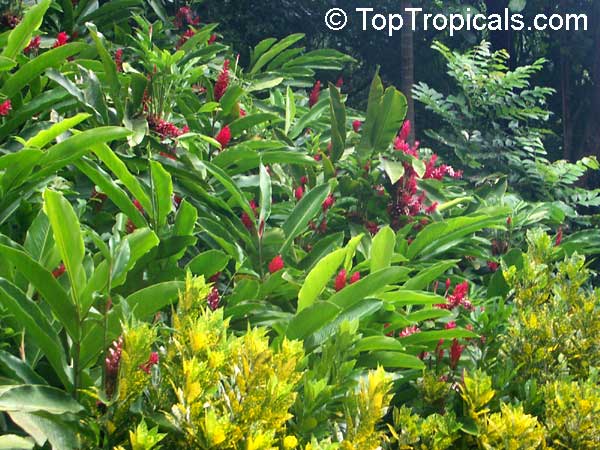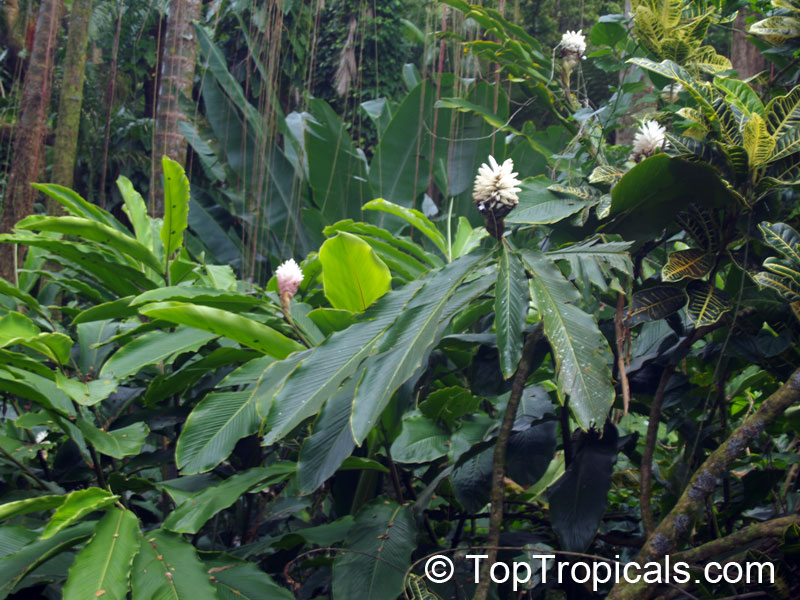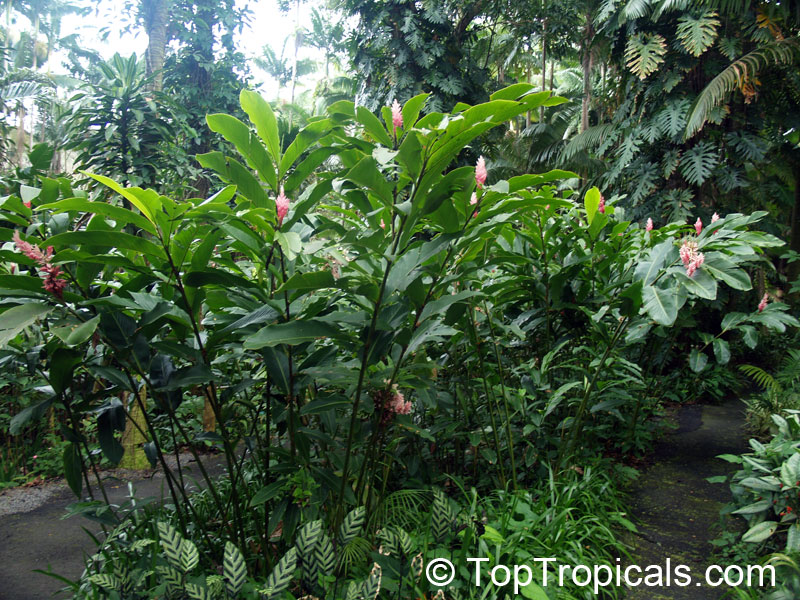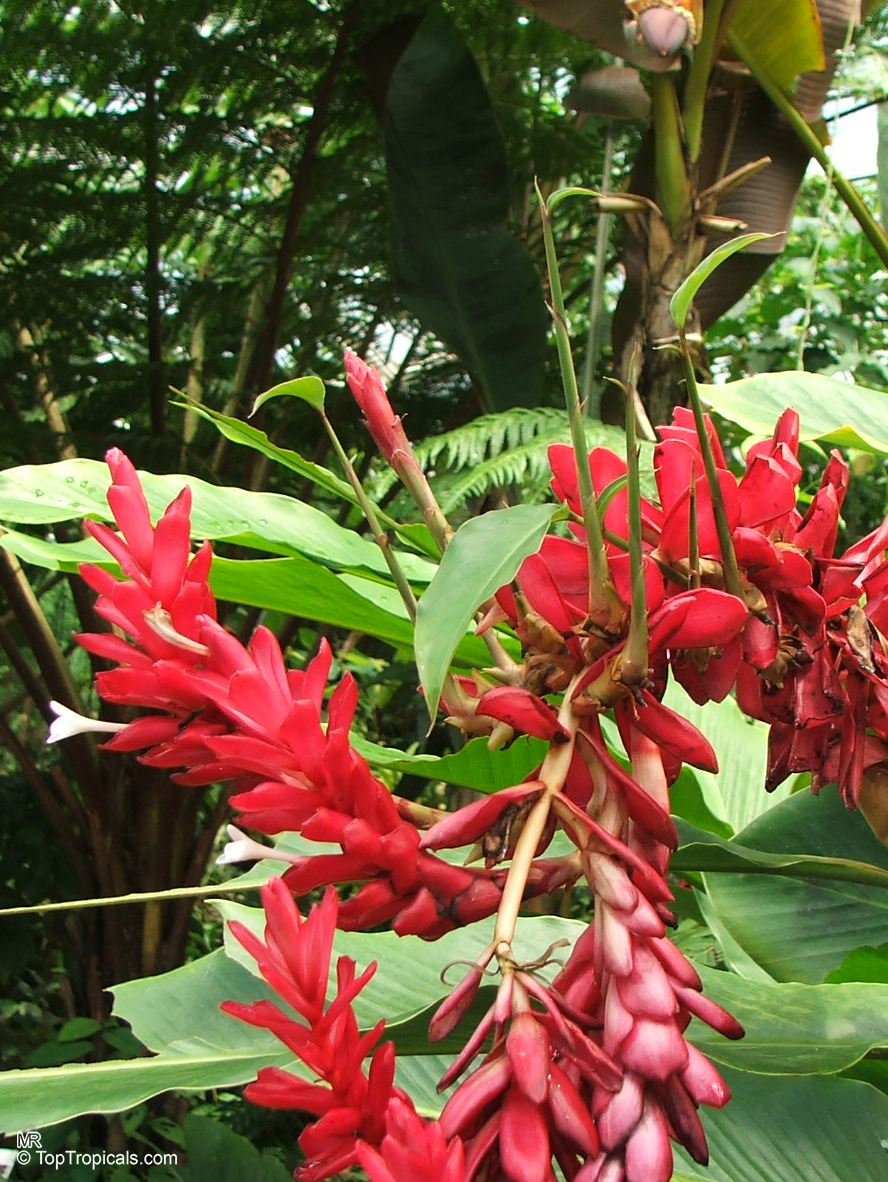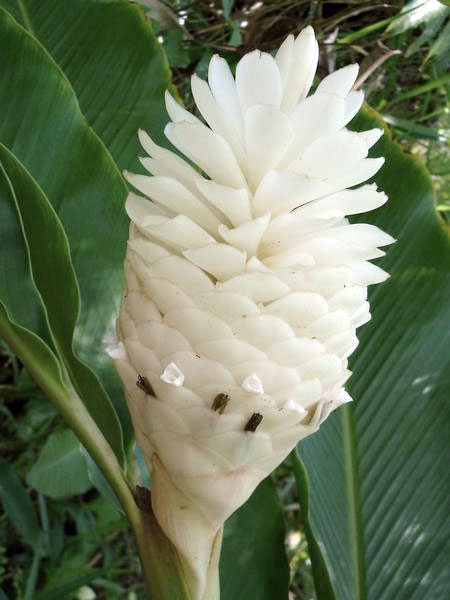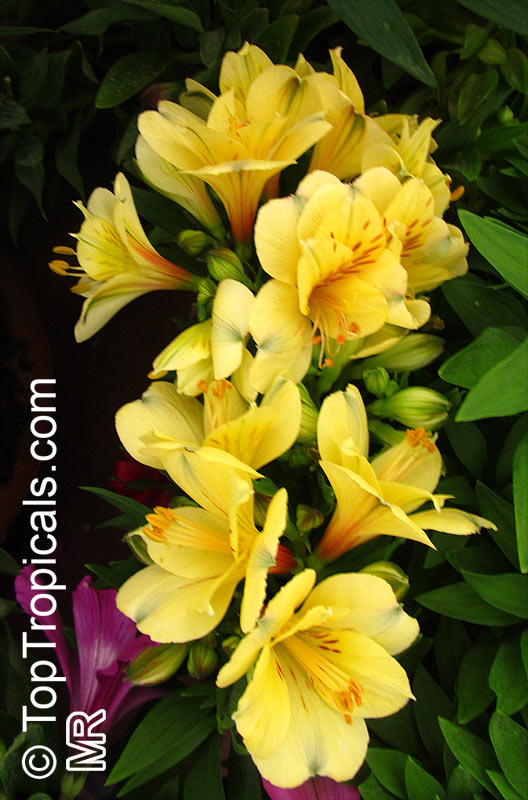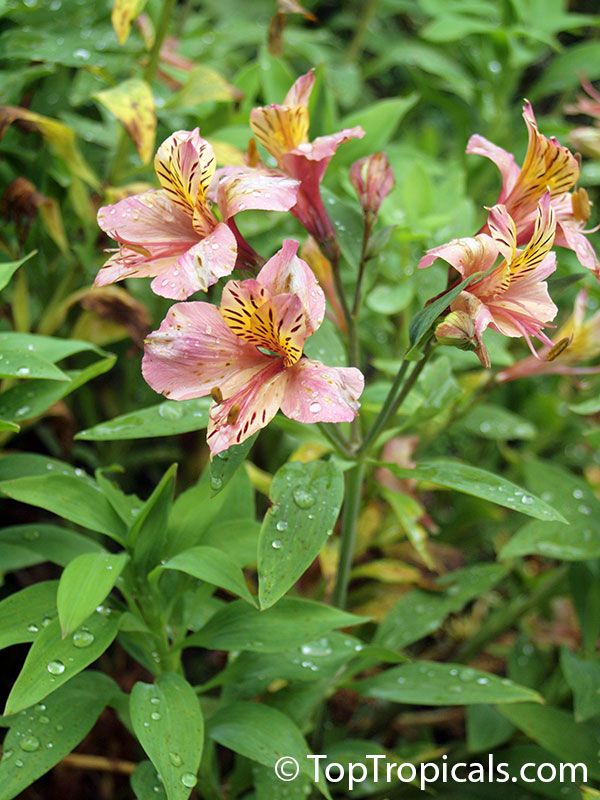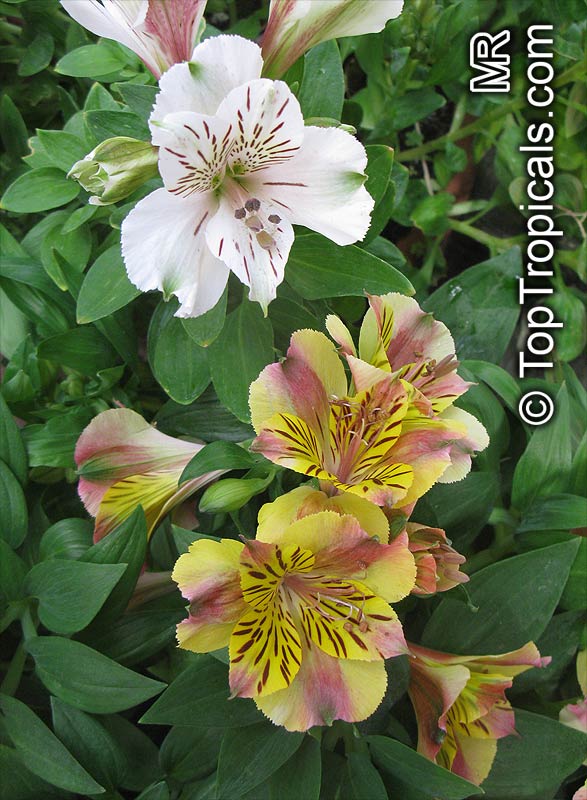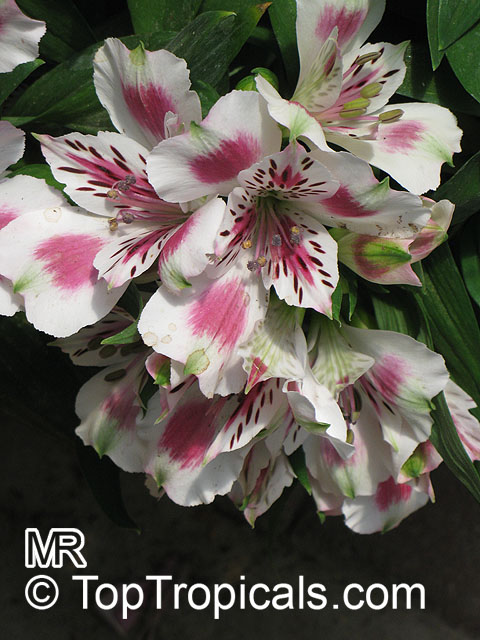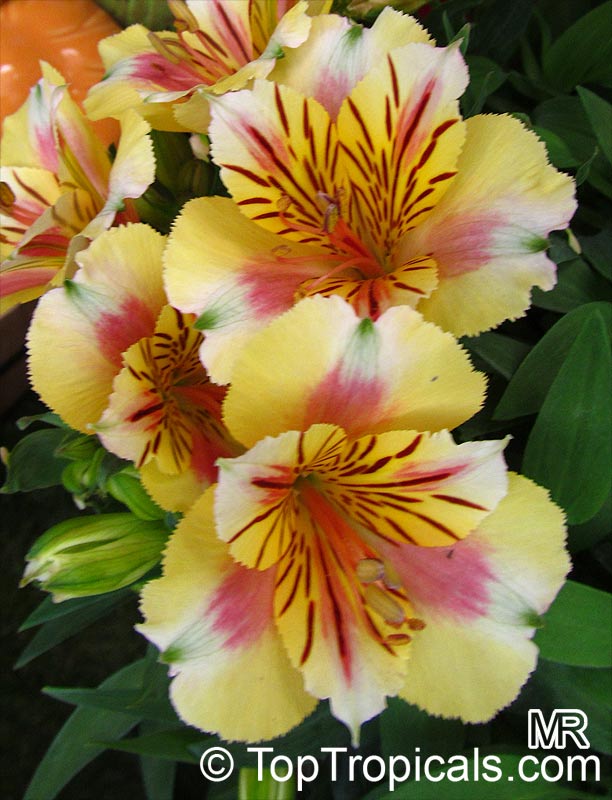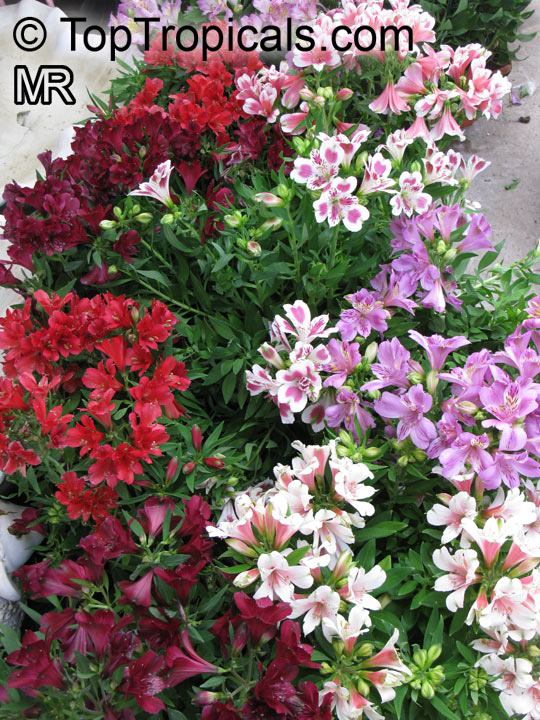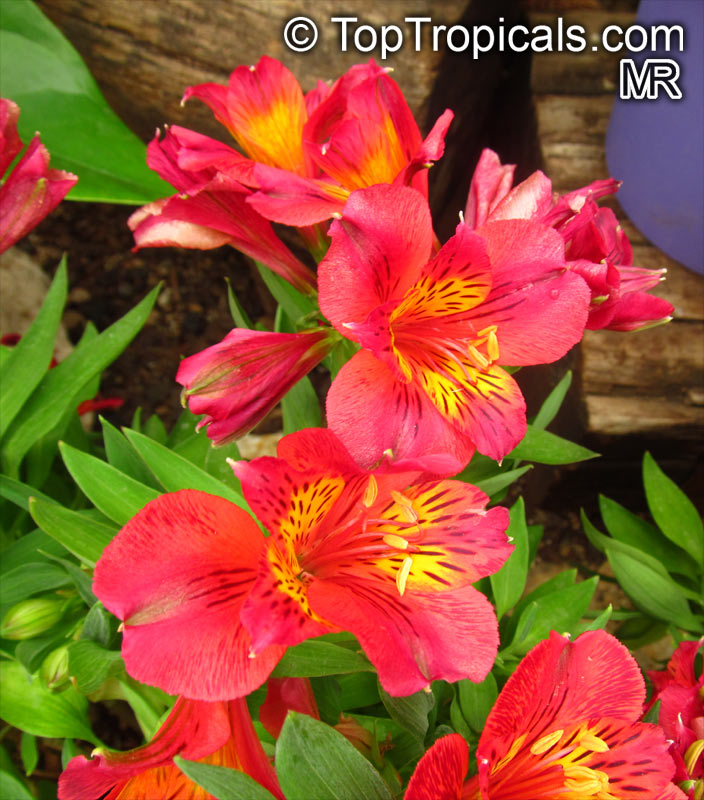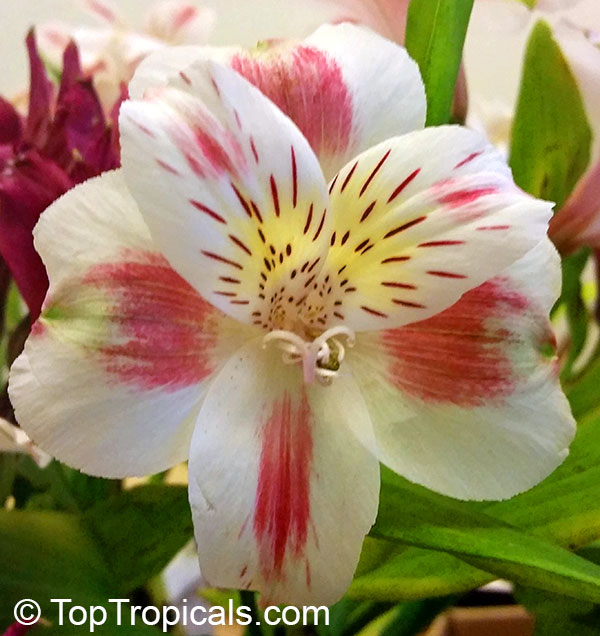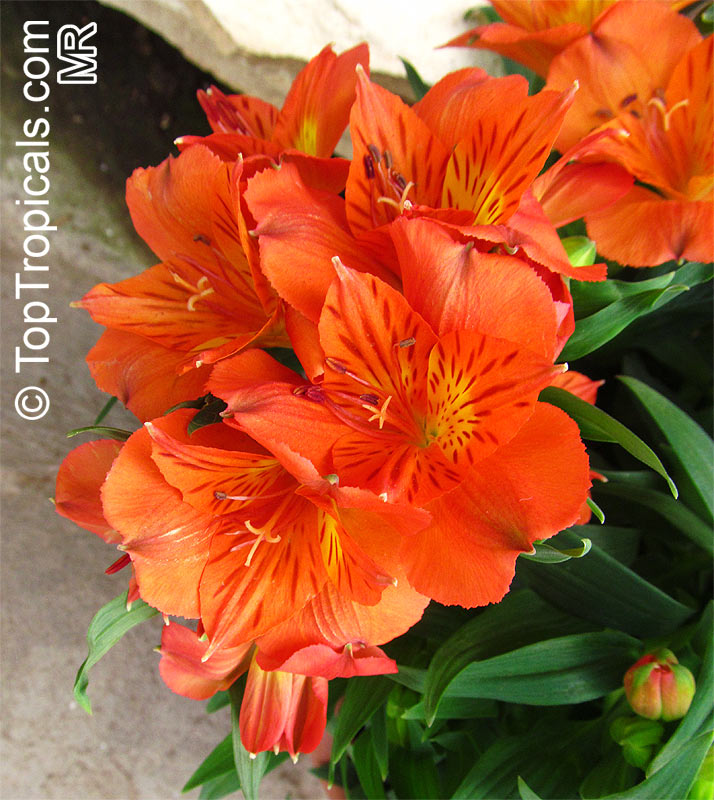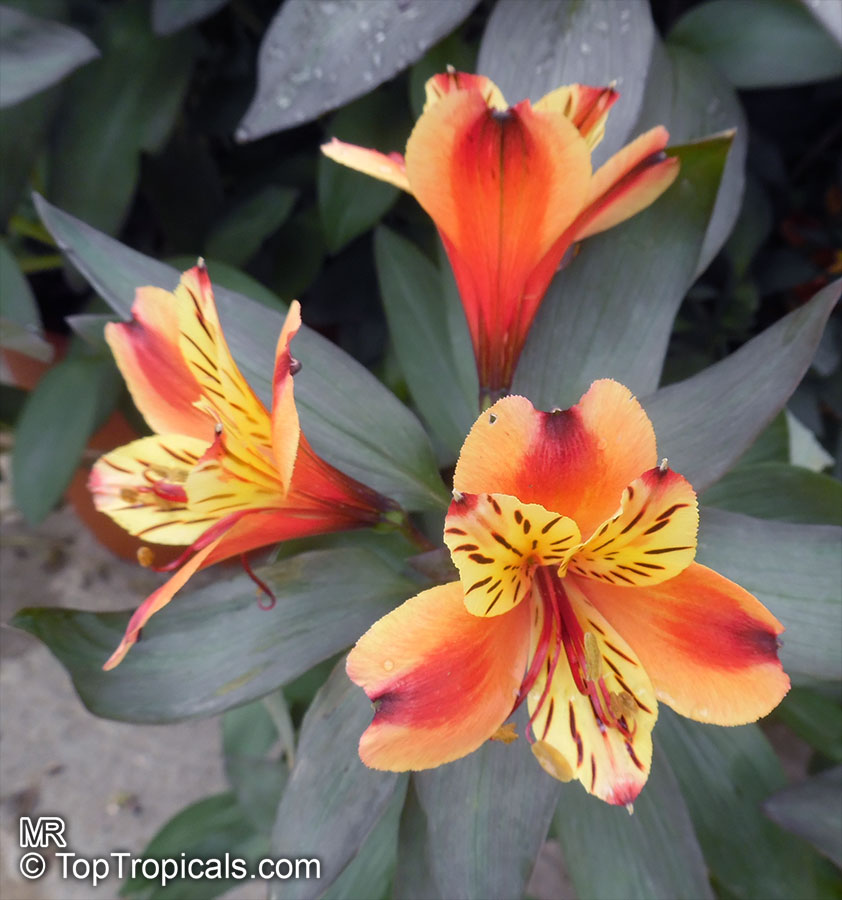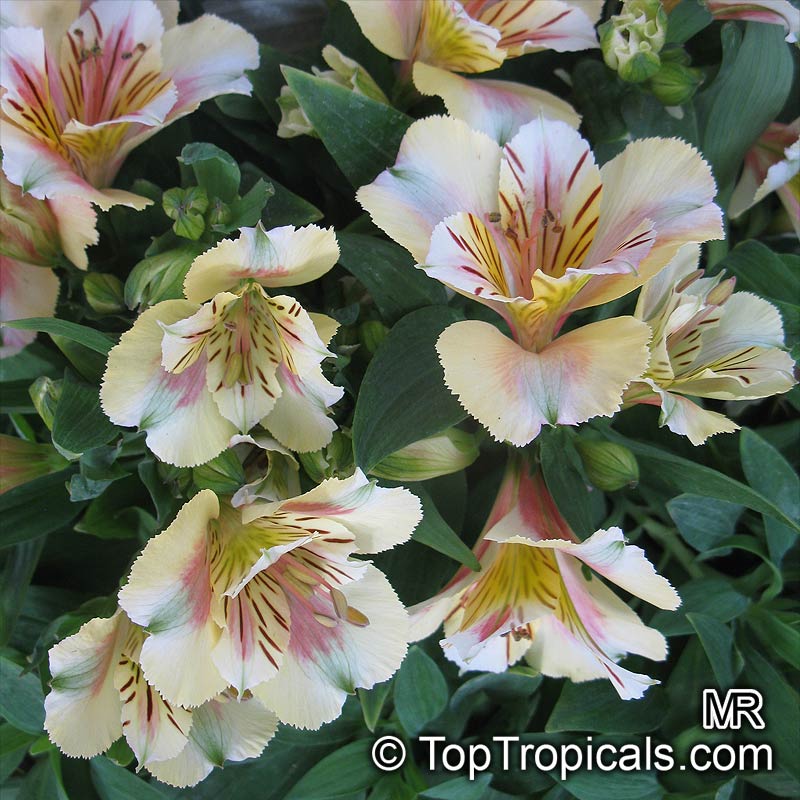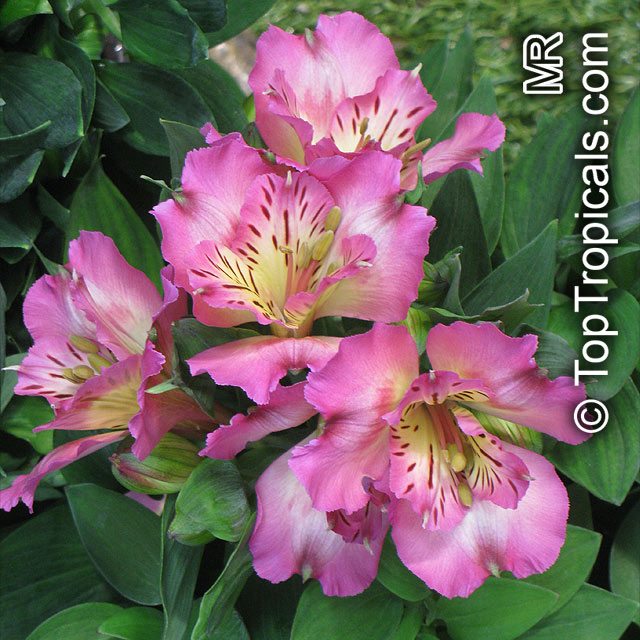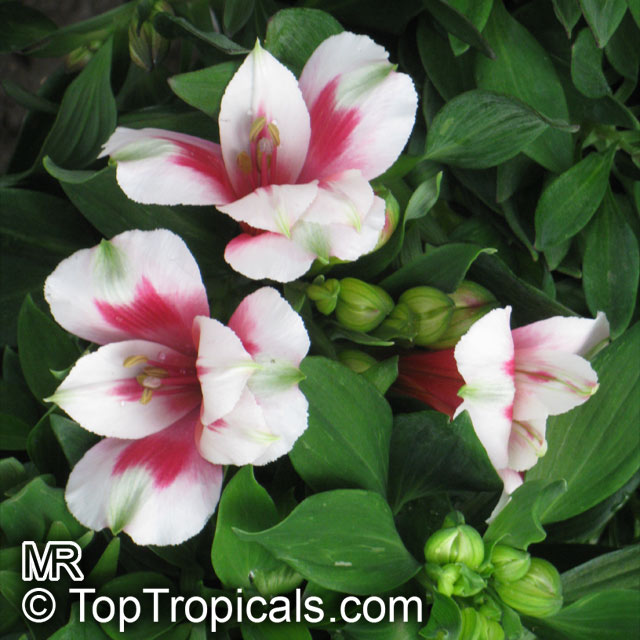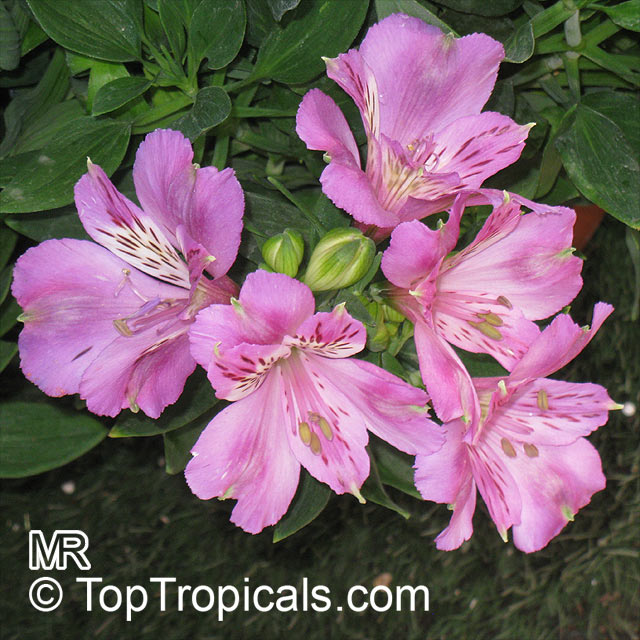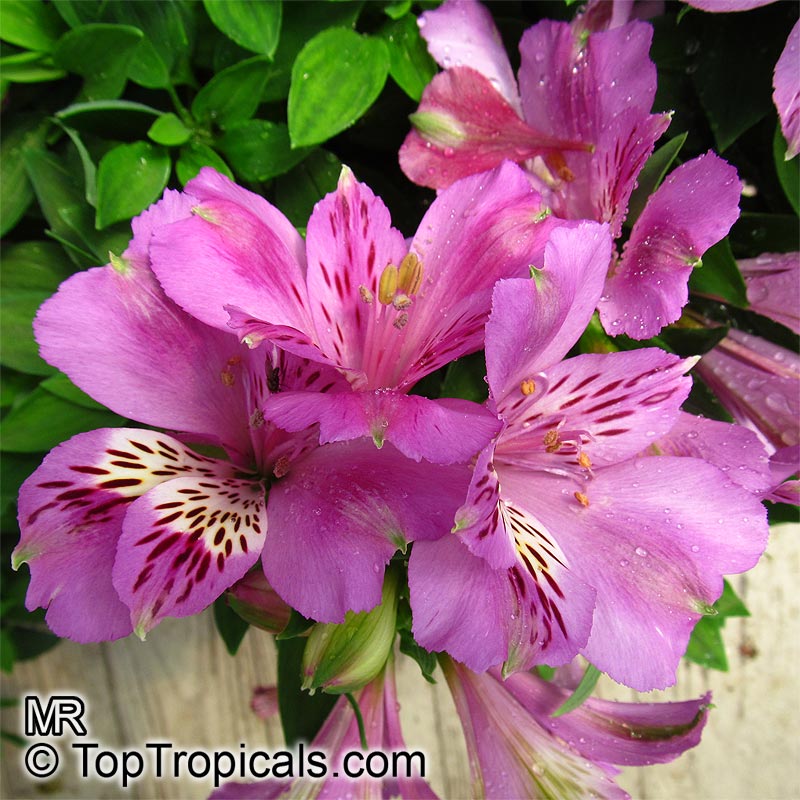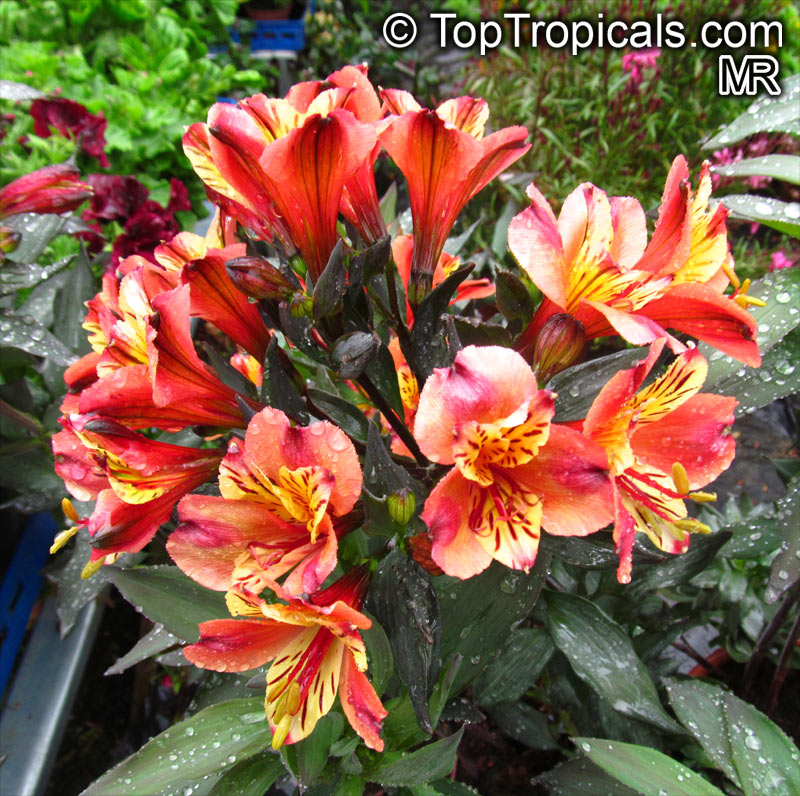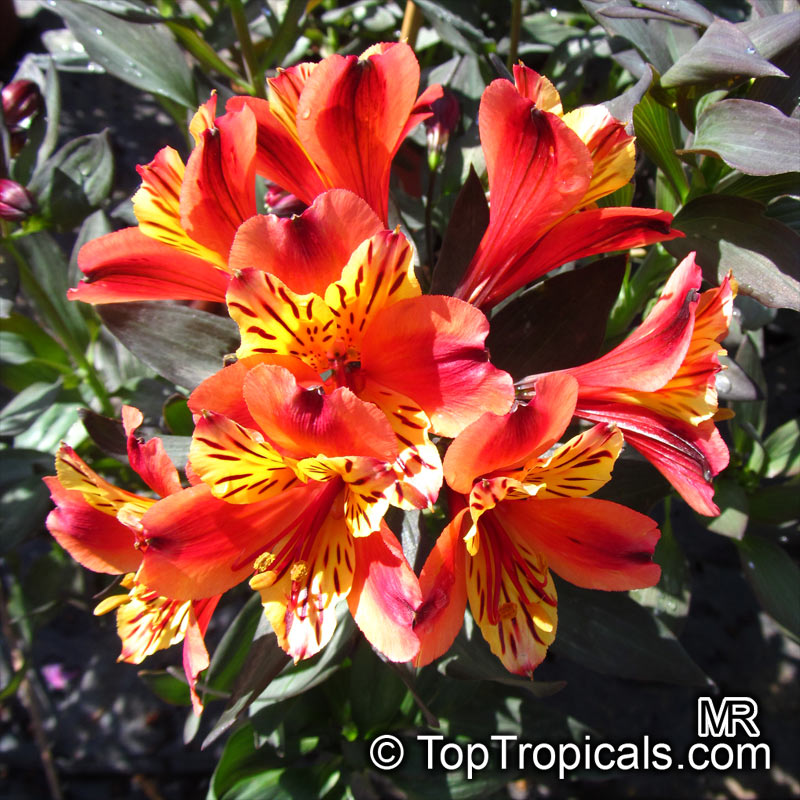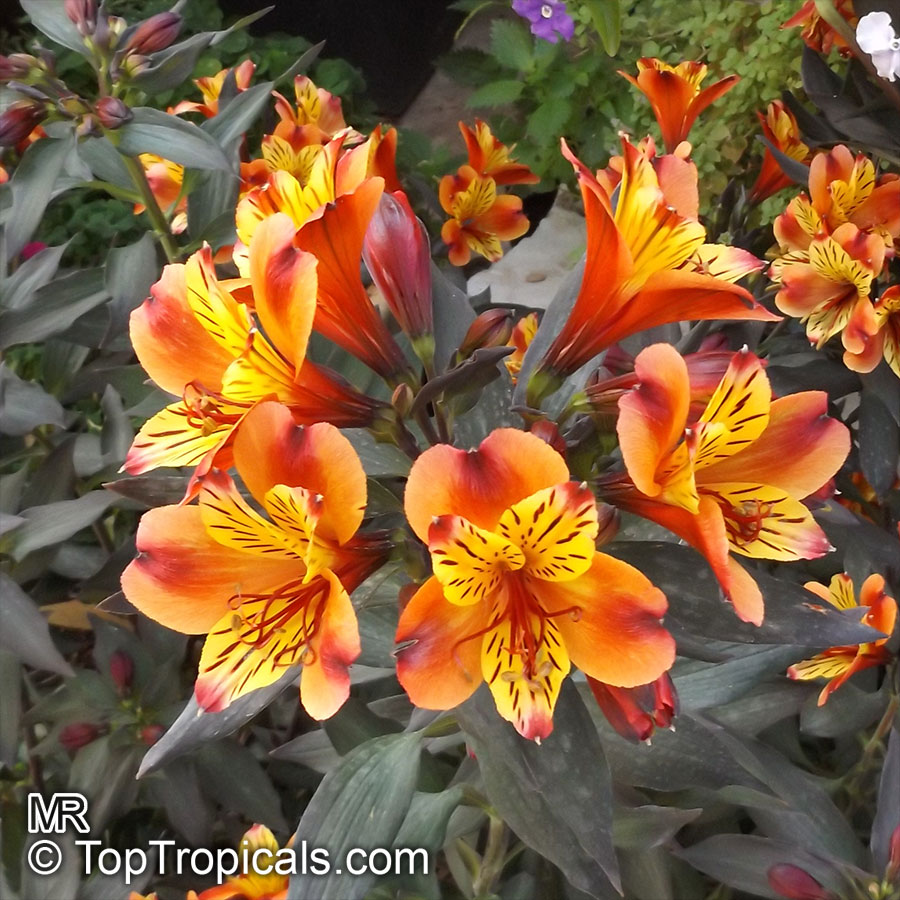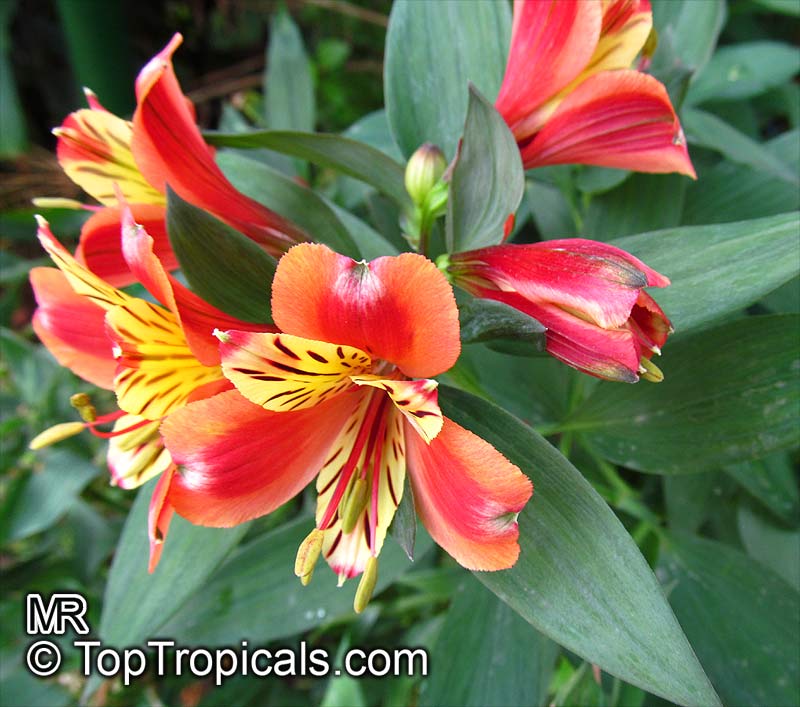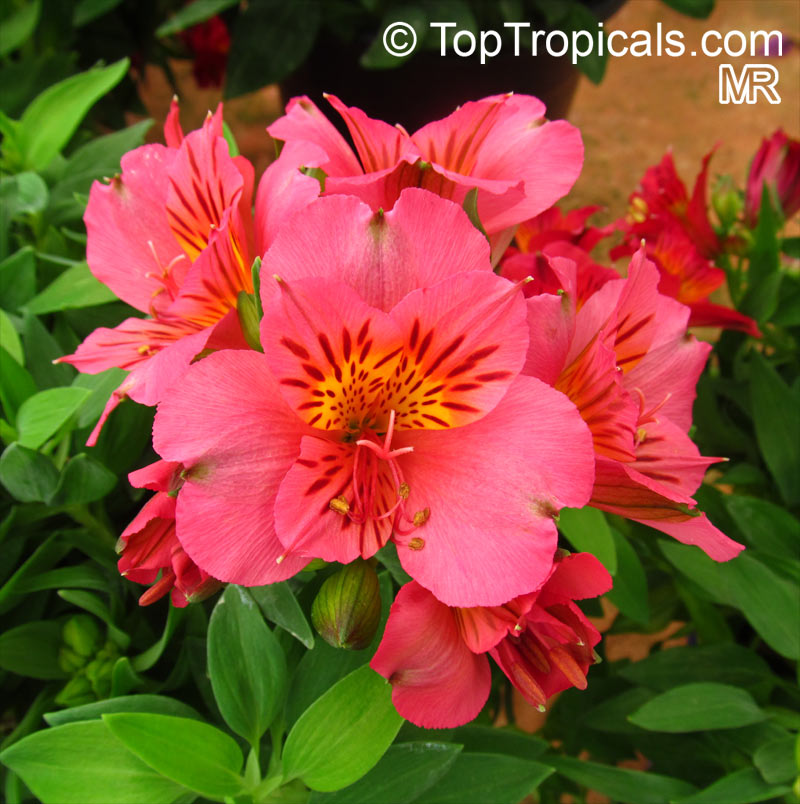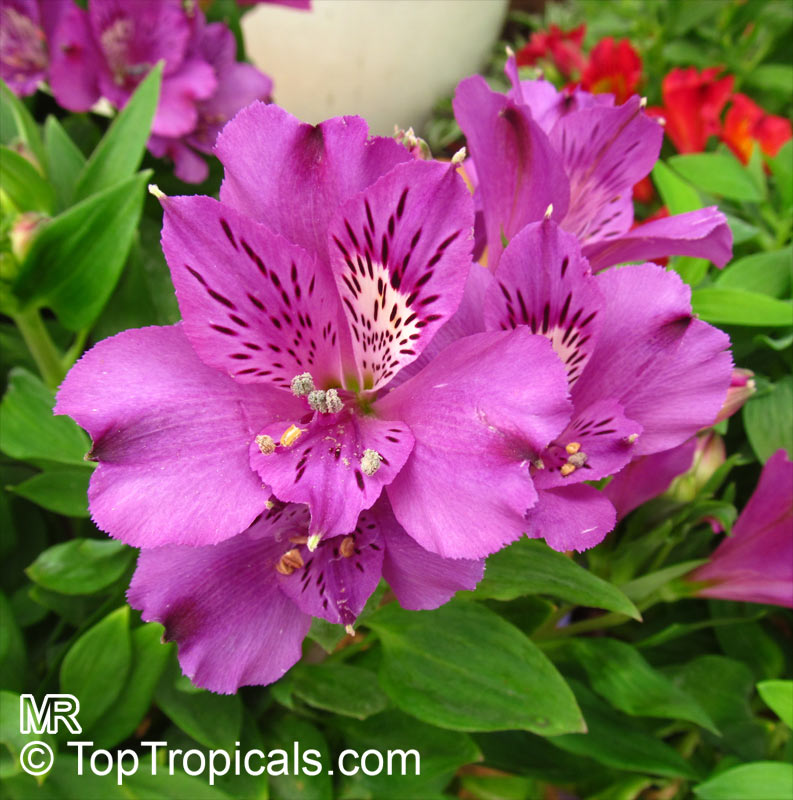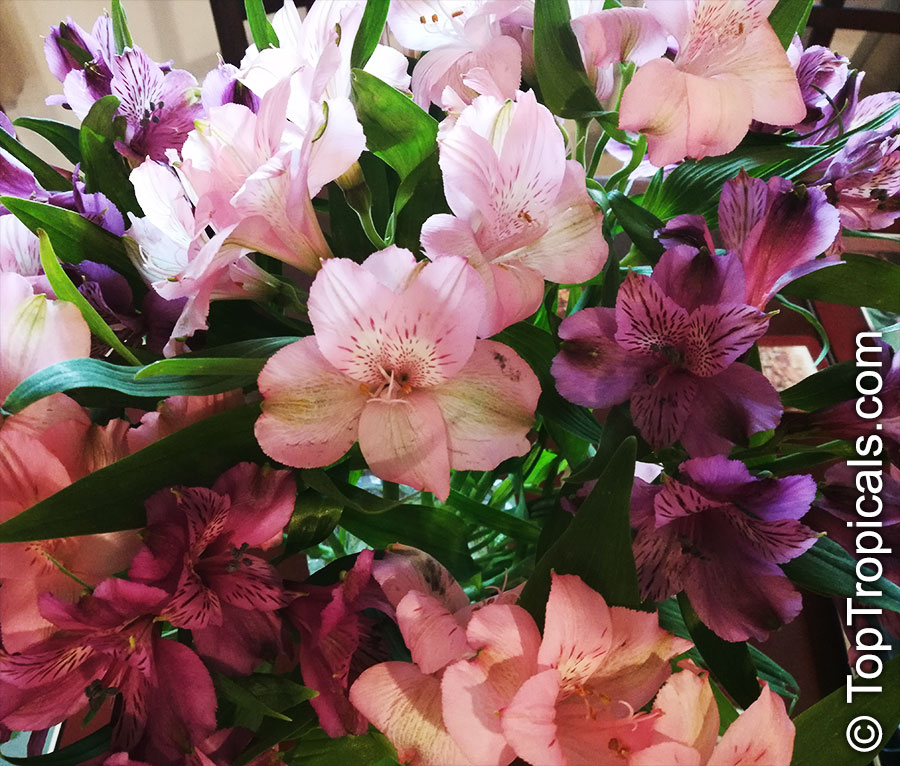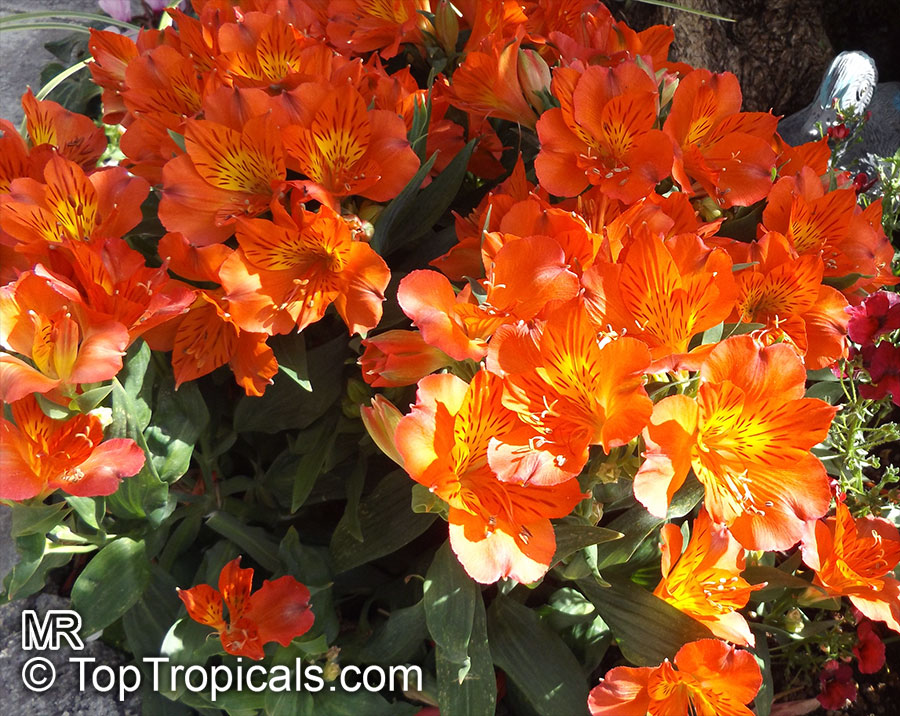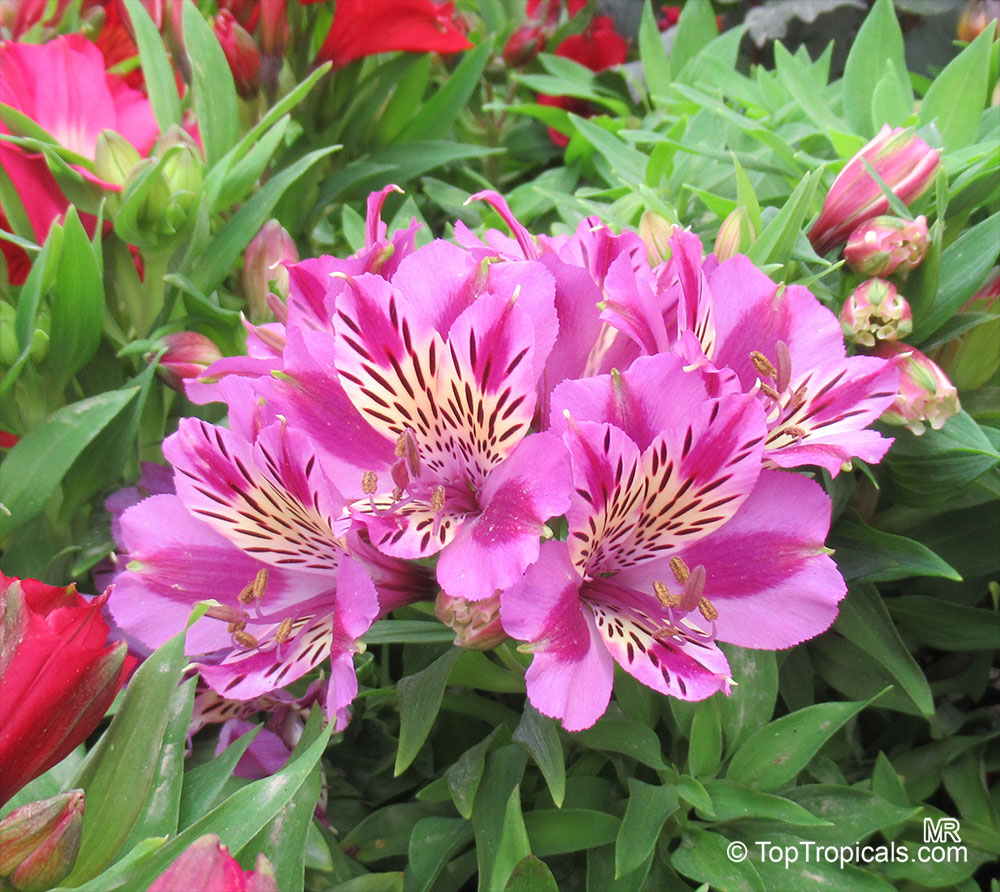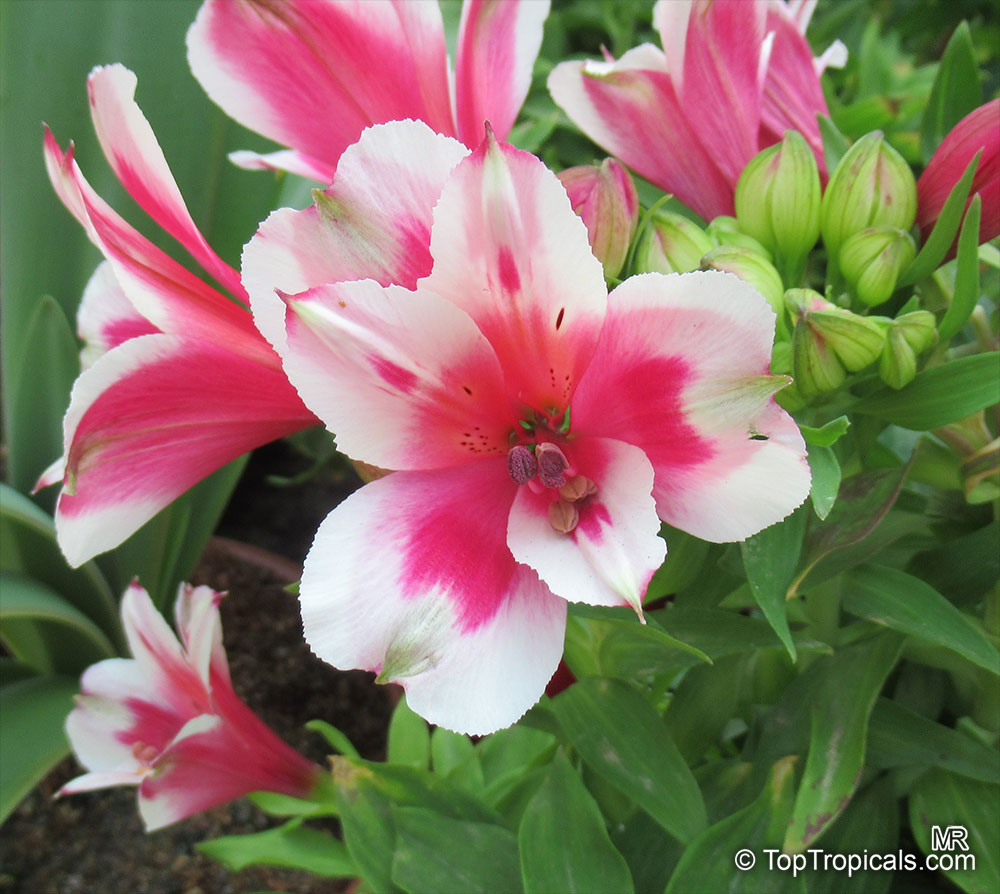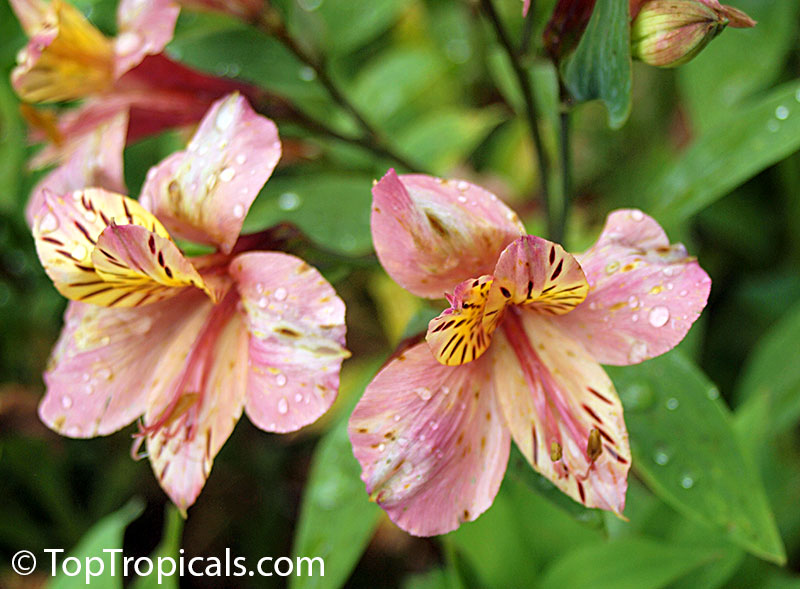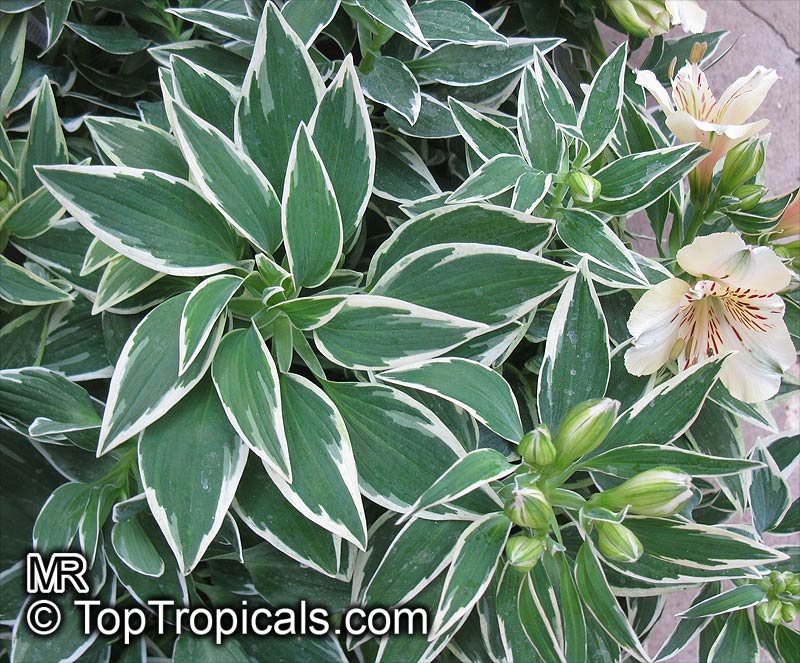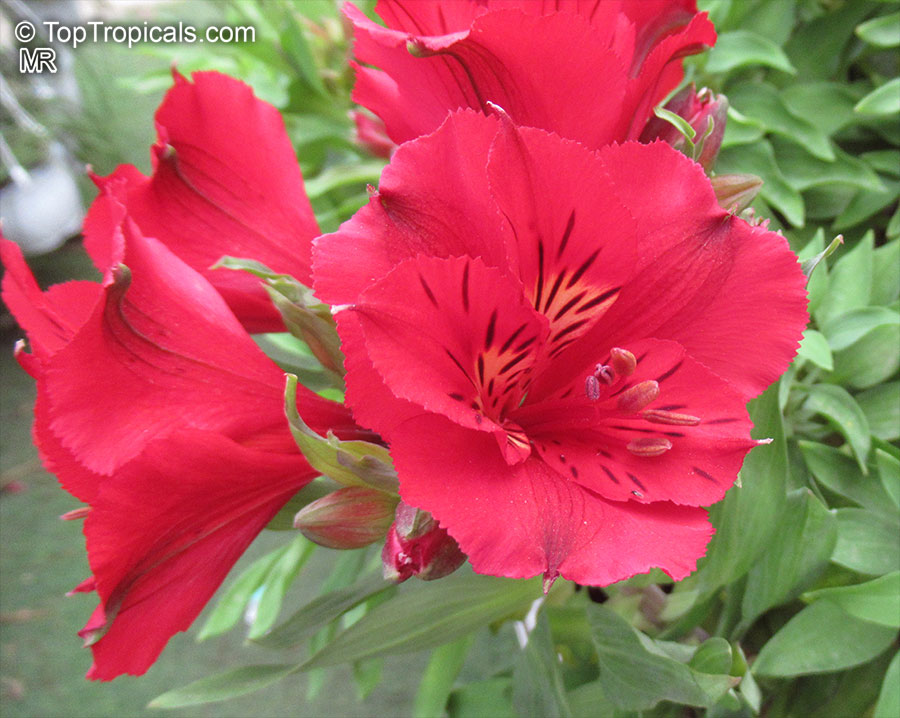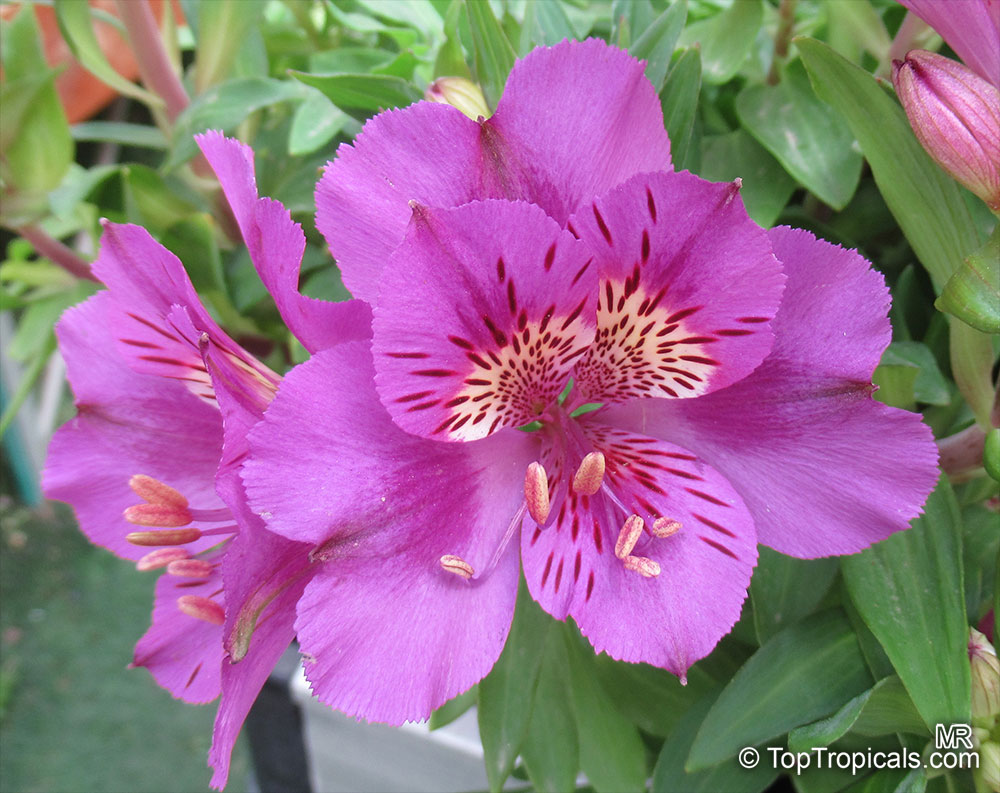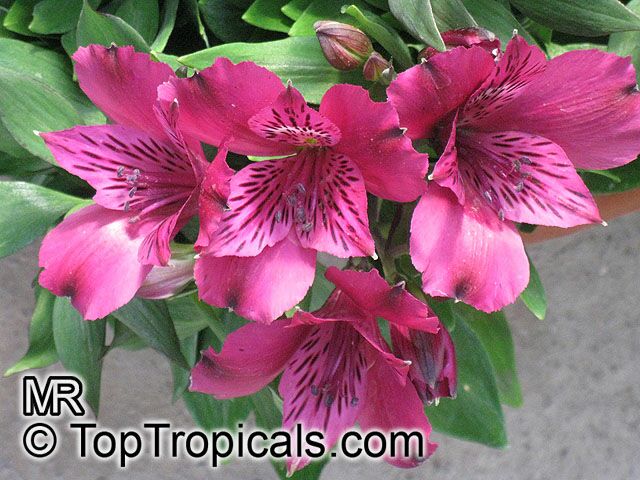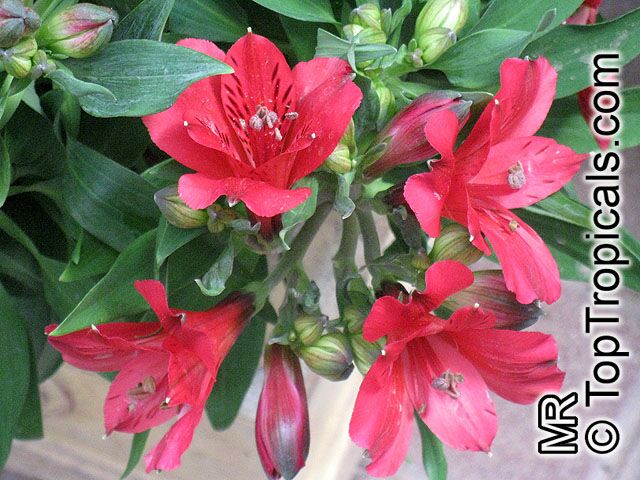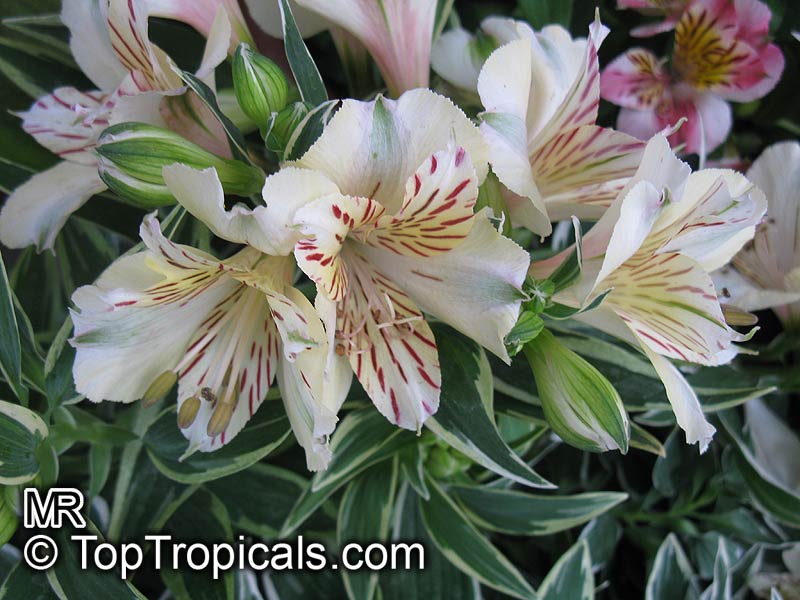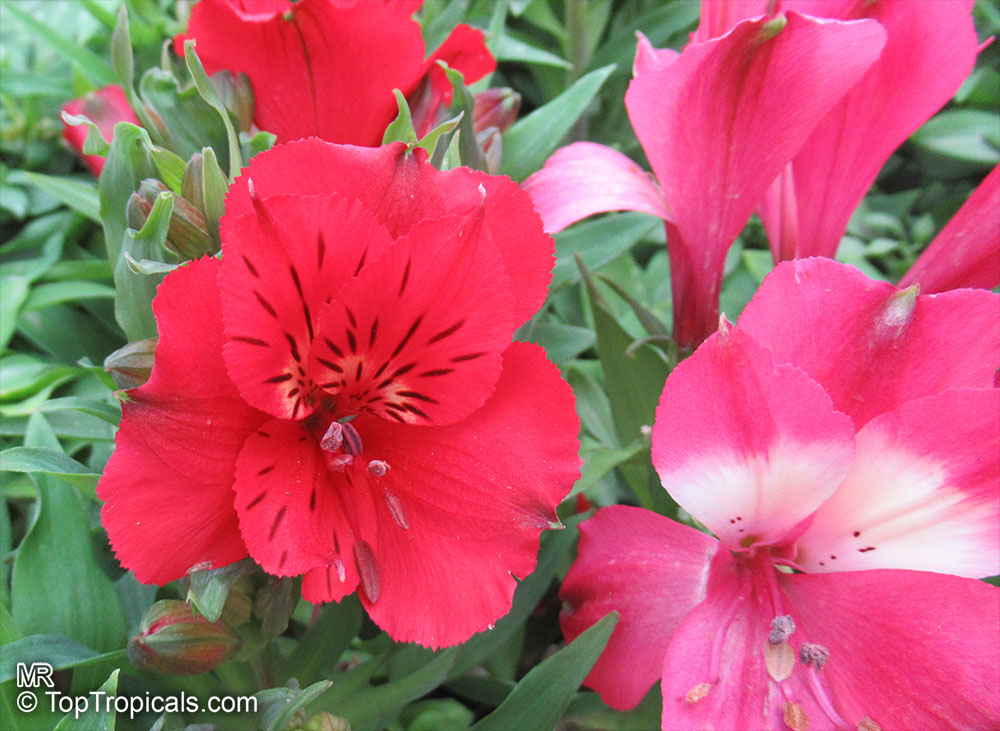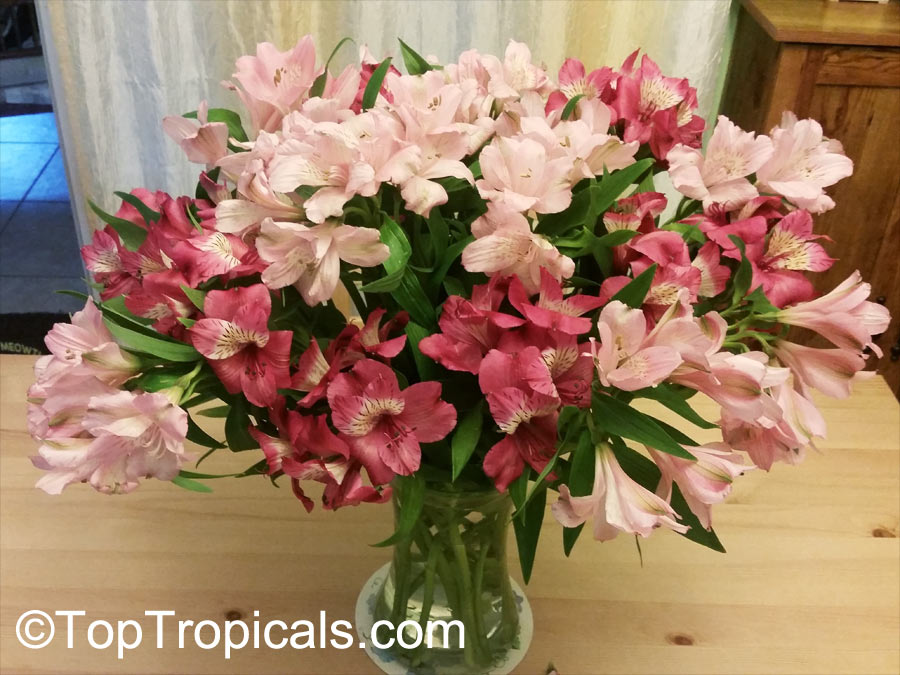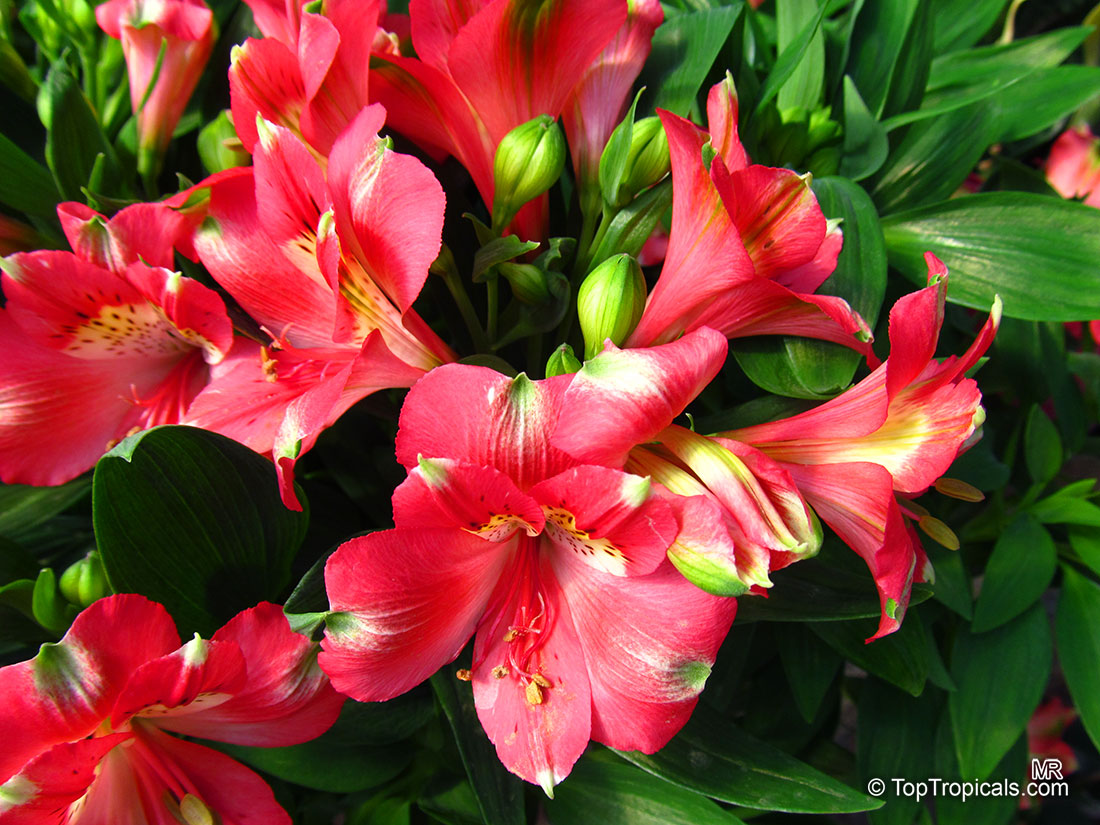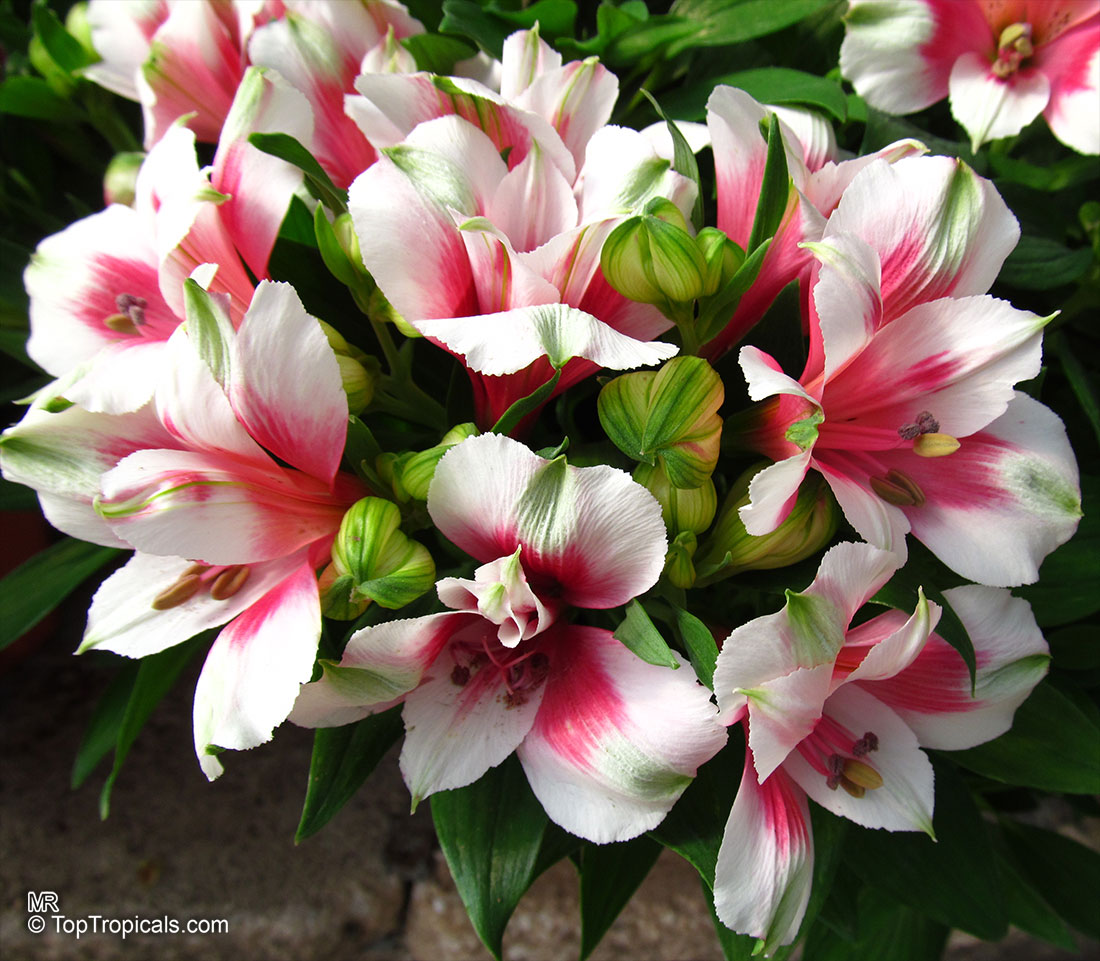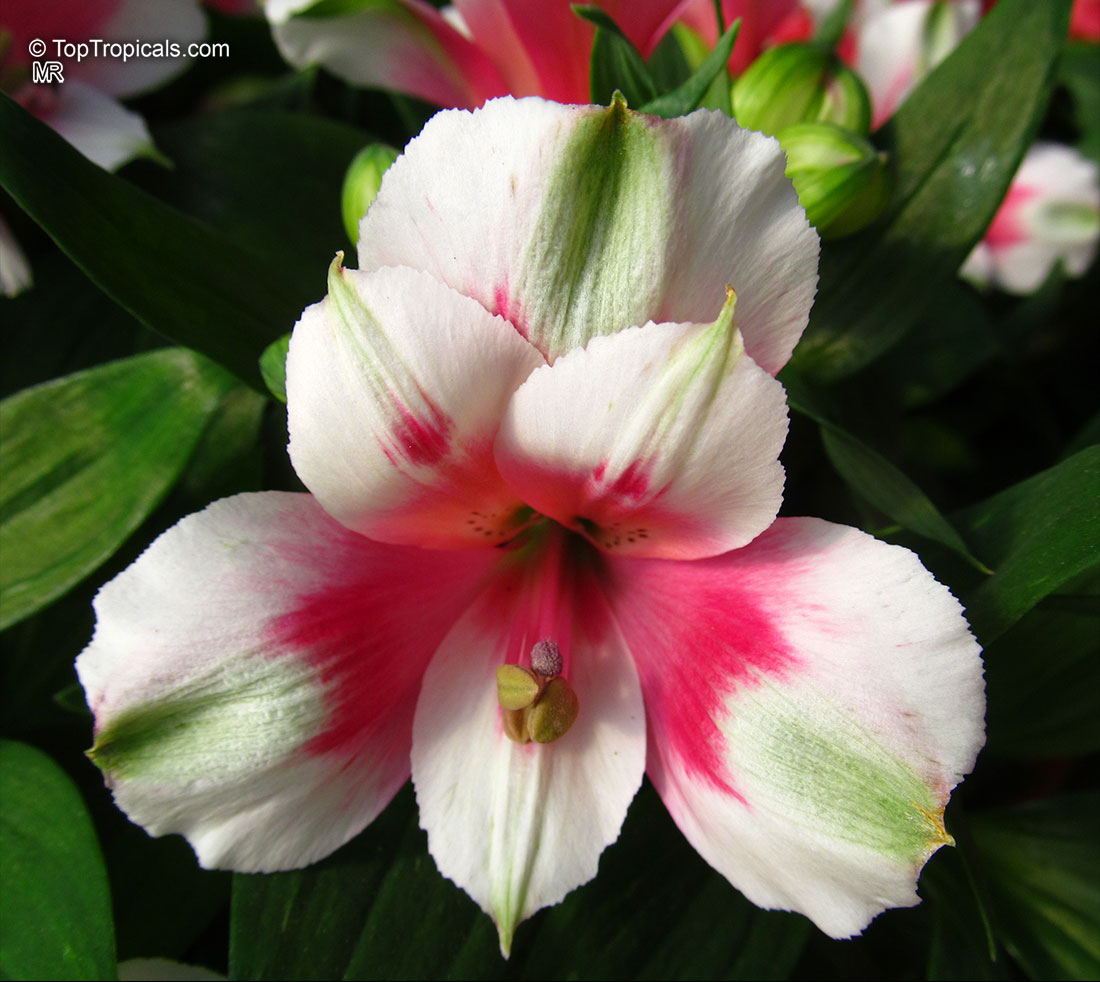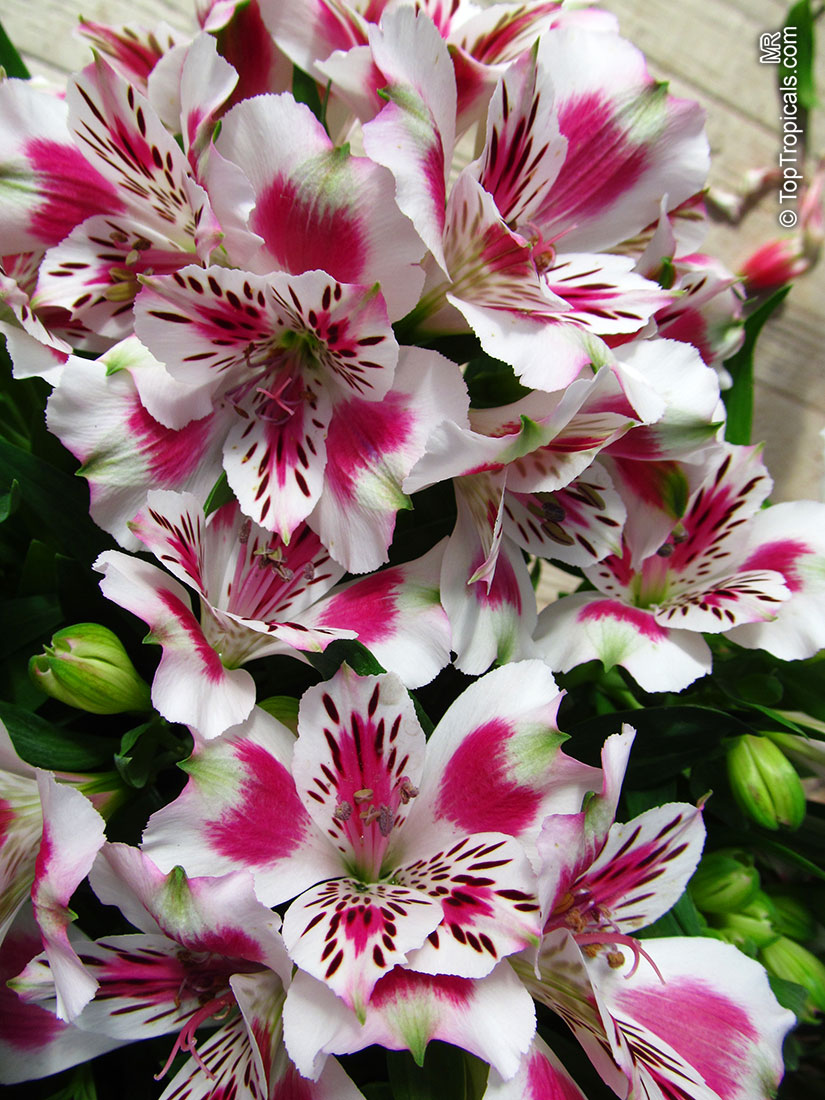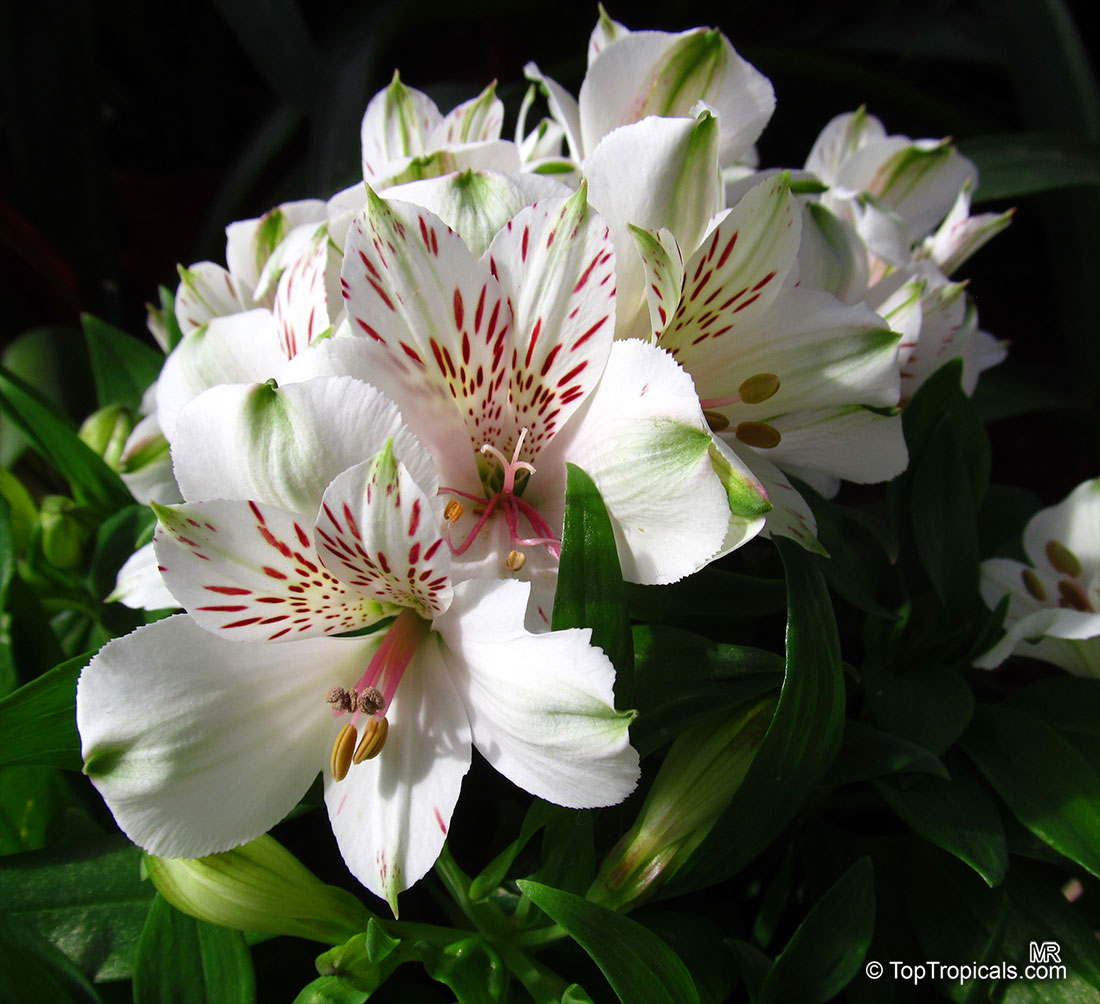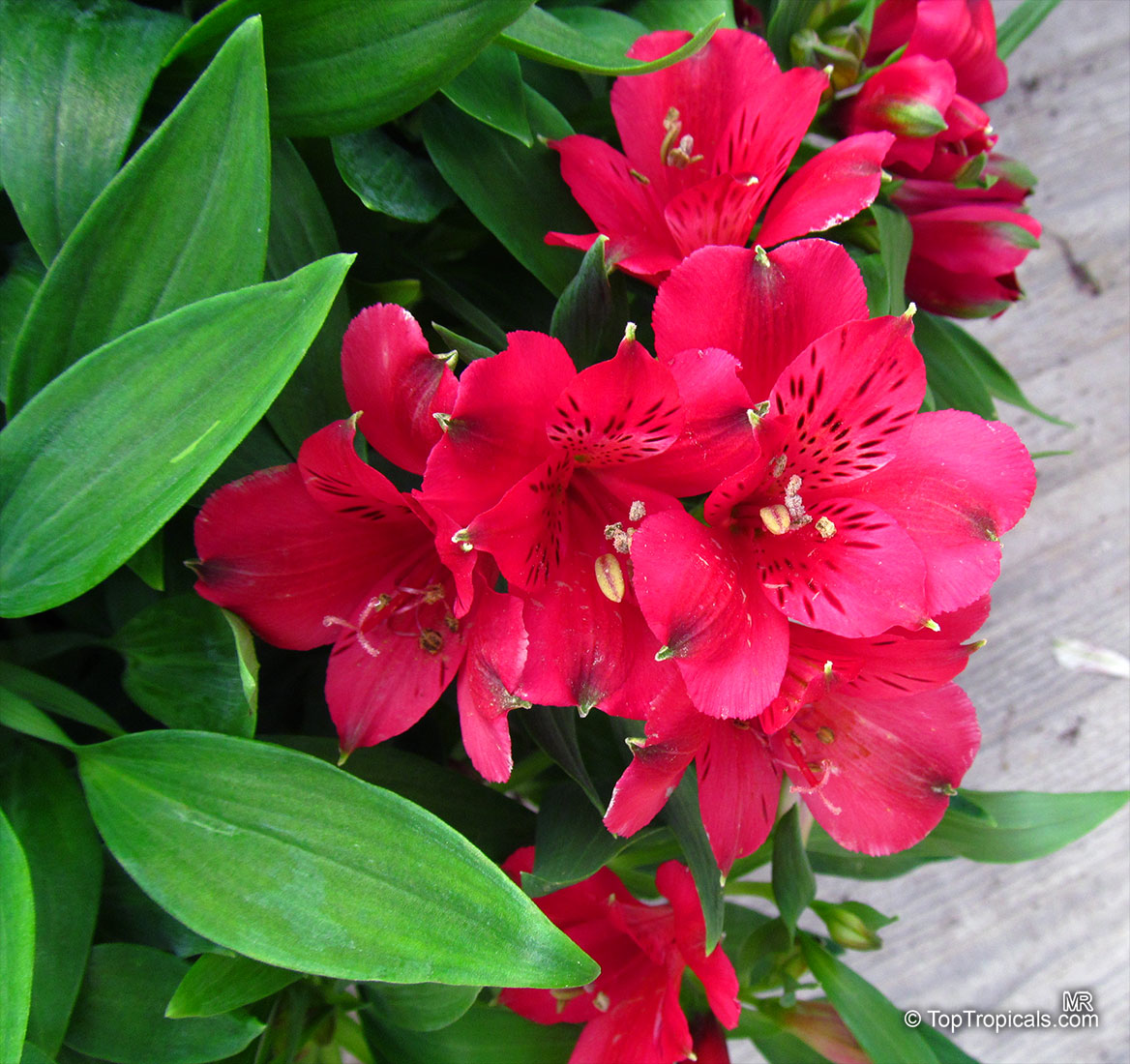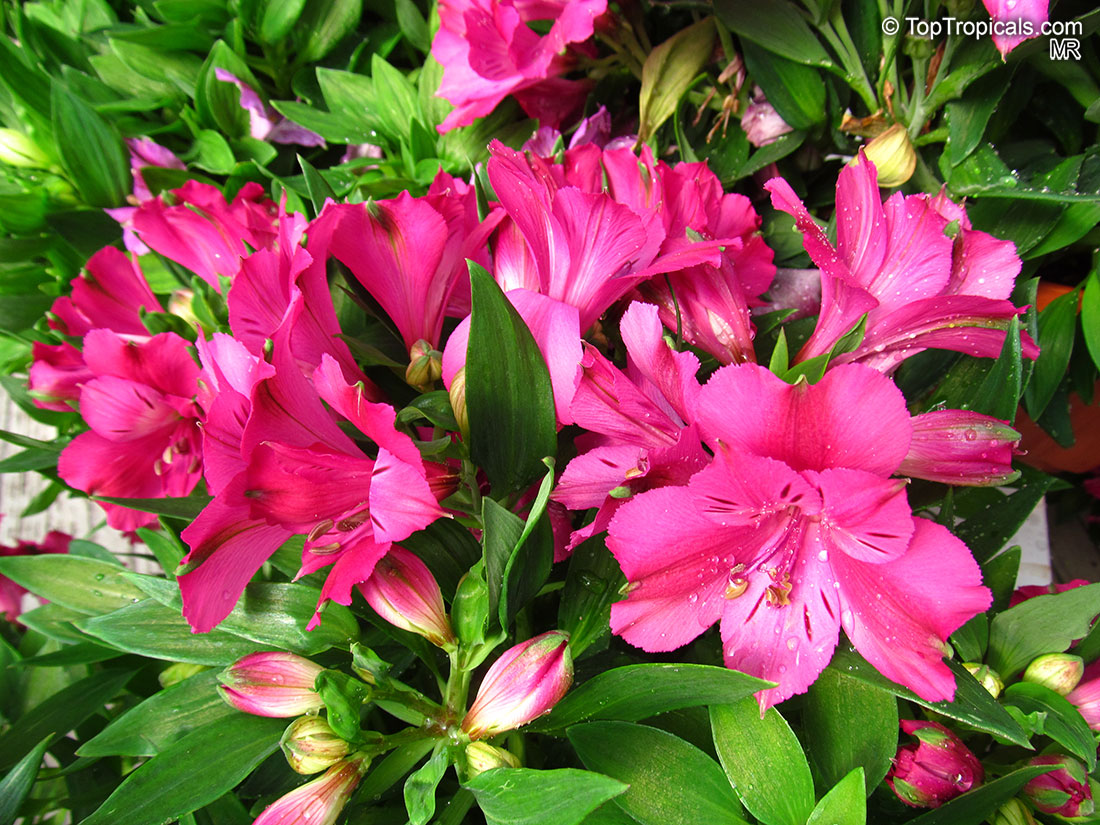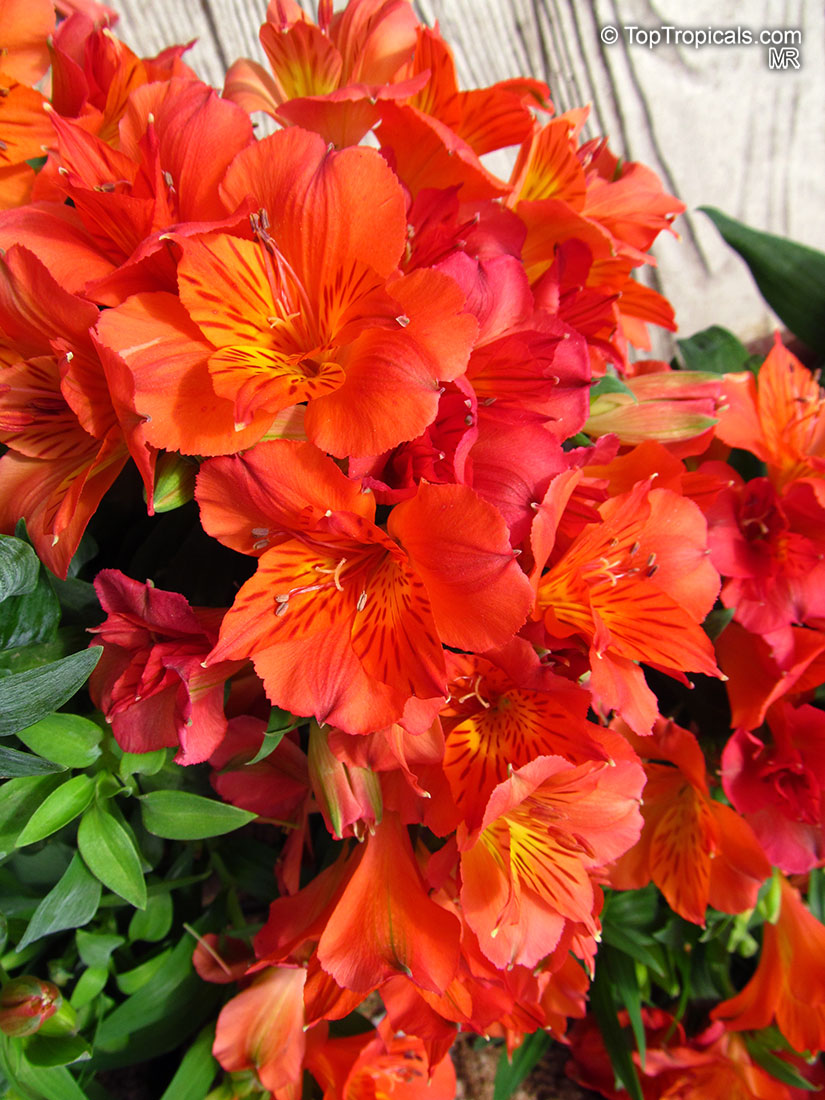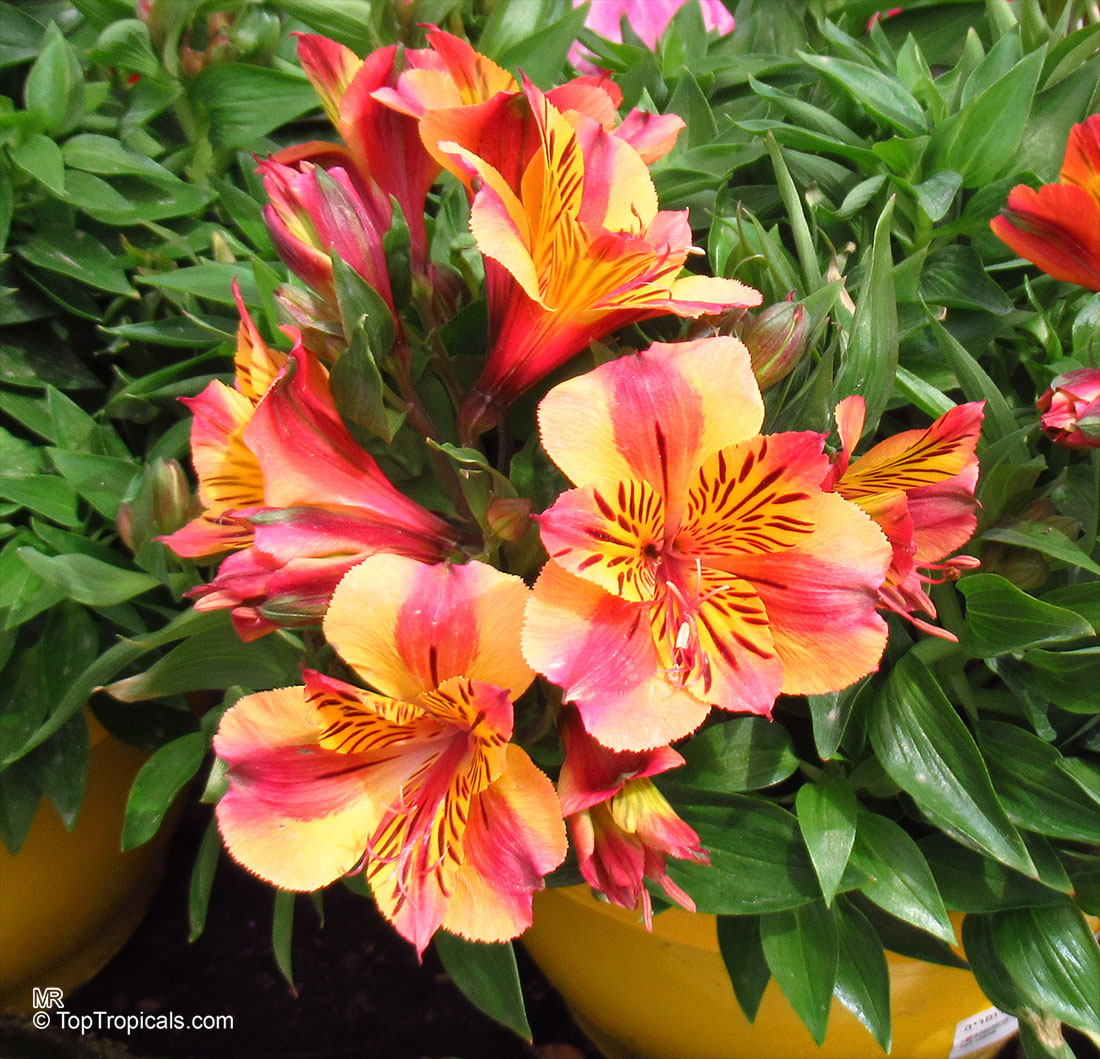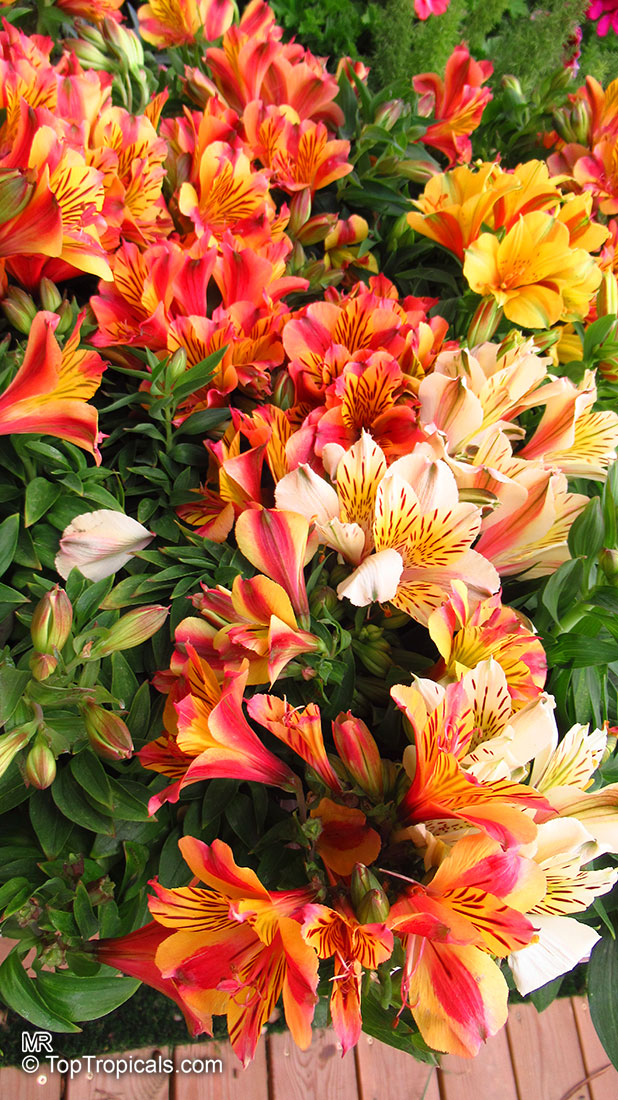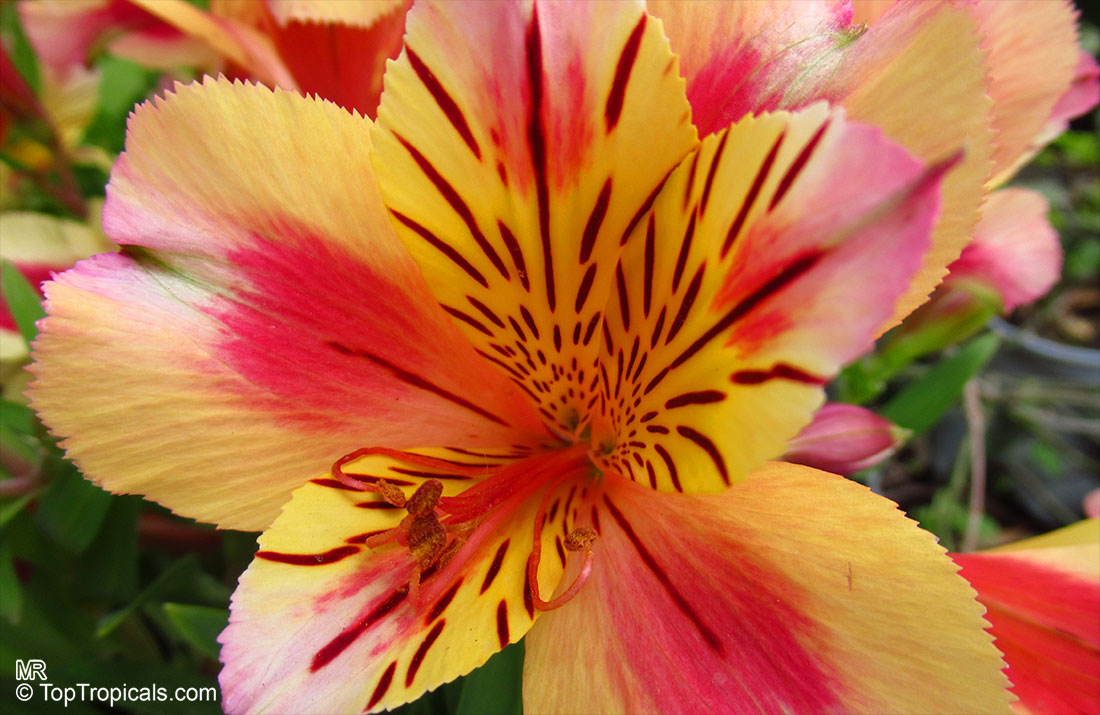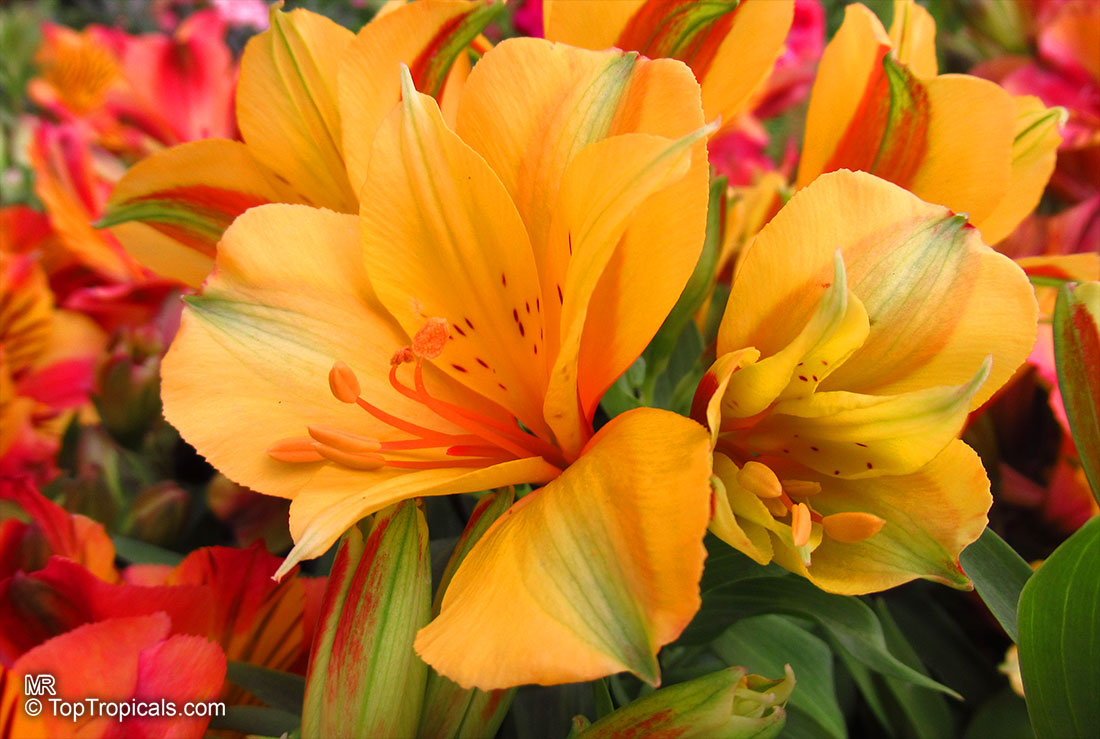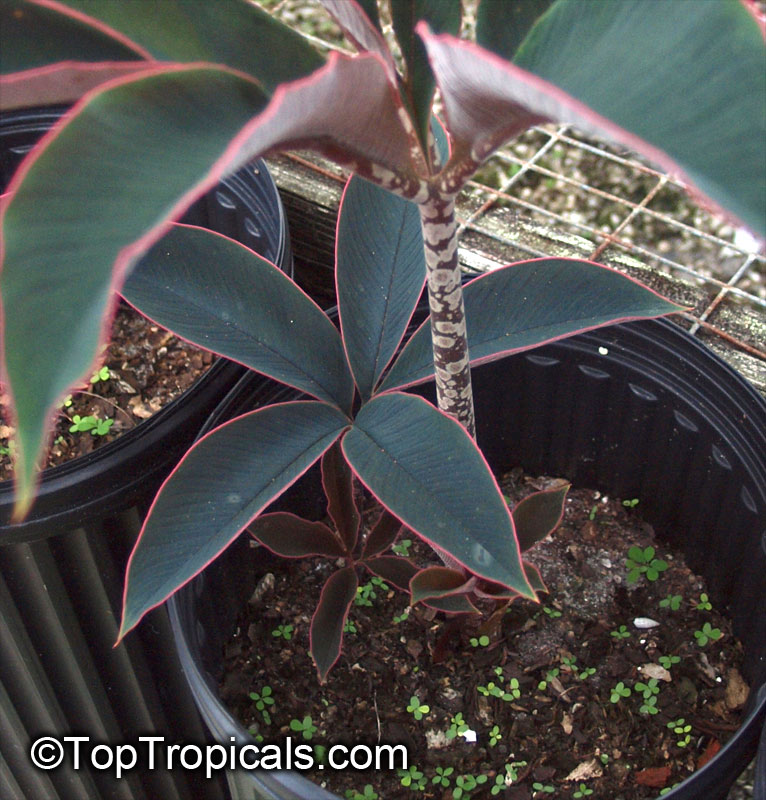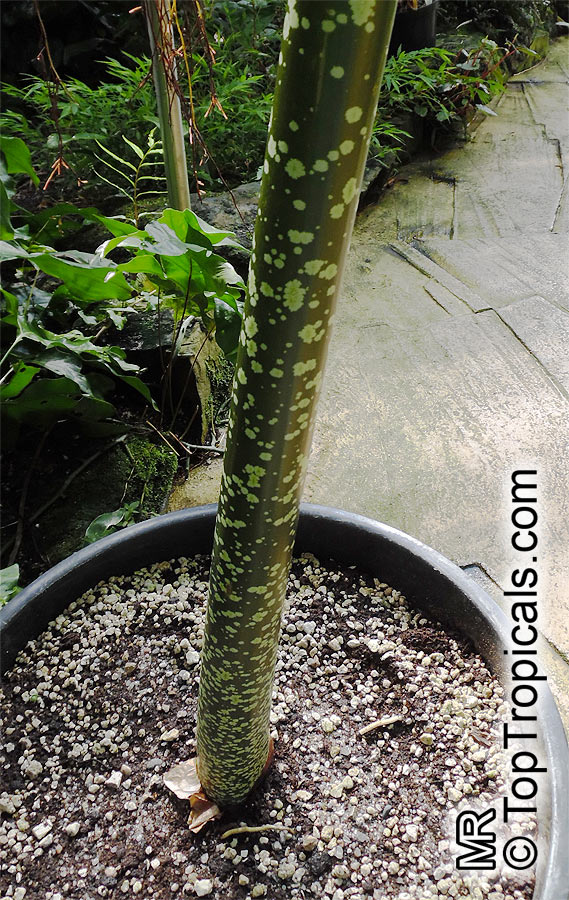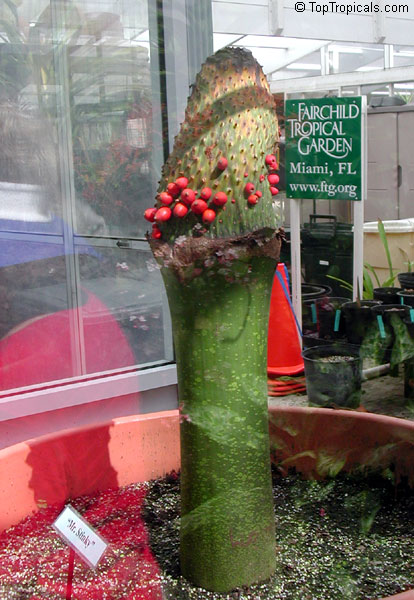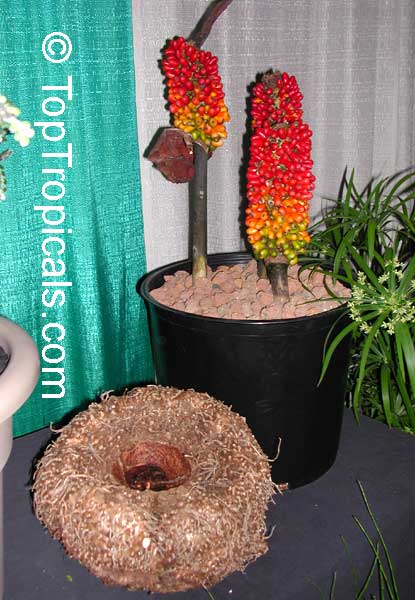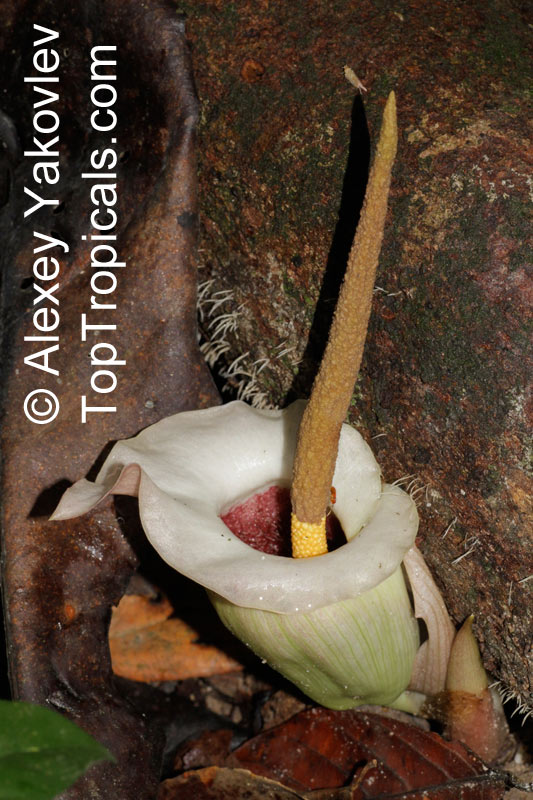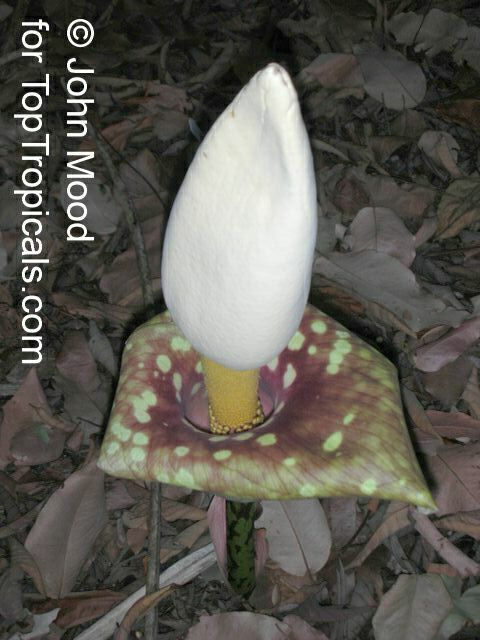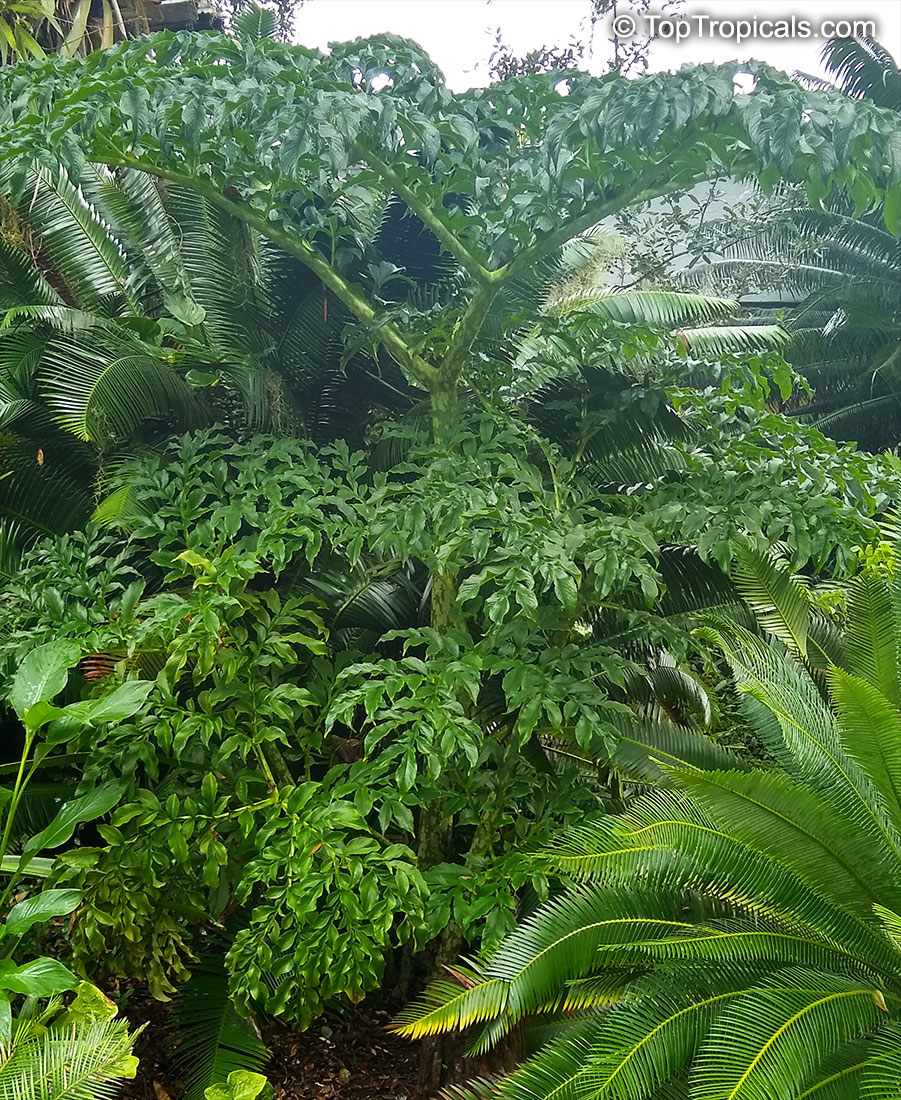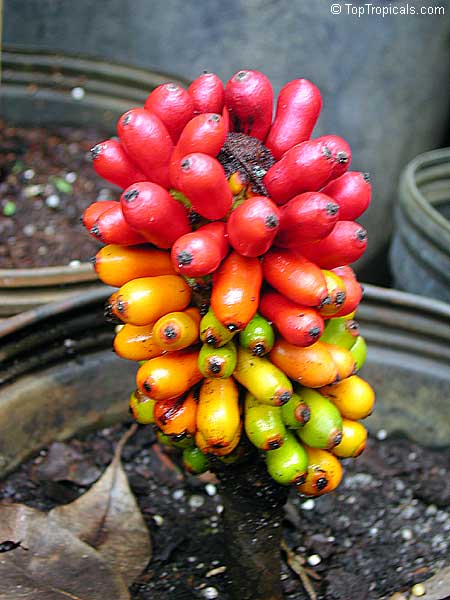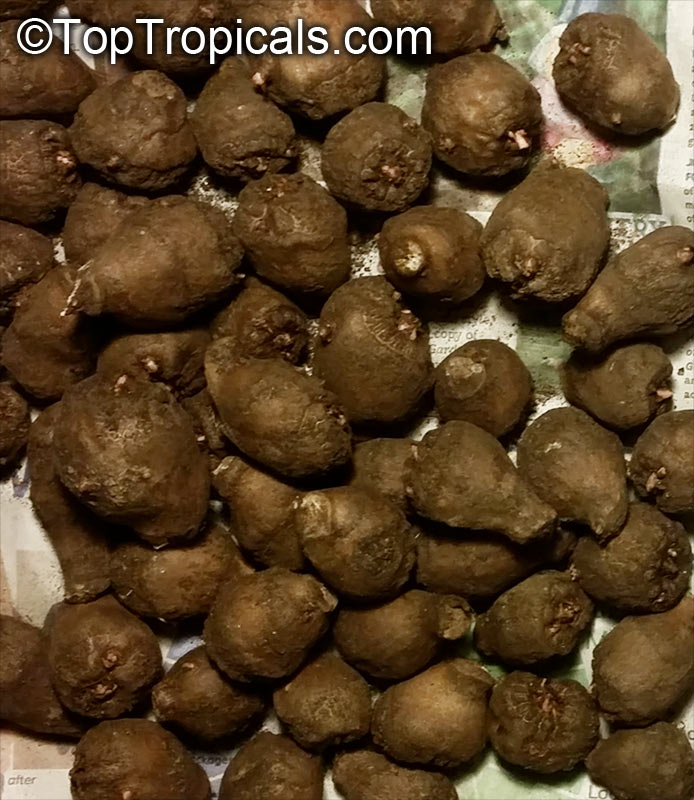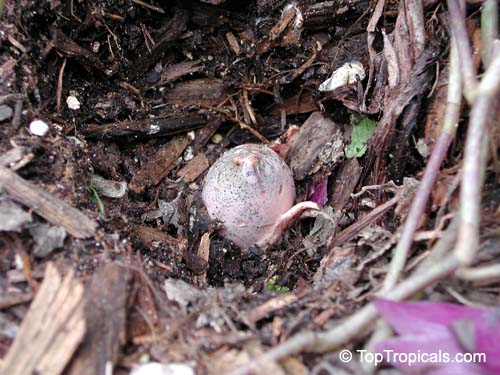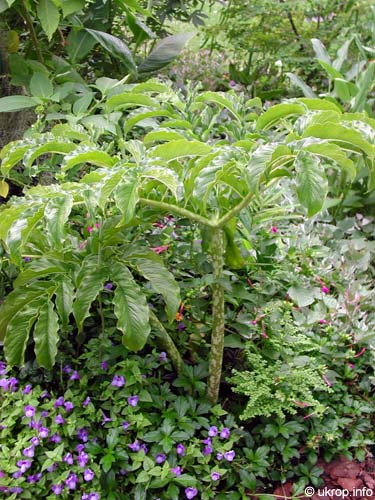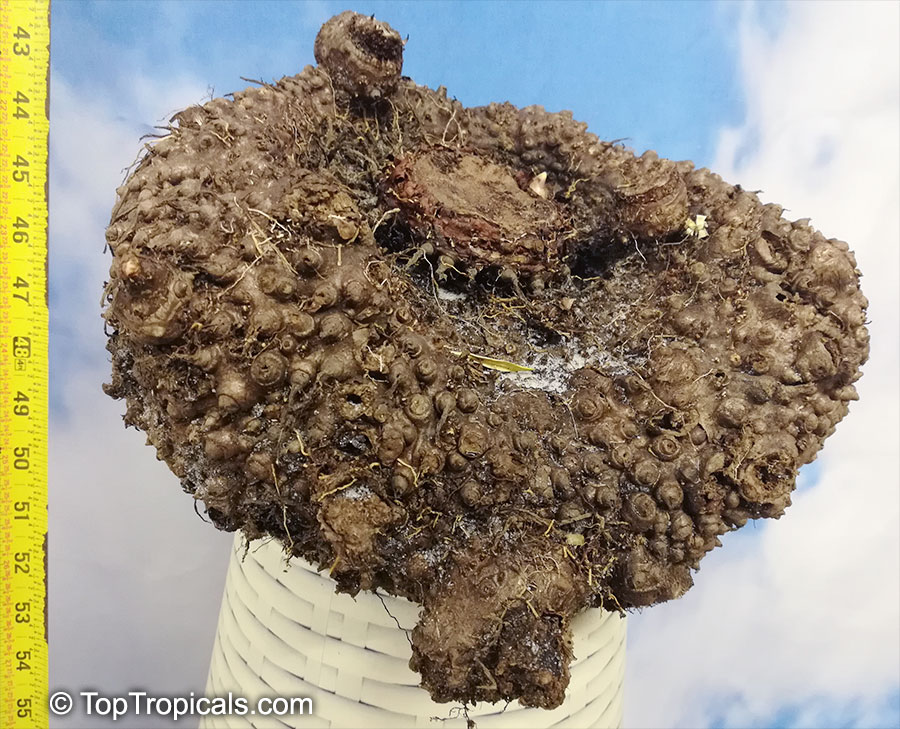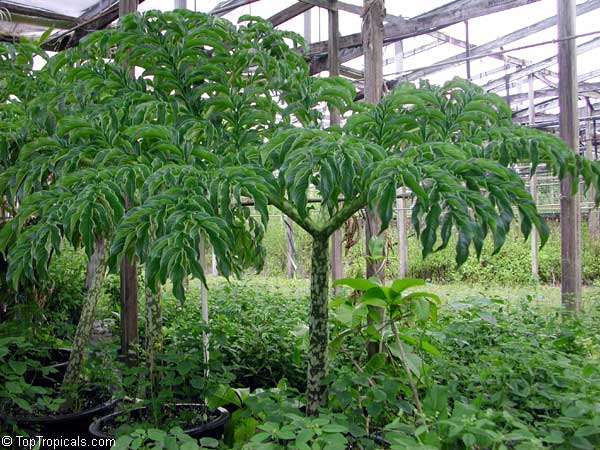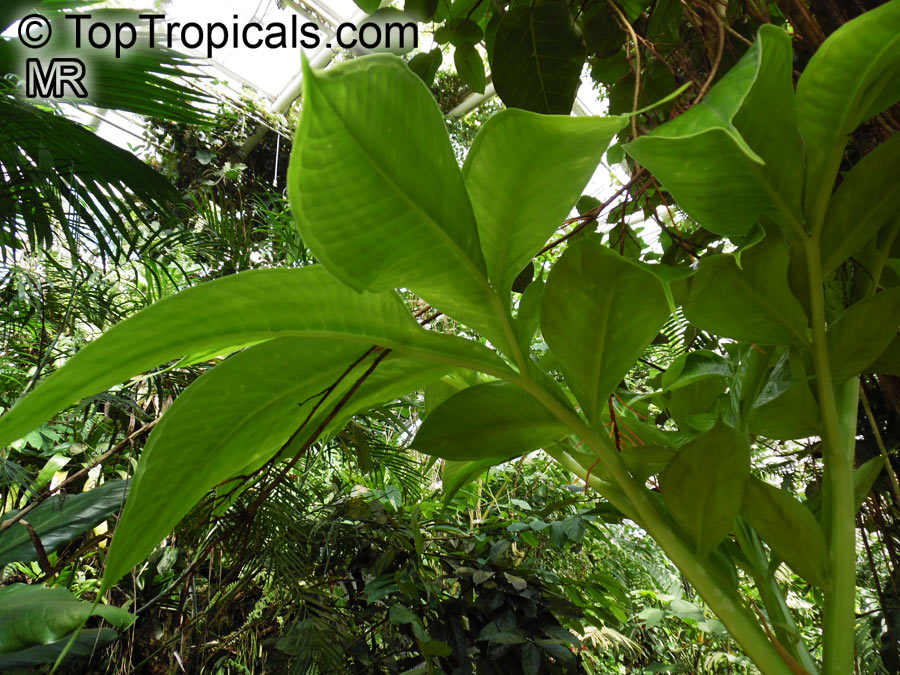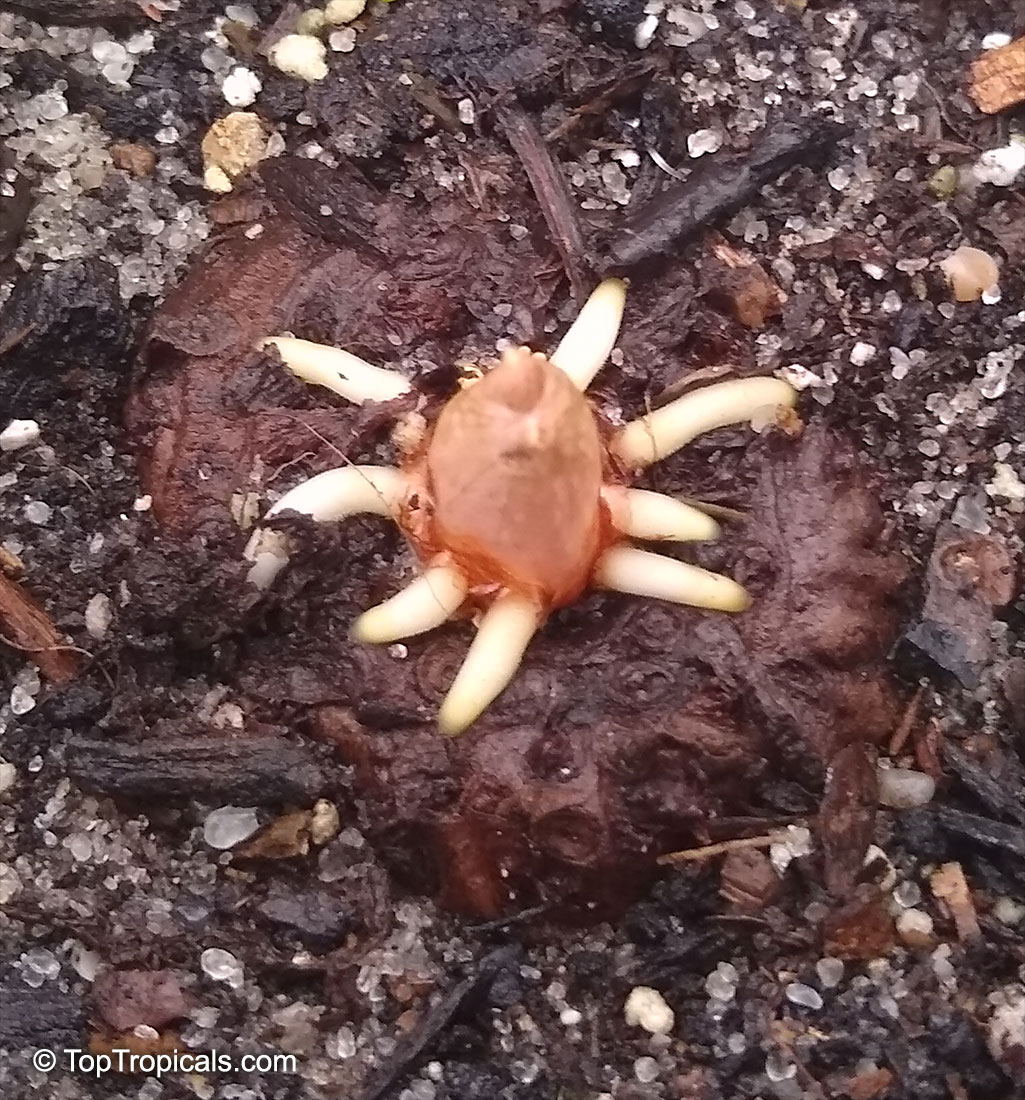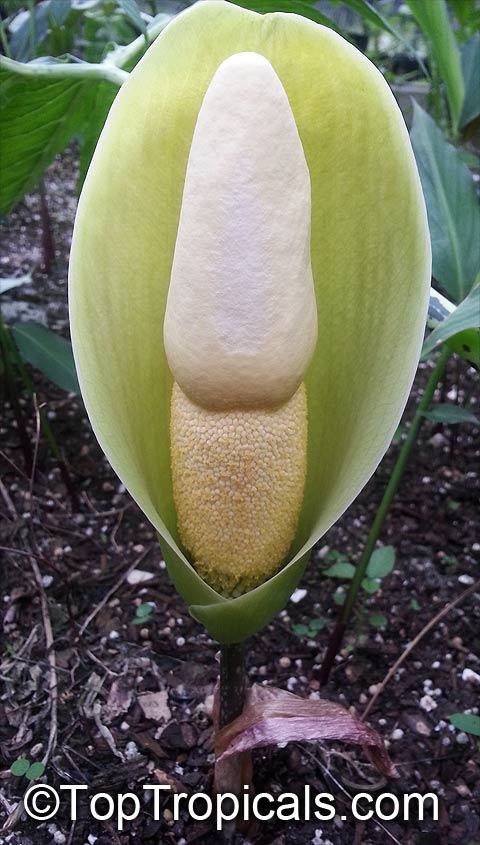Water, lily - Plant Encyclopedia Results
Top Tropicals Plant Encyclopedia
| Number of plants found: 57 | Next | 
|
Go to page: | 1 | 2 | 3 | 4 | 5 | Last |
Botanical name: Nymphaea sp.
Common name: Water Lily
Family: Nymphaeaceae










Water lilies make an excellent addition to the water garden or a pond. Nymphaea sp. (Water Lily) is a stunning and versatile plant that can create a beautiful addition to any garden. It has large, rounded leaves and gorgeous flower borne on long petioles, which often reach to the surface of the water. There are many hybrid varieties, ranging in color from pink, white, off-white, blue, lavender, purple, red, crimson, vinous, and yellow to orange.
The Water Lily is an ethnomedical plant that is easy to grow and maintain. It prefers full sun and bog or aquatic conditions. Generally, Water Lilies do best when planted in USDA Hardiness Zone 4-10. For colder climates, they can be grown in a pot in a heated environment, such as a greenhouse or conservatory.
Water Lilies will thrive when planted in nutrient-rich soil. It is important to ensure that the container is both small and shallow, as the plant will quickly outgrow the pot. The soil should be kept moist but not wet, and fertilized with a specific aquatic fertilizer once per month. As with any plant, make sure to prune regularly and trim off dead leaves and stems, which will help keep the plant healthy.
Nymphaea sp. (Water Lilies) are an attractive and practical addition to any garden, making them a great choice for any landscape. With beautiful and vibrant colors and an ability to tolerate flooding, these plants are both beautiful and hardy. With the right care, they will produce beautiful blooms that will last for many years.
Botanical name: Victoria cruziana
Common name: Santa Cruz Water Lily
Family: Nymphaeaceae
Origin: South America






Victoria cruziana can be grown in cooler waters than its sister within the genus, the more familiar giant waterlily Victoria amazonica.
Botanical name: Adenium sp.
Common names: Desert Rose, Impala Lily, Adenium hybrids
Cultivar: Single Flower
Family: Apocynaceae
Origin: Arabia and East Africa












Exotic species of Adenium: Adenium swazicum, Adenium somalense, Adenium arabicum, Adenium boehmianum, Adenium multiflorum, Adenium crispum, Adenium obesum. Adeniums have many spectacular hybrids. The basic culture is very similar to orchids. A small pot with excellent drainage is a must. Adeniums do not like both over-watering or drying-out. There is a little secret of how to create a weird shape of the base: lift the plant a bit every time you re-pot the plant, so that the upper part of roots will be a little exposed. The plant will form more roots that will go down. To make your plant develop a large swollen base/trunk, you'll need a good quality fertilizer. Fetilizer requirement for swelling up trunks is also used to increase flowering. It shouldnt be too hight in nitrogen, the middle number should be the highest. Never apply fertilizer directly on roots and do not liquid feed when a plant is thirsty: always water first slightly to avoid root burn and leaf drop. Do not wet leaves. Adeniums need lots of light for heavy flowering. Most hybrids and species start blooming in the spring when the conditions are warm and days get longer, and continue blooming through the fall and winter in warmer climates. Adeniums like a neutral to hard water. Acidic water tends to sour the soil too fast and may cause root rot. Water plants preferably in the early morning, and allow them to drink up throughout the day. Watering can be done daily to every few days. Never allow your plants to sit in a saucer of water, but don't let them to dry out too often - this causes adeniums to go into early dormancy.
See photo gallery of exotic varieties and Thai Adeniums - milti-colored, multi-grafted.
See article about Adenium.
Botanical name: Alpinia henryi
Common name: Pink porcelain lily
Cultivar: Pink Perfection
Family: Zingiberaceae
Origin: Subtropical Asia







Among the best-known members of this genus is Alpinia henryi 'Pink Perfection', a large shrub or small tree reaching 5-10ft in height and 2-5ft in width. Its native habitat is Subtropical Asia, but it can be successfully grown as an ornamental in USDA zones 9-11. It's a hardy and attractive plant, with deep green, glossy foliage and an abundance of pink flowers throughout the year. In the right conditions, it can be a real show-stopper, its flowers being especially fragrant.
Caring for Alpinia henryi 'Pink Perfection' is not particularly difficult. It prefers a spot in full sun or semi-shade, in well-drained soil, and regular watering. Some mulching during the summer can help protect the roots from the heat. It can suffer from frost damage, so if you're growing it in a pot in a cold region, you should move it indoors during the winter months. Also, the plant may suffer from mealybugs, so if you notice their presence it's best to take appropriate action as soon as possible.
In general, Alpinia henryi 'Pink Perfection' is an easy-to-care-for plant that can make a wonderful addition to any garden or conservatory. With its lush foliage, abundant flowers, and heavenly fragrance, it can certainly bring a touch of the exotic and an undeniable beauty to your outdoor spaces.
Botanical names: Alpinia nutans, Alpinia speciosa
Common names: Shell ginger, Pink porcelain lily, Narrow-Leaf Cinnamon Ginger, Shellflower, Dwarf cardamom, False cardamom
Family: Zingiberaceae
Origin: China and Japan
Hardiness: 20°F











The plant is quite versatile and makes for an excellent garden plant in USDA growing zones 7-9. It can either be grown as a large shrub of 5-10 feet in height or as a small shrub of 2-5 feet. Alpinia nutans requires full sun or partial shade, but prefers humid conditions and regular watering. Its stunning hot pink flowers, borne atop long flowering stems, bloom beginning in June and continue until the Fall.
It is a fairly salt tolerant plant, making it suitable for seaside areas. In cold climates, the mature plant is hardy at least to the low 30s Fahrenheit for a short time, although for best results it should be grown in a pot and stored in an area that does not freeze in the winter, such as a greenhouse or garage. Watering should be reduced in cold conditions and kept to a minimum until warm weather resumes. During the spring, the rhizome should be restrained or it will overthrow its container. Plants should be repotted in the spring if they outgrow their original container. Fertilize annually with compost or an appropriate plant food to encourage growth, and do regular pest and disease checks.
Alpinia nutans is similar to Alpinia malaccensis and Alpinia zerumbet. Alpinia nutans var. longiramosa is a synonym of Alpinia zerumbet.
Botanical name: Alpinia purpurata
Common names: Red Ginger Lily, Ostrich Plume, Red Cone Ginger
Family: Zingiberaceae
Origin: Malay Peninsula








Extremely tropical looking, one of the most desirable symbols of Tropics, Alpinia purpurata, red ginger, also called ostrich plume and pink cone ginger, are native Malaysian plants with showy flowers on long brightly colored red bracts. They look like the bloom, but the true flower is the small white flower on top. Red Ginger grows in Hawaii, and many Central American nations, including Belize. It is also found in Samoa, where it is the national flower, and is locally called "teuila." It prefers partial shade and moist humid conditions, although it can tolerate full sun in some climates. It tends to like to be well watered and not left to dry out. Ginger can also be grown as a houseplant and its cut flowers can be used in arrangements. Likes a slightly acid soil. Every other year trim to ground to prevent legginess. Blooms from spring to summer if there is enough humidity.
See Article about Alpinia.
Recommended Fertilizer: SUNSHINE Robusta - Rapid Growth Booster
Last one
Recommended Fertilizer: SUNSHINE Robusta - Rapid Growth Booster
Botanical name: Alstroemeria sp.
Common name: Peruvian Lily
Family: Alstroemeriaceae
Origin: South America












Once established, Peruvian Lilies require occasional water, and occasional fertilizing.
Grown in hardiness zones 7-11, Alstroemeria sp. (Peruvian Lily) is a small shrub, with a size ranging from 2 to 5 ft that is native to South America. It is an ideal plant for making a statement in your garden with its abundant profusion of colorful flowers. It has the potential to bring a mix of striking colors to your space with its range of pink, white and off-white, blue, lavender, purple and red to crimson and vinous, and yellow to orange flowers. It can also be used to attract butterflies and hummingbirds to your space.
When it comes to growing and caring for your Peruvian Lily, it prefers full sun in areas with cool summers, however in Florida and other hot summer regions, plant in semi-shade or full-shade to protect the plant from the scorching heat. As for water and fertilizing requirements, it is suitable for moderate water and occasional fertilizing once it is established.
If you're in a more temperate climate where it gets cold, and you want to take the plant indoors during Winter, potting it up is a great option. Just make sure to avoid over-watering, group plants together and use a light, well-draining mix for your pot. When caring for Peruvian Lily in the colder months, choose a spot that doesn't receive direct sun light, as this can cause them to become more susceptible to cold damage. For maximum cold protection, you should ensure that your pot is placed in a sheltered and frost-free location, with a temperature hardy enough to warrant a mature plant in the colder winter months.
Botanical name: Amorphophallus atroviridis
Common name: Voodoo Lily
Family: Araceae
Origin: Thailand








Native to Thailand, Amorphophallus atroviridis is a small plant that typically grows to a height of 2-5 ft and prefers partial shade to semi-shade conditions. This plant has an ornamental foliage and blooms annually, displaying lovely pink or white/ off-white flowers.
This plant prefers regular to moderate water during its growth season but should be kept slightly dry during the winter months in colder regions. When it comes to plant care, it is best to grow this plant in a pot of average quality potting soil and water regularly. If you plan on cultivating this exotic plant in a cold region, it is best to bring the pot indoors during the cold season and keep it in a cool and well-ventilated place.
Amorphophallus atroviridis can be grown in USDA zones 9-11, and can be propagated by division or seed. To propagate by seed, it's best to sow the seeds in humus rich or seed starting mix and keep in warm and moist conditions for best results.
Overall, Amorphophallus atroviridis is a beautiful and unique plant that can bring a unique charm to any garden, balcony, or even a home. With beautiful pink or white/ off-white flowers and ornamental foliage, this easy to care for plant is sure to make a statement.
Botanical name: Amorphophallus sp.
Common names: Voodoo lily, Devils tongue, Snake Palm, Corpse flower, Elephant Foot Yam
Family: Araceae
Origin: Himalaya, India, Burma










Amorphophallus species are herbs with an underground storage organ. This is usually a tuber. One single leaf emerges from the tuber, consisting of a vertical petiole (stalk) and a horizontal leaf-blade. The latter is dissected into few or numerous small leaflets. Once plants are mature an inflorescence may develop. The inflorescence may replace the leaf in one season, or develop alongside it. From winter dormant tubers emerge an umbrella like plant with beautiful speckled stems. Large flowers will emerge from mature plants in the spring. When the spathe opens the female flowers are receptive and must be pollinated that same day. The opening inflorescence emits an attractant scent. In Amorphophallus this scent has diversified considerably. In most species the scent is anything but pleasant, and reminds one of varieties of death, decay, sewage, gas and the like. A few species develop a scent that is actually pleasant to the human nose (e.g. carrot-like, anise, chocolate, fruity, lemon). After successful pollination most parts of the spathe wither and drop off, after which the individual female flowers develop into berries, containing the seeds. These berries are usually red or orange-red, but occasionally blue, white, or yellow-and- white. Amorphophallus thrives in a rich loamy soil in partial shade. Compost should consist of 2 parts loam to 1 part peat moss to 1 part sand. Keep the plant evenly moist all through the growing season. Keep dry during dormancy, keep moist during growing period. Fertilize monthly with a houseplant fertilizer. Water should be gradually withheld starting in October until the leaf withers. Store corms at a temperature above 50 degrees. They can be brought into active growth in late March. If the corms are strong enough, a blossom will soon be produced. The leaf follows soon afterwards. A. bulbifer definitely dislikes low humidity - the leaflets may partially desiccate; this seems to be more pronounced in low light. Also, in low light, the leafes become exceptionally dark green, with nicely contrasting pink margins. Such plants have to be moved to brighter light very gradually. In bright light, the leaves are bright green, with pinkish margins less pronounced. Other species: konjac, titanum, and much more...
Amorphophallus konjac is one of the largest flowers, a perennial exotic Asian plant. It grows a single, elongated center called a corm and a single large leaf that wraps around it. The corm is the part of the plant that is used, as well as its tuber, which is commonly called the konnyaku potato. Amorphophallus konjac acts as a diet aid that has many benefits. Its ability to swell when mixed with water allows it to fill the stomach. It also moves through the digestive system very slowly, making the appetite feel satisfied for a longer period of time. This characteristic of Amorphophallus konjac is beneficial in treating obesity. It is one of the most exotic, bizarre flowers. Can be easily grown in a pot as a house plant. The single leaf dormant in winter, then in spring the plant shoots out a remarkable flower.
Botanical name: Amorphophallus symonianus
Common name: Voodoo Lily
Family: Araceae
Origin: Thailand







Amorphophallus symonianus, also known as the Voodoo Lily, is a small shrub native to Thailand. Its petioles can reach a height of 2 to 5 feet, with an olive-green speckled color. On top of the petioles is a green leaf at the bottom and a white off-white perianth at the top. Although the color may appear to be plain, the way in which the flower is arranged makes it quite an unusual sight.
When it comes to growing and caring for a Voodoo Lily, it can be done relatively easily with the right conditions and maintenance. It should be grown in USDA Zones 9-11, in an area with partial shade or semi-shade, and away from direct sunlight. Regular watering is also needed, though not too often as to cause root rot. The soil should be kept moist with moderate water, so as to provide ideal growth conditions.
For those living in colder regions and wanting to potentially cultivate their own Voodoo Lily, you can do this with ease in a pot. As long as it is placed in a warm and moderately light environment, then the plant should develop and thrive. Be sure to avoid direct sunlight and keep the plant in some shade instead. Additionally, it is important to water the plant regularly and provide it with a well-draining soil and enough nutrients to keep it healthy.
Overall, the Amorphophallus symonianus makes an interesting addition to any garden or potted setting and brightens up any space with its unique arrangement and beautiful off-white flowers. Although it requires the right level of care and maintenance, the Voodoo Lily can add life to any environment, be it fully outdoor or an indoor potted plant.
| Next |  |
Use link to repeat this search:
https://toptropicals.com/cgi-bin/garden_catalog/cat.cgi?find=Water lily&search_op=and&keyword_op=and&language=e&number=10
&no_change_lang=1&user=tt&sale=1&first=0
